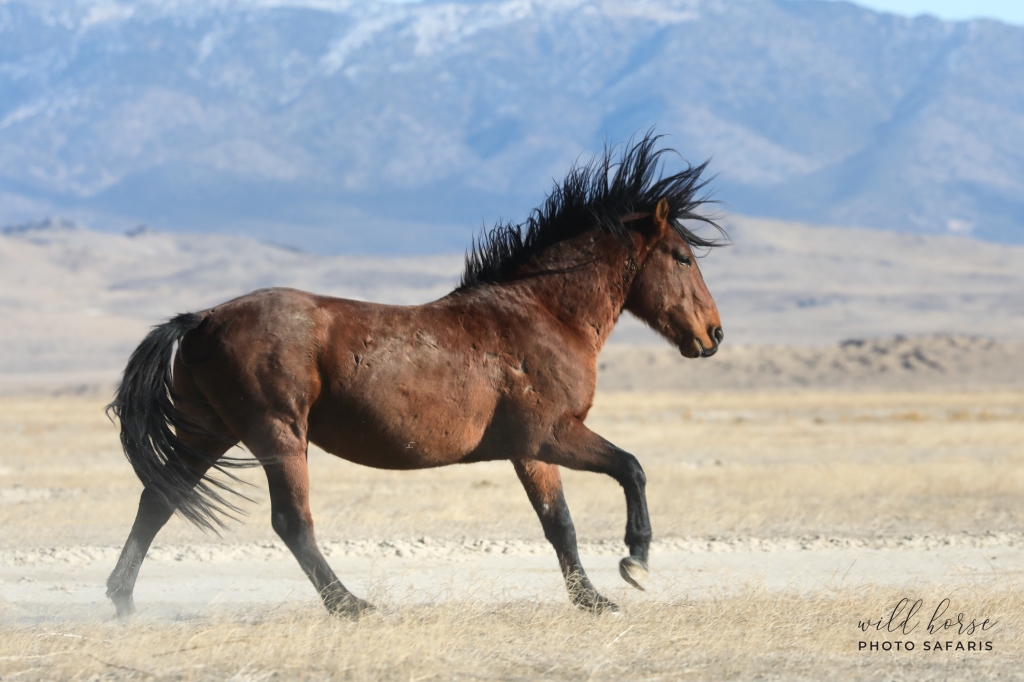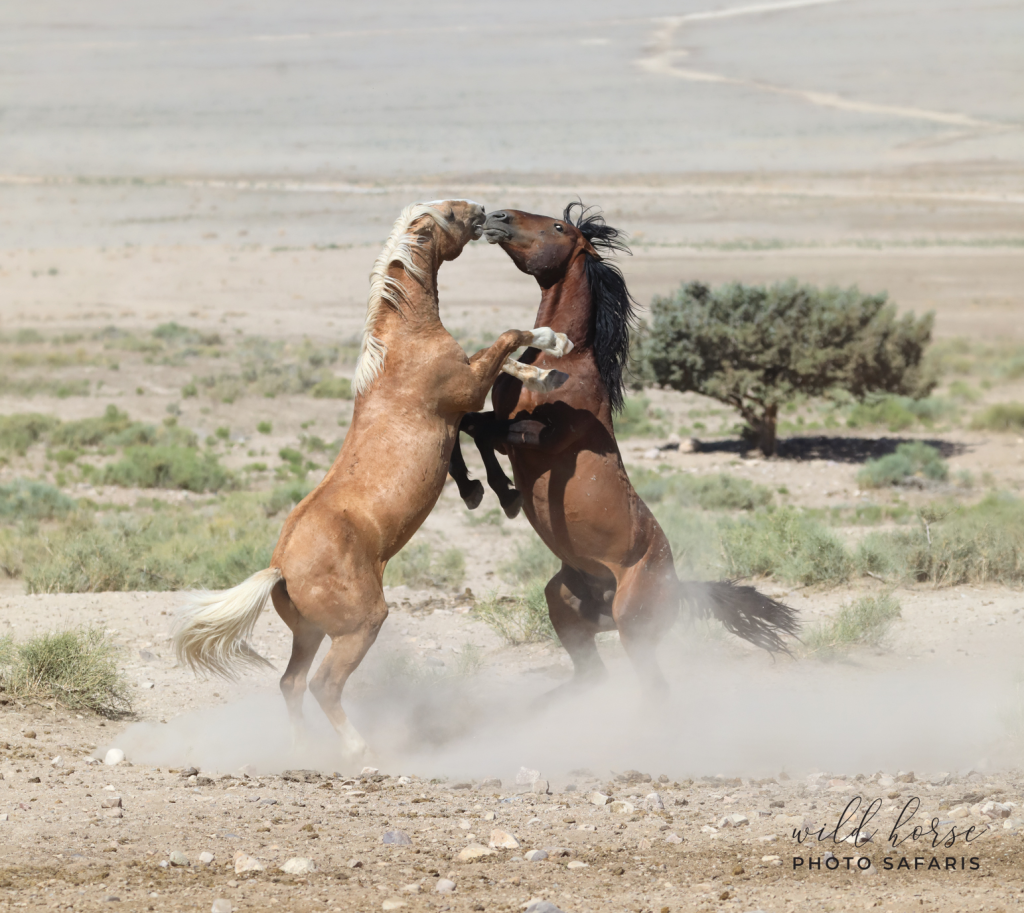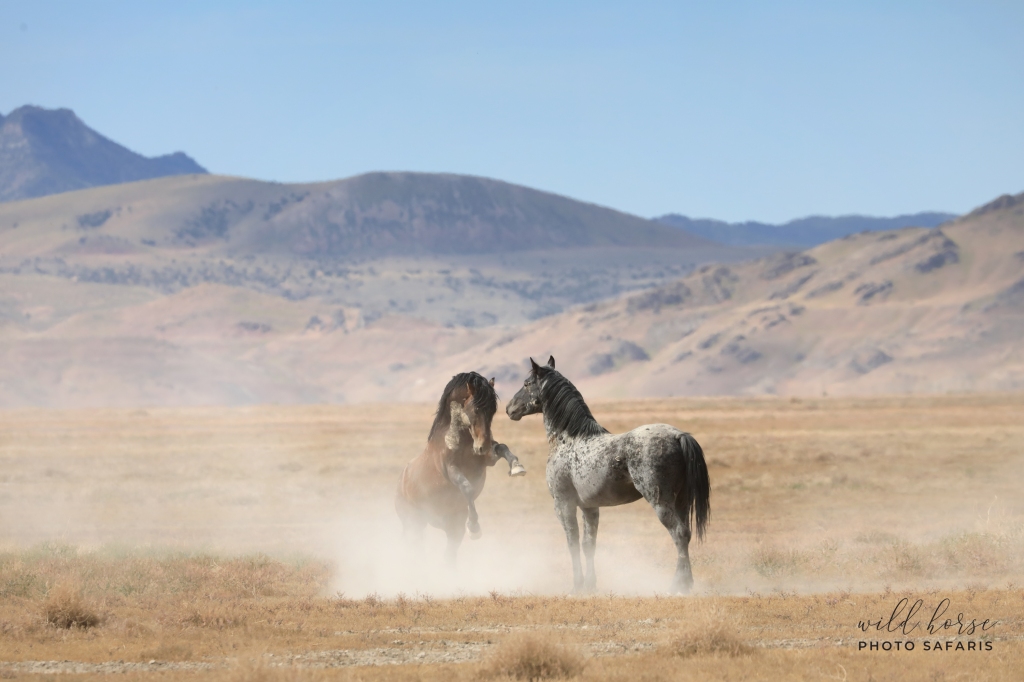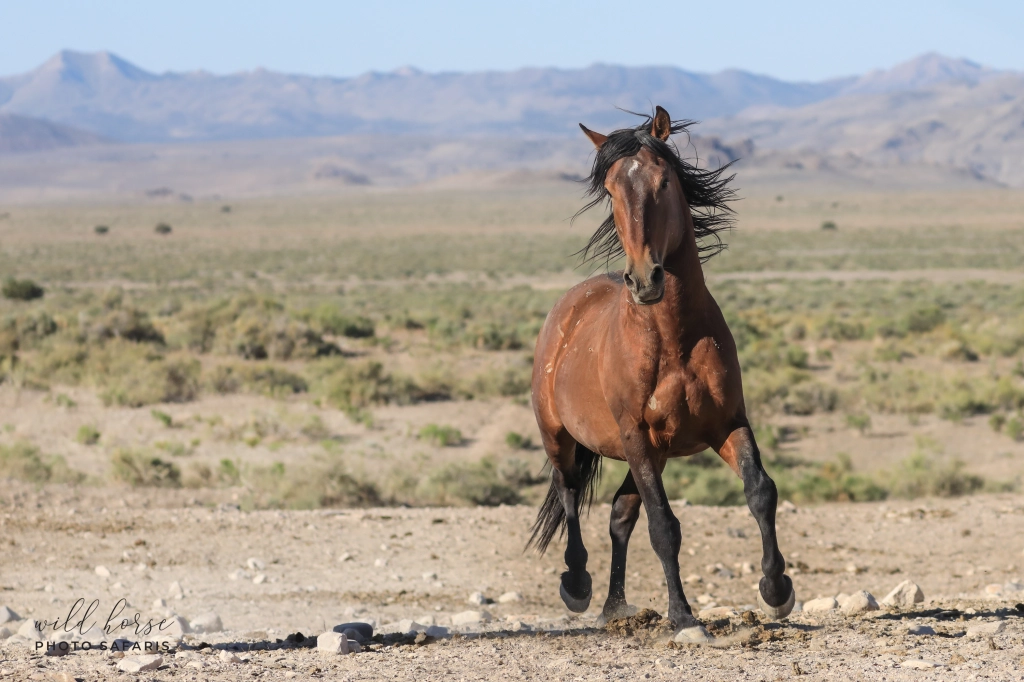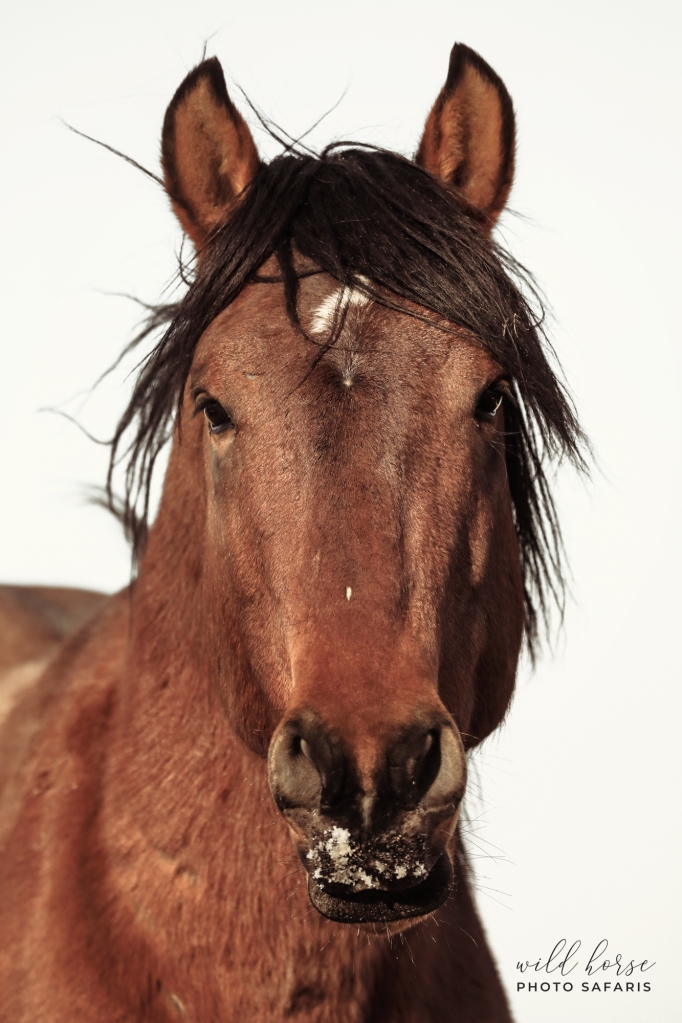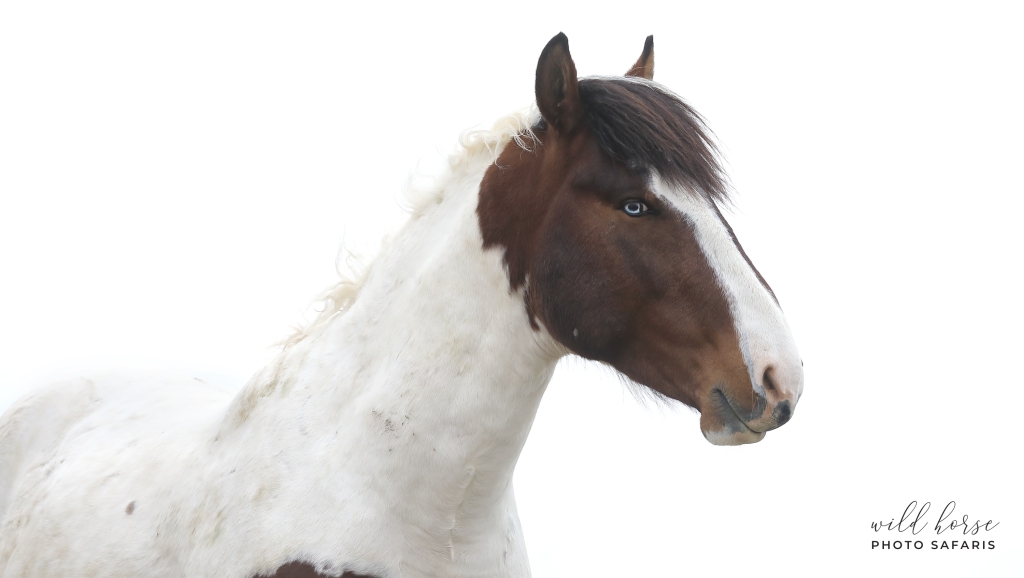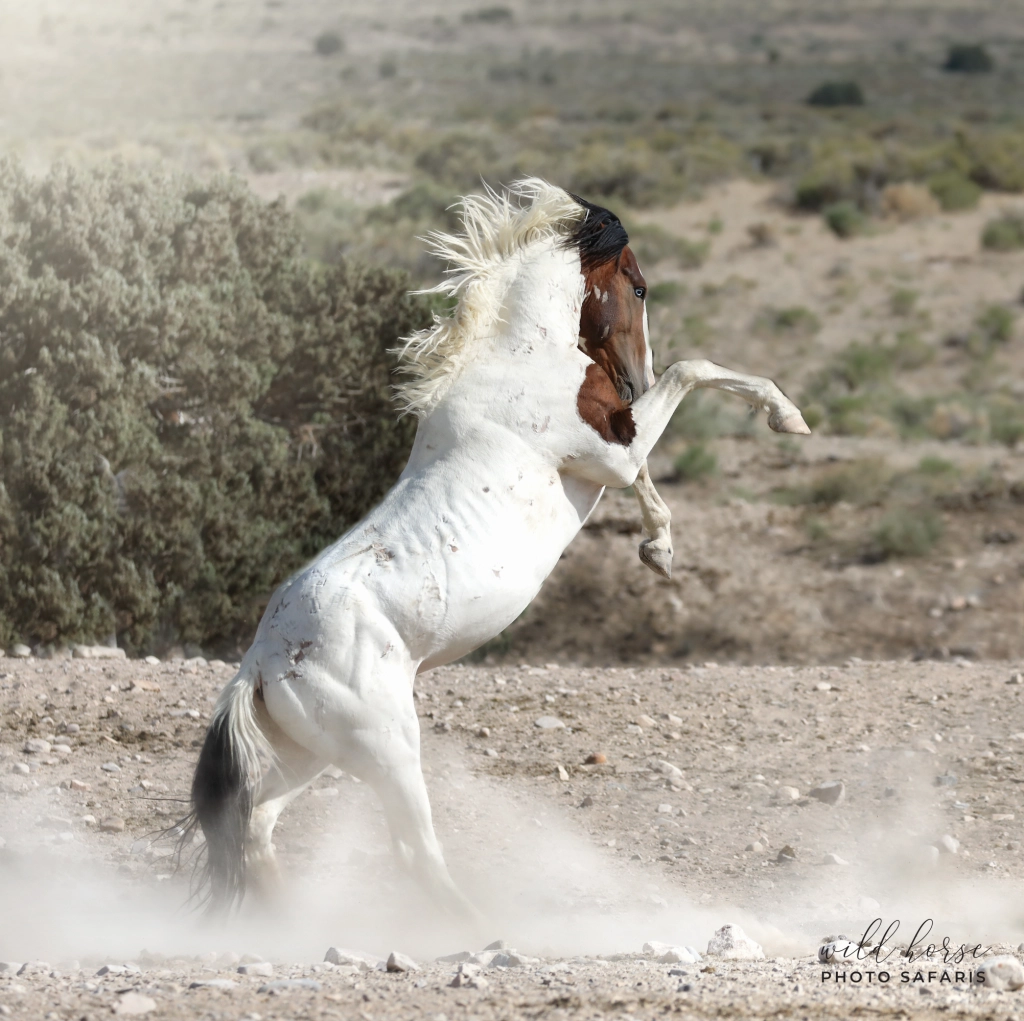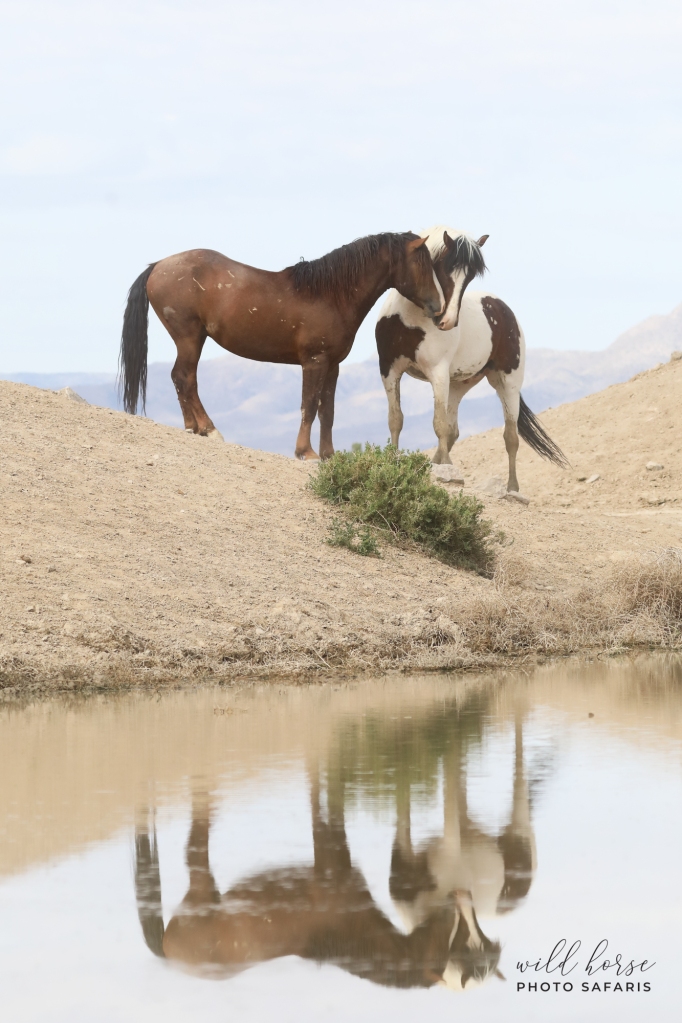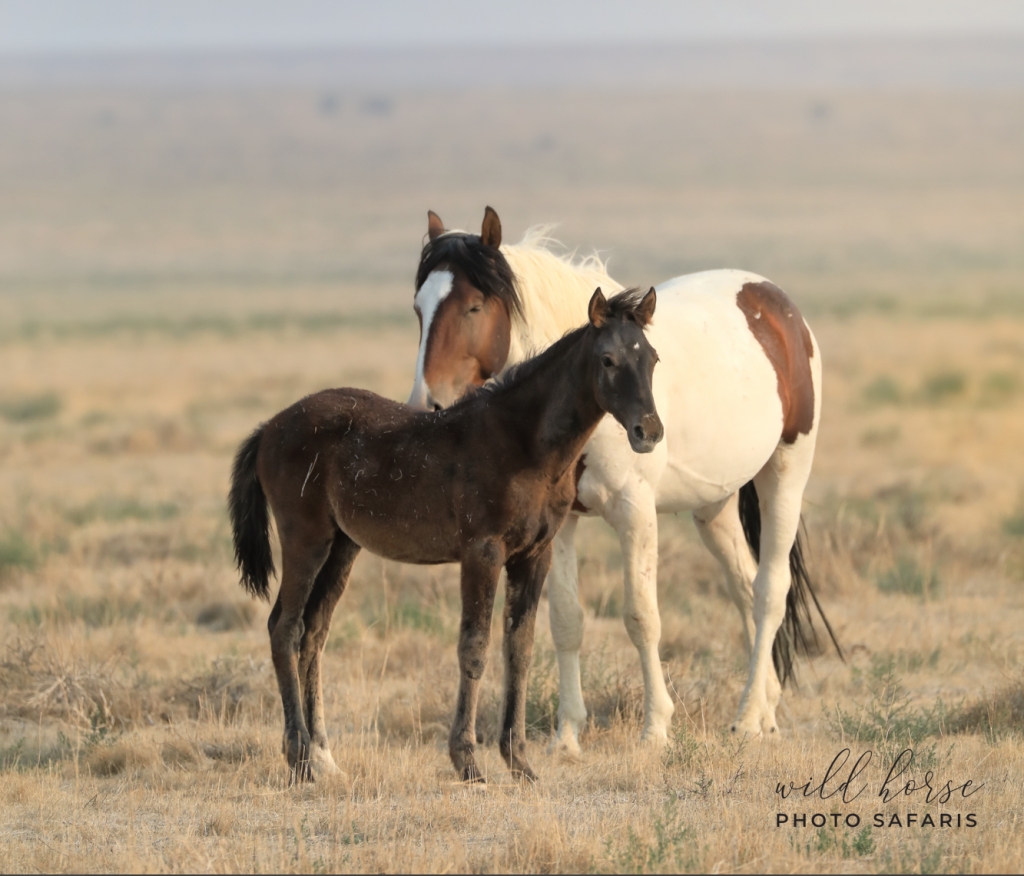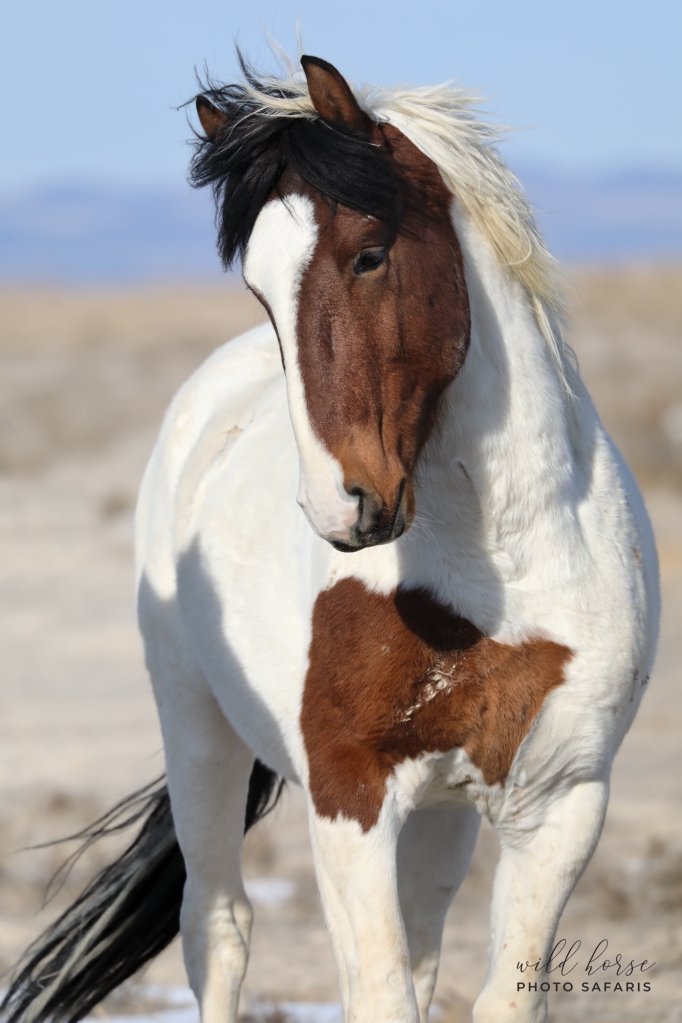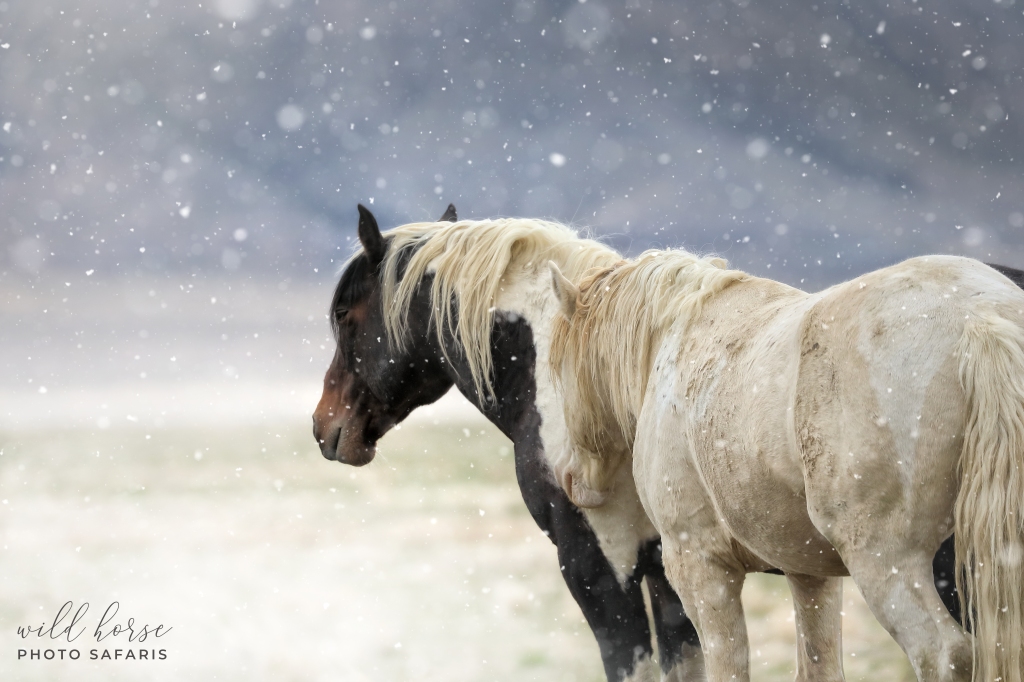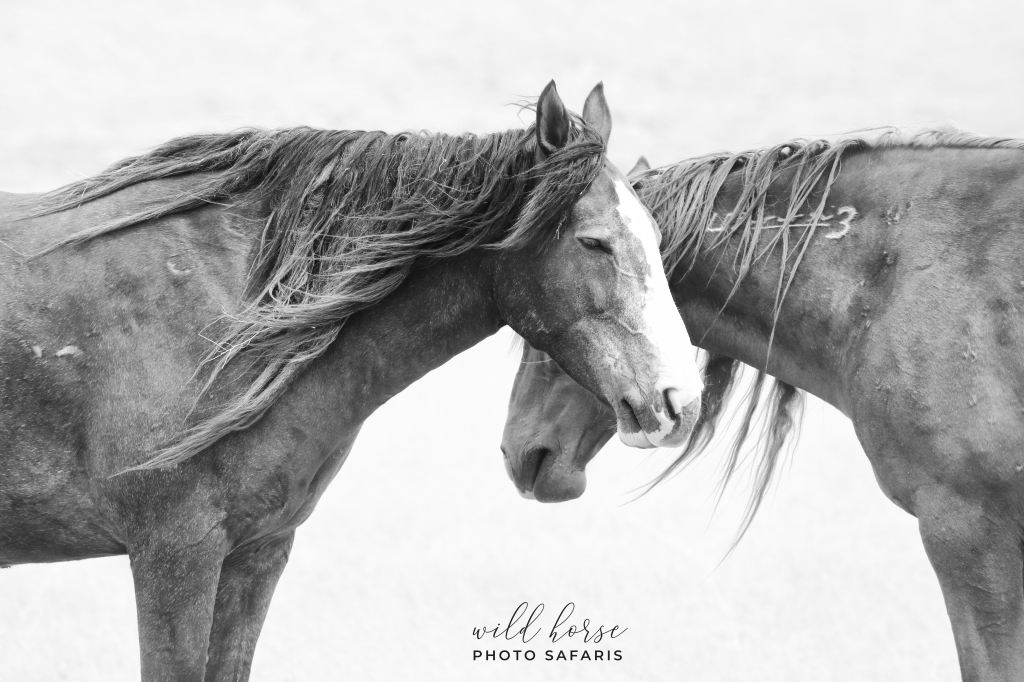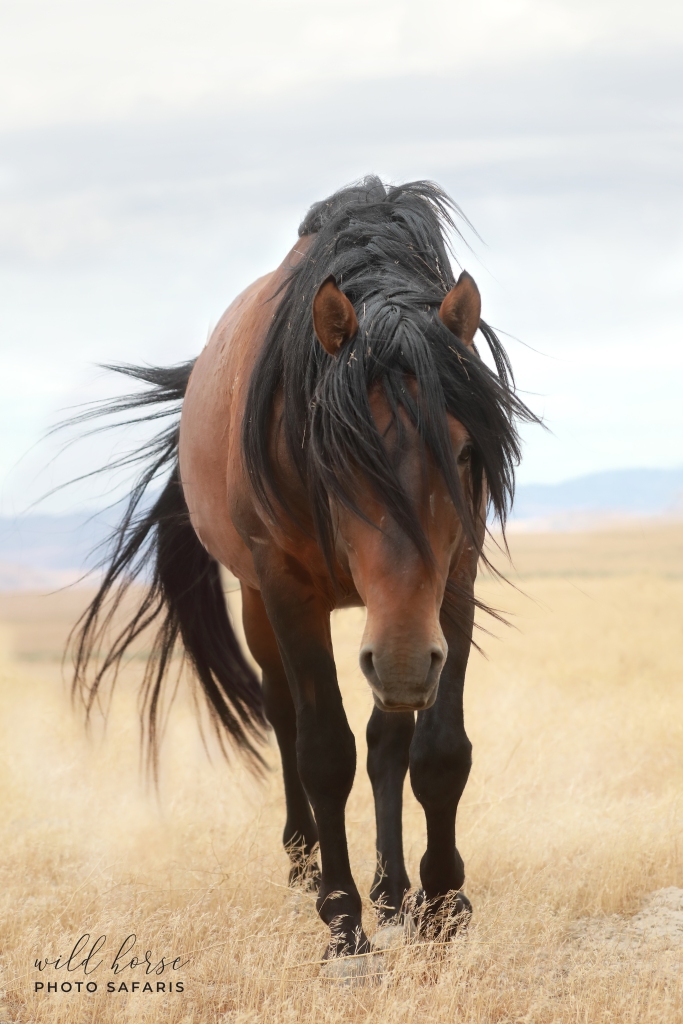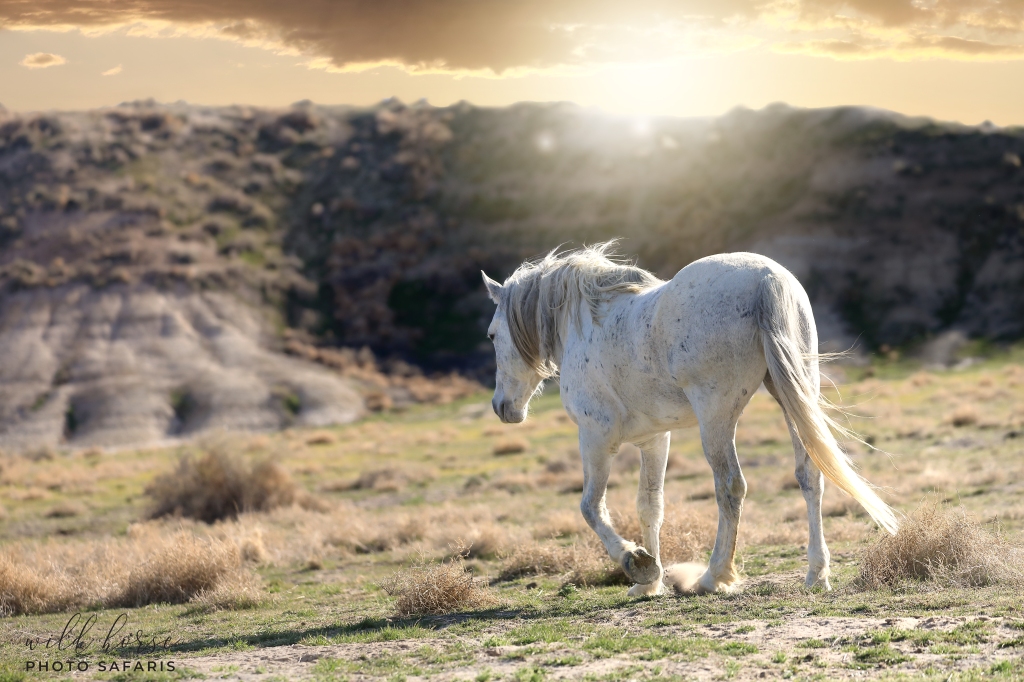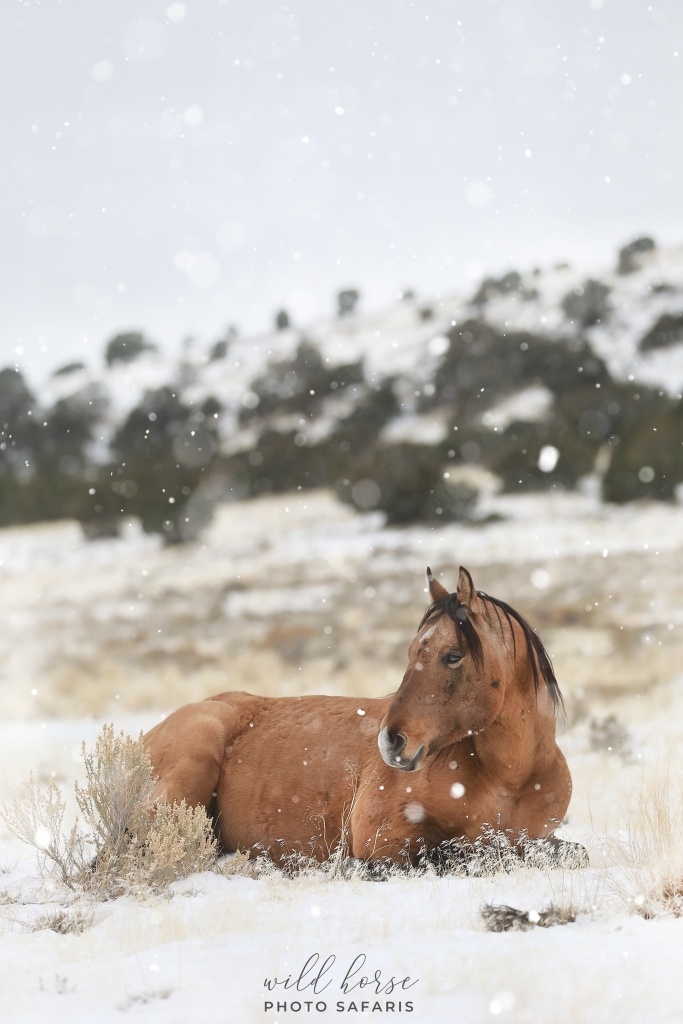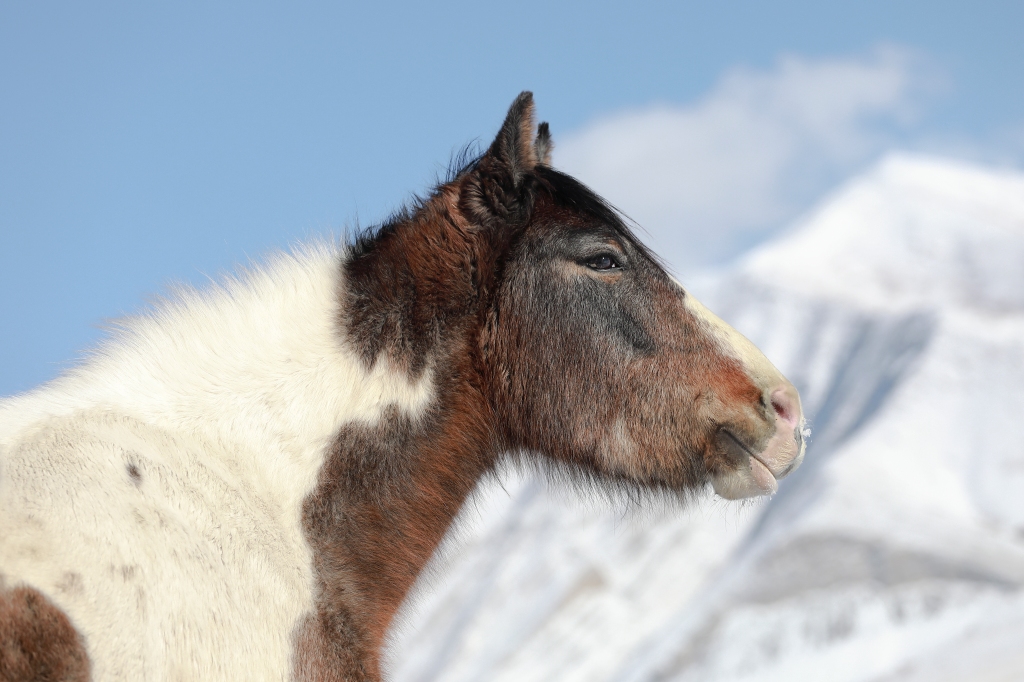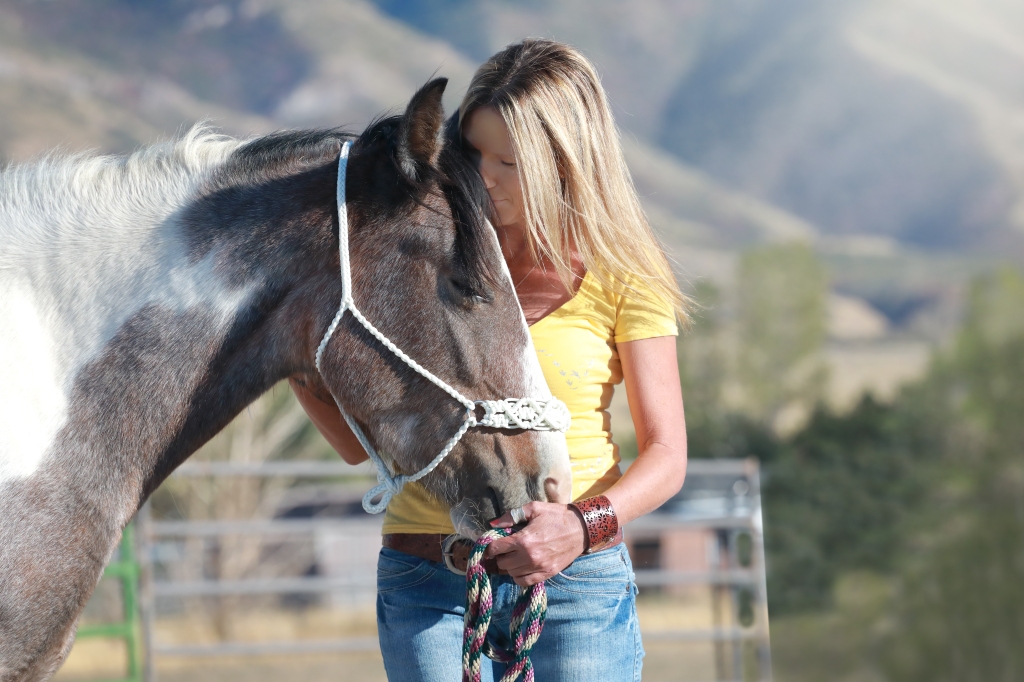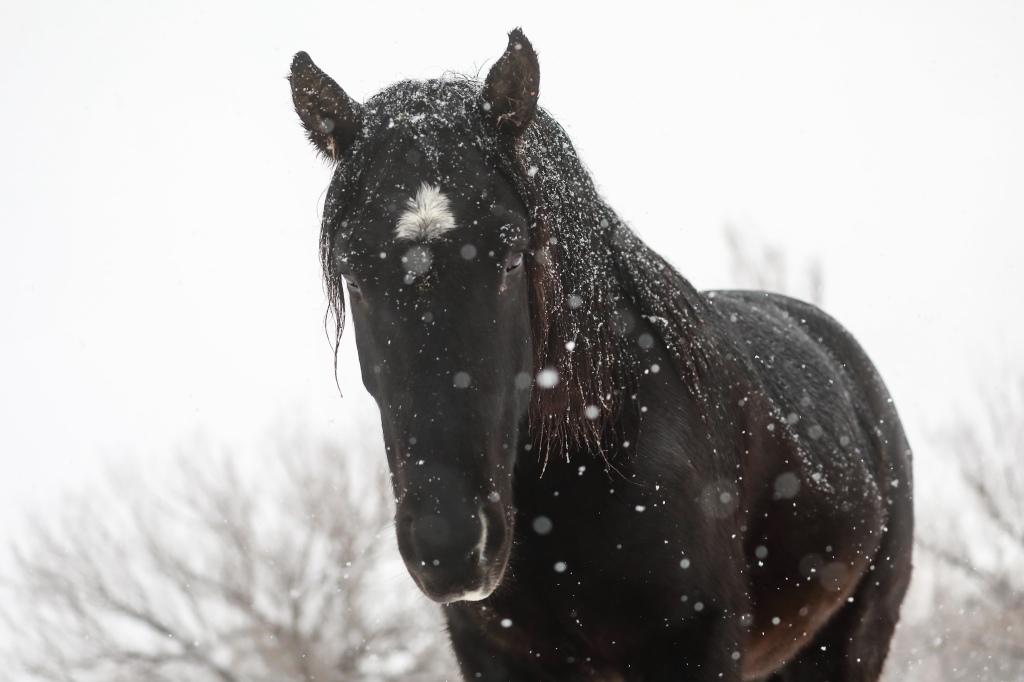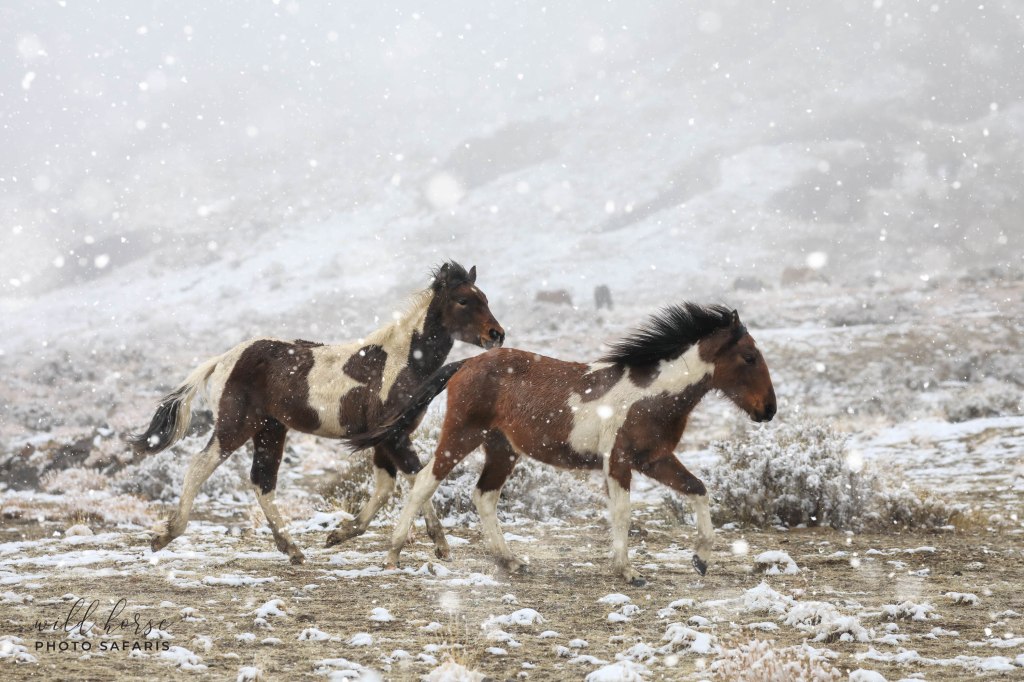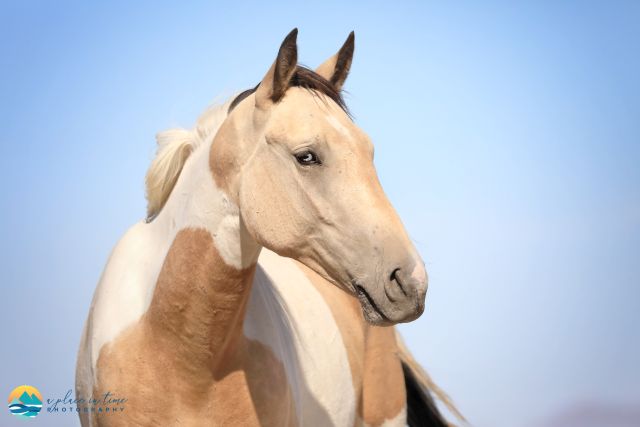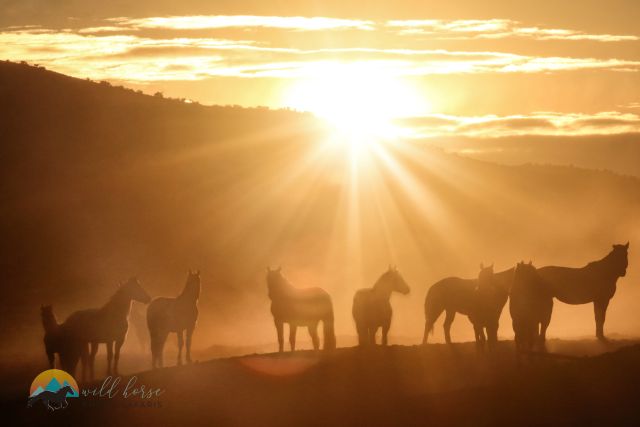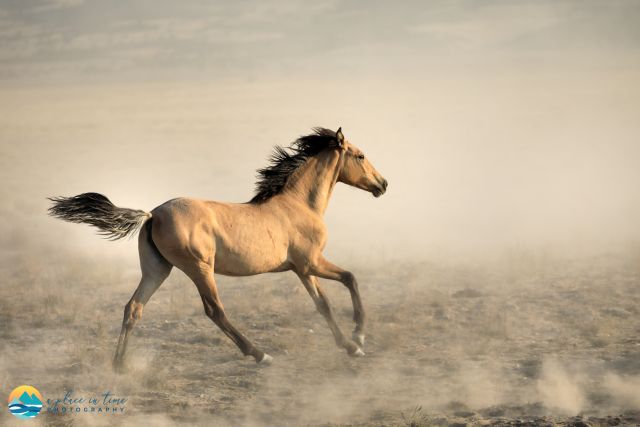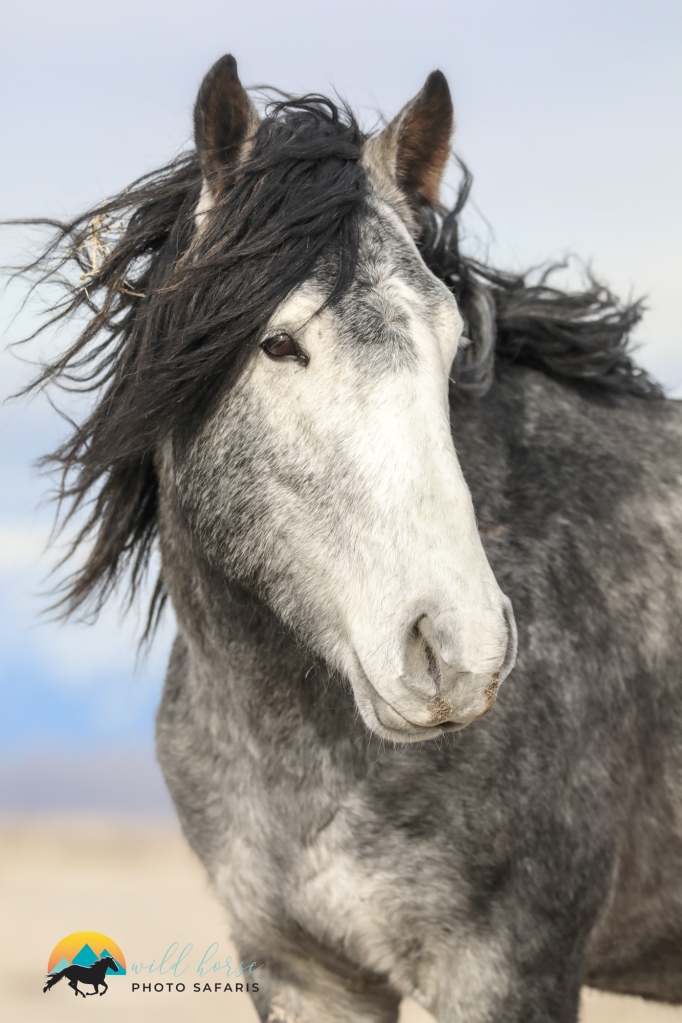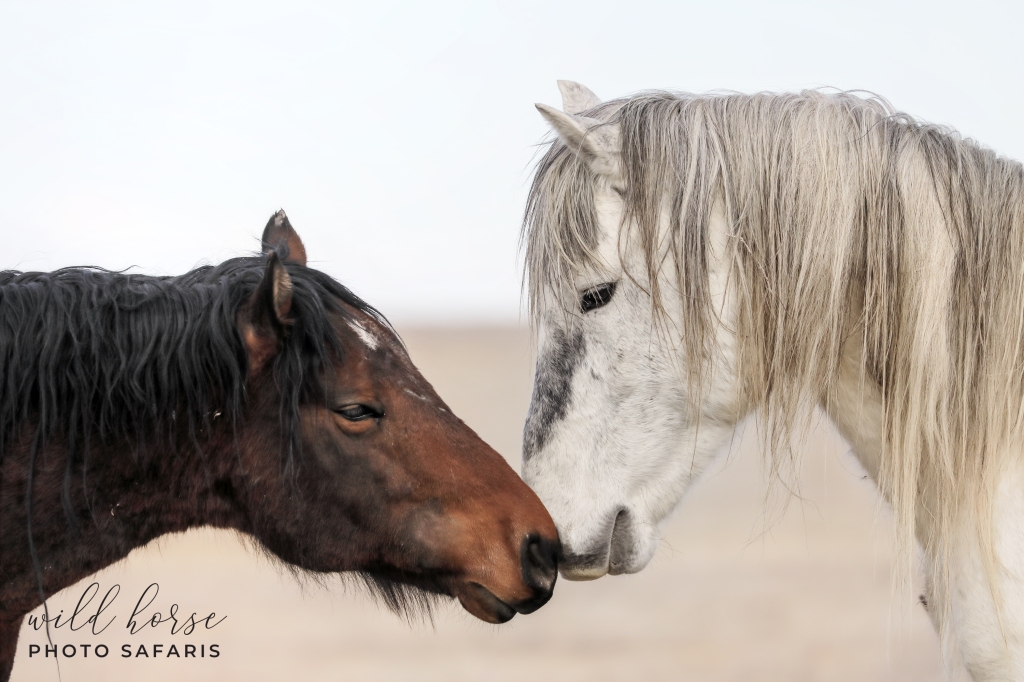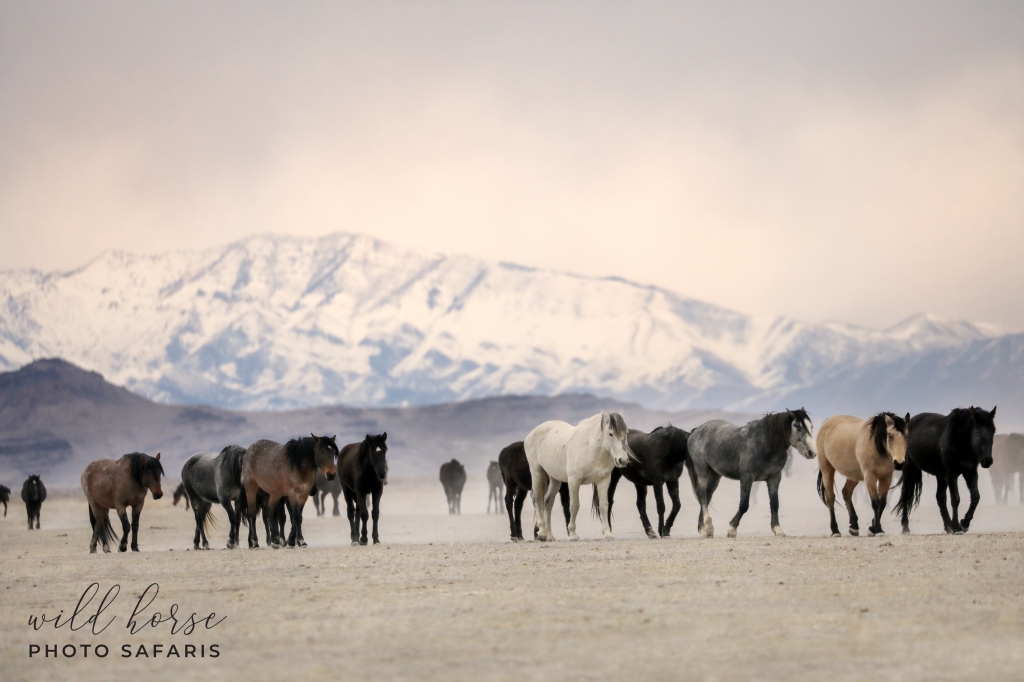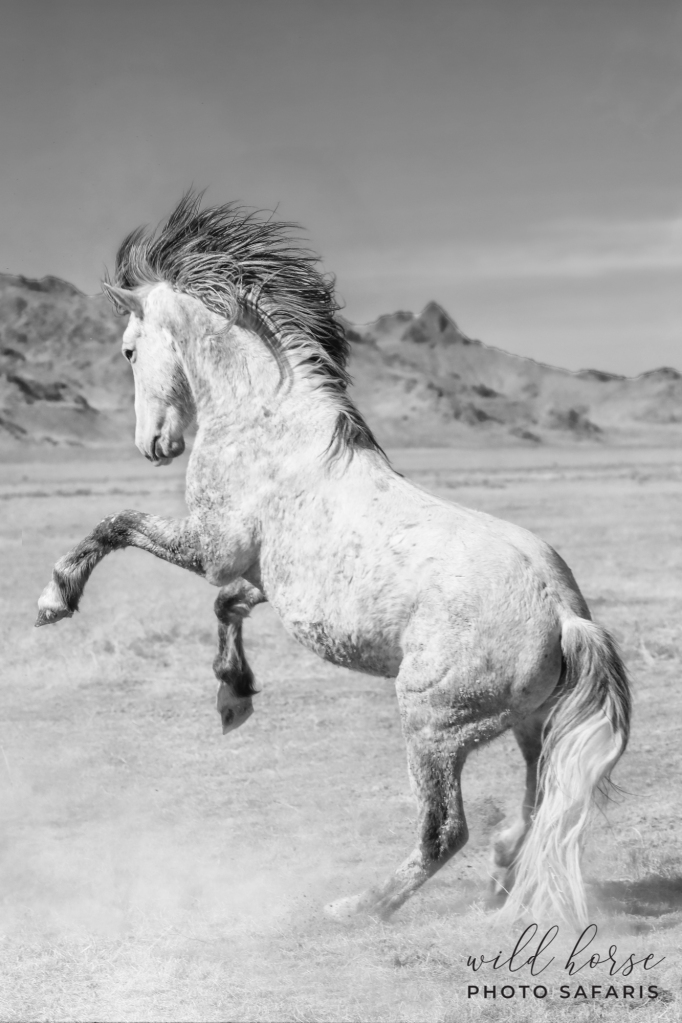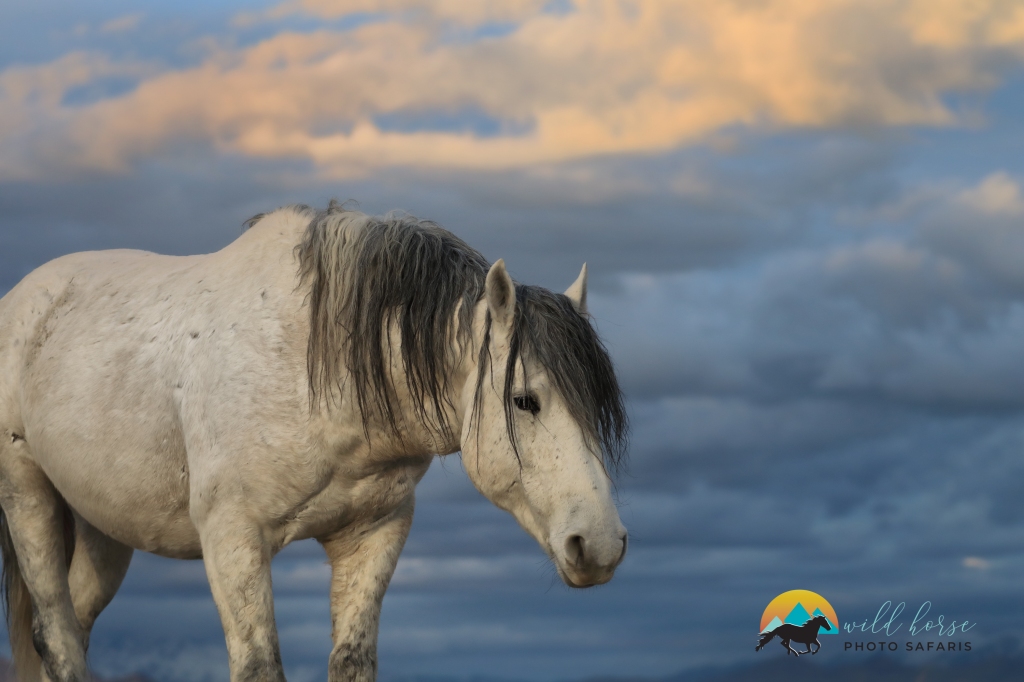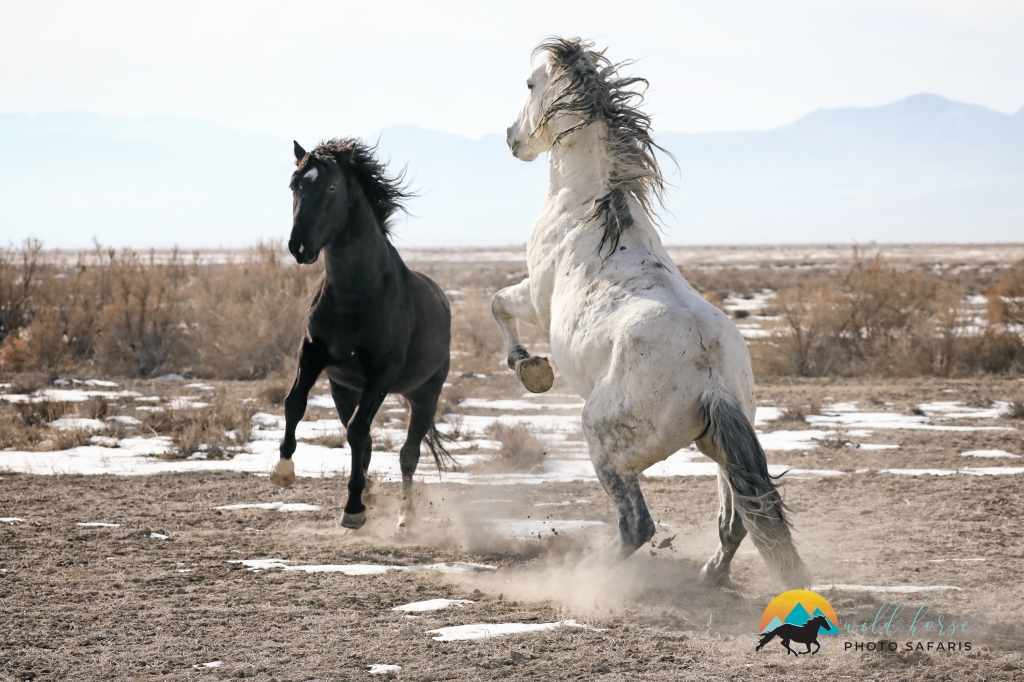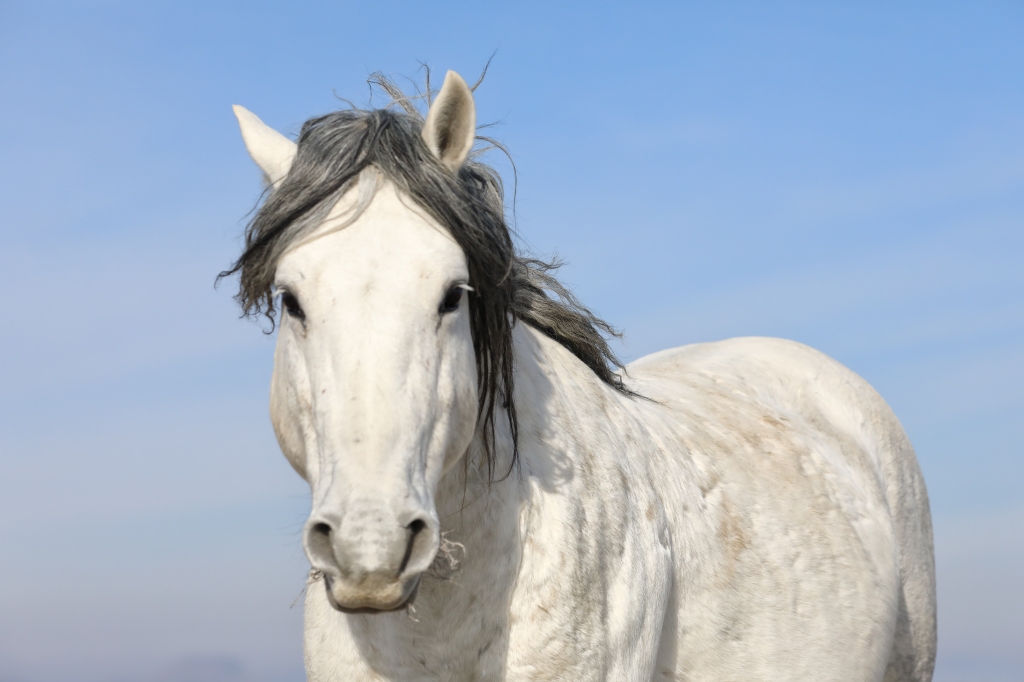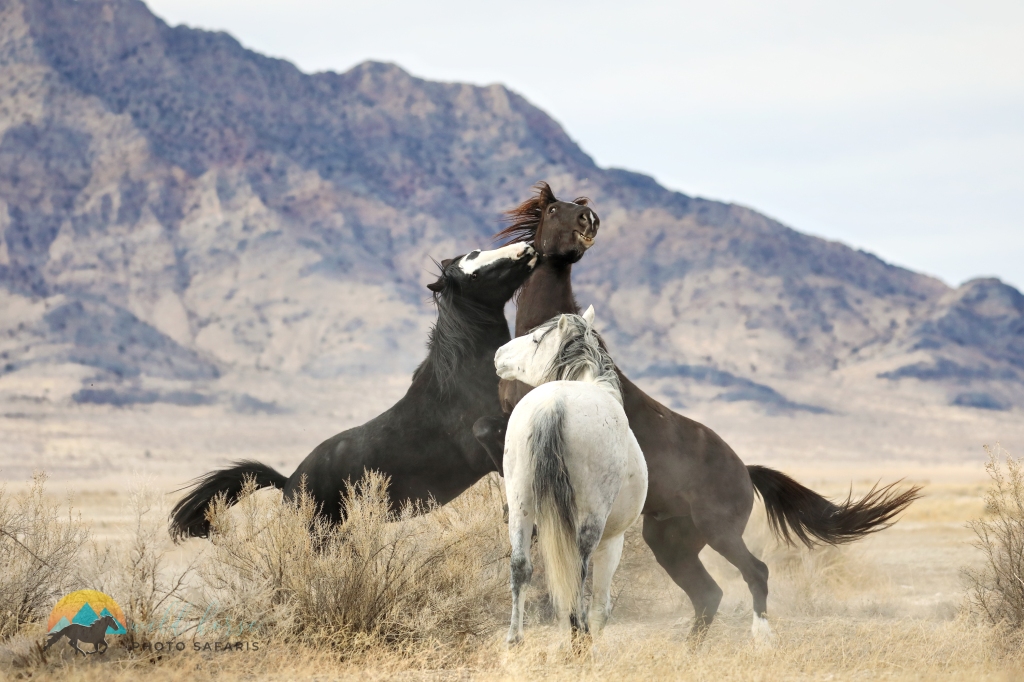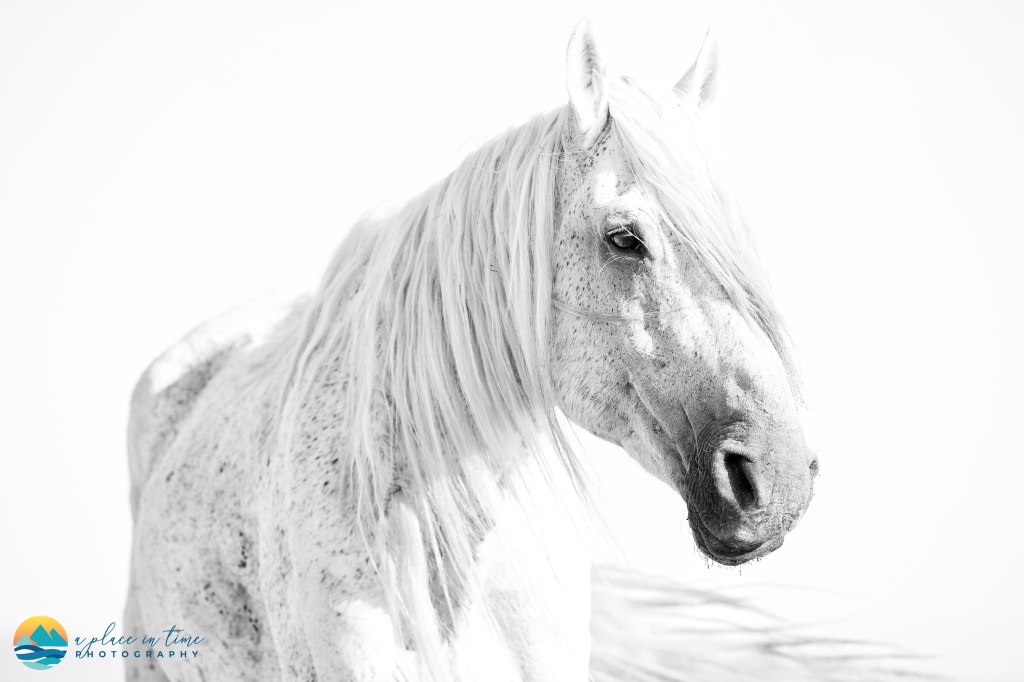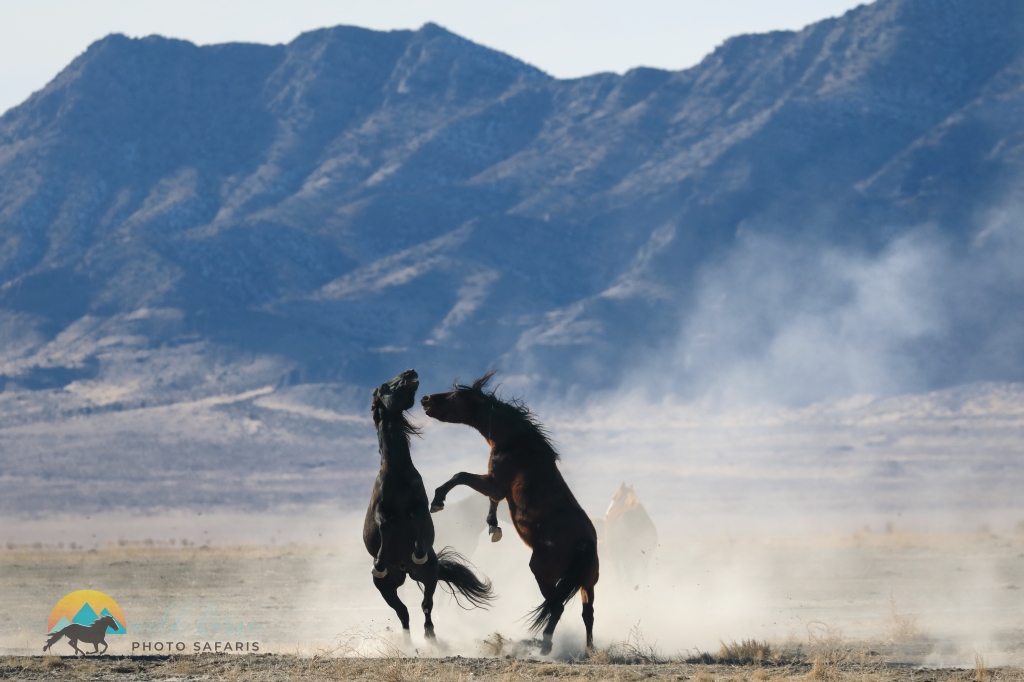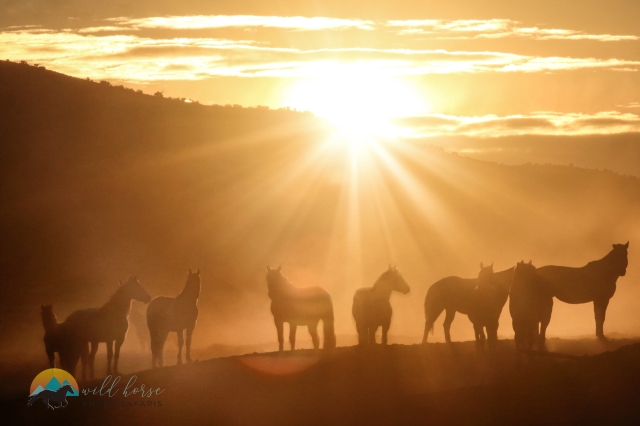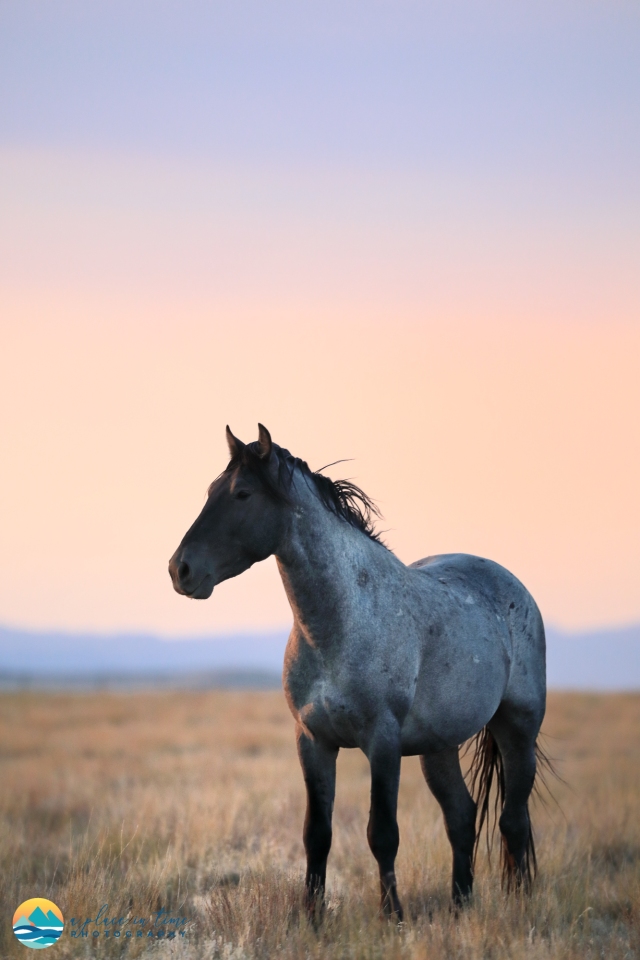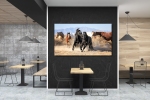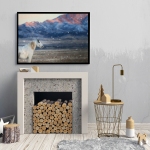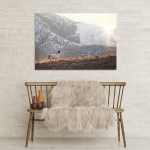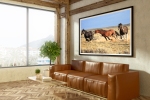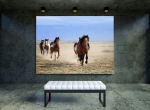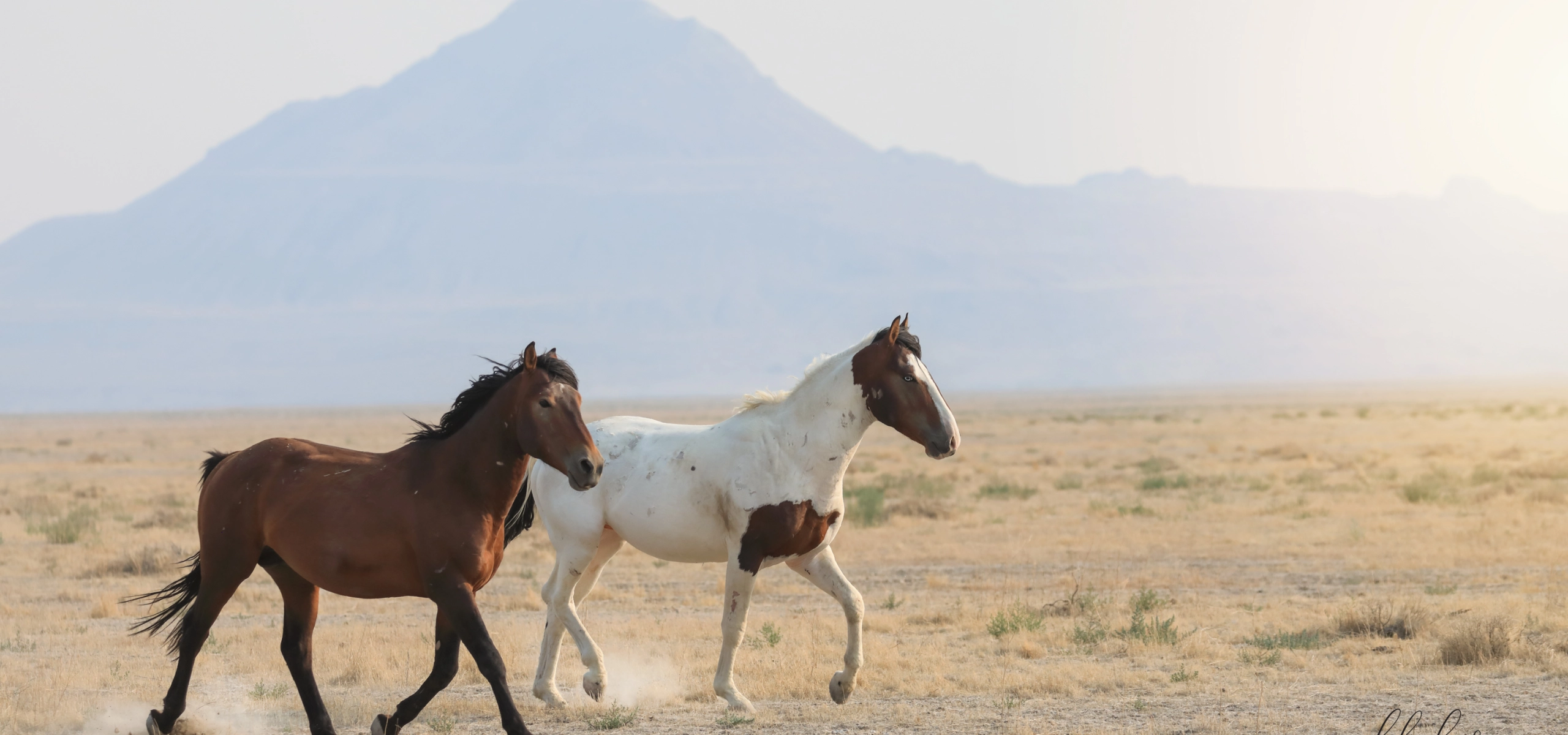
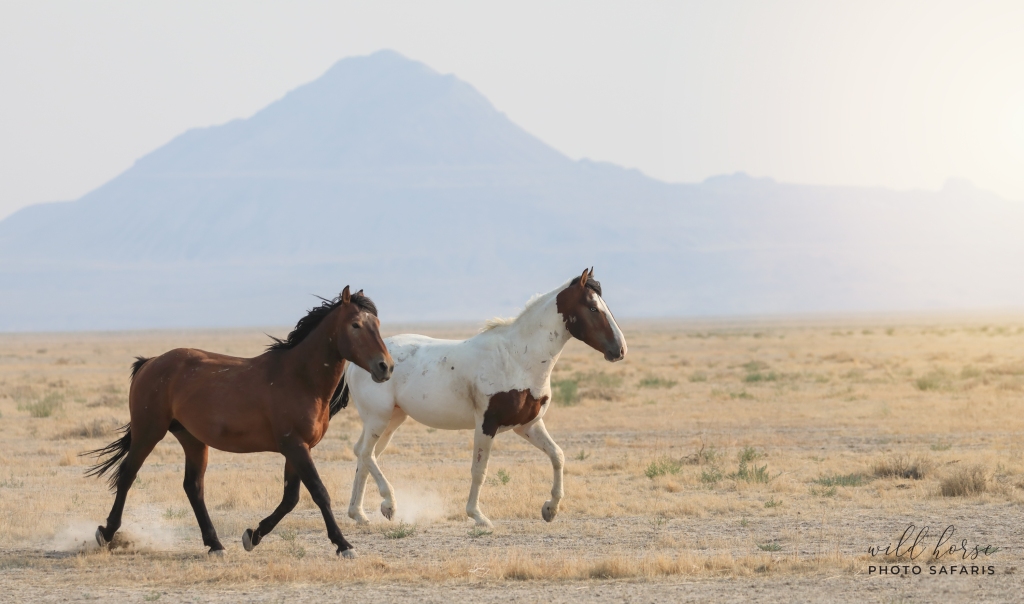
Pretty much anyone who has ventured to the southern part of the Onaqui HMA either to camp, explore or visit the Onaqui wild horses is familiar with atleast one of these stunning stallions.
Jasper, a five year old bay pinto with an eye as blue as the sky, was always easy to spot. He started out as a darling colt and the apple of his mother Dotty’s eye and has grown into an absolutely magnificent stallion. Jasper, his sister The Blue Eyed Filly and their mother Dotty were the only three horses to escape during the 2021 roundup as the rest of their large band lead by the Cremello stallion were pushed into the trap and removed from the range. Dotty took both her foals and ran, hiding for quite some time and disappearing from public view.
When she emerged she briefly stayed with her daughter, but Jasper was now on his own. The Blue Eyed filly joined a small band where she seemed especially bonded to the three other mares and Dotty remained with band stallion Sparrow until they were taken in the 2021 roundup. Jasper then began traveling with a large, older bay stallion who I affectionately called Arshan.
Arshan means brave, courageous and doer of good deeds. It couldn’t represent him better. Arshan and Jasper stayed together until the 2021 roundup and then after they were caught and released on the range immediately found each other again and remained inseparable until they were gunned down on the side of the road the week of March 12, 2023.
Jasper became a band stallion in 2021 and had a small band of his own, including a young colt which he adored. Arshan acted as his lieutenant and although there were intermittent scuffles between the two of them for control, Arshan wasted no time in defending their family against possible threats. He was a smart and muscular horse and you could tell his mind was always in motion.
Jasper in particular was beloved for his devotion to stepping in and trying to take care of the underdog. One of the most dramatic examples of this was when he (and Arshan) valiantly protected brand new mother Maia and her hours old filly Serendipity from an onslaught of an attack by atleast ten other bachelor stallions in the south. It was two against many and they fought and fought and never gave up. The full story is recorded here: https://wildhorsephotosafaris.wordpress.com/2023/03/22/serendipity/
After losing Maia and Serendipity after only a few days the boys took to traveling in only each other’s company for several more months. Then in September of 2022 they adopted a sorrel yearling colt named Junpei (Japanese for pure, genuine, innocent and kind). Junpei absolutely adored and idolized Jasper and they were never more than ten feet apart. Typically you’d find Jasper in the lead with Junpei stuck to his side and Arshan bringing up the rear. Both stallions protected the yearling vigilantly and kept him safe from harm.
The winter of 2022/2023 set records across the west for snowfall and moisture levels. The desert remained covered in snow for months and both the north and south herds ventured to the outskirts of their usual stomping grounds in search of easier forage. The roads were on and off impassible and just about the time hopes would raise that they’d dry out we’d get another bought of moisture leaving the clay saturated and slick. Word would get out of even 4×4 vehicles routinely getting stuck and needing a tow to get dislodged.
Finally in mid-March we had several warm, sunny days that helped to melt the remaining snow from the valley floor and help the desert to begin to absorb the layers of moisture that had covered the surface for so long. The vast majority of the horses remained far from reach in inaccessible areas even to the best all terrain vehicles. However a few bands had spread out and were more visible from the main roads. Unfortunately Jasper, Arshan and Junpei were one of those bands.
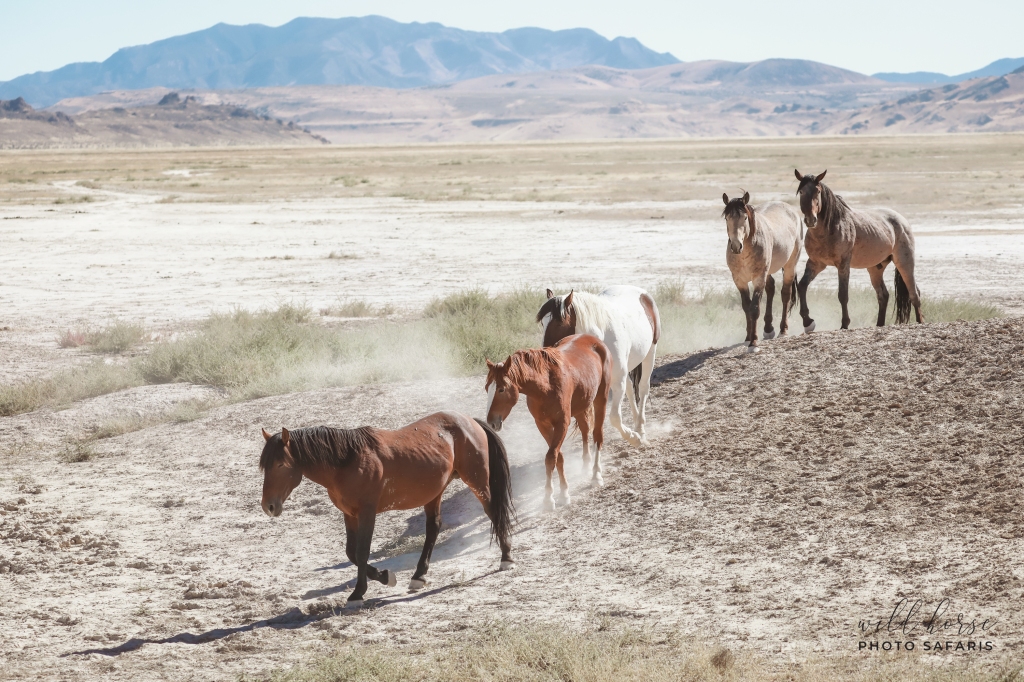
On Sunday, March 19th both Jasper and Arshan were found shot through the neck and killed a few feet off the main road just south of the Simpson Springs recreation area. Not only were they only feet from the road, but they were only feet from each other as well. Junpei was and has been nowhere to be found. Efforts to locate him are ongoing.
Some person(s) literally just drove right up to them and shot them at near point blank range. Their deaths are expected to have been instant. No one knows if young Junpei was shot and escaped, if he was allowed to live that day purposefully, or if he was taken by the shooter(s) off the range. The only thing that we can be reasonably certain about is that those stallions wouldn’t have left little Junpei and visa versa. I’ve been witness to far too many horses mourning the loss of one of the members of their herd and similar to elephants they seem to have a ritual and will come to pay their respects and sometimes stay and appear to guard the body for several hours after the other horse’s death.
The amount of malice and callousness which a person would have to be filled with to perpetrate a federal crime like this is unconscionable. It raises question to whether there are still horses out there in more remote areas who have met the same fate or if this was simply a crime of opportunity. It also raises concern about personal safety to visitors on our public lands with indiscriminate and senseless killings like this taking place. Even I have had a shotgun pointed out the window of a truck at my face for simply driving along the road – at all of about 5 miles an hour.
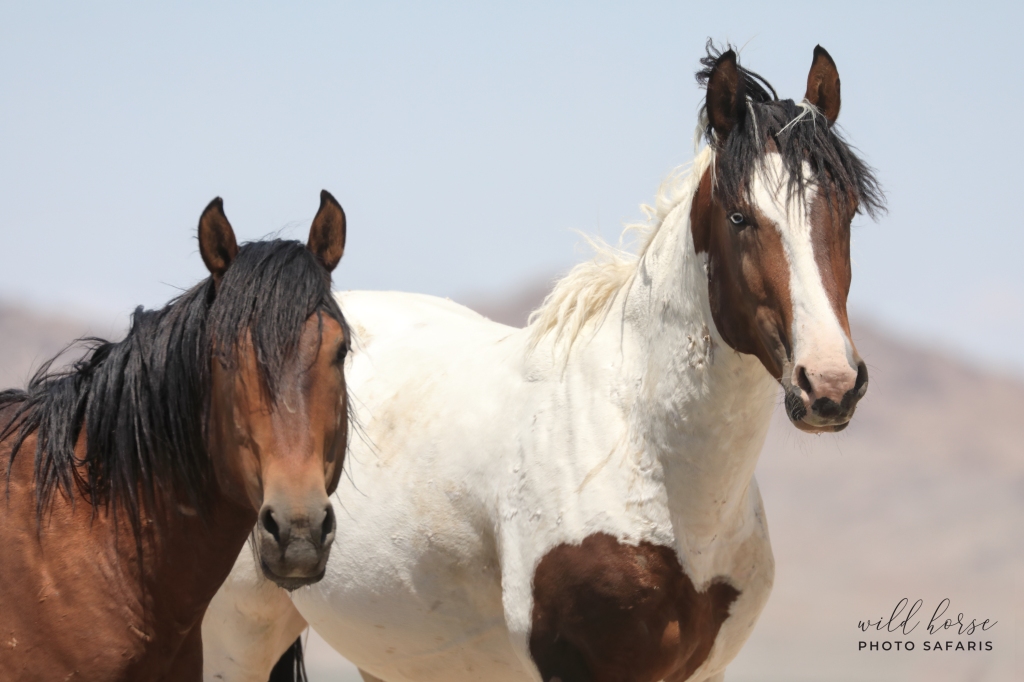
The Bureau of Land Management is offering a reward for information leading to the arrest and conviction of the person(s) responsible for this horrific crime. Red Birds Trust is contributing $5,000 for a combined total of $37,500 reward as of March 26th for information bringing the killer(s) to justice.
We already lost 312 of our Onaqui horses in the July 2021 roundup due to removal from the range and have lost 15 more since August of 2021 due to various causes of death. This includes Jasper and Arshan.
I think I can speak of everyone when I say that the range will not seem the same with these two iconic stallions now gone at the hands of a very sick individual(s). The only consolation is that it appears there was no suffering. Now the goal is to try to find little Junpei and pray that he somehow, by some miracle, made it away uninjured.
Tips can be reported to 800-722-3998 and callers can remain anonymous.
An official press release can be viewed here.
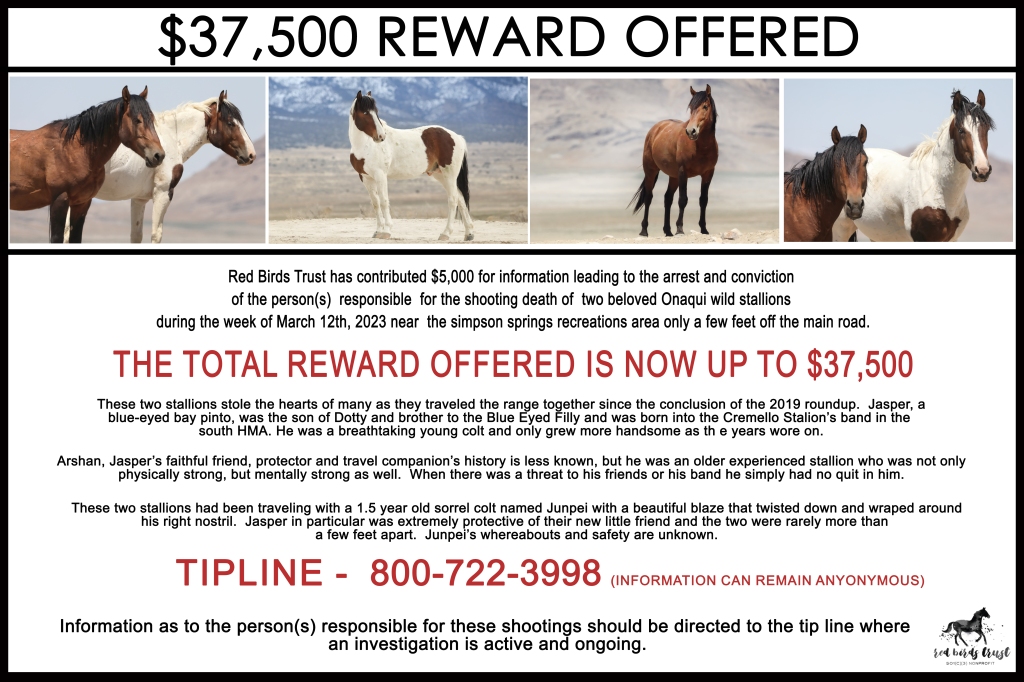
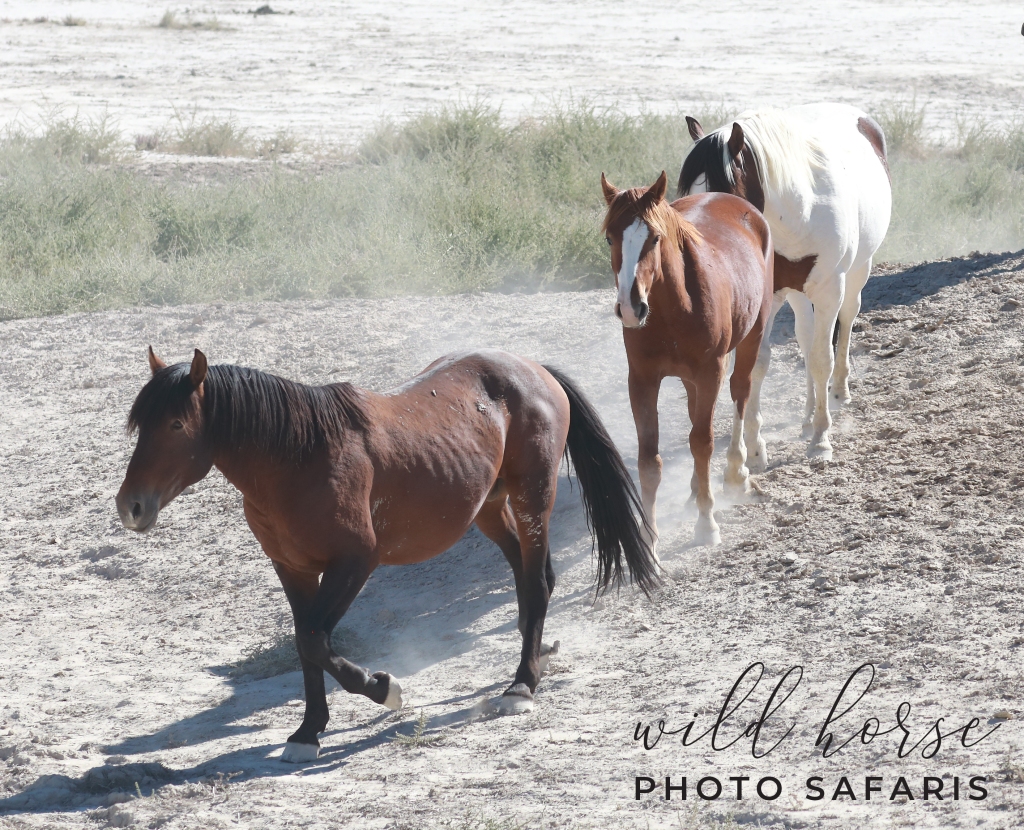
Arshan followed by Junpei with Jasper following behind
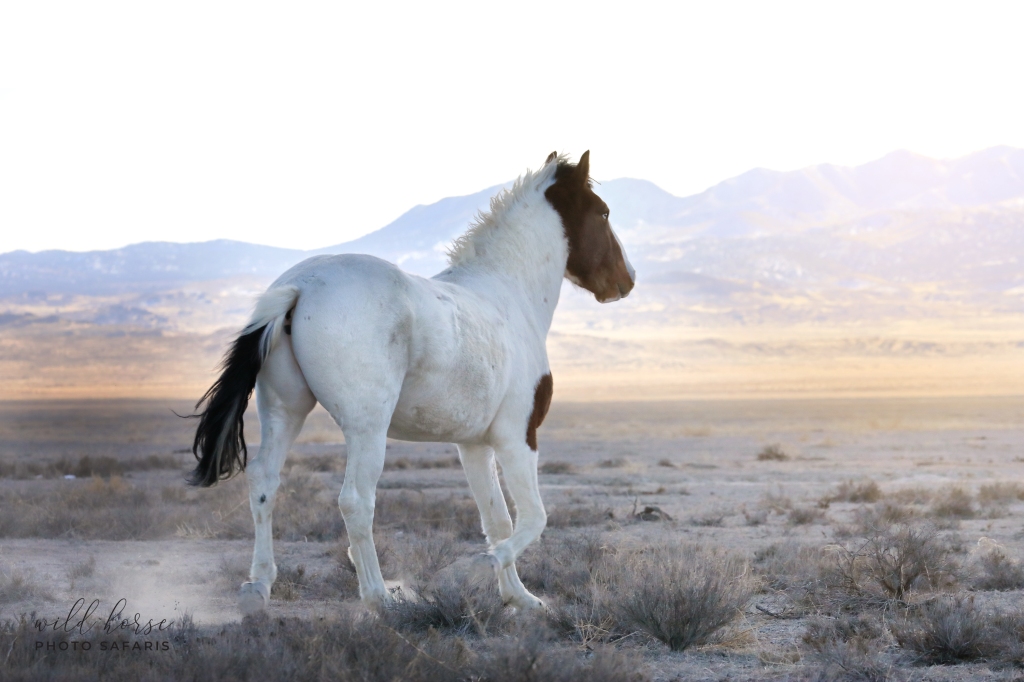
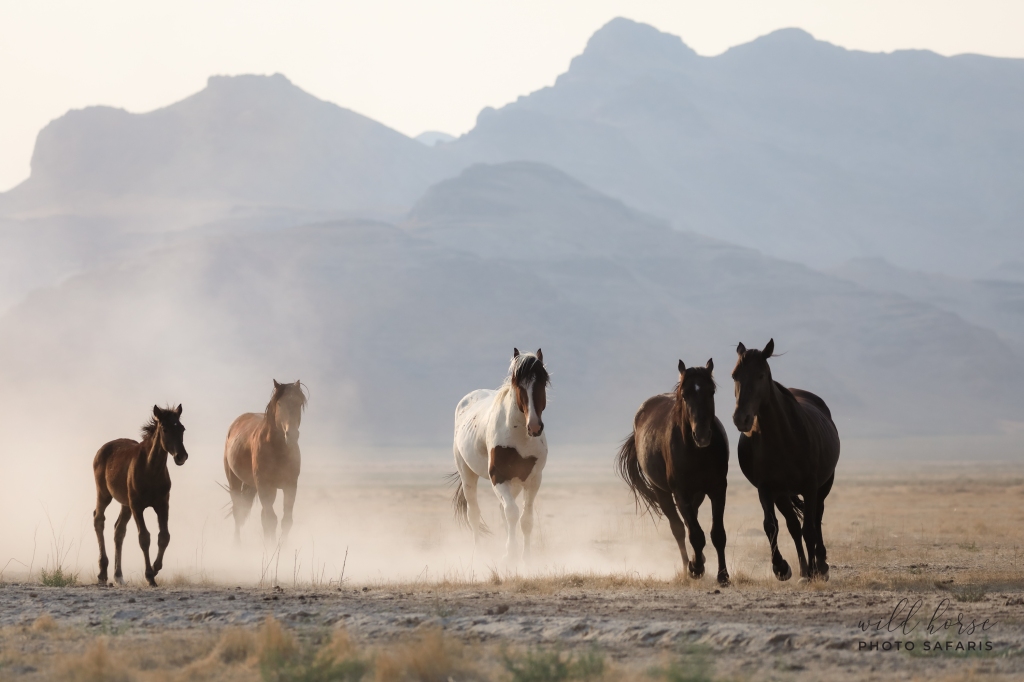
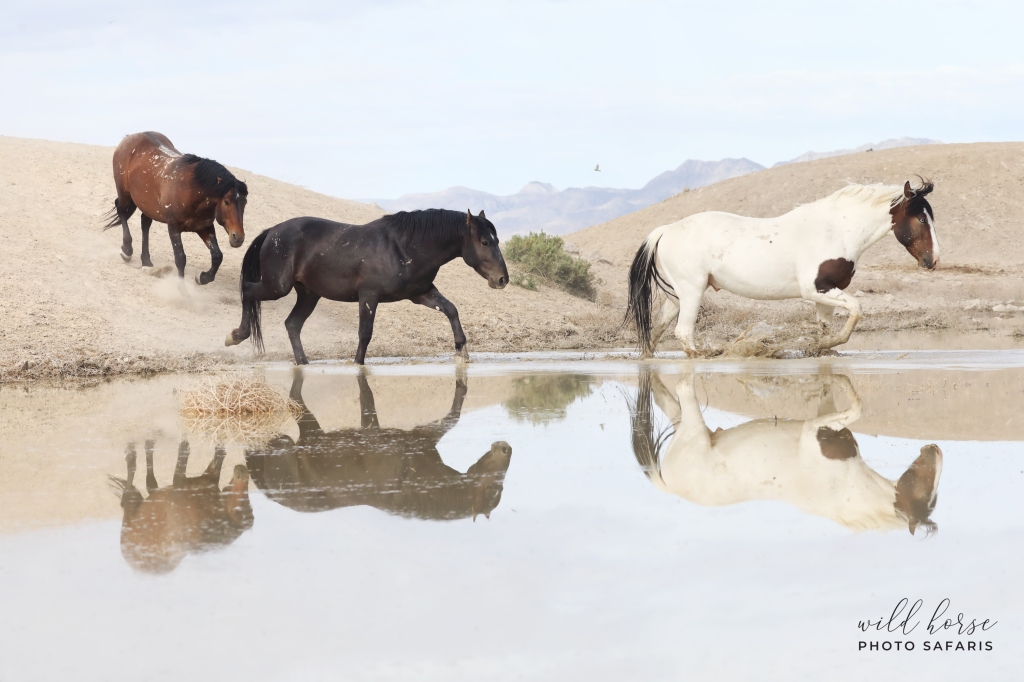
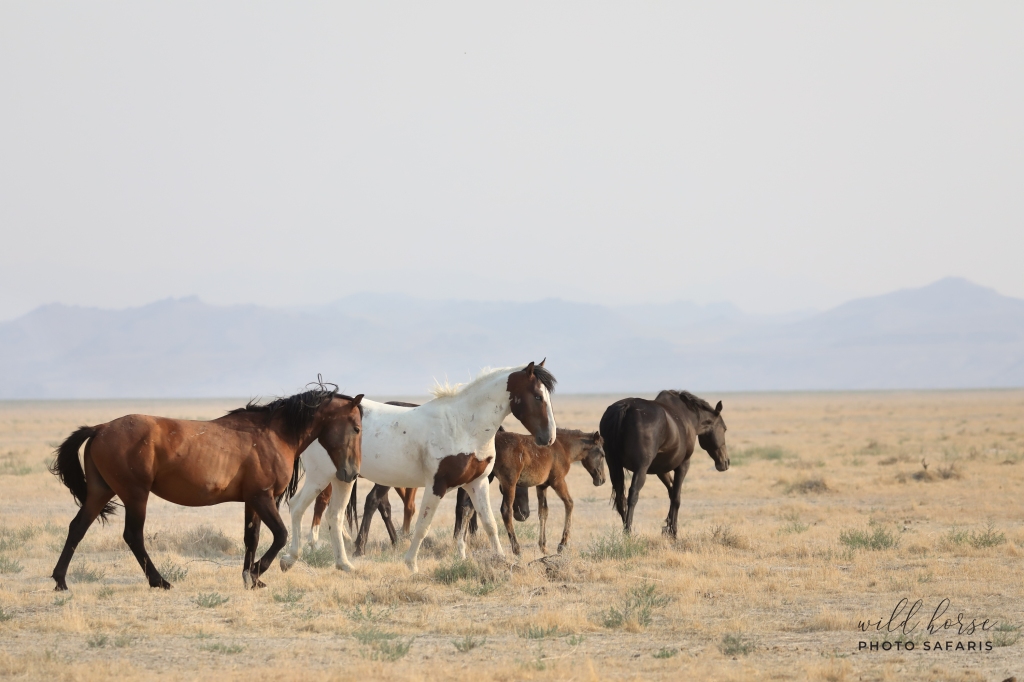
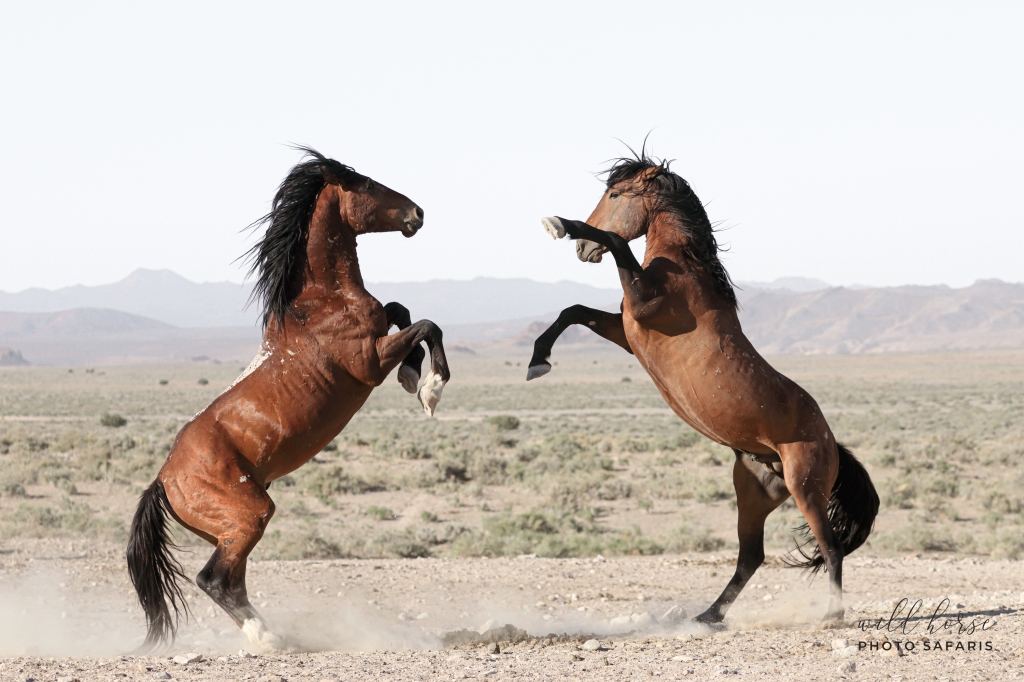
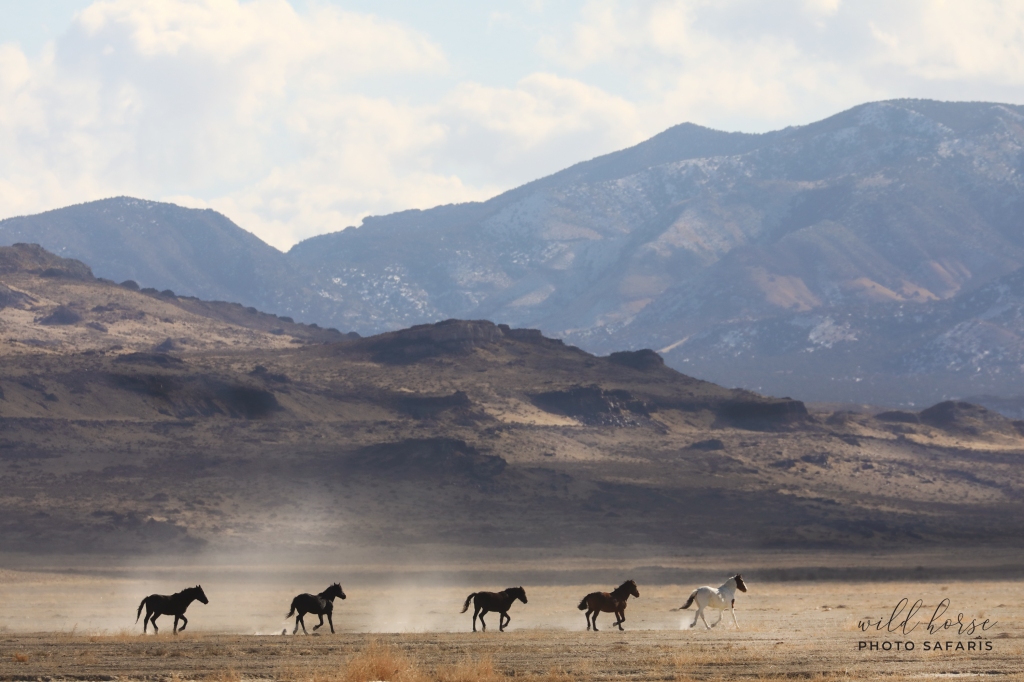
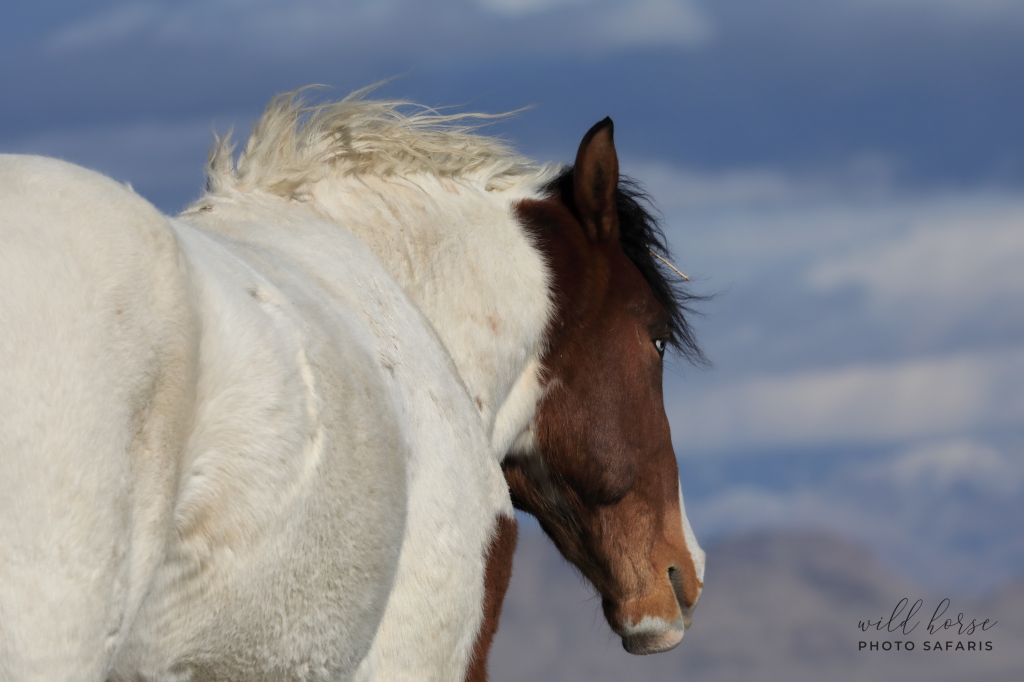
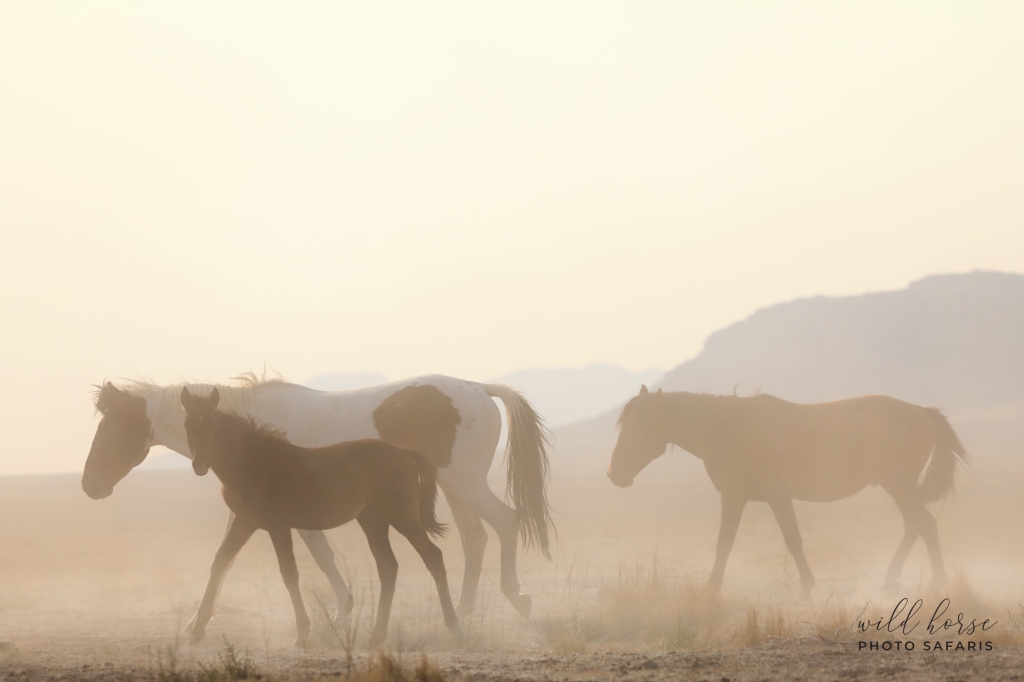
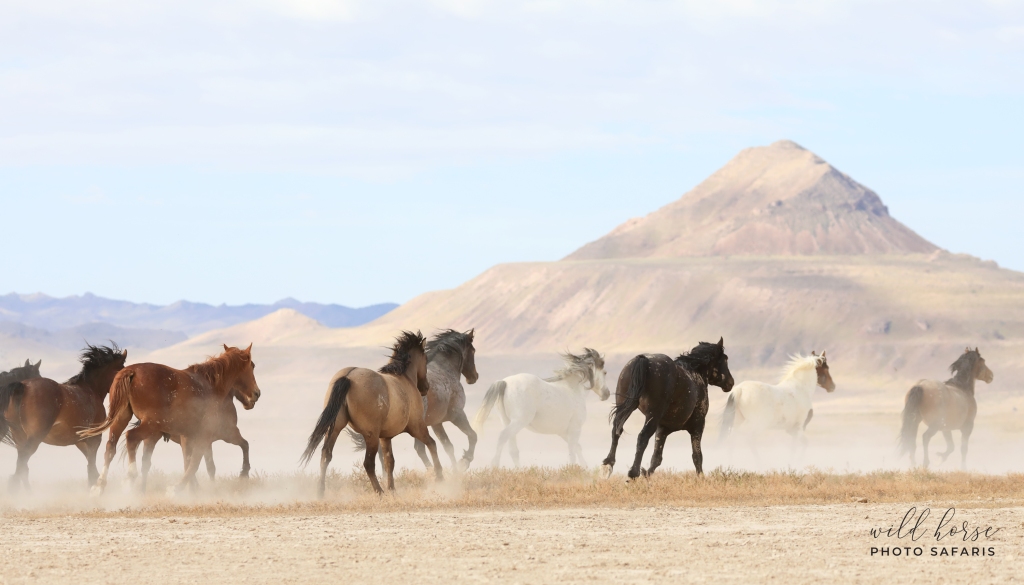
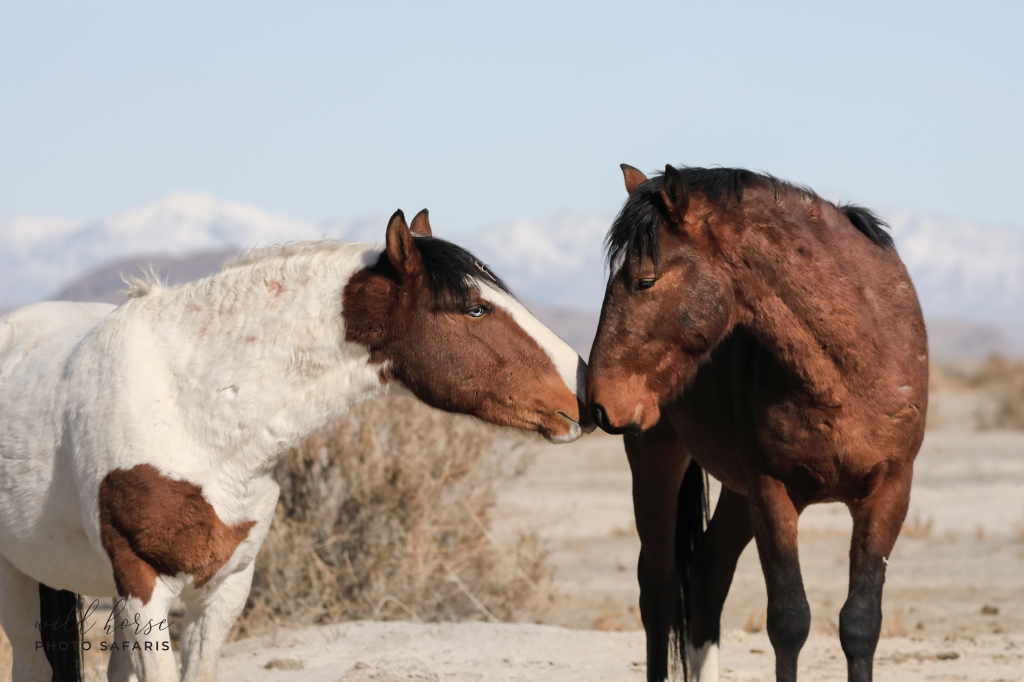
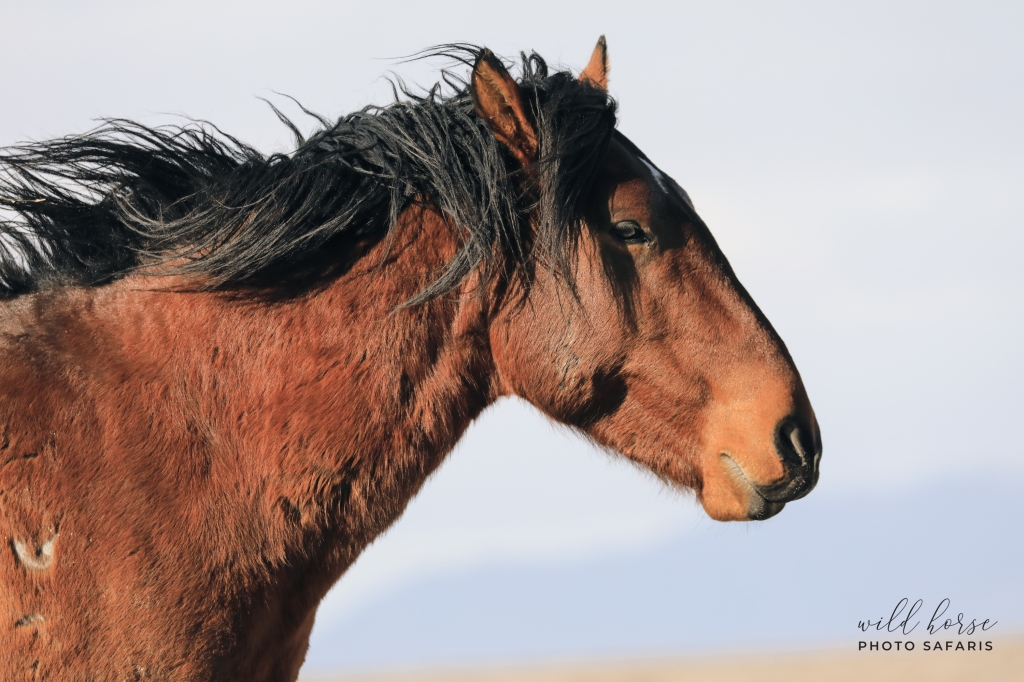
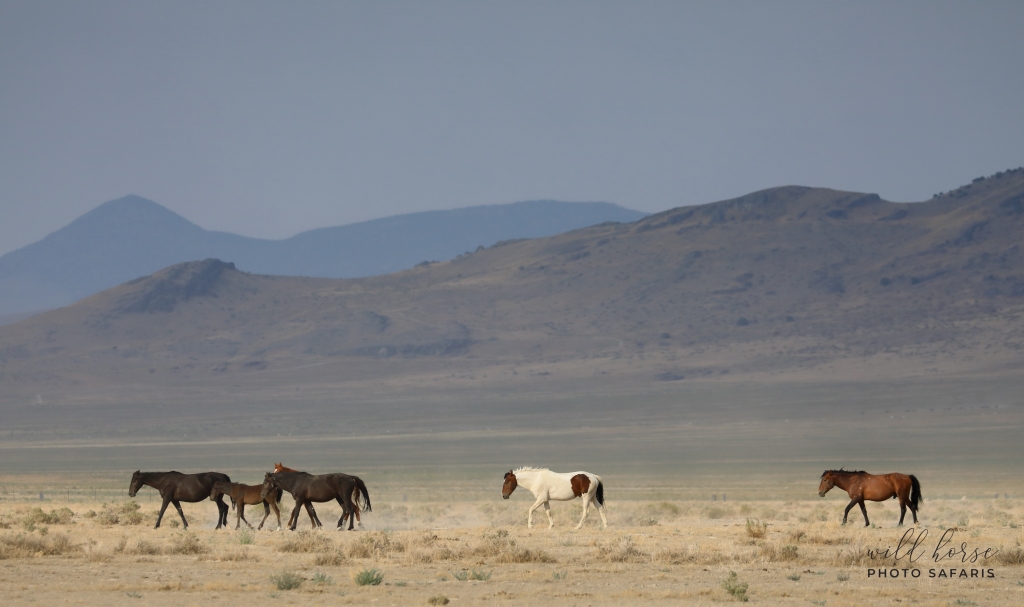
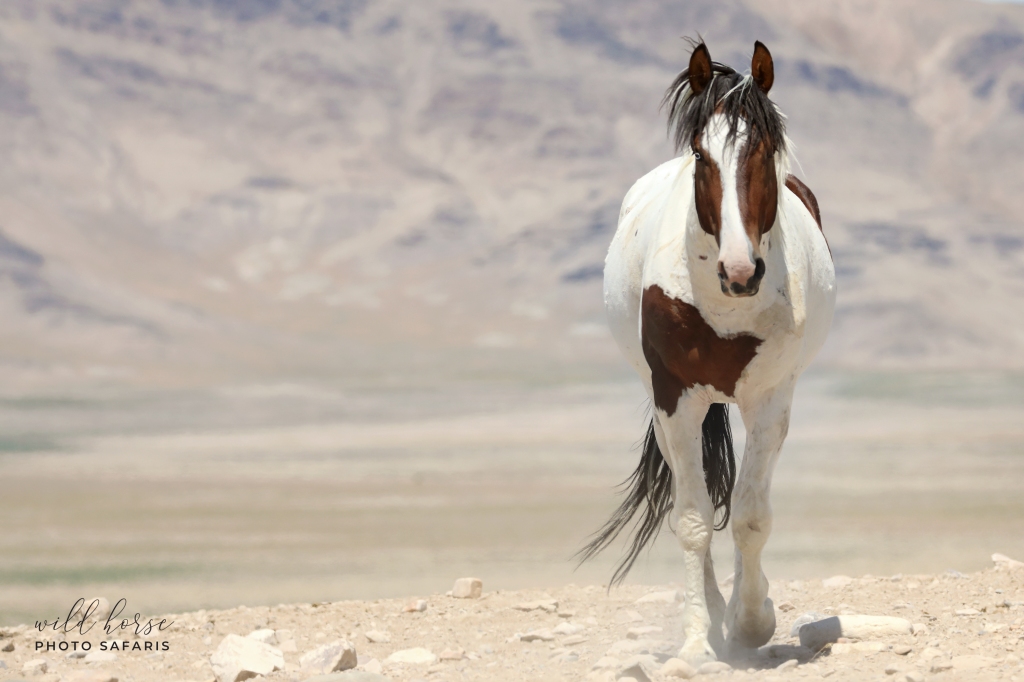
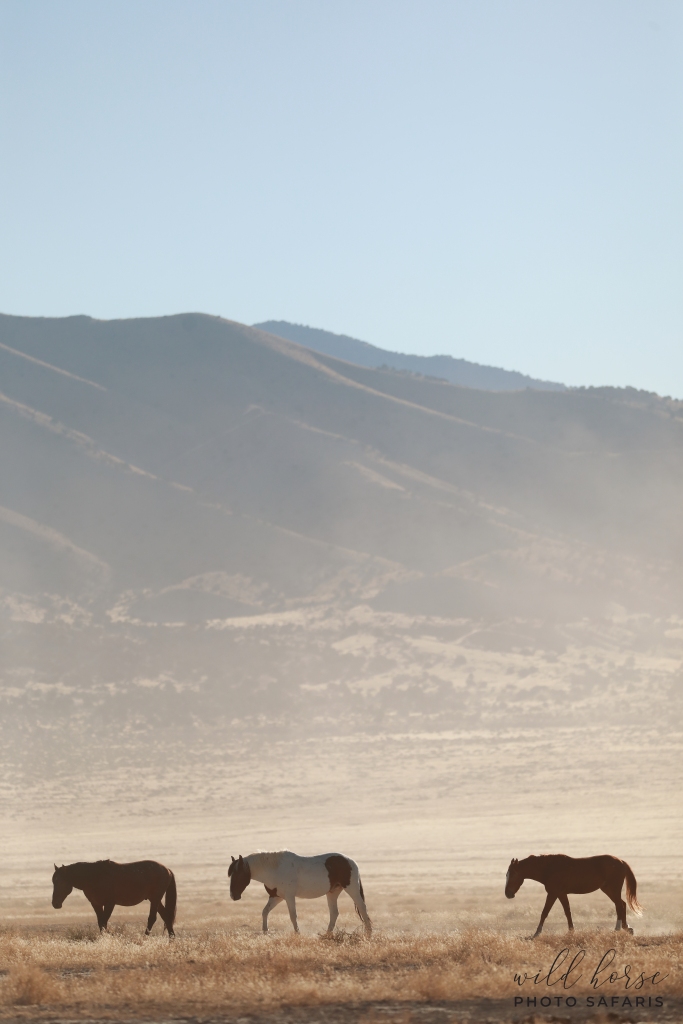
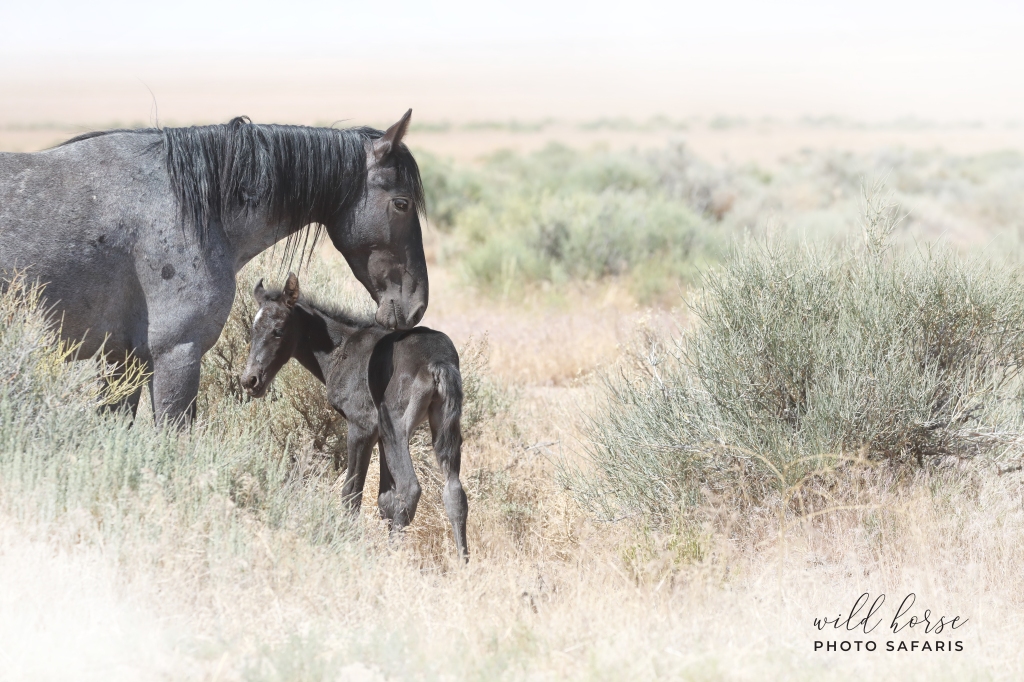
Life on the range can be so beautiful, but definitely is not always easy.
Meet little Serendipity, a tiny new member of the South Onaqui Herd. She was born on the morning of June 21st, 2022 around 7:30am in a field of sage to her first time 3 year old momma Maia who travels in the stunning black stallions known as 300’s band. (The name Maia means mother in Greek and brave or confident in Maori)
I showed up with tour guests who were supposed to come out on Monday evening, but missed their flight to Utah so I rescheduled to very early Wednesday morning instead. Thank goodness it did! We drove through the northern part of the HMA and at a glance didn’t see the herd so we kept going south.
We rounded a bend and saw 300 and Bernard’s bands merged together and racing towards the water hole up on a nearby hill. All of the bachelors were still across the other side of the road in the flats except for Joker, Silver Star and Avalanche who remained stationary where the two bands initially gathered before heading to water. We followed them up to water hole as the bachelors slowly all started following the well worn horse path to cross the road and head up the hill themselves.
Except that they didn’t.
A huge fight broke out and all 10+ bachelor stallions were swirling and fighting with one lone white stud in the middle trying to hold his ground. Amidst the massive cloud of dust all you could make out was a blur of white standing and sparing, dropping down, then fighting someone else, then someone else, then someone else. It went on and on and on. I ran to get my binoculars because a fight of this magnitude was not something I’d ever seen.
Through the binoculars I could make out the white horse fighting the rest was Jasper. Then as the dust settled for the smallest moment I saw what I didn’t want to see – the tiny roan momma Maia with an itsy bitsy newborn foal being sheltered under her head as she tried desperately to protect it in the middle of all of mayhem.
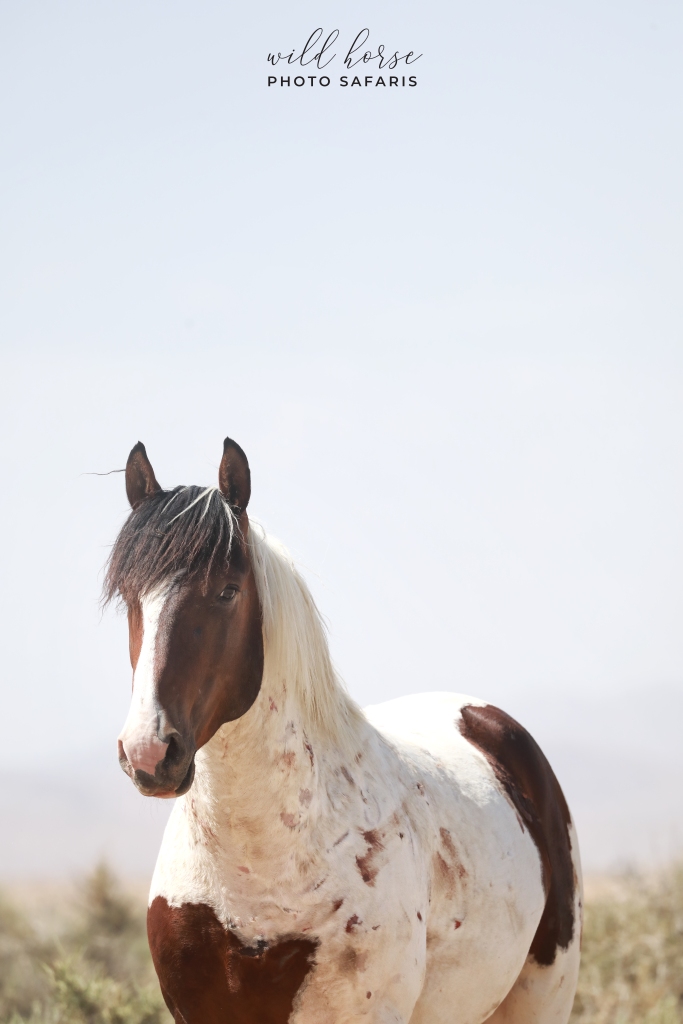
We took off on foot as fast as we could following horse trails through the sage brush down the hill to where the chaos was still going full tilt. It went on longer and harder than I’ve ever seen and hopefully than I ever will again. As we finally got near we seemed to be enough of an incoming diversion for the stallions to break their pattern of attack. Slowly one by one they started to inch away. Only Gage, an enormous blue roan, remained trying to fight Jasper a few more times with Jasper’s faithful bay stallion buddy intervening repeatedly and pushing him off.
Jasper was covered head to toe on both sides with bloody bite marks. The little mare had a few deep bites to her backside and the blood was still fresh on her back legs from giving birth to her little filly. New and wabbly it stood under the protection of it’s mother’s chest. Jasper’s sides were heaving and the bay was circling and guarding the perimeter against any horse that tried to come in closer. He too was bitten and kicked from head to hoof.
We stayed there for several hours sitting on the outskirts trying to give them a human barrier from one side so it was that much less to have to defend. Joker kept coming, but the bay would aggressively chase him off. Jasper continued to guard the mare and foal from only a few feet away. The tiny foal also was bitten several times, but everything was superficial and her eyes and little legs all looked to be unharmed.
I saw a good friend as we were leaving the range and let her know what was happening so she then took over watch duty. She stayed with them the rest of the day to monitor the situation.
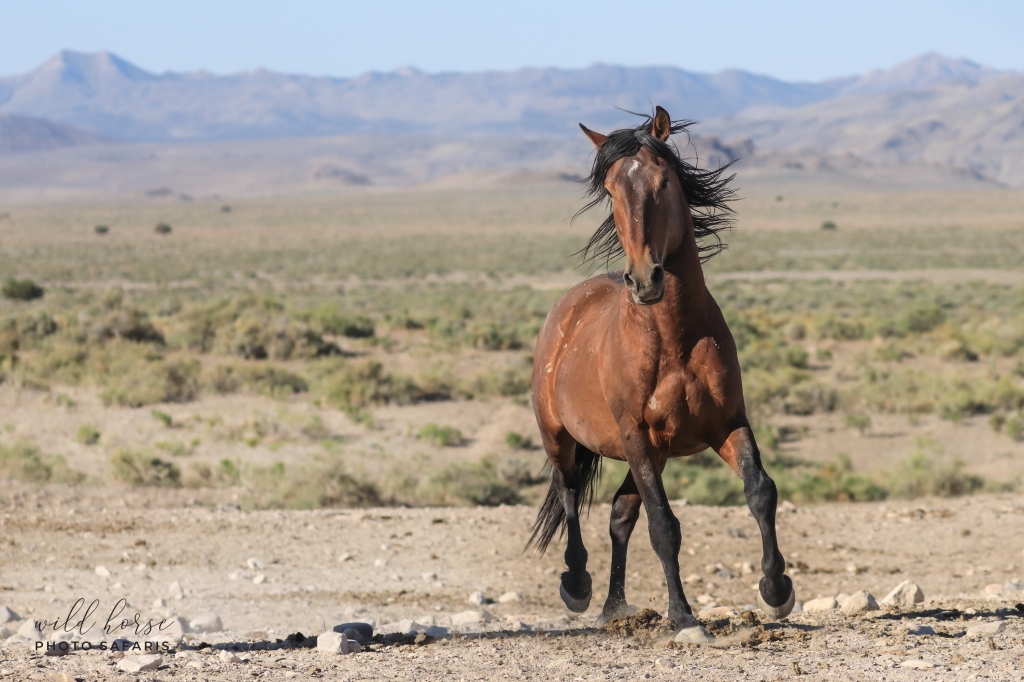
So the new little lady earned the name Serendipity. Because I wasn’t even supposed to be on the range that day, and if the north herd hadn’t been in hiding we wouldn’t have made it south. We wouldn’t have been there to see the second the fighting started, nor been able to try to stand guard along with others.
Jasper and his bay bestie managed to keep Maia and Serendipity safe and protected for three days. Then as I returned to the range early one morning I rounded the corner past the Simpson Springs recreation area to see once again Jasper and the bay swirling circles around Maia as several bachelors were running away. I looked and couldn’t see Serendipity and noticed that Maia stood perfectly still, her head hanging down. The boys sides were heaving again and their heads held high on alert. I watched for quite some time as these behaviors continued. Finally I grabbed the binoculars and tried to walk to a better vantage point and it was devastating to see that little Serendipity had been inadvertently caught in the fight and the injury sustained would have killed her instantly. It was absolutely heartbreaking to say the least.
Only a few days later Maia had returned to her old band with the black stallion 300 and was once again glued to the Blue Eyed Filly’s side who had acted as her protector since their release after the 2021 roundup. Meanwhile Jasper and the bay remained together and retreated off to the outskirts of the rest of the bands to recover and recoup from the fights they had to endure for those three days.
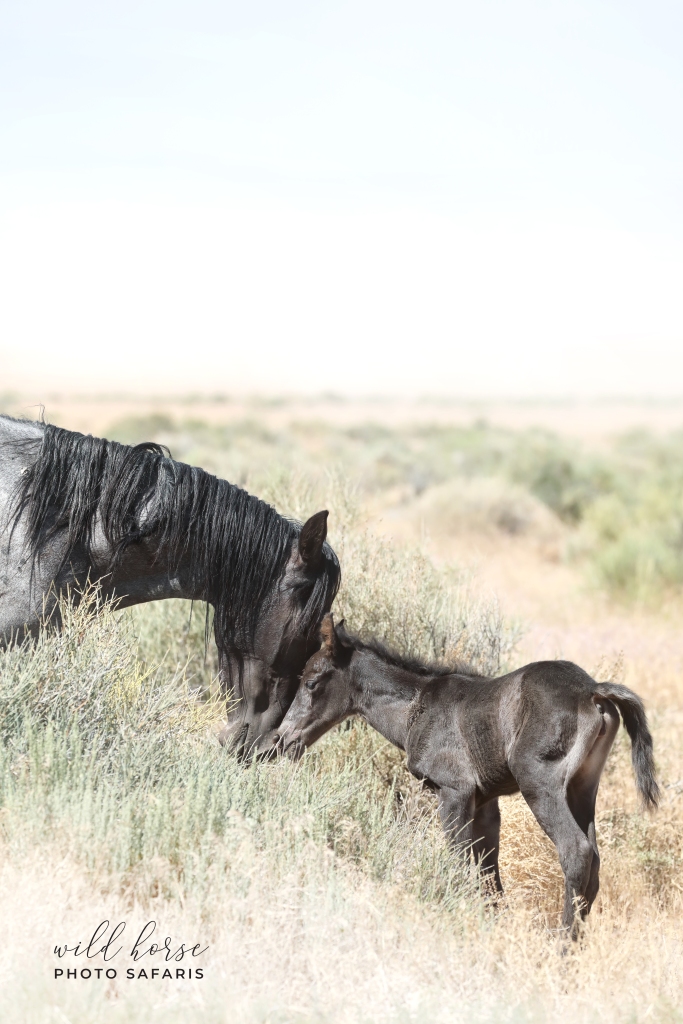
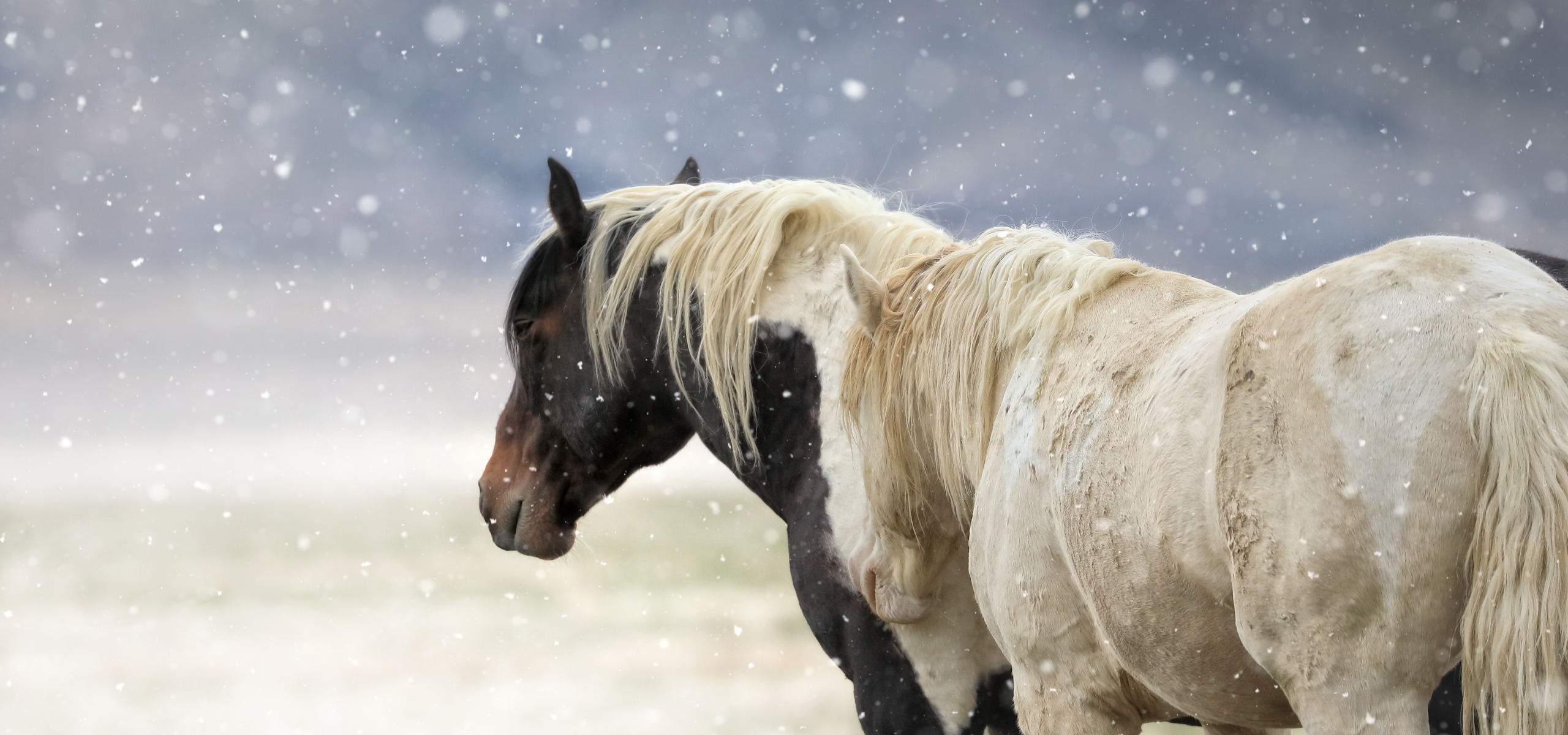
I haven’t taken the time out to document this year all the things that have transpired personally and through my business and non-profit, but this year behind the scenes has been quite the ride.
Wild Horse Photo Safaris and Red Birds Trust 501(c)(3):
On the work side of things, I’m incredibly grateful that I took the chance to start over here in Utah and create a niche business called Wild Horse Photo Safaris that’s both incredibly rewarding and hopefully of long term help to the Onaqui wild horses. I’ve had the pleasure of guiding visitors from 8 different countries and 31 states to meet, photograph and learn about our Onaqui wild horses.
Two clients turned friends have been so moved by their time on the range that they put together incredible art shows with their images of the Onaqui. The goal of these visual presentations was to educate the public (in California and Connecticut) and raise awareness and support for the Onaqui’s fight to remain wild while raising money to donate back towards the betterment of their future on and off the range.
I’ve had several guests who simply came “along for the ride” literally moved to tears out in that desert by watching our wild ones. People who knew nothing about horses or photography but came with someone who did. That’s the depth of the impact and lessons those wild horses have to give.
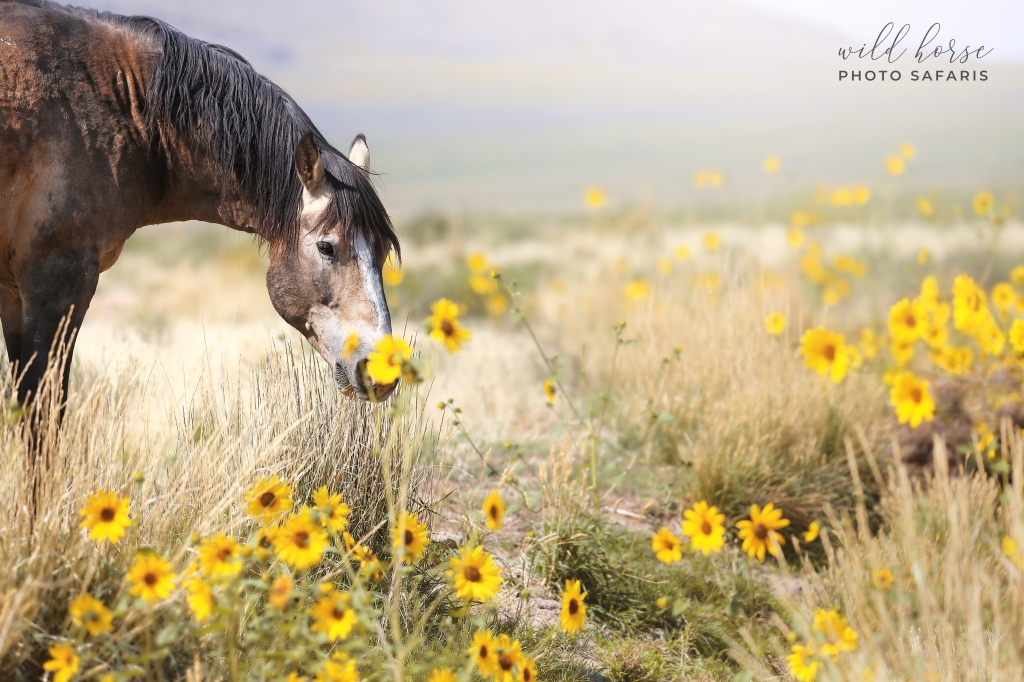
We talk about their behaviors, their families, their challenges and the 312 who lost their freedom in 2021. It’s astonishing to me that 99% of the people who book a tour with me are completely unaware of the mass removal of wild horses going on all across the west. Now they do. And hopefully they tell others, and others tell others and so on.
In addition to tours, I published a Limited Edition book titled “Wild As The Wind – Tales of Love and Life of the Onaqui Wild Mustangs” which features 148 pages of my images and stories from time spent with our wild ones. A percentage of the proceeds went to Red Birds Trust 501c3 and the sales were a great success. I have also been far more active in my print business and selling my work as wall art across the US and beyond. Our Onaqui now adorn so many walls in homes and offices they have no idea how many human fans they really have.
After such a tragic year in 2021 with the loss of 312 Onaqui from the range I made the conscious decision this year to try to focus on the wins.
Spewing hate and negativity all over the internet (or in person for that matter) isn’t really my thing. I have my own (very strong) opinions but my priority is helping horses and life has taught me the hard way that those who speak the loudest aren’t necessarily the ones that are heard the most. And what you see people present themselves to be in an online forum isn’t always an accurate depiction of real life.
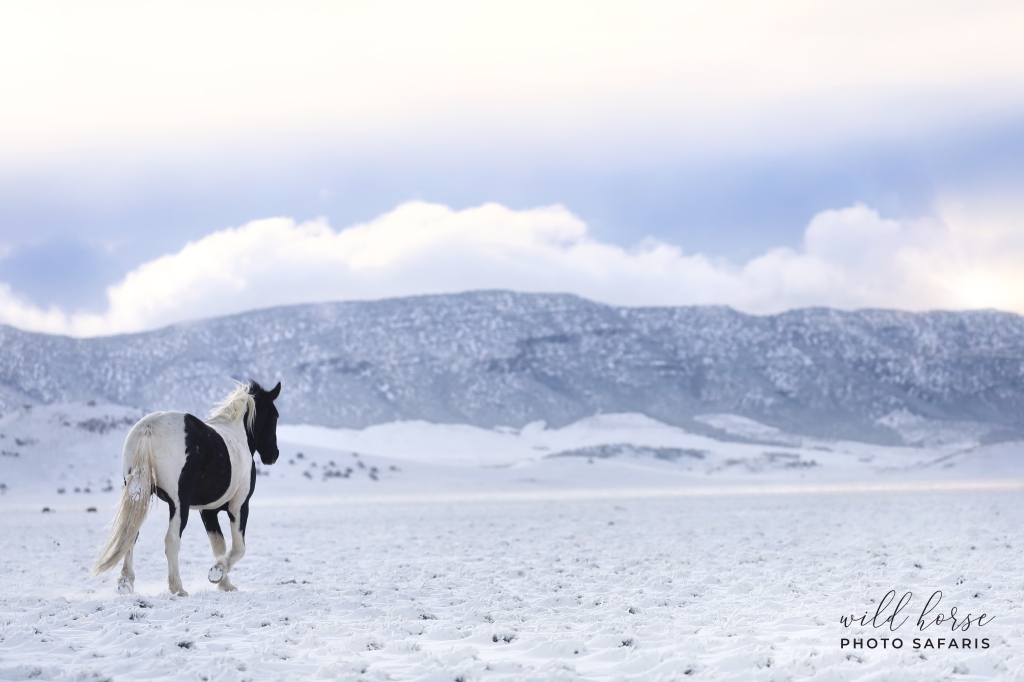
My non-profit, Red Birds Trust 501(c)(3) has had a very busy year. Some of the work we’ve accomplished has been public, a lot has not.
Much thought goes into reasons for doing it both ways. It gets back to the simplicity of what’s best for the horse and being able to help others further down the road.
In a nutshell, we worked in coordination with 9 sanctuaries to rescue/adopt 64 Onaqui wild horses and another 33 individuals to rescue/adopt 53 Onaqui for a total of 117. We were involved in helping an additional 21 Onaqui get to safety after their initial placements fell through for various reasons or they were found in a kill pen.
That’s 138 horses total in 16 months.
Red Birds Trust is a locally based organization. Being locally based was incredibly important to me when founding the 501c3. We are here, on scene, and able to help immediately if a horse is in trouble on the range or otherwise. Of our board members, 6 out of 7 can be on that range in case of emergency in about an hour, assuming we aren’t already out there somewhere. I feel incredibly fortunate to have met such lovely humans that believe in these wild ones and doing whatever we can to help them.
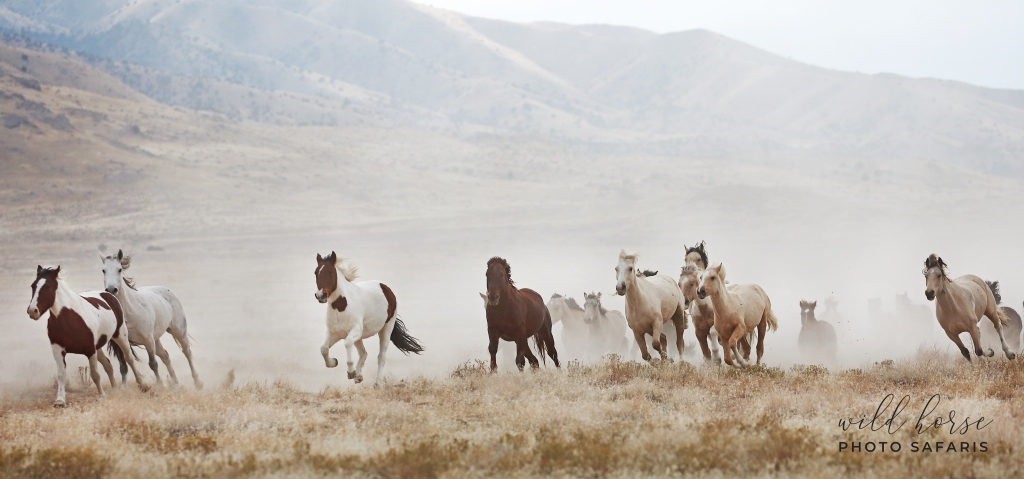
Speaking of lovely humans – we’ve now had 3 successful range cleanup removing many miles of dangerous barbed wire fencing and t-posts from both the north and south Onaqui HMA. To do that we’ve had the help of volunteers from 13 different states all the way from the west coast to the east. All of them making the journey to Utah to try to make a better life for the wild horses and other wildlife who call the Onaqui HMA home. During the cleanups we’ve also been joined by members of 6 other local and national nonprofits.
Because of our close proximity to the range we are available and willing to help if a range emergency or serious concern arises. The first call should always be to the local BLM Wild Horse and Burro Specialist, but if you can’t get an answer, please jot down the numbers below as we are ready to hop in the car and make the drive to the desert in addition to making calls ourselves for assistance while being on scene to monitor the situation.
You can message us on Facebook, email us at: redbirdstrust@hotmail.com or if time is of the essence text to the numbers below.
- Tooele County Sheriff: (435) 882-5600
- Bureau of Land Management Wild Horse & Burrow Specialist: (801) 419-4552
- Red Birds Trust: (808) 214-6252 or (801) 824-7661
(both cell phones so we can receive texts with photos/videos)
On a personal note:
And then there are the additions to my own fur family. October 20th marked the 1 year anniversary of my little Swasey mare Cheyenne Grace’s arrival to her forever home and on January 4th she met her new brothers Teton and Dreamcatcher for the first time.
My two dogs got to meet horses for the first time and the mastiff loves them, the Frenchie not so much. The horses to my surprise adored the dogs the second they met them.
All three mustangs learn differently but try very hard. In only a year they lead, load, stand for the farrier (even if it’s grudgingly), do various liberty work and obstacle courses and Teton and Dreamcatcher both take a saddle without a care in the world. Cheyenne allows a saddle pad and says I should be grateful for that much. Teton is also a gem about having his mom IN his saddle too and we look forward to getting him ponied up out on some trails come spring so he can walk and explore and get his handsome mustang figure back (someone might have put on the freshman 15 upon getting home and living a life of luxury with easy access to food).
I thought it fitting this photo above of Cheyenne go with this post. She just looks so happy. If you look close enough you can see the little circle in her hair about an inch behind her mouth. There are matching marks on both sides and they aren’t dimples. Those are scars from a rope halter that was so tight on her face before I got her that it actually left scars. Her little hooves were in terrible condition, you could feel her ribs, hips and spine and her mane was half chewed off. The only good thing the guy who had her before me ever did was to dump her a year later at the BLM facility where I found her.
Despite her rough beginning, this little mare has tried as hard as she could to trust. She still has triggers and I expect she always will, but she now LOVES to investigate new things, meet new people, go for walks, play with toys, run full speed and eat. The boys have known nothing besides me – in the wild, in the BLM facility and then finally at home – but Cheyenne Grace really went through it so every time she lets go a little more it just makes everything right with the world.
Here’s to hoping that 2023 brings less scrambling to have to rescue Onaqui horses and more stories of new lives, loves and happiness to be found on the range and beyond for them. I’m so excited to be welcoming new faces and old friends alike out on tour in the West Desert to feed the soul and learn the lessons the wild ones have to teach us.
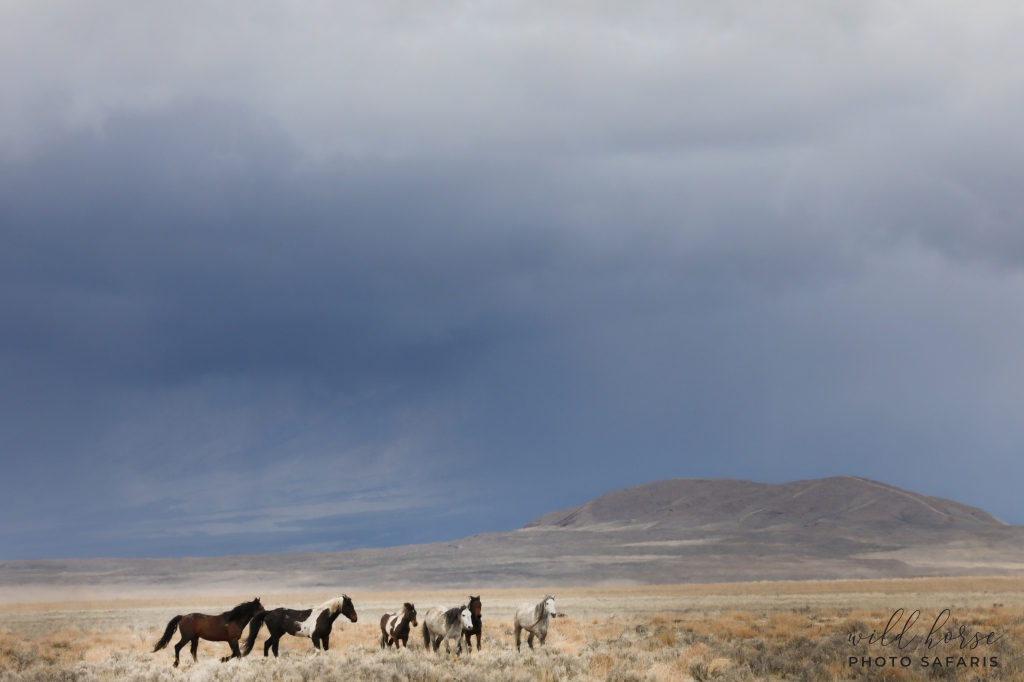
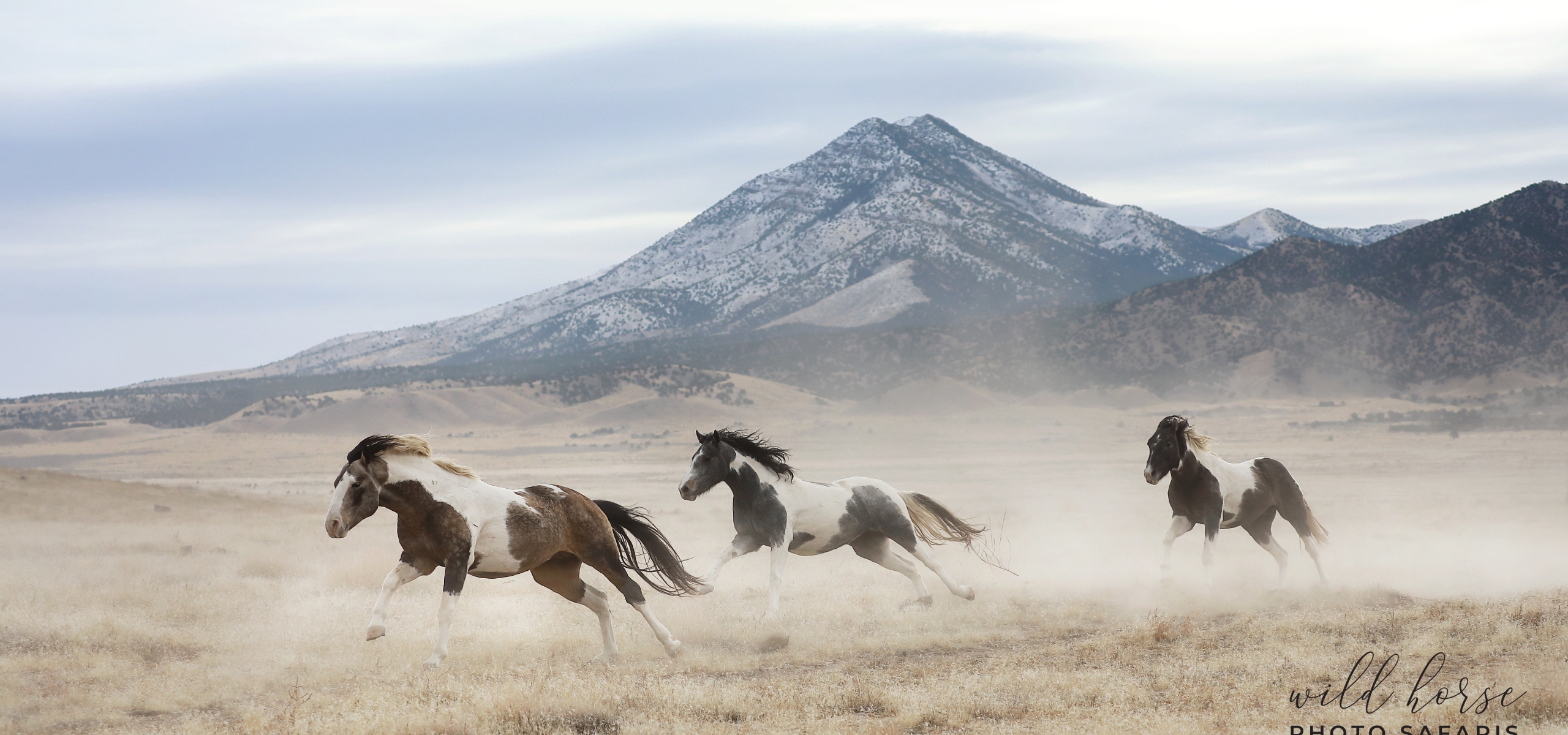
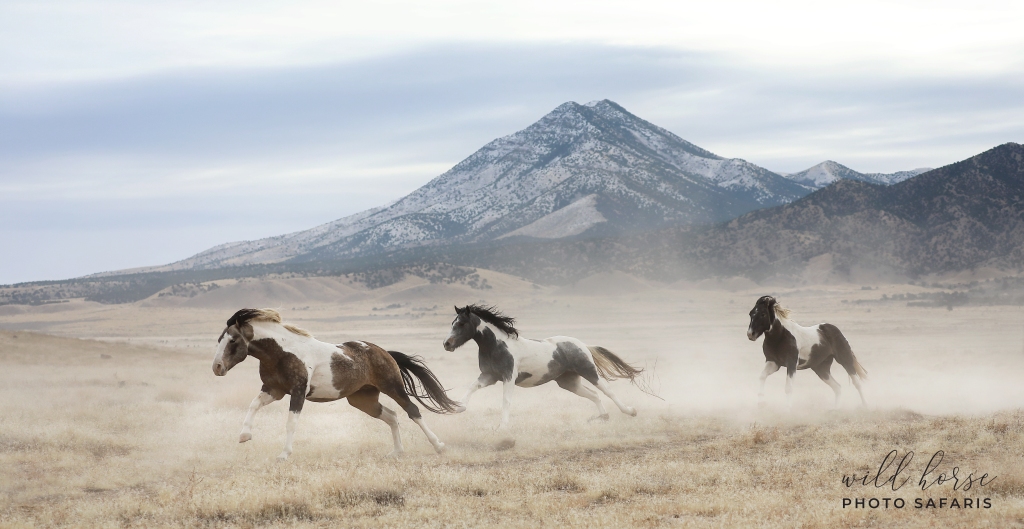
I think as a wildlife or landscape photographer most of us get asked this all the time. Clients see the price of an image displayed in an art gallery, or on a website pricelist and may wonder how and why the prices are set. If it seems “too low” then typically it’s deemed not to be of good quality or value. If it’s “too high” then various misunderstandings may occur on why so much. I’m the first to admit I’ve seen my fair share of images that I think are underpriced and also those that, even knowing what I do, seem to be exorbitantly priced to an unreasonable level even to someone in the profession.
I’ve seen great write-ups in the past that help the general public to understand how the art of professional photography works and what factors go into trying to price our products or services. I haven’t personally written about it in depth, but I figured it might be about that time.
So here are some of the key factors that go into determining pricing and hopefully it’ll give a better understanding to folks who see that piece of art that they absolutely LOVE, but are trying to justify if the cost is “reasonable” to understand all of what the photographer/artist put into creating it.
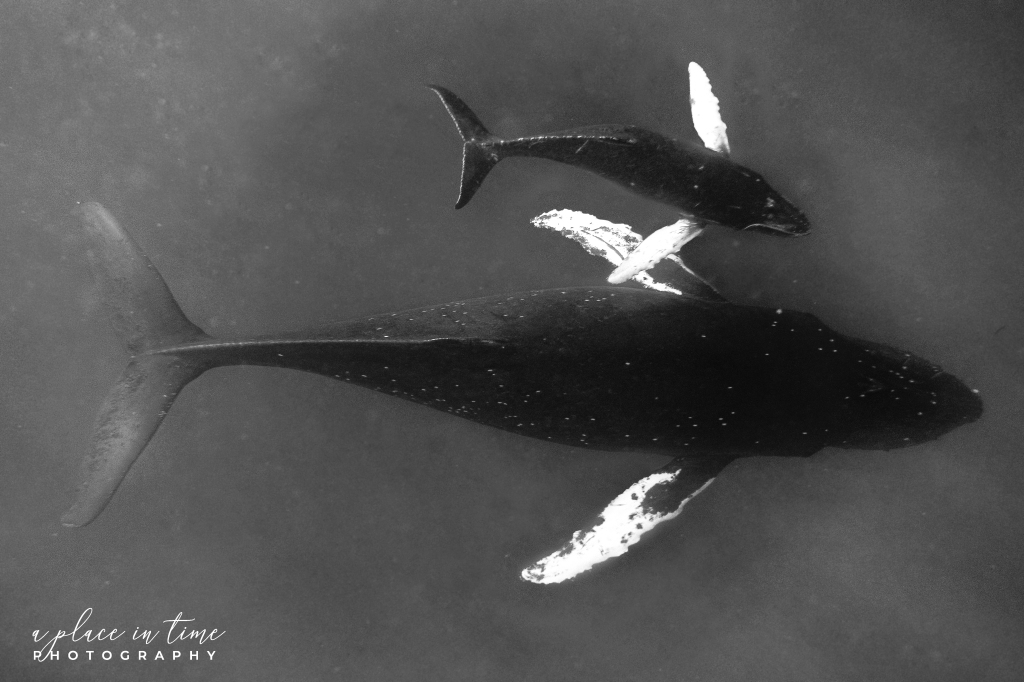
Gear
If you’ve ever priced out professional level camera gear you know it’s expensive. If you haven’t let me assure you – it’s expensive.
When you reach the point of choosing photography as your profession you’re looking at a bare minimum of $10,000 to get a camera body and a lens. Maybe two lenses if you’re really lucky. If you want a fixed length lens to shoot wildlife and really look like you’re up-close and personal without putting yourself in a compromising position add another $8,000.
Now you have your fancy camera you need to re-evaluate your computer’s operating system to see if it can even handle the large file size that your camera is going to produce. If not, add a new computer to the “must have” list. Then add the cost of purchasing editing software, tripod(s), light meters, travel case(s) and more.
So all in all now you’re probably around $15,000 to $20,000 get you where you need to be to operate professionally. Plus, since you’ve basically mortgaged your firstborn to pay for a picture-making machine, add on the cost of insurance to cover any mishaps with your camera baby (which happen to all of us at some point or the other) and the cost of rental equipment to cover you while said camera baby is in the camera baby repair shop for an undetermined amount of time.
Moving forward – you’ve now invested what could be a small down payment on a house instead on a camera, let’s talk about transportation. Because you can’t take pictures if you can’t get to anything.
Depending on where you live you may or may not be able to get to your desired location in a normal vehicle. In my case I need a 4×4 with high clearance and 10ply off road tires. Because of the terrain my tires last about a year and a half on average. My “west desert mobile” is amazing and I love her dearly, but the rough roads and the excessive dust day in and day out takes a toll. In the last 3 months I’ve had to drop over $4,000 into maintenance because of the bad conditions out there. And I’m actually very nice to my vehicle all things considered.
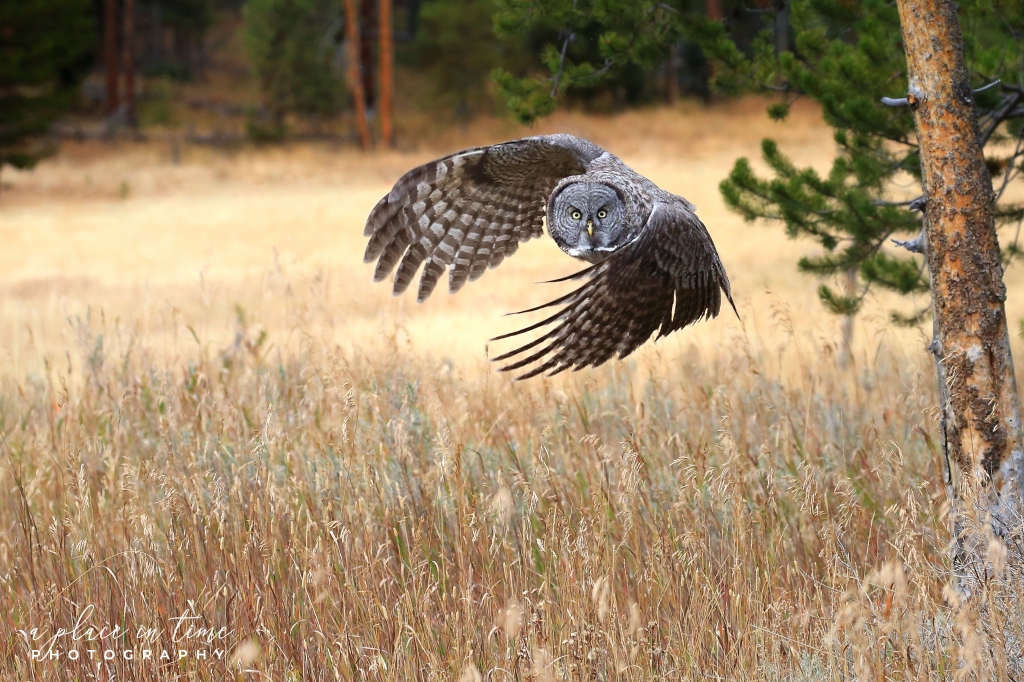
Travel Costs
Once you have your gear and your car then of course you have to factor in travel costs to get to/from wherever you’re going to shoot. And 99% of the time it’s not one trip to be able to take “that” special shot, it’s multiple. With the price of gas going higher and higher it definitely doesn’t make it any more affordable to get out and about. For an example an average trip to the desert to see the mustangs runs $80 in gas for me and I live close. For every 4-5 trips I make I put out 3-4 images.
I’m super grateful at this point to be able to photograph something I love so close to my backyard, but for years I’ve had to travel a long ways to almost everything I’ve shot – brown bears, grizzly bears, gorillas, lions, black bears, orca, chimpanzee, elephants and probably quite a few critters I’m forgetting as well as scenic areas. It wasn’t uncommon to spend anywhere from $2,500 to $4,000 in airfare just to get from point A to point B. Then there’s additional costs for lodging, food, ground transportation, guide services, etc. All to try to take some pretty pictures.
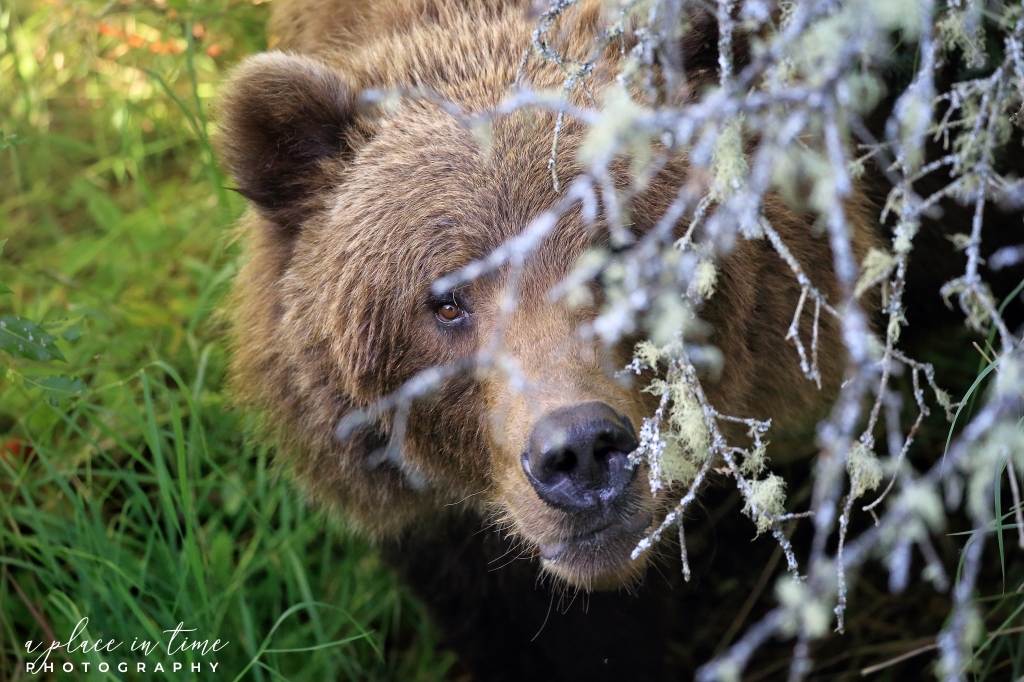
Time/Education
Well, we have conquered the “wrap your mind around the cost of a camera” and “omg it costs WHAT for a plane ticket” so here we are, in said place to try to take a photo of said thing. Great. All problems solved.
Except they’re not. Because as much as we’d like them to, cameras don’t actually know how to take a photo on their own. (Even in auto mode) There’s a myth going around about this so I figured I’d just seize the moment to confirm, no, it’s actually not true.
I’ve seen plenty of people with the best equipment money can buy take a whole heap of photos that make you stop and scratch your head. I’m sure I’ve taken more than a few of my own. Some photographers go to school to learn all the ins and outs and many others are self-taught. All of it takes time.
Time = money. Either you’re paying to go to school or your taking time away from something that is paying you to instead run around in the woods (or water) practicing how to use this tiny little box (camera) with a tube (lens) on the front to create something wall-worthy or at the least pat myself on the back-worthy.
After you’ve sorted out how to use your equipment there’s the outstanding issue of learning about your subject. With wildlife it’s never guaranteed where they’ll be or when so just finding them to begin with is its own gift, but after that you need to be able to interpret behavior, anticipate patterns, understand influences of weather on animal location/movement/behavior and THEN you have to try to position yourself in the right place at the right time to be able to compose the image you’ve now created in your mind.
When it comes to getting in position, this includes understanding road conditions, knowing how to find and when to take a backroad, what weather patterns may be developing which could cause issues getting in/out of desired location, the time it may take to reach desired location on foot and risk factors that may or may not be involved with that.
Lastly, cross all your fingers the wild animals are in a mood to cooperate. They tend to think it’s hilarious to stand beautifully in epic scenery with the sun RIGHT behind them so your eyeballs are burning trying to see and the camera has absolutely no idea what is happening. I swear sometimes they do it on purpose. (sigh)
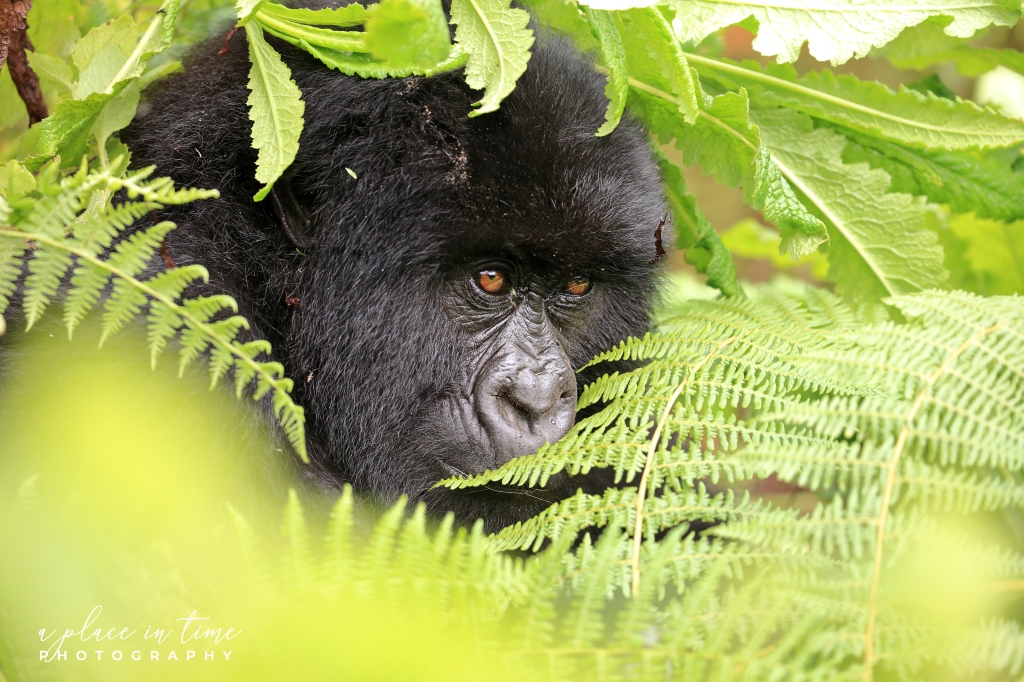
Editing Time
On an average day in the field I usually take around 800 images. On a very good day it’s a little over 2,000. All of those photos I look through one by one when I get back to the office. Some I already know immediately are winners, but others take time to sift through to narrow it down to the very best.
Once you’ve selected an image as “the one” it’s time to begin the post production work. I think it’s fair to say that to create one really pristine image is atleast one hour of editing time. Often it’s more as you return to it to go over the tiny details again and again.
Photographers have their preference on editing in Lightroom or Photoshop. I use both but I mainly use Photoshop because I hand edit everything rather than batch edit (meaning edit several images exactly the same). Within Photoshop I also have several additional programs which can be used concurrently to do other very specific adjustments to each individual image. All of these programs take time to learn and have regular updates and new features added. No matter how easy it may look on social media please let me assure you that in fact no, you cannot simply make a quick swipe over an image in some fancy program and make all the unwanted things disappear.
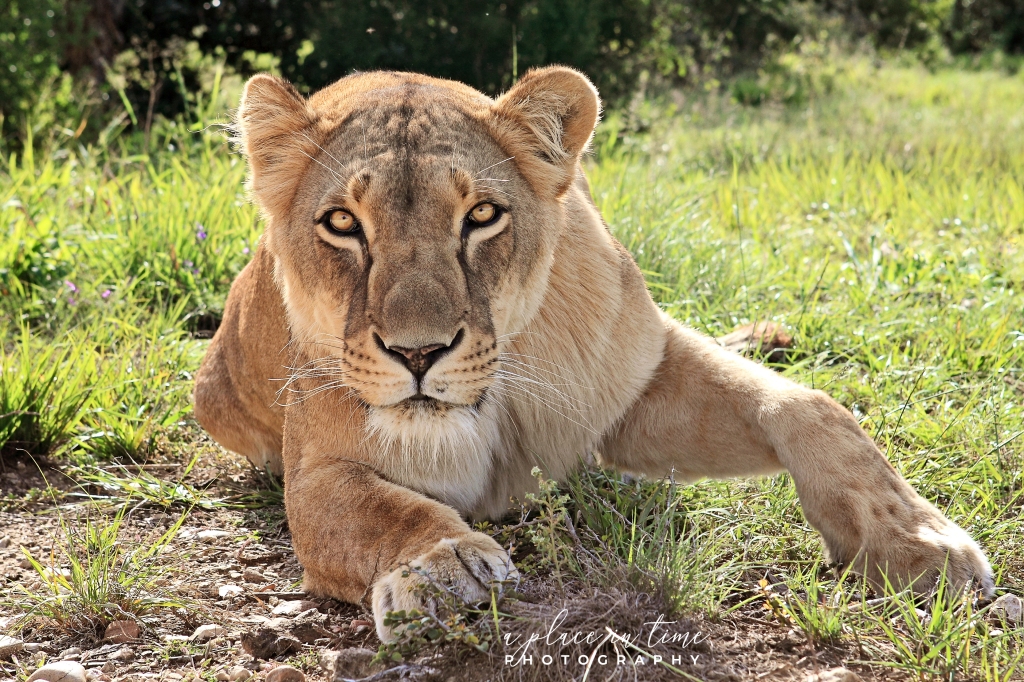
Overhead Costs
Overhead costs for every photographer just like every other business can vary greatly. Some have lease costs for gallery or office spaces, others don’t. Some have purchased their own printers (add in another $30k to equipment costs for a good one) and others use professional print shops to produce their work. Whether you’re producing your own product or having a professional company produce it there are always costs for each product created plus shipping and handling plus state taxes and surcharges.
To get a quality product that’s going to hold its color and consistency over the long haul you have to pay a quality product price. Sure you can order products for cheap from box stores, but it’s like trying to compare McDonalds to a five star restaurant – sort of the same item, very much not the same quality.
If you find a photographer’s work in a gallery that they don’t personally own please know that the gallery is taking anywhere from 40%-60% off the sales price as their own profit. The artist bears the costs of production of the item themselves and then gets the remainder of the sales price after the gallery takes their percentage. Unless the photographer is producing and selling in mass in several different locations the amount of money made off these type of consignment arrangements is not a lot.
Professional Photographers also bear the costs of advertising in order to market their work to the appropriate demographic of clients who might be interested. This usually includes designing/maintaining a website, running ads on social media, print marketing, farmers market type set-ups, ad agencies, magazines, travel companies, etc.
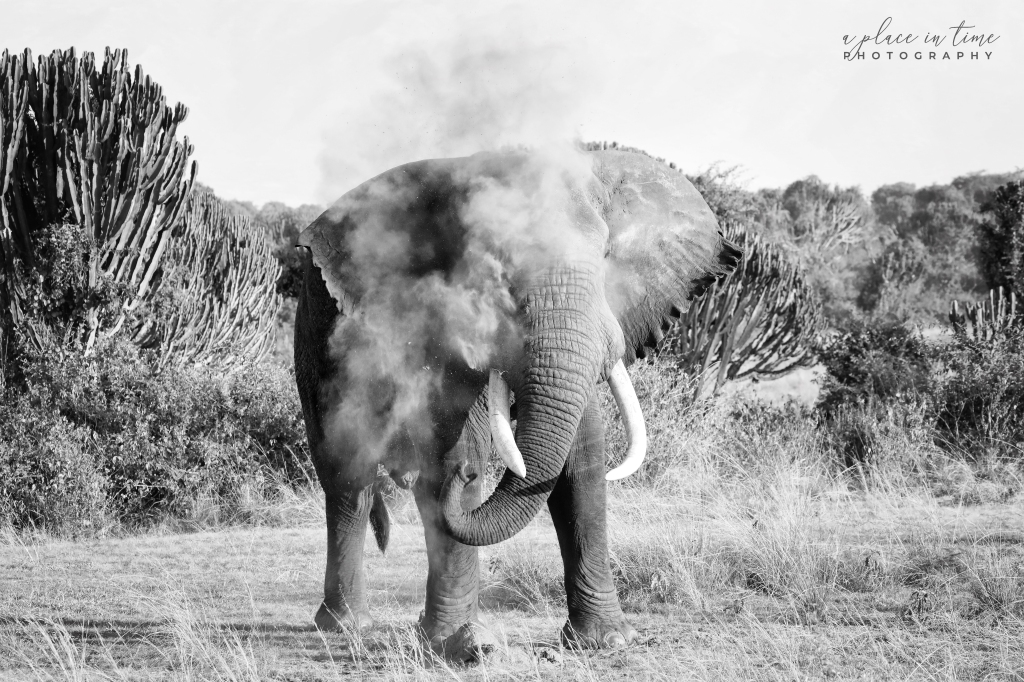
Open Edition or Limited Edition
Photographers and artists alike usually offer two types of products: Open Edition and Limited Edition.
Open Edition means that there is no limit to the production numbers of this particular image. It can be and will be printed for an unlimited amount of time in an unlimited number of sizes and formats. The cost of an open edition print is always lower than a Limited Edition.
A Limited Edition means just that. Only a set number of prints will be produced and once they’re sold there will be no more available from the artist. The cost is higher because the profit margin to the creator is limited, but the value to the investor can also be higher because there is a limit to the number available and the concept is that these Limited Editions create a unique collector’s item.
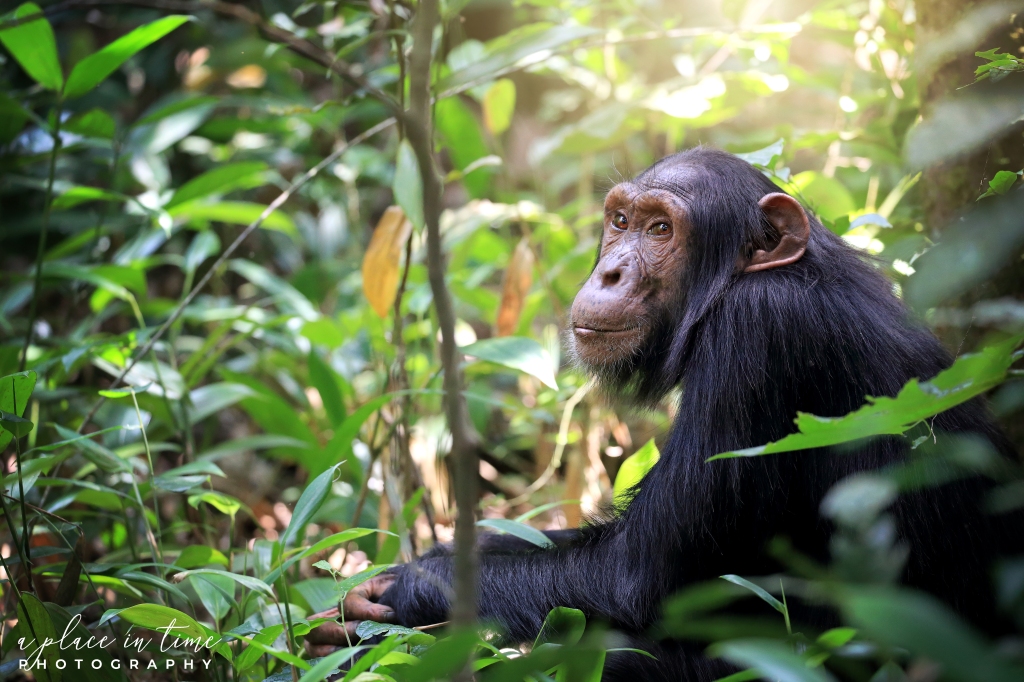
Summary
Just like anything else, different people find value in different things. Sometimes you see that image or artistic creation that just speaks to you. That’s what we all, as artists, are trying to achieve. Capturing or creating a piece that really demands viewers’ attention and draws them in.
To get from point A (wanting to) to point B (actually doing so) takes a lot of blood, sweat, tears and ongoing financial investment. So to be able to keep doing what we’re doing and sharing aesthetically pleasing and emotionally gripping images we need to be able to have it make financial sense as you would with any other profession.
Hence how photography price lists are born.
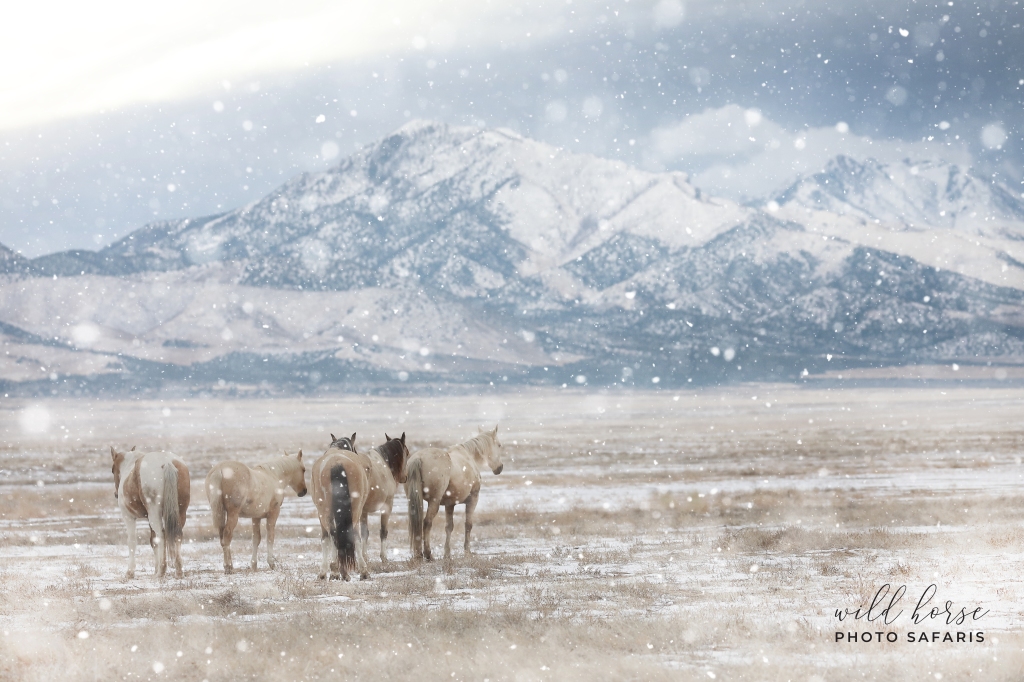
With much speculation and anticipation of new images to emerge of the beloved Onaqui Old Man Gandalf, I wanted to put out some documented facts that give details as to his whereabouts and life over the past year.
The good news is that there is zero evidence to prove that he is deceased. Although folks have explored during the winter, spring and summer months various areas of the range he has not been found. That includes no evidence of his passing.
The winter of 2020/2021 was extremely mild. There were very small patches of snow on Davis Mountain which allowed the horses to bunch closely together to eat the snow for moisture, but mostly they watered at well-fed holes that were turned on by the ranchers to water the cattle which graze through that area November 15th through May 15th. It never ceases to amaze me how the horses seem to know when a new trough has been turned on. Off they go, traveling miles from point A to point B to drink and socialize at holes which otherwise run dry in the summer months.
During the winter of 2021 I was on the range on average 4 to 5 days a week. Sometimes north, but a lot of times down south far, far out into the desert where I’d sit all day with the south herd before walking the mile or so back out to my car. Hence why the south horses will always hold such a special place in my heart whether on the range or now after the roundup in captivity.
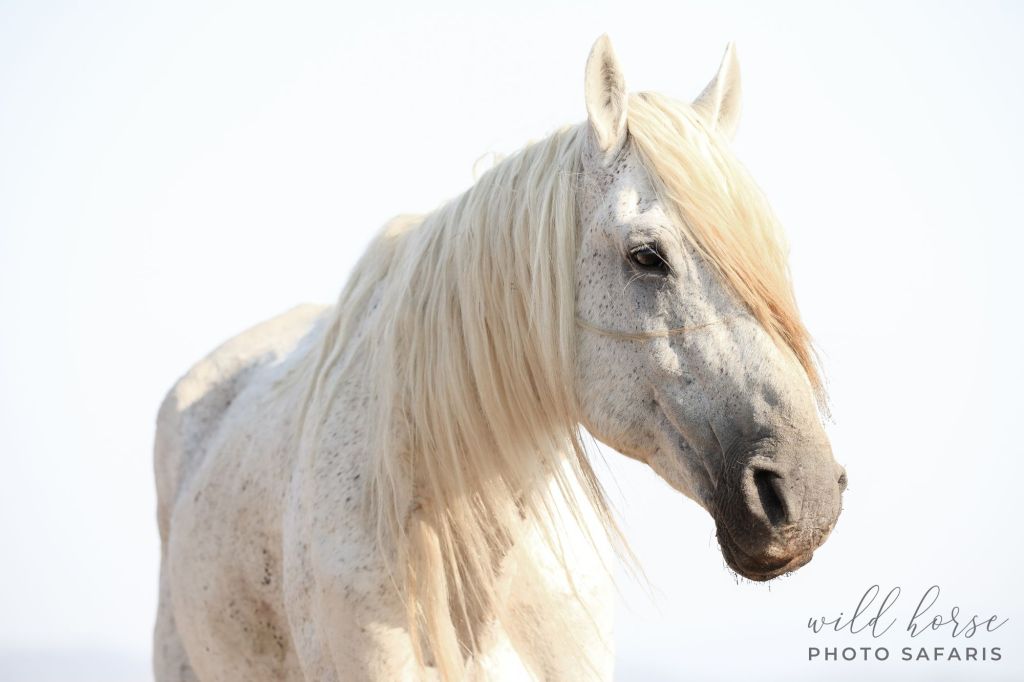
In addition to very minimal snowfall in 2021, there was also no rain worth noting. This meant the streams and pools which exist in the Simpson Mountains, only accessible on horseback, were likely minimal to nonexistent all winter making the animals adjust and move their patterns accordingly.
During the winter of 2021 I spent time with and photographed Gandalf on the following days:
1/18/21
2/21/21
3/4/21
3/11/21
All of these days he was very high up on Davis Mountain, by himself, and was usually near a very small patch of snow where he had both access to food (grasses) and water (snow) with very little, if any, movement.
From March to June there were no sightings. Then he magically decided to reappear on June 28th, 2021 on the valley floor and again on July 2nd, 2021 he moved from the valley floor up high on Davis Mountain only to cross through a ravine and emerge on the other side.
On July 13th, 2021 only two days before the helicopters took to the skies to begin the roundup, he sat up on the ledges of the Simpson Mountains overlooking the valley, military base and Simpson Buttes. The wind was howling and the clouds were moving in rapidly from the south as a storm approached. I sat with him for the better part of 90 minutes up in the mountains just talking to him, shooting a cell phone video or two and taking his photo because he looked so very regal up on that hill with the wind whipping through his long mane and tail.
The helicopters came and subsequently over 400 Onaqui disappeared from the range. Gandalf along with his very old friends Buck and Amigo remained safe, but hidden. On August 9th 123 Onaqui were released on the most northern tip of the HMA known locally as “the burn area.” In the month prior to the release the desert experienced relentless rain and flooding which sent all of the plants far and wide into a massive time of growth and bloom. The entire north section of the range was almost an iridescent green. Sunflowers lined the roads and burst out in patches on Davis Mountain. Tall bushes with large purple flowers also flourished both in the north and south attracting a plethora of hummingbirds which feed on their nectar.
In addition to budding grasses, many natural watering holes also quickly filled to the brim and the horses were more than happy to use this opportunity to drink, play and roll.
Only 4 days after the August 9th release Gandalf once again reappeared. This time many miles from his last sighting high up on Simpson Mountain. He had come to greet his friends in the north who once again had found their freedom.
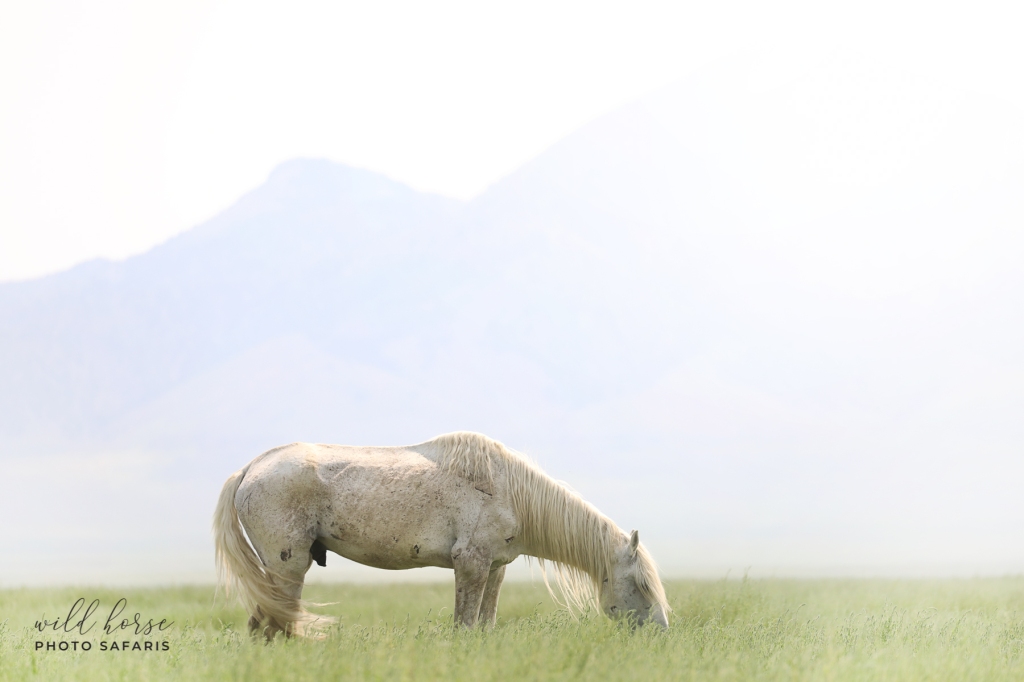
On August 13th, 14th, 15th, 17th, 28th and 30th of 2021 Gandalf called the Burn Area home. A couple of weeks after the main release one lone pinto mare named Aiyana was also released by herself into the burn area where the north herd waited. From accounts on scene at the time, she left the truck and ran through the main herd up to where Gandalf stood – she’d made her choice clear. Aiyana is a little old lady herself and there is no question that they have known each other before even if she has spent the last several years in the south HMA with band stallion Rambo.
Gandalf and Aiyana stayed together for several days until a fight occurred and he lost her to a younger, stronger bay stallion. During their time together there were four successful breedings witnessed between the two.
Even after losing Aiyana, Gandalf chose to remain with the herd, watering sometimes at a now full pond in the north, but more often simply from small puddles on the ground which required less travel. I watched him rolling gleefully on the ground on numerous occasions and he was spending time with Amigo per usual and also spent a couple days being looked after and guarded by bachelor stallion Rudy.
The last time I saw him in 2021 it was in mid-September and he was moving around slowly, but just fine. We all move slower as we age that’s for sure. His body condition looked much better than it did in 2020 and he had once again moved off by himself for some peace and quiet.
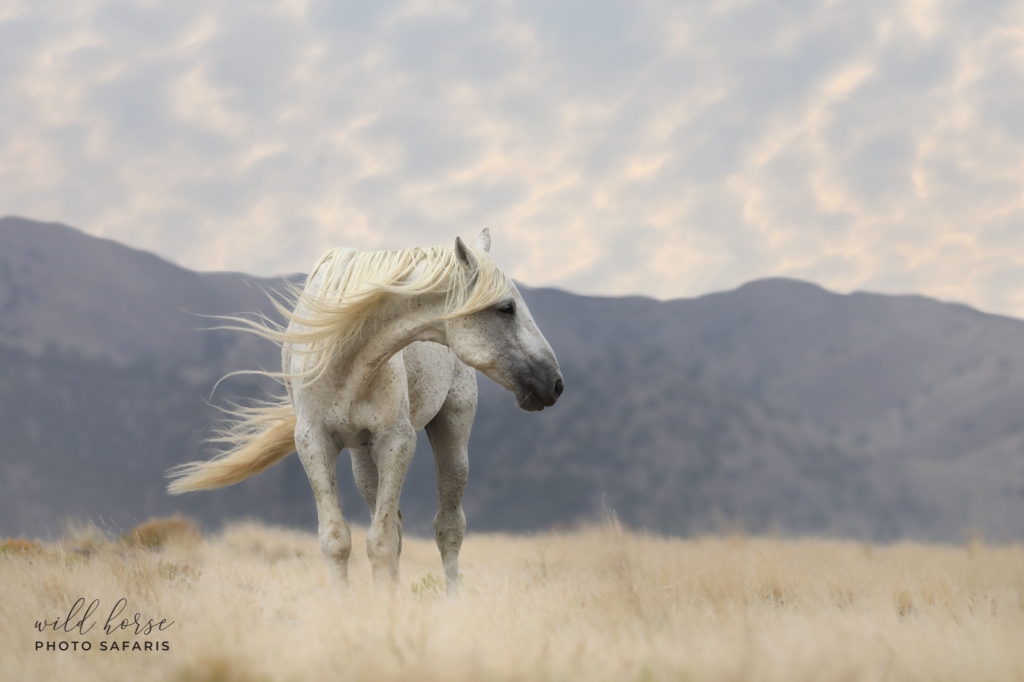
Then came the winter of 2021/2022. This winter we had considerably more snow and rain than the prior year. As late as April 13th, 2022 a snowstorm blew in that completely covered the range as far as the eye could see in a blanket of white. We have been getting consistent rain and now thunderstorms are the norm as the evenings approach. Because of all the snow and rainfall the bunch grass is abundant compared to the prior year – especially higher on the hills. This means that both food and water would be available with ease of access up in the mountains without a need to come out in the open to year-round water sources like in past years.
On Friday, March 25, 2022 I left town at 2:15pm for the range with a client. We reached the north HMA at around 3:15pm and headed south. As we neared a year-round watering source for the north horses known as the sheep trough I looked to my right and saw Buck and Amigo coming slowly down Davis mountain. They followed horse trails used so often it looks like carvings into the side of the hill itself. They crossed the road and followed along on their way to get a drink. Both are much older, Amigo moves very slowly due to leg and hoof injuries and both have been known associates with Gandalf for years. We sat on the ground watching them and my client took some photos. After several minutes I turned and looked back at Davis mountain where I saw up at the top, near the paths leading down to water a solid white horse standing there watching them. I didn’t have a camera on me, and had no pressing need to take a photo that far away as I assumed he would follow the same path as they did and come down to water. Instead he stayed high up on the hill and I watched for a few minutes as he lowered his head and grazed. Then very slowly he began moving south, toward the path down the hill and he wandered over the back of the slope where he was no longer in sight.
I backtracked when he didn’t emerge and took another two track which has a bit of a view of that general area. It is about 3/4 mile away if you walk and there are dips in the ground preventing a clear view of the entire side of the hill. Meaning you have to hike in to really see that area fully. Since time was limited until sunset we left and went south to find the south herd instead of hiking in and back out again. The rest of the north herd was back behind the mountain in an area inaccessible by vehicle where they like to feed especially during the spring months. Therefore, there wasn’t another solid white horse that would have been separated from the herd traveling with Buck and Amigo.
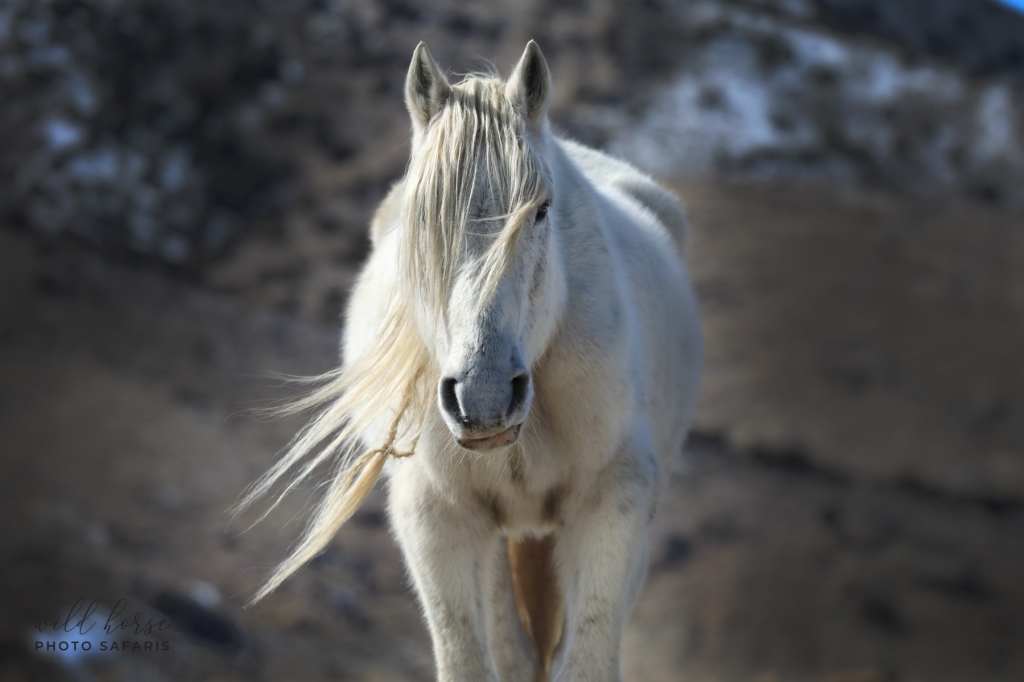
Fast forward to June 13, 2022. I was on a sunrise to sunset tour with a client. We had spent several hours in the south HMA with that herd as intermittent rain coated the desert. Then we decided to go back north for the afternoon. The rain had slowed considerably and there were very low hanging clouds over the Simpson Mountains backing for an epic backdrop. The north herd was all the way up a two track at the base of the mountain in the trees and sage. They were covered in dirt from rolling and were grazing contently.
We spent around 5 hours here with the north herd. Photographing, observing and telling their stories. The sky to west became so dark it almost looked like night. The horses started slowly moving higher towards the mountain as if that was possible. I had put my camera in the car previously and was just enjoying sitting and watching the herd. As the weather started to change I turned and looked behind us towards Ericksen’s Pass and saw a tiny pure white horse standing there. I borrowed my clients camera and zoomed in to verify – sure enough it was a solid white horse that had just come out of the mountain about a mile from the herd.
I told her not to take her eyes off that horse and I ran to the car to get my binoculars. To get to the car and back took about 15 minutes because we’d hiked a ways in. By the time I got back the horse had gone down a tad into a ravine that’s in that area. My client had watched the horse ever so slowly walking along passing in front and behind sage bushes before she too lost sight right as I got back. I started hiking over that way with my binoculars and camera and only got about 100 yards before the sky literally split open and rain was dumping in buckets. We had to run all the way back to the car and start our way down the hill before the roads became so muddy it was hazardous to get out. It ended up raining non-stop the rest of the evening so we headed back to town to recap and dry off.
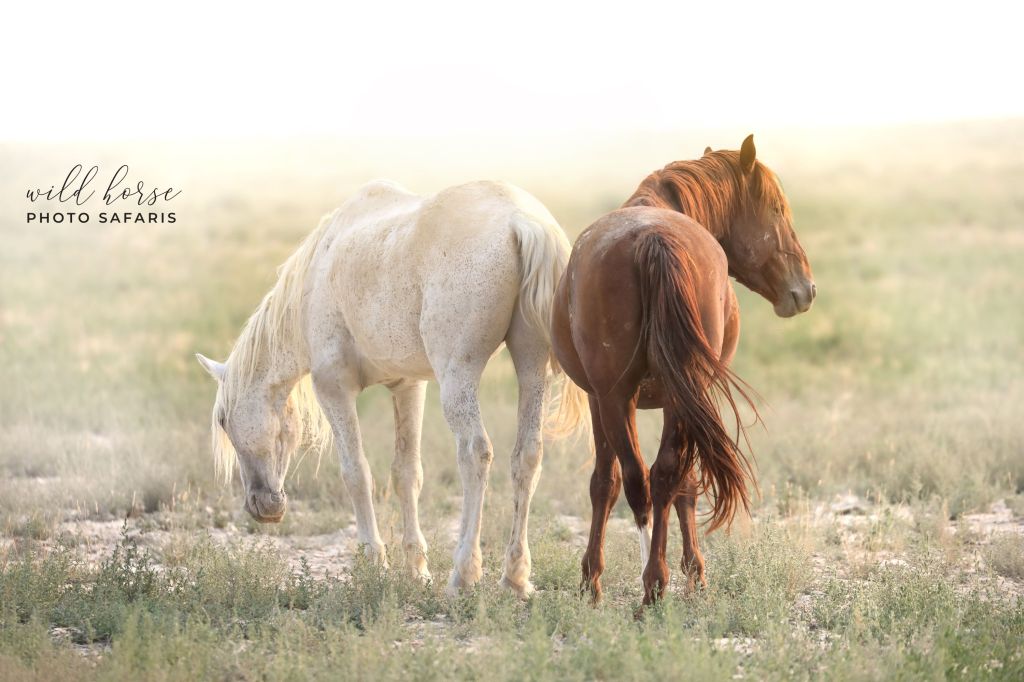
For those unfamiliar with the wild horses, for a stallion to not be seen for a length of time is actually not uncommon. Norman disappeared for a couple years, One Ear disappeared for a couple years, Goliath disappeared for a couple years. Those horses know those mountains better than we ever will which quite frankly thrills me to no end. Amigo is alive and well and in his upper twenties for example and as much as I’m out there I usually only see him once or twice a year. But he’s there. Just being a wild horse and sticking to himself.
Gandalf looked far better going into the winter of 2022 than he did the winter of 2021. There was significantly more rain and snowfall and subsequently more forage to be found. He has shown that he can travel several miles from Davis Mountain to the Simpson Mountains and from the Simpson Mountains all the way to the burn area. So he is mobile, he just does it at his own pace.
When I last saw him up close in September he still looked good physically, his feet were in good shape, he showed no sign of injury to his joints and was able to lie down, roll and rise. I was even kind of surprised to see that.
Both in March and in June the entire north herd was accounted for. There were no other “white” horses that travel by themselves that are known to be in this area. Unless there is a solid “white” horse in the east no one has ever seen, which I suppose is possible, there’s no one else that would have been emerging out of the mountains in June as the storm set in.
Hopefully these details will help people to feel a bit better about the situation. Could he have passed? Of course. However, there has been zero evidence found to prove this despite hikes and explorations among the mountains. Does he know those mountains maybe better than most the horses out there? Yes. Does he like to spend long periods away from the herd? Yes. Has there been plenty of water and food to sustain a single horse for months on end? Yes.
I hope that everyone can continue to share memories and admiration for this amazing soul instead of counting him out before the game is over. I’m personally looking forward to the day he may decide to emerge from his hiding spot for more than a brief appearance to give everyone waiting so patiently another glimpse.



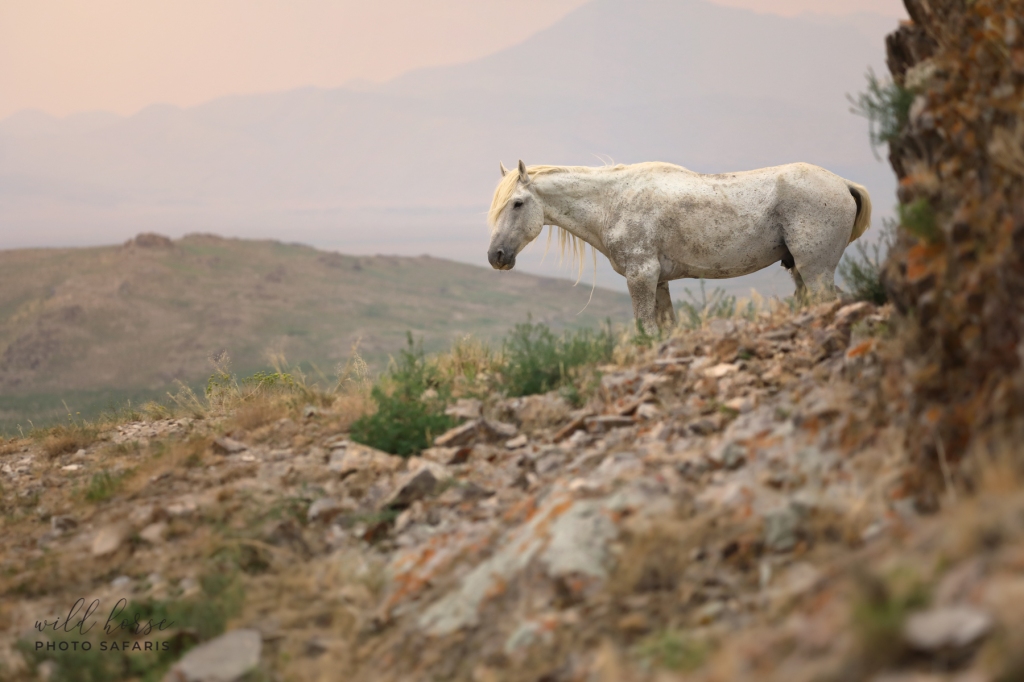
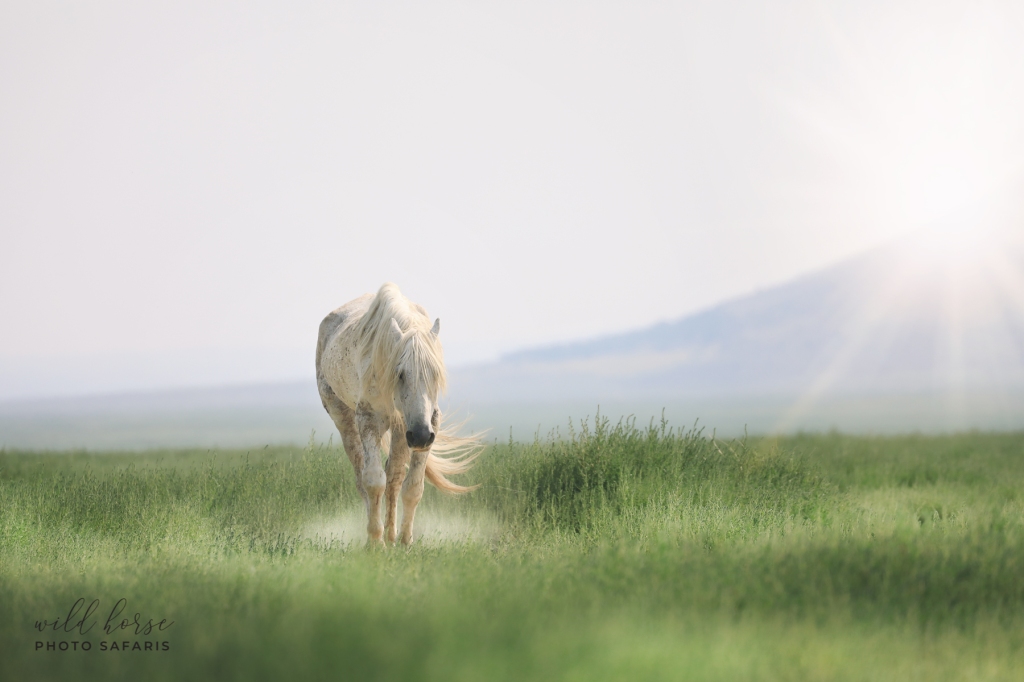

For the last few weeks I’ve gotten quite a lot of communication from lovely folks who have made the big commitment to adopt one of our Onaqui wild horses from the 2021 roundup. For some horses the transition from the range to captivity is remarkably easy and others are struggling which is to be expected.
In less than a year they were removed from their home. Separated from their families. Placed in numerous trailers and in most cases hauled around the country to a new BLM facility before being loaded again and taken to their new home. If that happened to a human we’d be put on medication. And be sent to a therapist. Probably for the long term.
So as a girl who’s never raised, trained or taken care of a horse in her life and who now has 3 wild horse babies I wanted to share some behind the scenes stories from my perspective. Because I’m not a trainer – not even close. I’m not a domestic horse expert. I’m not a long time horse owner. I’m just a girl who loved living the island life until covid, moved to the dry as all hell desert solely because I fell in love with the wild horses and then was put in a position where I couldn’t let them go and brought a couple home.
I did however spent a ridiculous amount of time watching them simply be a wild horse with their bands in their natural environment and trying to understand what their behavior looks like without humans dictating it and interfering. Those wild horses taught me more about horses than I think I’d have ever learned in a lifetime from domestics. Their communication is unfiltered and concise and regimented. It’s a beautiful thing.
I kind of feel like adopting Teton and his little brother Dreamcatcher is like cheating because I’ve known them both since they were only a couple weeks old. They’d see me sitting out there more days than not and then when they were taken and housed in the BLM corrals I made the 2 hour drive to Delta every week and often more than once to sit with them, pet them, feed them, let them eat my shoes and try to give them something consistent. 8 hours a day I’d be there when I went just sitting on the feeders letting the horses snuffle all over me and reaching through the bars to pet the ones who were curious enough to let me.
So by the time the boys got to their new home yes it was a different location, but they’d had me around their entire lives so atleast there was that.
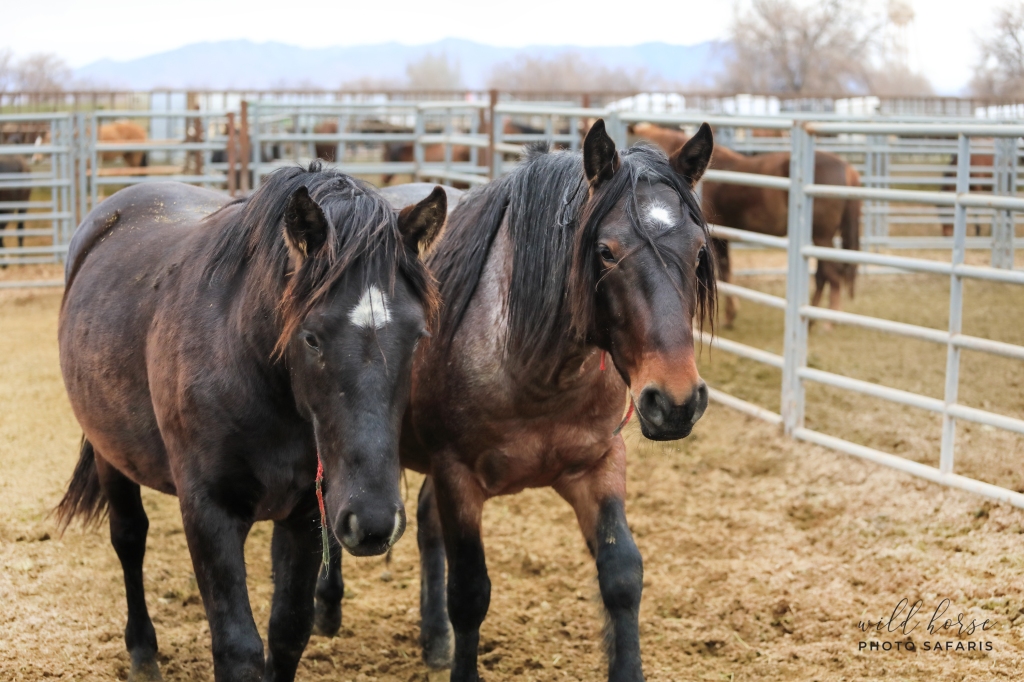
Teton will be two the first week of July. I am amazed every single day at his growth both in body and mind since he was in the wild. I still have images of him nursing from his mom at sunset 2 days before the helicopters flew. He was just a baby. He was put in a pen with the stallions because of his size and there was never a day that his band stallion Stetson wasn’t glued to his side protecting him if there was a ruckus. Stetson was an absolutely beautiful roan inside and out. Calm, assured, curious and very protective of his family. He was fortunate enough to travel to Engler Canyon Ranch where he will live out his life in a wild setting with many others. He taught Teton in short order what being an adult looks like.
The first day I found Teton in the pens I was in tears as he immediately came to the front and put his face through the bars and I put my face to his and he took his lips and smelled deeply and rubbed them all over me. Even after all that he was happy to see a familiar face. He is one of those horses who’s spirit absolutely radiates for everyone that meets him.
Fast forward to bringing him home. Every day except the day I saw Red Cloud deceased I feel guilty he’s in a cage. I always still see him living with his family on the range. I don’t think that will ever leave my mind. But here we are and so we have to move forward together. I had Cheyenne Grace first so when the boys came I decided to put them in together immediately. I thought it out and decided that with all the changes I’d rather get them over at once instead of having to keep adding more and more. So in together they went.
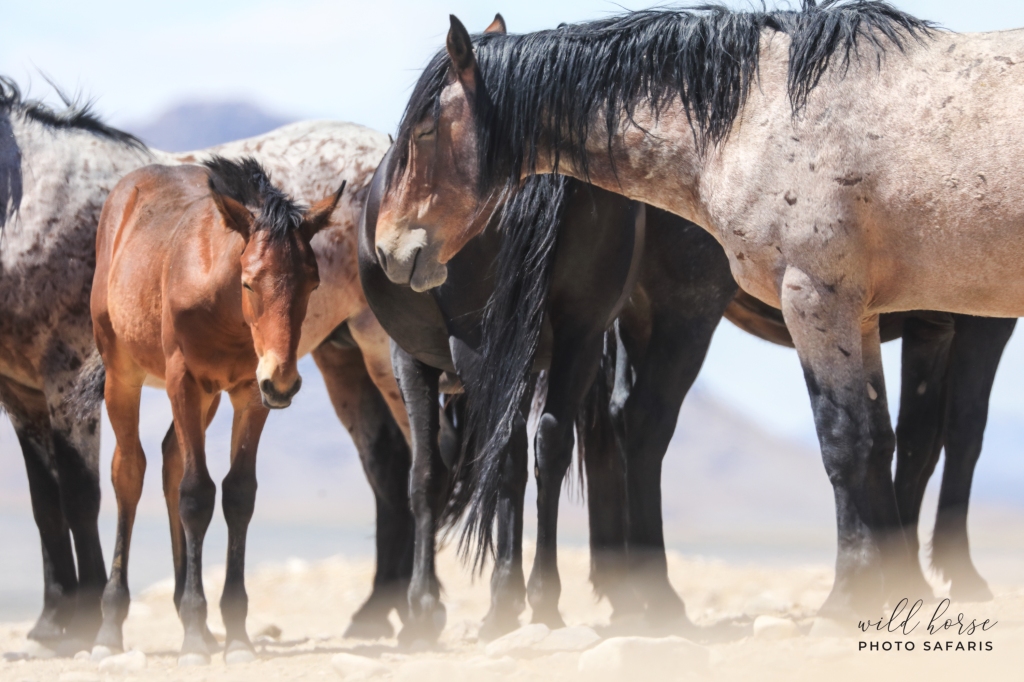
I was expecting there to be issues with the two very dominant geldings on either side of my horses as Teton is a big boy. However I was shocked as they greeted each other amicably. Sniffed and rubbed noses in affection rather than competition. After a couple hours one of them tried to challenge Teton over the panel and quick as lightening Teton grabbed him by the neck and just stood there. Not fighting, not making a sound, just holding him solid to prove a point. Then he let go and it was over as quick as it began and has never happened again. A point was made.
Teton has been wonderful about the halter, lead, saddle and having his feet picked up basically since I got him home. He immediately took the role of band stallion. Cheyenne and he had a lot of disagreements about this but he never gave an inch and if she’s in a mood Teton is the first to position himself between her and the baby or the humans in a gentle but firm way of “leave them alone.”
I was scared to death the first time I took him out for a walk around the property to explore the arenas, roundpens and overall area. There is literally nothing I can do if he decided he wanted to take off. Before his first walk I practiced with him for probably two weeks bringing him through the gate then backing him up back inside. Over and over and over. Because he was initially terrified at leaving his “safe place.” So I’d bring him out to his shoulders then back him in (over and over and over). Then it was to his mid-section. Then it was to his hips. Then we would come all the way out, turn around and go right back in. Finally I just felt really good about it one day so I walked him across the street to the arena where he got to learn about another gate.
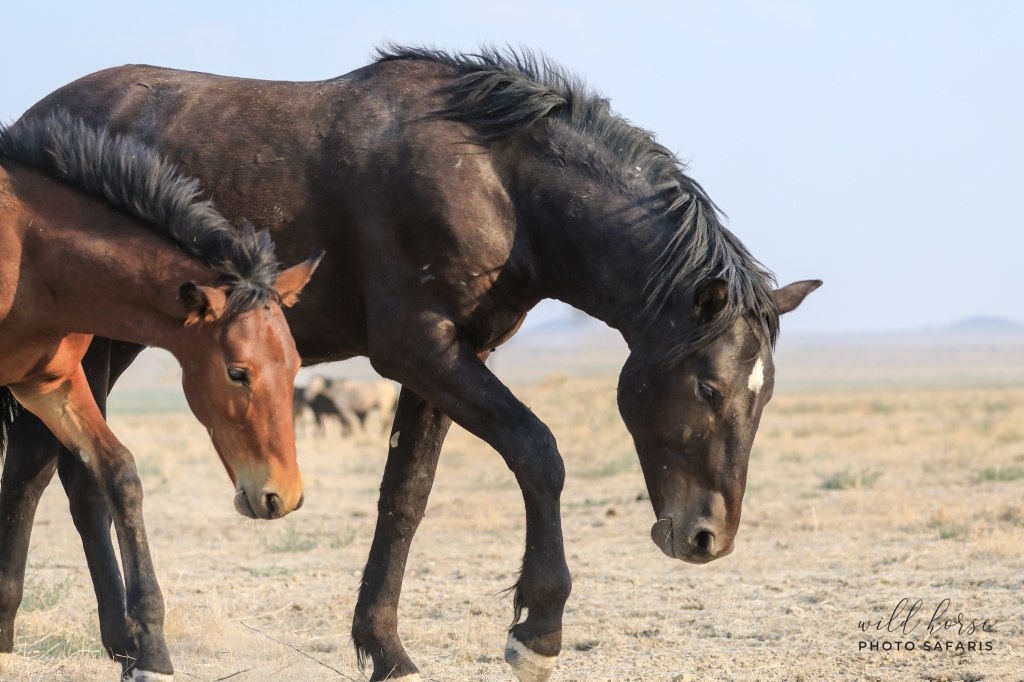
His manners are excellent in that if he is uncomfortable he’ll take a step back. If I tell him to back up he will take exactly one step for each time I tell him “back.” Now we’re at a point where I can back him up from the side so we’re walking backwards side by side. He will put his front feet in the trailer but not his back. He loves the squirt bottle, is completely in tune when we are trying to learn and will quietly go in the back and nap when I release him and he’s had enough.
Dreamcatcher turned 1 last month. He’s always been smart, but is getting old enough to start thinking things through meaning he’s finally getting nervous. He reminds me of Teton at that age. He has that baby stubbornness about him, but if I’m training Teton Dreamcatcher will get along side and try to mimic his brother’s movements. So it’s a two for one. When I take him out of the pen to the arena to work his attention is better and better and his stubborn streak less and less.
But it’s still been hard. Getting him to leave their pen and his family was a major project. I went through the same steps as Teton in that it was a win if I could get him out of the gate, give him a reward, then right back in he went. Then we tried going to the arena closest to him where he would call and call to his friends. The kid just didn’t have any confidence. Now we’ve gotten to where he’ll lead and trailer pretty well. Going into a trailer was impressive as he charged BLM several times and put them on the fence when they were trying to load him at the facility with flags. It was a good thing for me to know – push him too hard and instead of flight it’ll be fight.
Although he gets all the cuddles he can handle and little lessons I’ve been focused mostly on Teton because of his size, and Cheyenne because she’s difficult. The kid learns vicariously and he has small lessons instead of long sessions.
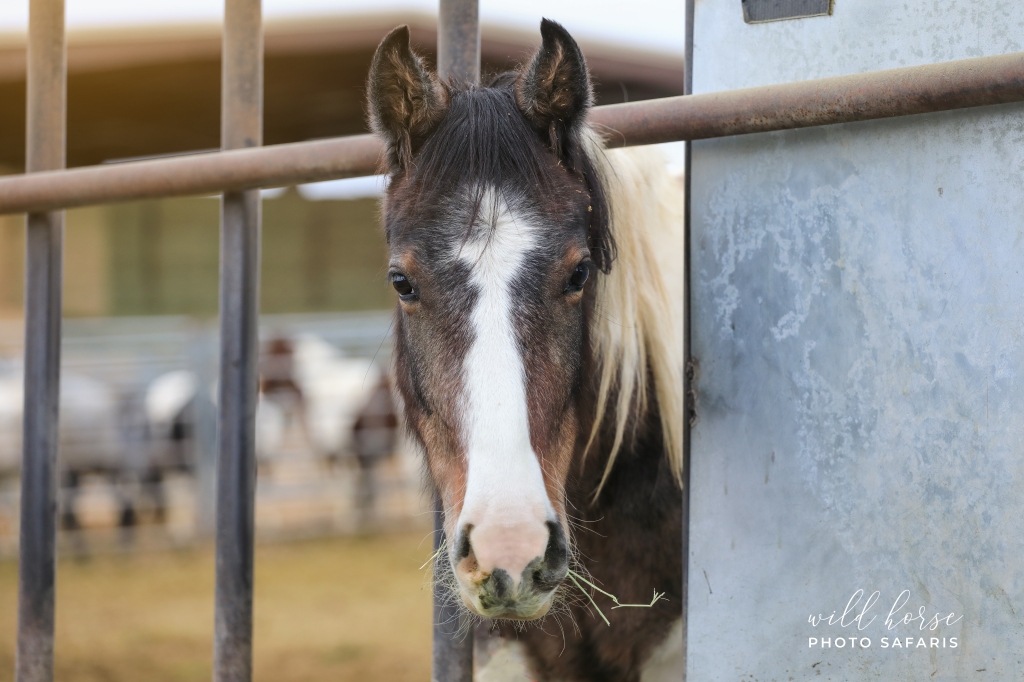
But now to Cheyenne. This is actually for everyone who is feeling frustrated and discouraged and thinks that maybe they’re not the best fit for their horse. From a girl who basically doesn’t know diddly about training horses. I see a ton from trainers which is SO helpful seeing how things should be done, I talk to a trainer and other horse folks to get their opinions all the time because quite frankly having baby horse triplets is just hard. It definitely doesn’t make me love them any less but damn some days it’s hard not to beat yourself up on where you are or where you should be or where they should be, etc.
I adopted Cheyenne late October of 2021. She is from the Swasey HMA and was rounded up best guess around 4 months of age in 2020. She was weaned in the BLM pens in June of 2020, adopted out in September and returned to the facility skinny and with atrocious feet unhandled in September of 2021. We’ll never know what she went through, but whatever it was it wasn’t good because she has some pretty strong reactions to say the least.
When I got her she couldn’t be touched. That’s fine. I didn’t care. We’d get there eventually. She was put in the pen with the Onaqui mares and when I found her they were going after her continuously. Chasing her, biting her, kicking her. She never fought back that I saw. Ever. She looked sad and defeated. Then the pens closed for a week and when I returned little Onaqui mare CreamPuff had taken up the role of protector. She kept herself between Chy and the other mares and if they’d come at her she’d chase them off. Cheyenne found a good friend in that little cremello from Evander’s band.
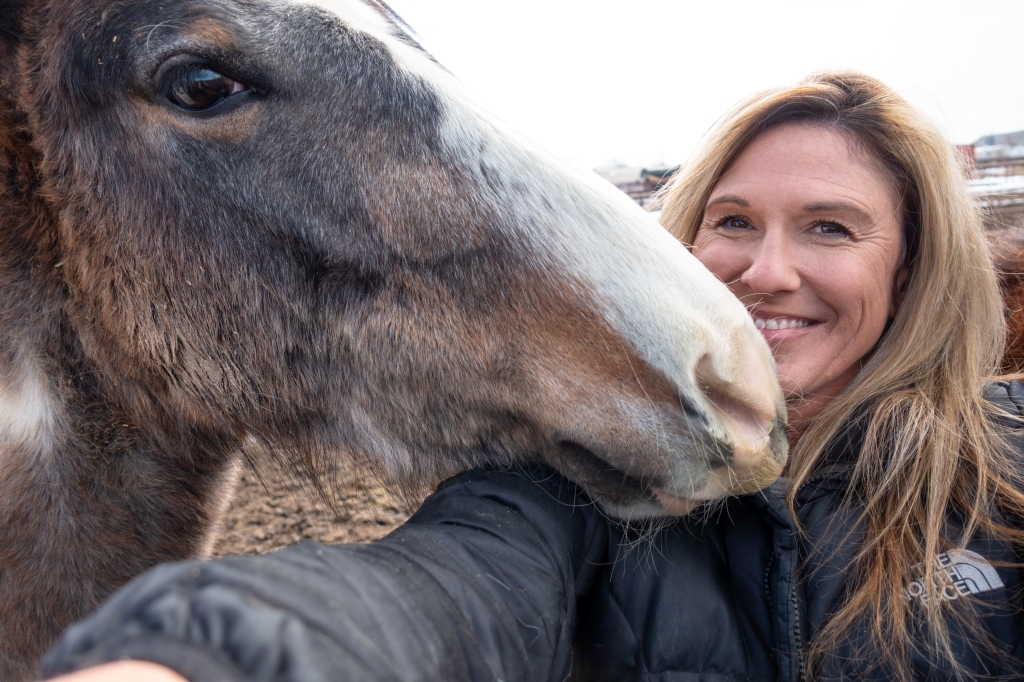
When I brought her home it was cold as all hell. So I had a little camp chair and a book and I’d sit in her leanto to stay out of the wind and I’d read a book. I put a slow feed bag of hay next to me and as the days went by I’d move it closer and closer. If I even had a picture in my mind of touching her she’d go flying back and away.
For 3 weeks I went every day for a couple hours and just sat and read and talked to her. Eventually she started sniffing my leg. Then she’d take hay from my hand but that’s it. She has always been food motivated so I began trying to walk with her at liberty just giving her little treats if she’d even take as much as a step with me.
She was terrified of everything new. Literally everything. So we started a game that I did with my mastiff. If she touched her nose on the new thing she got a treat then I immediately turned and walked away with it. I’d present it, tell her to “see it”, when she touched it there was an immediate reward and I turned and left. Then we’d do it again and again and again.
Finally a month in she let me touch her. I scratched her mane and she jumped to high heavens but I kept my hand on her and began slowly scratching and her whole body shook and her lip went nuts. For 20 minutes she stood there shaking like a leaf. God only knows how much that girl needed to release. Literally.
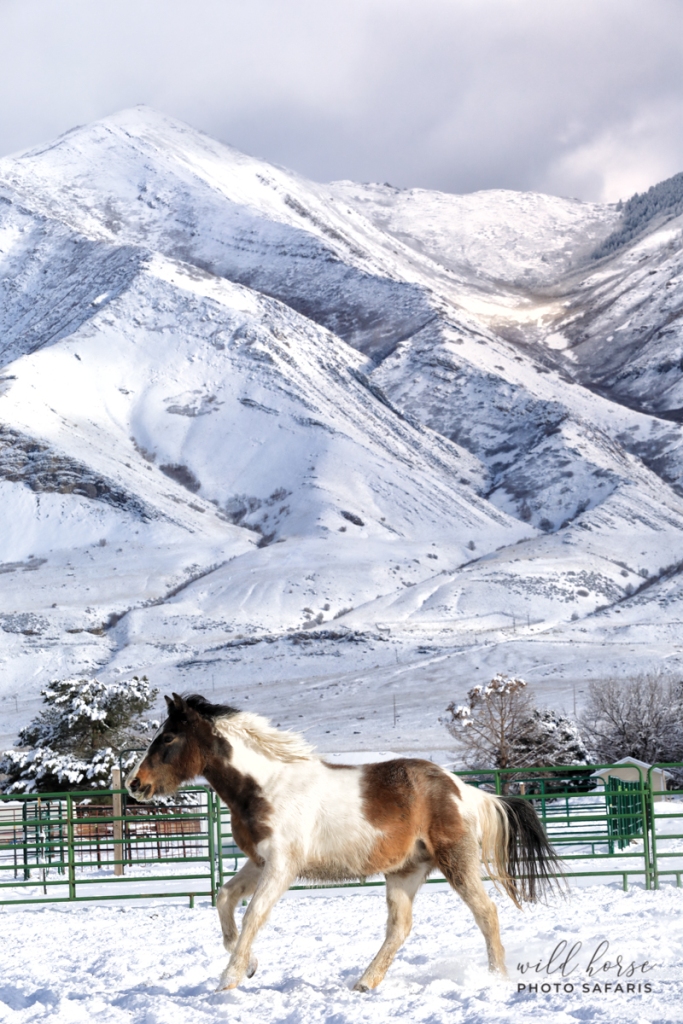
Then came the halter. She’d touch it, I’d give her a treat, then I’d turn my back. Over and over and over until she wasn’t scared at the sight.
I’d try to encourage her she was welcome to touch me too by turning my back and putting my hand on my shoulder with a treat so she could sniff my hair, shoulder, back and get a reward without being scared I was going to ask anything of her.
I put a tarp through the bars of the panels and left it there for weeks. Any noise or movement caused immediate panic. If the lead rope drug on the ground she was terrified so I got a second one and tied it to my belt loop and I’d just wander around with this thing behind me until she didn’t care.
She hated being touched while eating because it blocked her vision of you and began kicking when he was frustrated. I had someone very well-versed in horses sort out the kicking problem immediately and slowly we began working on touching her while she was eating. I’d pet her then leave, pet her then leave. Now I literally lay myself half on top of her while she eats and she couldn’t be happier.
The first time she saw a peacock she thought it was a dragon and must be slayed immediately.
She LOVES dogs. All I can figure is she must have had a dog friend in her previous life because she positively melts when she sees dogs.
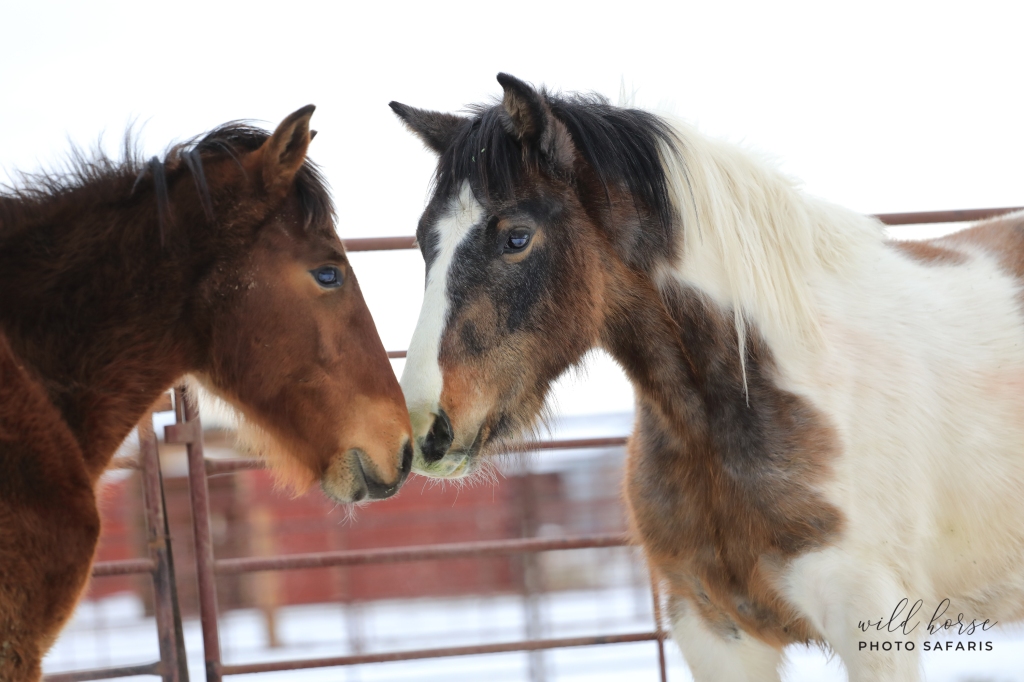
She’s exposed to chickens, cats, tractors, pitchforks, wheelbarrows, other riders on horses every day. But still she is very alert and wary of new things. Her ears are on high alert, her eyes wide and neck bent. It took months before she was actually happy about another human touching her. She would tolerate it (sometimes) but wasn’t thrilled.
I tie her off, but she hates it. She paws and paws and paws. She calls to Dreamcatcher when they are separated for even a couple minutes. The two have bonded considerably even if he’s at the bottom of the horse totem pole.
She leads great and will load in the trailer with encouragement but is scared of narrow enclosed places like the barn. If anyone other than me (and my wonderful friend who helps me train them every month or so) tries to touch her back feet she literally comes unhinged. She will kick for upwards of an hour. She has no quit in her that girl and the farriers have literally tried everything under the sun. Yet I can sit underneath her and file her feet all I want and she is gentle as she could possibly be.
If you (by you I mean someone other than me) pushes her too hard she will strike, head throw and lunge and kick. The only thing she hasn’t done is rear thankfully. She will never be a horse that will respond well to pressure and release training I don’t think. You have to let her think everything out and reward her and she is a totally different horse.
I have taken new humans in with the horses as often as possible. I figure the more they socialize the better. The more they learn that humans are fun and bring scratches and rewards the better. However, Chy still can be leery more so than the boys.

There was an incident this spring where I brought Dreamcatcher back from working him in the arena and Chy was in a snit. She was running and calling and pissed that he had been removed. So I bring him in through the gate and before I can take his lead off and turn to shut it she gives me one hell of a stink eye and goes blowing out the gate. Down to the main road where she took a tour of the neighborhood while one of the geldings on the corner persistently called her back home.
I grabbed her lead, halter and a handful of flavorful treats she loves and started following after her. She’d come to me no problem, then jump and kick (not at me) and race off again. That girl LOVES to run. I mean really, really loves it. But there’s a time and a place. So around and around the property she ran saying hi to all her horse friends along the way who’d now come to the front of their pens to watch her tantrum. She spun broadies around the tack shed and finally as she started to think she was going to blaze by me again she caught a whiff of the treats and stopped in her tracks and walked over panting to eat one as I put on the halter and lead her back home.
I was shaking like a leaf. All I could see was her making it to the highway or getting lots in a neighborhood and it being game over. Needless to say now I have very different protocol for coming and going and she’s getting a lesson in giving me space when I bring the boys back.
While I’m telling stories I’ll leave it at one of Teton. My rock.
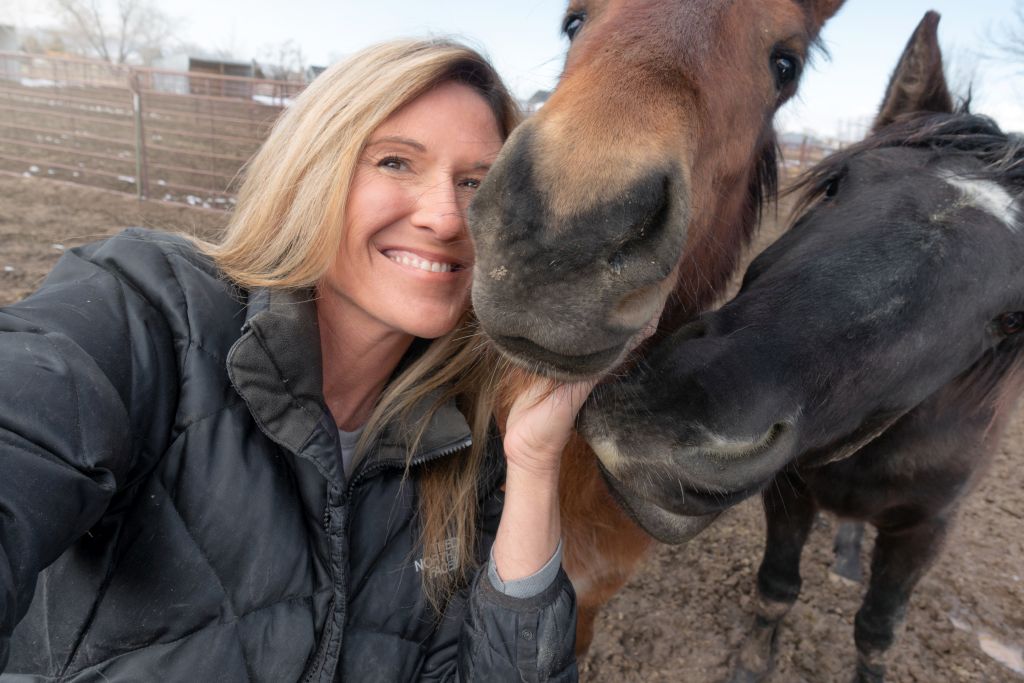
I wanted to take him to the round pen about 3 weeks ago but there were 3 farrier trucks parked between point A and point B. There were 4 horses tied to the hitching posts getting feet done and there were chickens everywhere (nothing new). So I decided he’d done it before, and we have to practice so out we went. Teton is great in that instead of reacting he will usually stop dead in his tracks and assess then move along.
Not this day.
This day it was all fine and dandy until someone started up a side by side behind us and sprayed rocks a bit and that big beautiful boy lost his ever loving mind. He bucked, lunged and kicked out as he sprinted forward with me floating behind him like a human kite. I actually thought this might be that one time I had no choice but to let go of the rope but I didn’t. I managed to “whoooaaaa” him midair and bless his heart he stopped. He was breathing heavy and obviously scared but he stopped and let me walk right up where he laid his head against my chest and I just kissed on him and told him it was okay. Mind you my shoulder and hip would disagree, but it could have been worse. A lot worse.
I walked him on to a far arena instead of the round so he could have the freedom to just walk it off and relax and we stayed there quite a while before I took him back to the others once the trucks had all cleared out and it was a wide, clean area to navigate. But still he was nervous which is totally understandable.
With social media being so prevalent it’s lovely to see people’s progress with their horses and all the bonds they’ve made. But it can also give a false narrative too that getting a wild horse to adjust to it’s new life is easy and fast. I love to post happy, fun videos of all my kids accomplishments but there are days it’s a total shit show and I half crab crawl to the hot tub to try to unwind my muscles from whatever quirky thing unfolded.
And with Cheyenne especially I think for years she’ll be a work in progress. That little lady loves me to the moon and I trust her with me completely but when she gets a bee in her bonnet she’s a force to be reckoned with. Teton is my saving grace keeping the others in line, and the baby I have zero doubt will start to go through his own issues as his mind starts to mature. Every single day it’s work. And a lot of work. I have to try to figure out how to outsmart them, introduce them to new things, desensitize them without scaring them, etc. It’s a LOT.
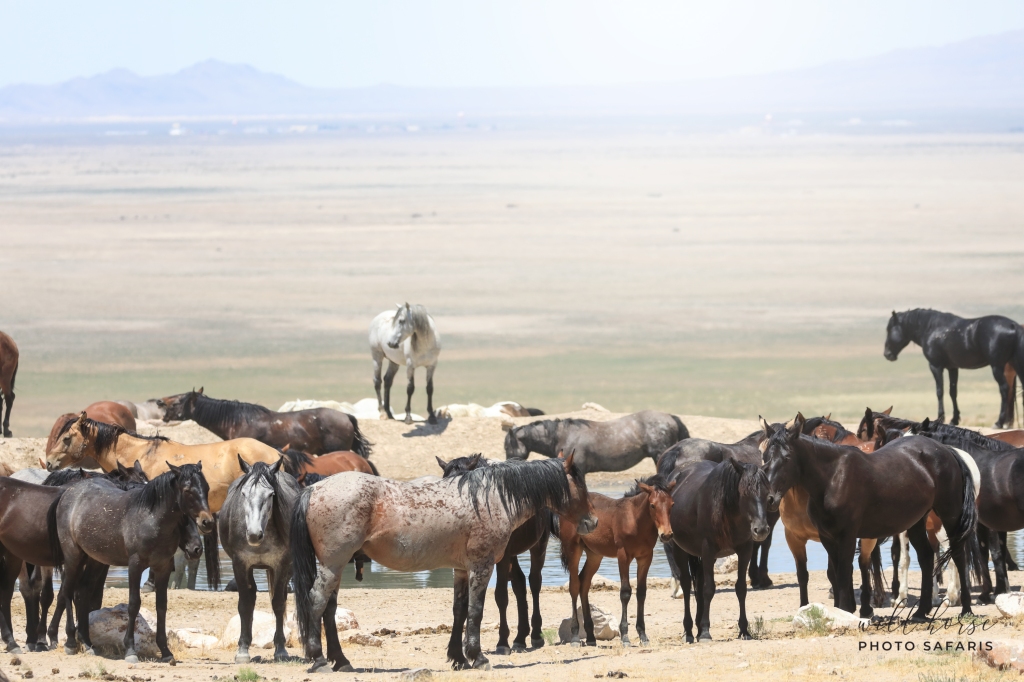
I just hope that for folks that are getting frustrated or doubting themselves or their newly adopted Onaqui will take the time to read this and realize it’s not just them. I personally think the wild ones love sooooo hard once you get through that barrier but it’s bound to take time – and for some more than others. Just because they aren’t allowing for touch or halter or whatever doesn’t mean they’re not fit for being around humans. They have been through more mentally than any of us can probably imagine and maybe to start with they just need for time to be allowed to have no expectations. Every one of them is different just like we’re all different.
Like I said, my boys are different because of the relationship we always had, but little Chy is a force. That little lady loves the socks off me but if I’d have gone at her in the beginning asking even one thing I don’t think we’d have ever broken through. And here we are 6 months later and aside from her neighborhood exploration and hatred of farriers she’s come so far she’s not even like the same horse as when I got her.
So hopefully for those of you reading this having a rough day with your horse you’ll know it’s definitely not just you. It’s just much easier to post and share all the good days, not the days when they may possibly be considering lighting the world on fire.
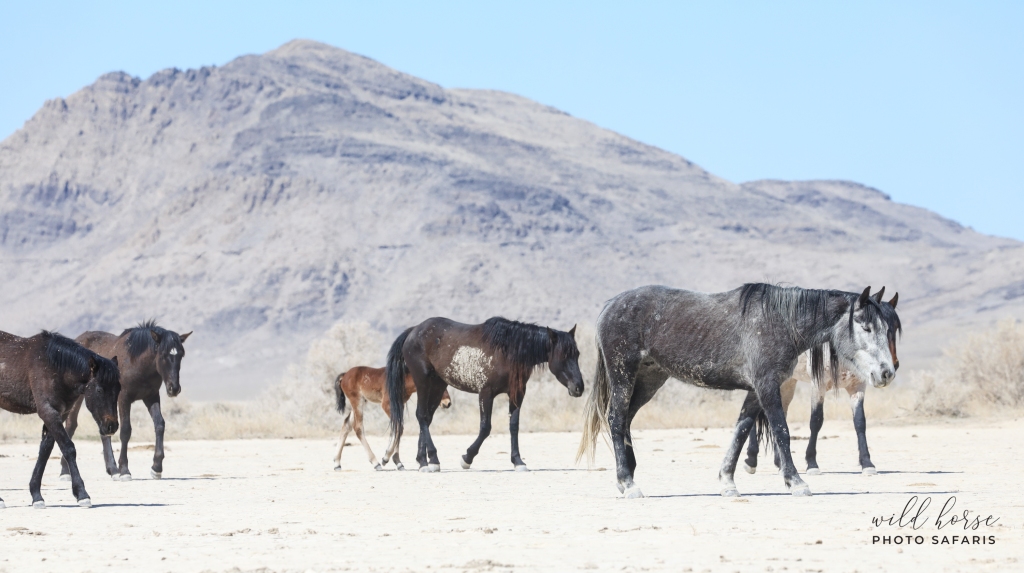
In Loving Memory of Raja
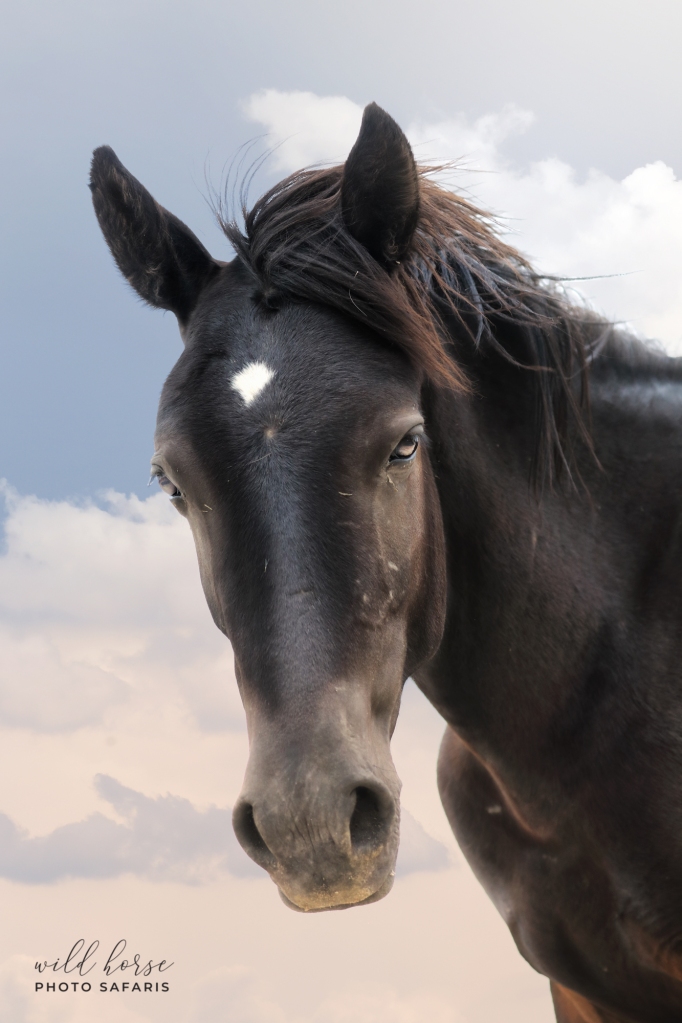
This is one of those stories that I would have never foreseen, and one that has taken longer than most to get to an emotional place where I could tell it without falling apart. It is a tribute to a short, but very special life out on the Onaqui range of a small black mustang affectionately known as Raja.
Raja was born late in the fall of 2020 to a beautiful black mare with delicate white facial markings which made her appear as though she had been painted with care. She also sported a pure white pastern on her back right leg, but otherwise she was pitch black like a starless night. This mare was shy, but watchful and had quite a rough go of it since giving birth to Raja.
She briefly was seen traveling with Silver Star’s band down south in the crisp winter months of 2021 side by side with young Raja who was still very young and an awkward, fuzzy little ball of black fuzzy mustang. They wintered with the rest of the Onaqui far out in the desert searching for banks of snow to drink as the moisture that winter was shockingly light. Slowly they moved north as the grounds dried out and began once again occupying the base of the Simpson Mountains which was speckled with juniper and sage.
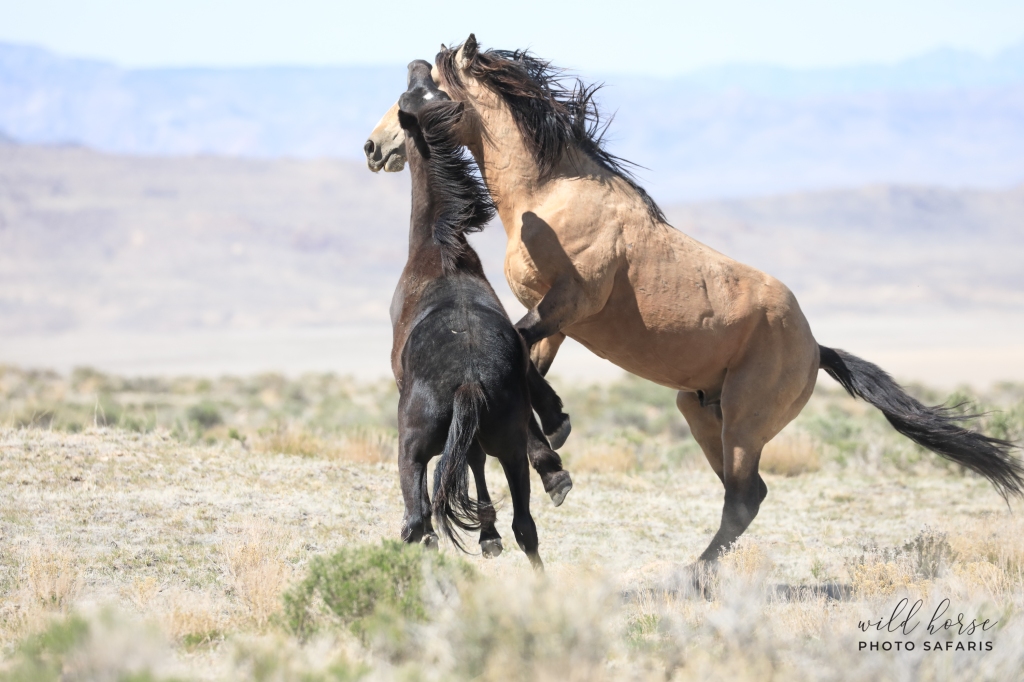
Shortly after being seen traveling with Silver Stars band a change in dynamics occurred and Raja and his dam were won by a large bay stud. They vanished from human sight for about three months and during that time their leader and stallion was found deceased from what appeared to be natural causes.
Raja and his mom were now on their own.
Fast forward to early April of 2021 and insert handsome South bachelor stallion Tango. Tango is a short, but brawny buckskin with a perfect blaze and a spitfire personality. Not one to overreact, he also wasn’t one to back down if he felt his little family was facing a potential threat. Tango kept a very far distance between his new band and the main south herd and he cautiously guarded and guided now 8 month old Raja and his mom to and from a relatively unused water source at the base of the mountain.
From their clearing at the base of the hill they had unobstructed views of the valley below and also of any incoming Onaqui horses. The vantage point was perfect as was access to precious water.
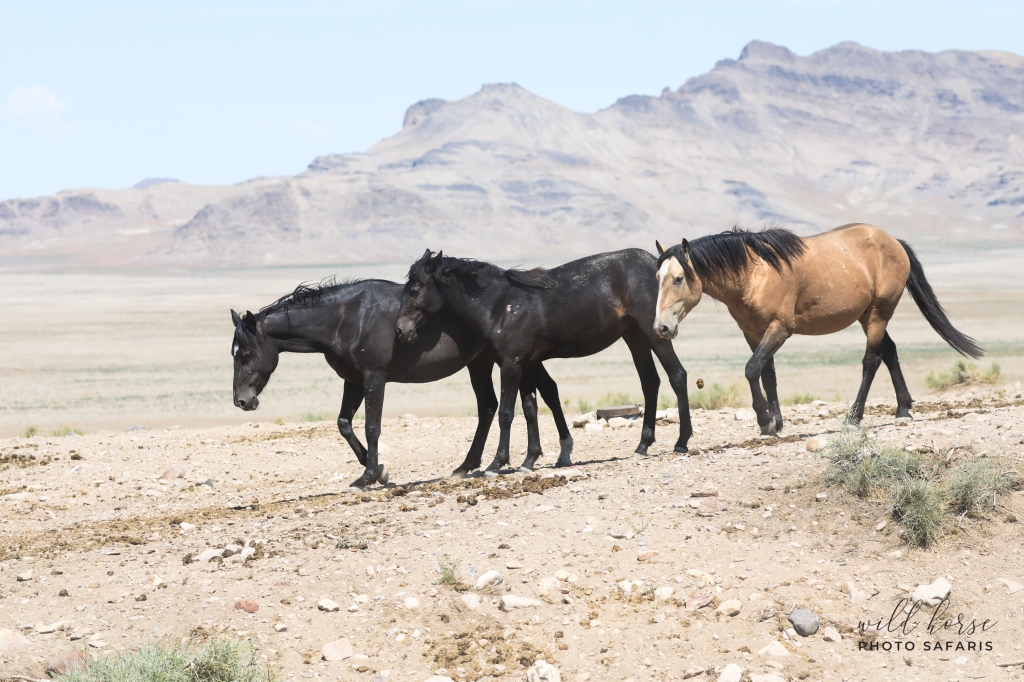
As spring turned into early summer Tango began to calm down and loosen up a bit. He began routinely grooming Raja’s mom and was frequently seen play sparring with Raja, teaching him the ropes of what life looks like as a wild stallion. The amount of gentleness which he would take care of and play with little Raja was so endearing. For a young colt who was not his own, he treated Raja practically like he was a precious breakable thing and was one of the most gentle stallions on the range.
As summer temperatures stormed into the desert in earnest Tango started allowing his family to travel along the well worn paths with the rest of the south Onaqui herd. They watered and grazed together and Raja now finally had friends his own age to sow his oats with out on the plains. Around and around the desert they raced, clouds of dust swirling in their wake.
And then the helicopters took to the sky. Tango was strong and brave and didn’t allow his little family to follow the others into the trap the first time the south herd was targeted. I found them that afternoon with others like Maverick, Avalanche and Jasper. But then the helicopters returned. On the very last day not one south horse was spared aside from Goliath and Joker. Two lone bachelors who knew better than to spend time in the usual places. Little Raja, his mom and step-dad Tango were captured along with the rest. July 18th they lost their freedom.
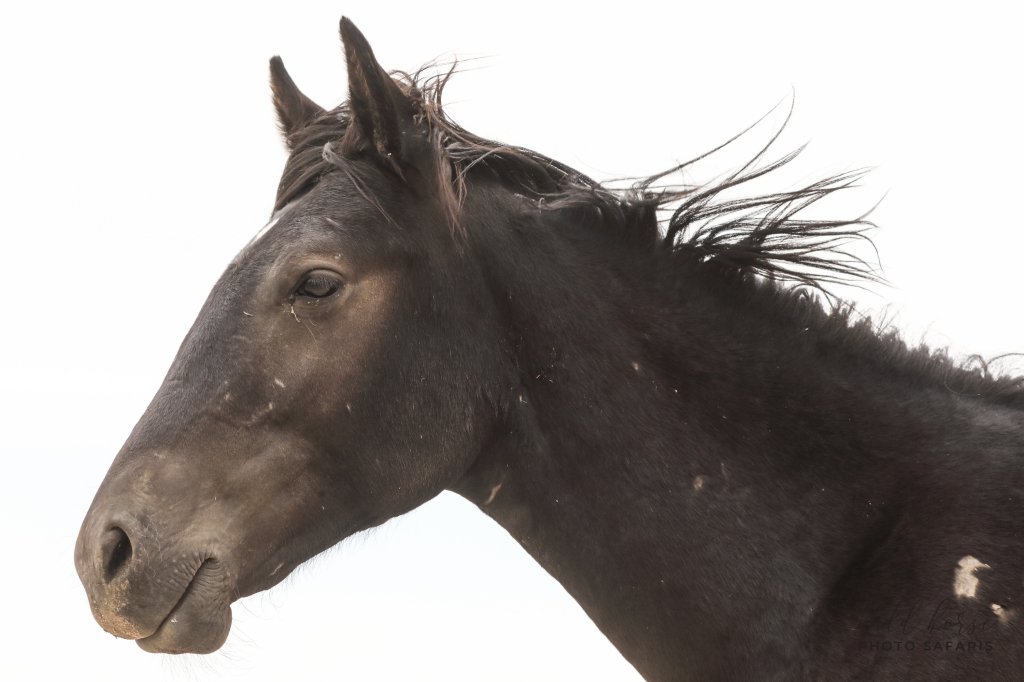
There were 123 horses selected from the 436 captured to be released back onto the range on August 9th, 2021. Never in my wildest dreams did I think this little black horse with a tiny little star would be one of them, but Raja and Tango made the cut. Back to their home they went. And ran they did. Ran and ran and ran from the north to the south until they finally found familiarity.
Tango managed to acquire a gorgeous young sorrel mare who looked at him like he hung the moon. For a couple months they were inseparable, but along the way they split up and he is now with two new mares who are pretty as little Onaqui super models and spend all their time with the other bands controlled by Bernard/Eclipse/Grey, Cobra and 300z.
Raja went with another group of Onaqui who number approximately 20 and are rarely seen. They have hidden themselves very far out in the desert well outside their normal stomping grounds. His life from August 9th to February 23rd, 2022 is a bit of a mystery because of the remoteness of where he was living unfortunately. But on February 23rd lightening storms erupted and raged across the desert.
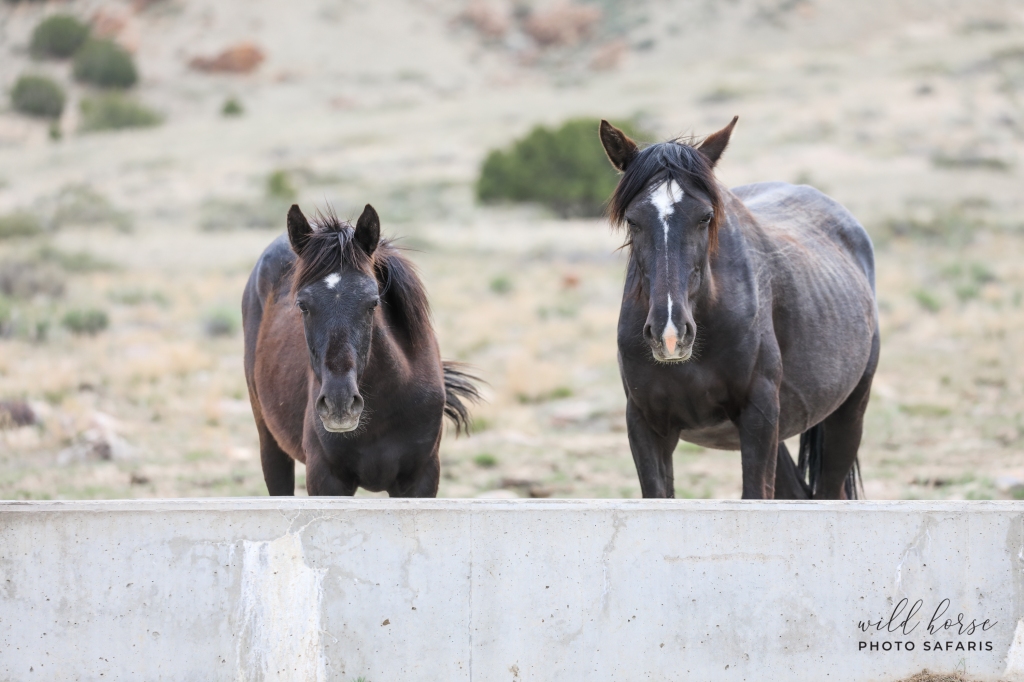
I remember the date well because I was flying back to Utah from a much needed trip back home to the Islands and the weather had once again turned cold, skies had darkened as they rumbled low and loud. The area where Raja and the other Onaqui now lived was low, flat and the trees there were sparse at best. Unfortunately while hunkering down with a very experienced black Onaqui mare they were hit with lightening. His little body found not long after laying side by side with hers. Their deaths are considered to be instant.
The loss was literally palatable.
He was a fuzzy little yearling that hardly anyone knew about, but I did. And I looked for him whenever I could. He was sweet as the day is long. Playful, loving, and well cared for by his horse elders. All of my guests that were fortunate enough to meet him immediately fell in love with his spirit. Despite so many drastic changes at such a young age he was resilient and curious. Never afraid of life or of making new friends.
It was so incredibly sad to learn his life ended so early. But I’m so grateful atleast it was instant. He was simply cuddled up with another mare who I have no doubt would have cared for him based on her previous role as a lead mare before the roundup.
It is a stark reminder that life in the wild is harsh as well. Every time I find myself down south I am inadvertently scouring the mountains looking for a glimpse of him. I hope that little Raja’s memory will live on and on and I hope he’s running free and fast as far as his little legs can carry him in the skies.
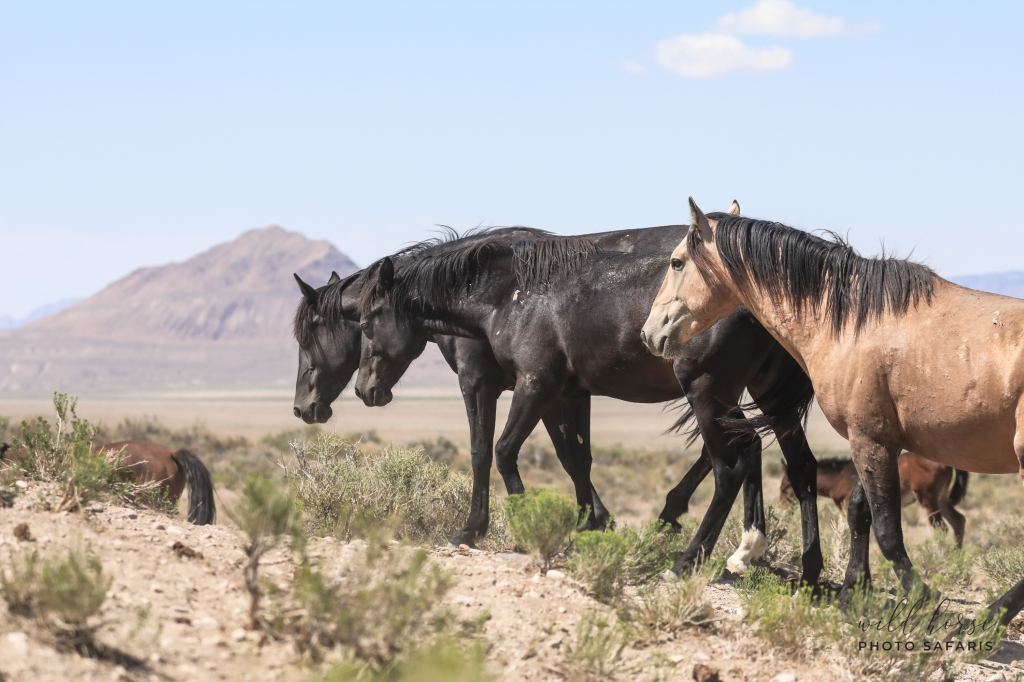
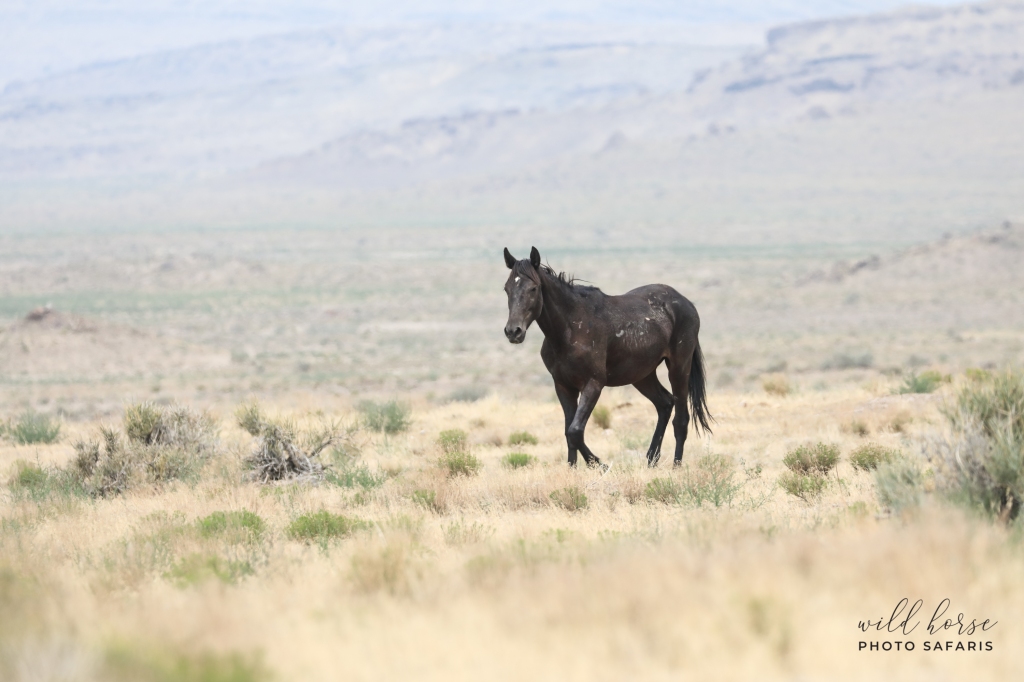
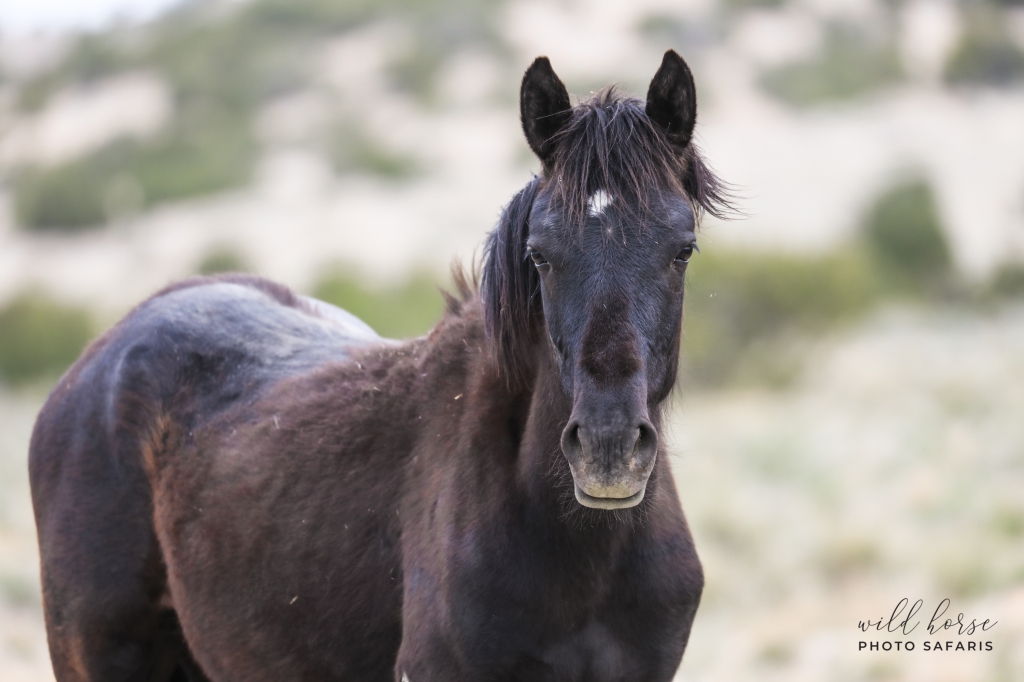
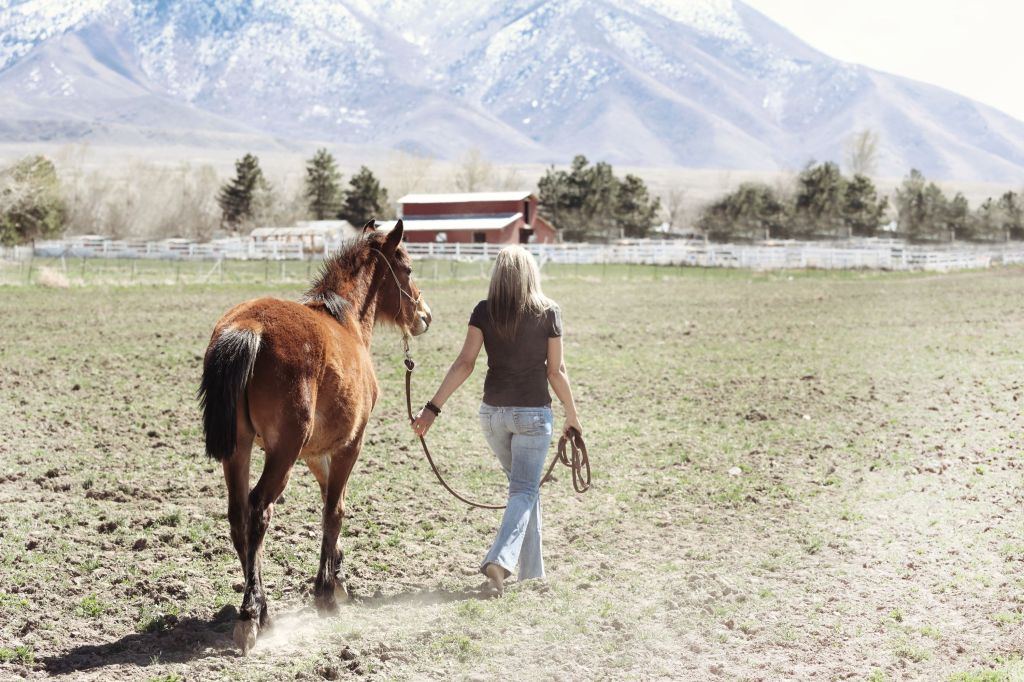
This past year has been on crazy whirlwind of unexpected twists and turns. First trying to garner support to stop the helicopter roundup and removal of over 300 of our beloved wild Onaqui horses which unfortunately still took place in July of 2021. Then switching gears to spending months on end in the BLM corrals in an effort to identify what horses were held in captivity and find adopters willing to offer safe, long-term placement. Several sanctuaries stepped up as well as enough private adopters that all 303 horses were eventually adopted.
In the last blog segment I was so excited to finally be able to announce that I was reuniting South Onaqui yearling Dreamcatcher with his band brother Teton and they’d both be coming home with me to join my Swasey mustang mare Cheyenne Grace. (you can read more of that story here) It literally seemed like ages between the close of the internet auction on December 15th and my pickup date of January 4th where Dreamcatcher and Teton were loaded into a trailer and made the lengthy drive west to be introduced to Cheyenne Grace.
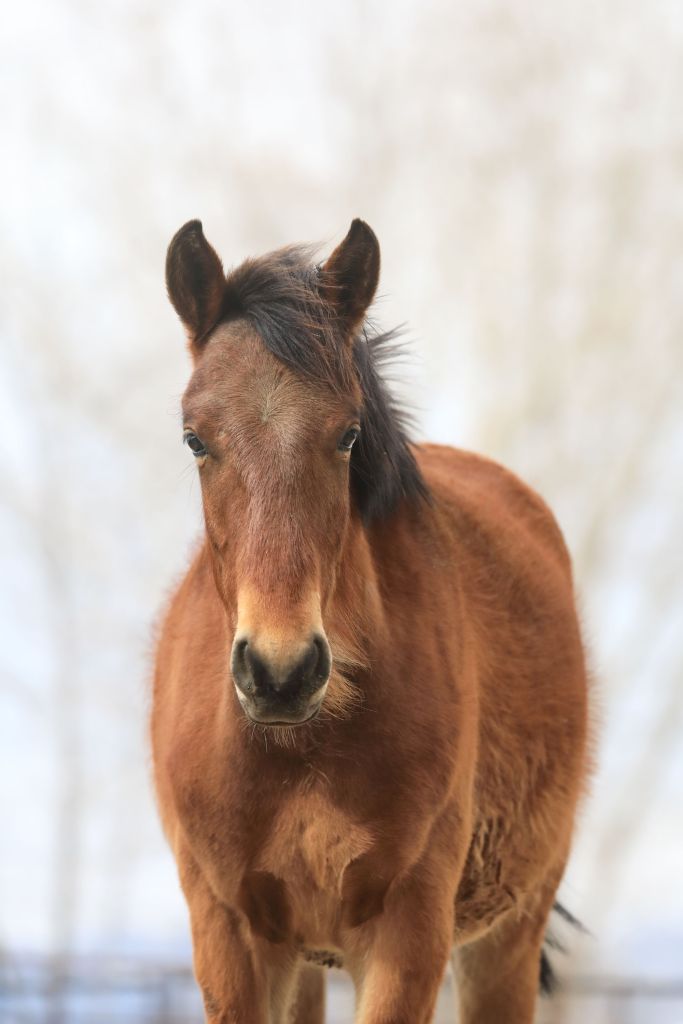
Cheyenne was estimated to be 2 years old at that time, Teton was a year and a half and Dreamcatcher 9 months. While I don’t know the exact date of birth for Teton, I found him as young as 10 days to 2 weeks old in 2020 and found Dreamcatcher when he was less than a week old so lucky them instead of having a birthday, they’ll celebrate a birth week every year! This week happens to be Dreamcatchers big 1 year birth week!
In the 3 months he’s been home he’s gotten spoiled rotten by Cheyenne who went from being very annoyed she was no longer the only princess in the palace getting mom’s attention to doting on the little one and keeping a close, watchful eye to make sure he’s okay. She loves to lay her chin over the top of his neck and will stand and groom him using only the gentlest of lips. Teton also takes very good care of his little band brother although he’s also of the belief the kid needs to be a little braver (I agree) so it helps tremendously with training having Teton around to guide when Dreamcatcher gets stuck.
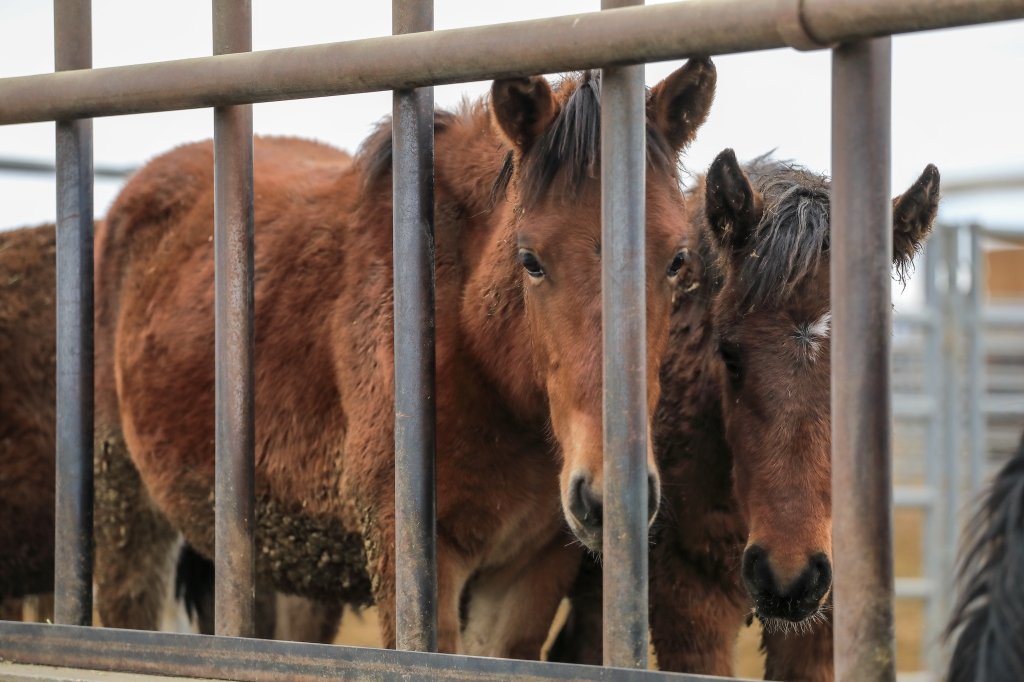
So far he’s been wonderful about being haltered, leading both inside and outside of his pen, he loves spending time in multiple arenas and is getting acquainted with the round pen slowly. He’s very tolerant of having new things on his back like towels, tarps and a saddle although the other two seem very intent to help him out and pull whatever I put on his back promptly off. He thinks a spray bottle is kind of interesting but also very suspicious and when the rope drags around on the ground he feels the need to kill it immediately to save us all from danger.
Dreamcatcher has gotten to meet many dogs, both very big and very small, and finds them all interesting. He’s decided that he likes chasing chickens and peacocks are kind of like dragons and not to be trusted. Cats are somewhere inbetween and he would prefer if they please just leave him alone. Slow feeders are fun, but empty grain bags are maybe the best toy ever because he can stomp them AND shake them all over the place and annoy his sister. He’s learned that when mommy sits on the top of the pen panels she’s probably up to something and he needs to keep a close watch.
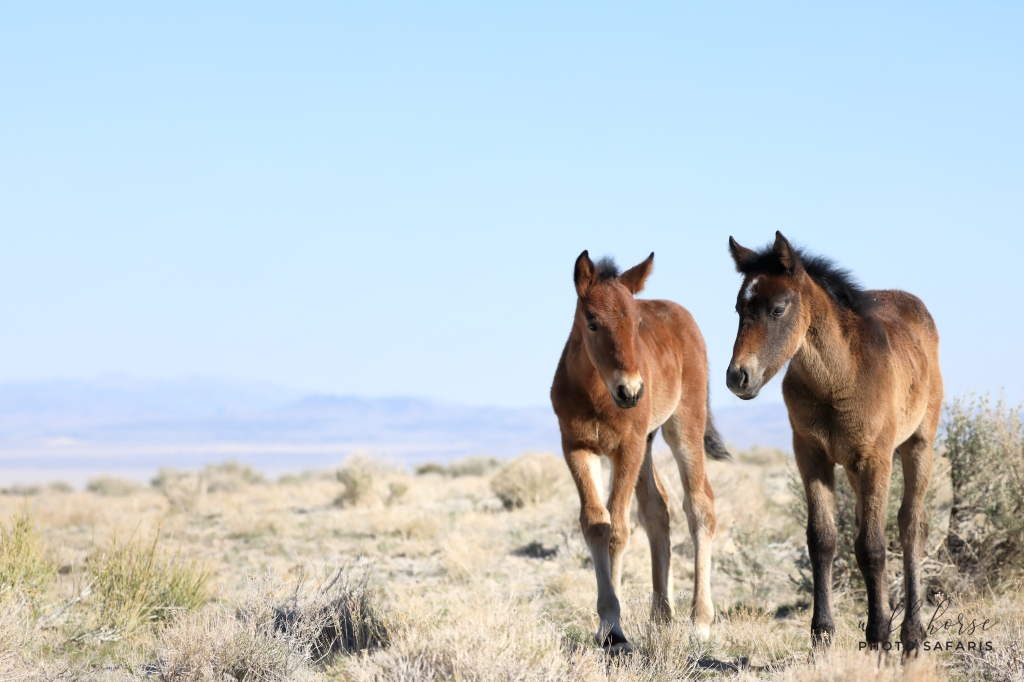
Dreamcatcher is very good about having the farrier come and make his feet pretty again and once he realized what that was all about he might have even liked it. He loves to come to the fence and greet anyone that walks by and most that meet him call him a puppy because he’s very content to stand and lean against the humans for endless amounts of time getting lots of pets and scratches.
When Dreamcatcher gets startled his back legs pump super fast like he’s riding a bicycle, but he doesn’t actually move much. I do something similar when I get scared so I can’t really blame him. Every day he’s getting better about having his own time to learn and play by himself without Teton or Cheyenne around and has figured out that he actually will survive. And it might even be fun.
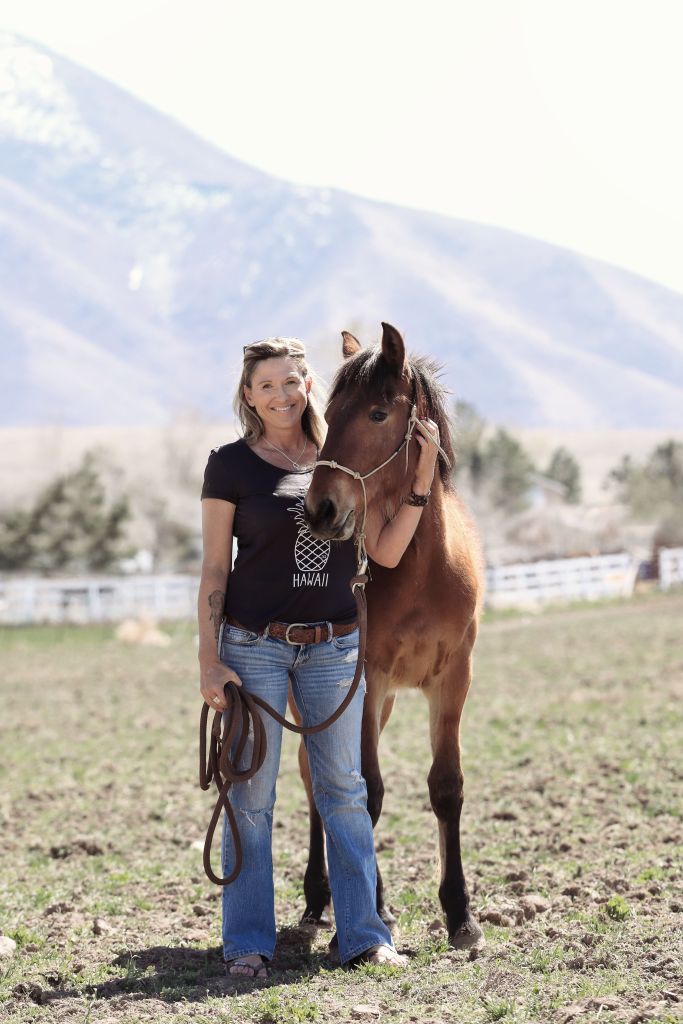
Dreamcatcher gets to go say hi to lots of other horses on the property and so far he’s liked them all – the little mustang fillies he says are his favorite. His eyes get very wide and he holds very still so they can sniff him and squeak at him. He also likes the pretty little paint gelding his same age who begs him to play from inside his corral. He’s learned to step up onto, and walk over, a bridge. He can even back off it and turn around on it if he’s in a good mood! He is great about weaving through poles and will chase Teton as fast as possible in the big arenas bucking and kicking and standing up to play spar. That’s his favorite way to spend an afternoon. Cheyenne disagrees because she’d rather have her boys home even if they are annoying a lot of the time.
It’s a continuous work in progress to wrap my mind around the reality that these precious beings I watched grow and flourish with their wild horse families are now in a pen following me around like ducklings. Every last time if I had a choice I’d rather they be back wild and free in that desert with the rest of their friends that were left behind. Since that isn’t a reality unfortunately, every day the goal is to make it a great day for them. Teach them new things, give them as much love as they can tolerate and give them consistency. Teton in particular absolutely LOVES to learn and as Dreamcatcher ages and learns confidence from his role model of a brother he undoubtedly will too. Right now eating, playing and pets are his favorite ways to spend the day and not necessarily in that order.
It’s crazy to see how far they’ve come in such a very short time – both in what they’ve learned and how fast they’ve grown. There’s no telling what the next year will hold for this little guy, but at the very least I hope it’s another 365 good days as a little Onaqui mustang.
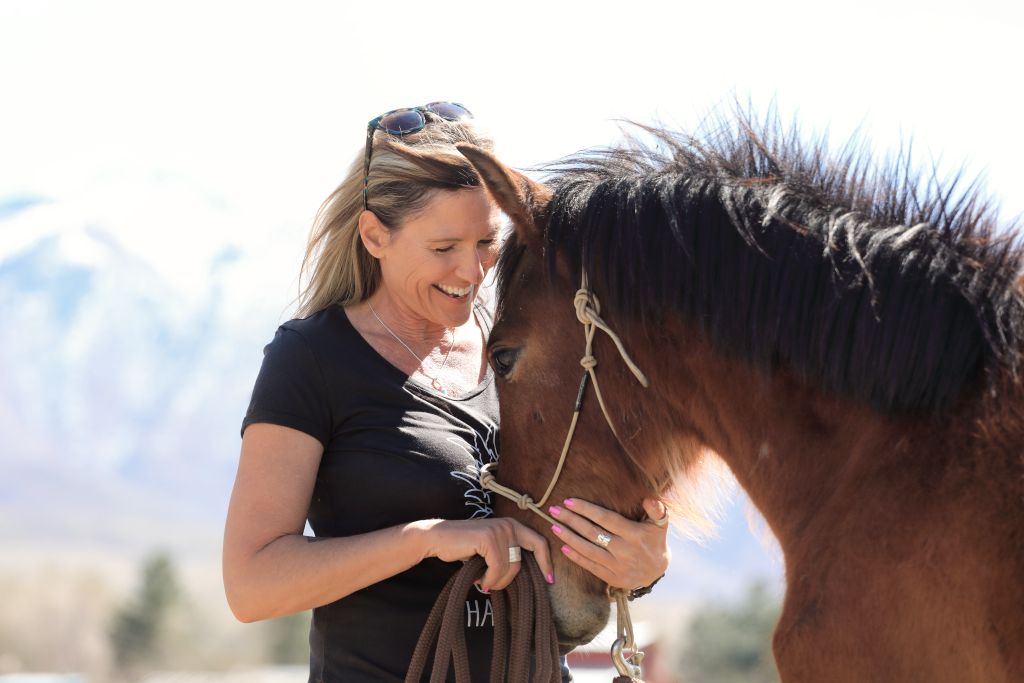
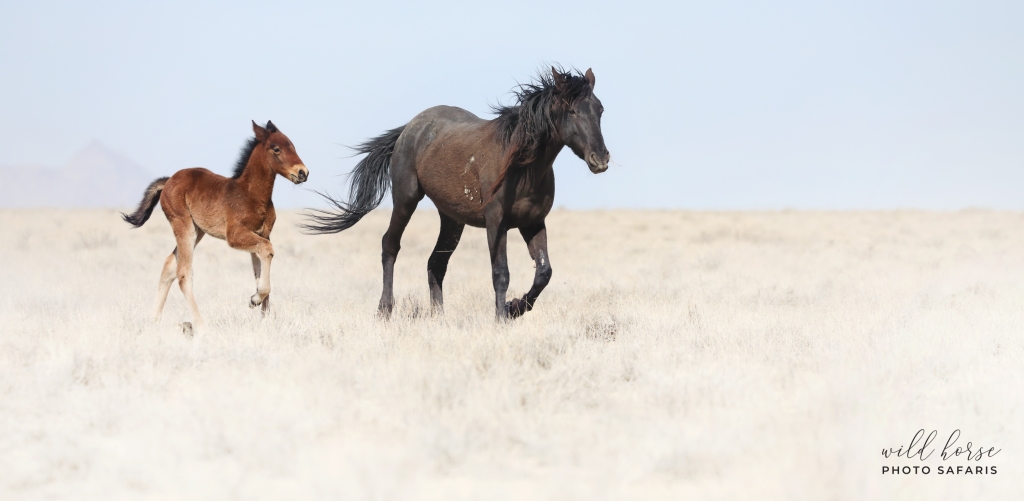
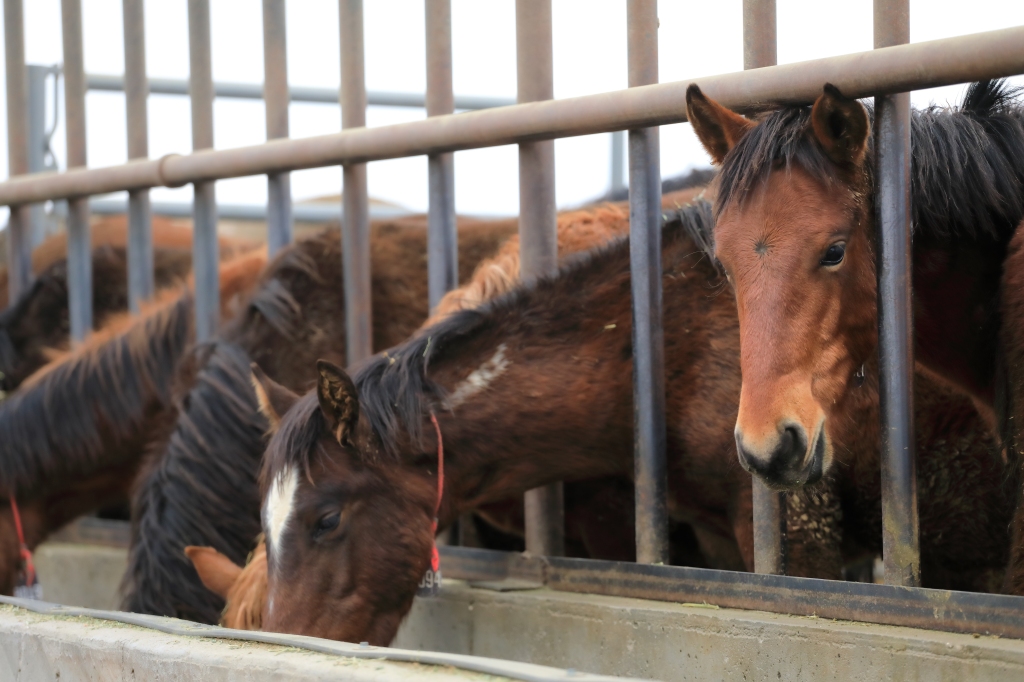
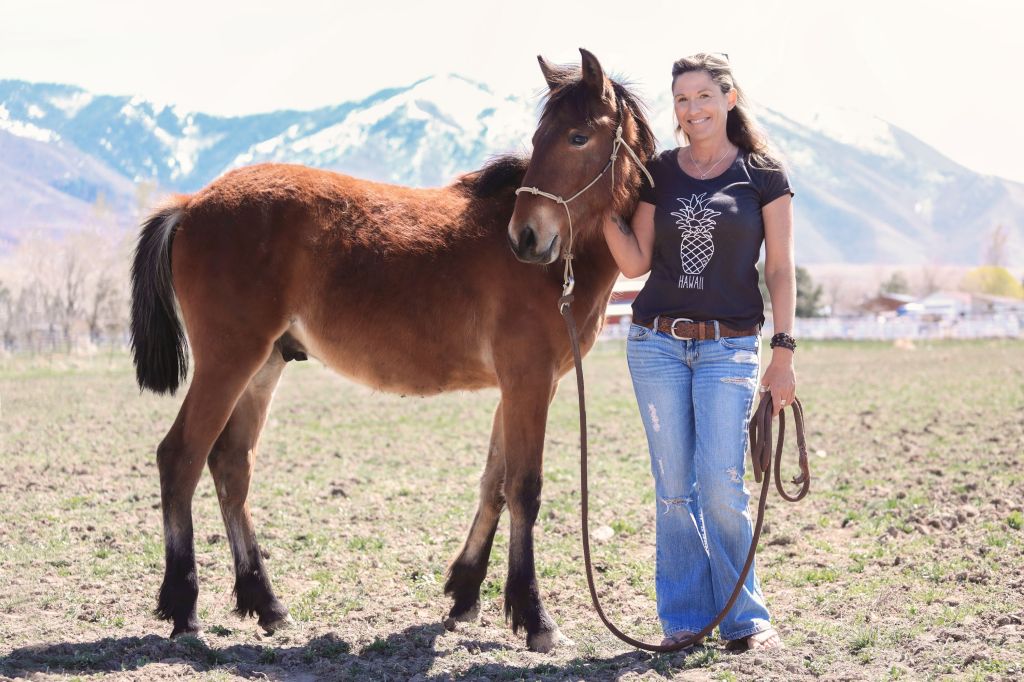

*** Many thanks to Karen Larsen Betten for taking the images of me with Dreamcatcher for his birthday week!
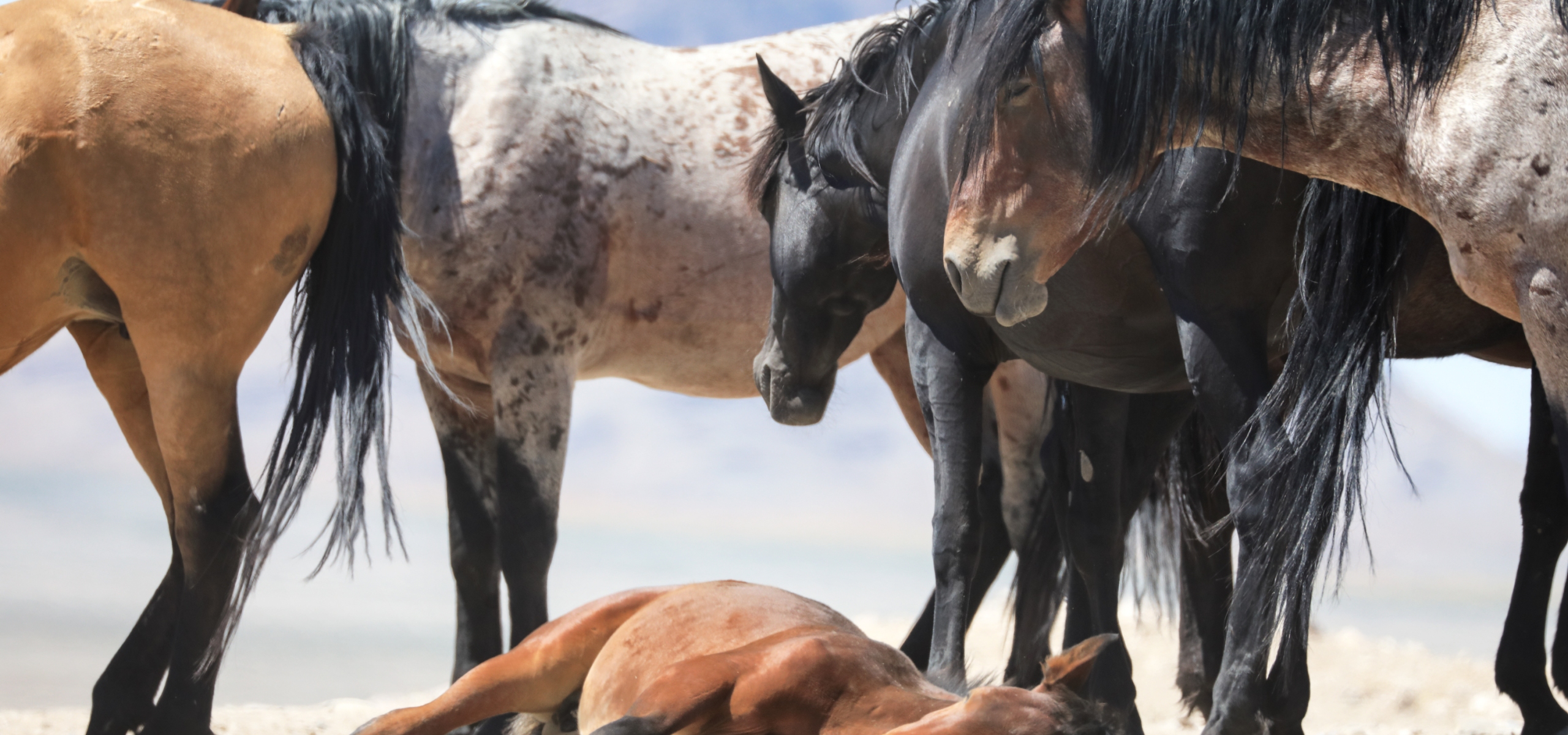
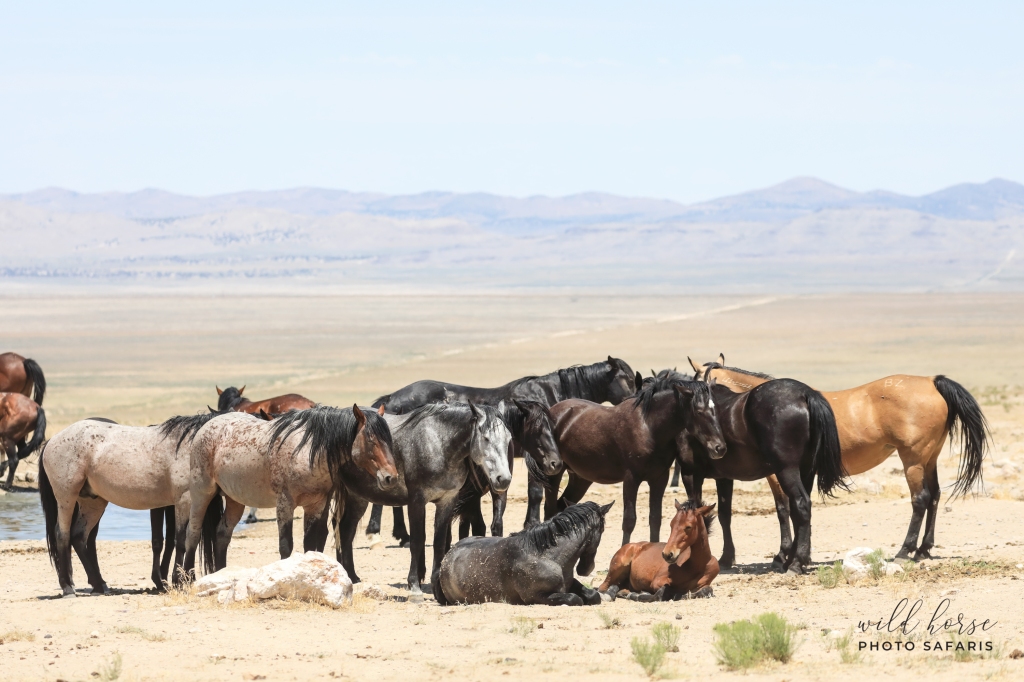
The Reunion
These last 9 months have been filled with so many emotions it’s simply impossible to start to try to recap them all. Since March 2nd when the roundup of over 400 Onaqui wild horses was announced it’s been all hands on deck trying first to stop the roundup and then trying to find appropriate homes for the 300 mustangs awaiting adoption at our local Delta short term holding facility.
Ever since the corrals opened to the public back in September I’ve been spending time every week with all the horses in the pens taking photos, documenting, hand feeding and petting those who learned to enjoy the attention. It’s been so hard to keep the horses a secret that I intended to personally adopt but there was zero question that it was the right decision all the way around. I’ll forever be grateful for the little team of wild horse angels who helped to keep them safe amid the swirling mess of social media platforms.
I’m guessing that many people reading this will remember the story of little Dreamcatcher who was inadvertently separated from his mother Marley and sister Little Star during the roundup process and they were returned to the range while he was sent to the pens at around 4 months old. I’ve had countless good samaritans reach out over the months asking for an update and wanting to make sure that the little colt was okay. My answers were always brief and vague and simply asked for patience while the story played out.
Finally the day has come when I can share that little Dreamcatcher will be coming home with me to live out the rest of his life with my pretty little Swasey mustang rescue Cheyenne Grace and he will once again be reunited with his band brother Teton who was best friends with Red Bird and Little Star – the Three Amigos who were never separated in the wild and who did everything possible to care for little Dreamcatcher from the time he was born to the day of the roundup.
Teton also has a forever home with me and taking him was never something I gave as much as a second thought.
The band was split up with the majority being returned to the wild, but Stetson, Ariat and Moon Dancer, the three remaining of the family in the pens have also all been adopted into wonderful forever homes that are very fitting for their individual needs. The relief is immense.
Below are short little stories about both Dreamcatcher and Teton to tell a little more of their background in the wild and I am overjoyed to be able to share updates about their lives moving forward for a long, long time to come.
For those who have become familiar with Red Birds Trust, you will know that our 501(c)(3) nonprofit is not a sanctuary and thus these horses are not “sanctuary” horses, but rather my personal horses which I was able to adopt using all the tip money I’d been saving from my wonderful clients who I took out for photo tours on the range. So for all of you with such generous hearts I want to say a sincerely THANK YOU, because every one of you has now helped in your own way to help me to finally bring these boys home.
Dreamcatcher
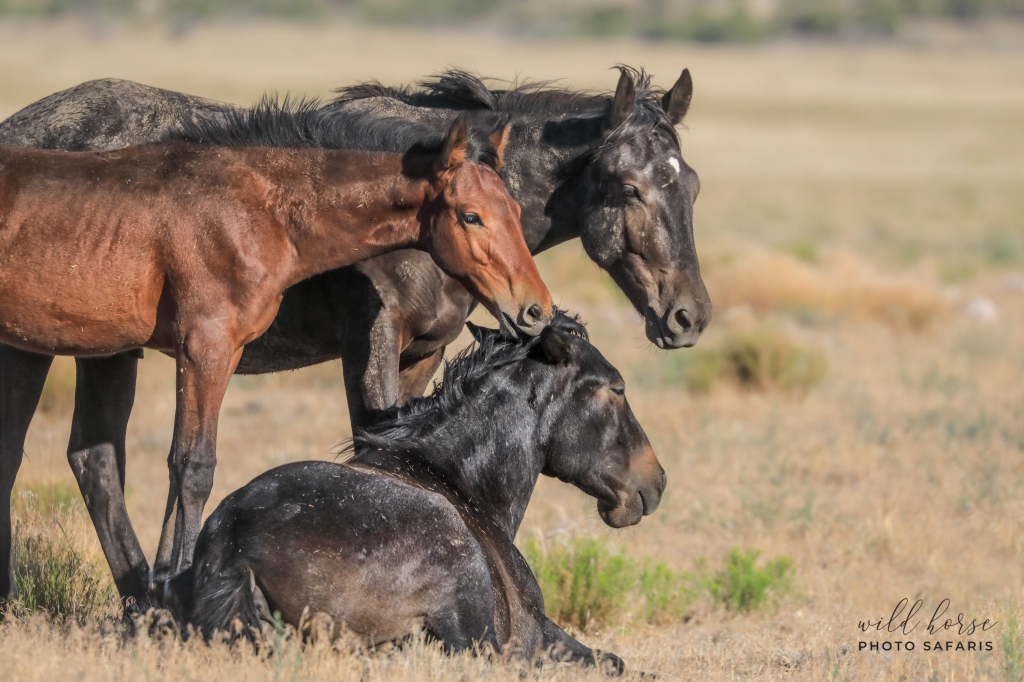
Dreamcatcher was just that – an almost ethereal little curious, loving, patient and kind little colt that was absolutely loved and adored by the yearlings in his band. He was born at the end of March 2021. Red Bird took the role as Dreamcatcher’s lead care taker since his dam Marley had her hands full with now two babies – Little Star and Dreamcatcher. Red Bird would groom him, stand guard over him while he slept and so very gently teach him the beginning lessons of how to stand and play.
Even as a wee one, Dreamcatcher had such a kind, curious nature about him and a quiet confidence which allowed him to carefully expand his horizons further away from his mom than most to meet new horse friends and cautiously assess new humans that may show up. While careful, he was never unreasonable about his level of caution and took on new experiences with relative ease and calmness.
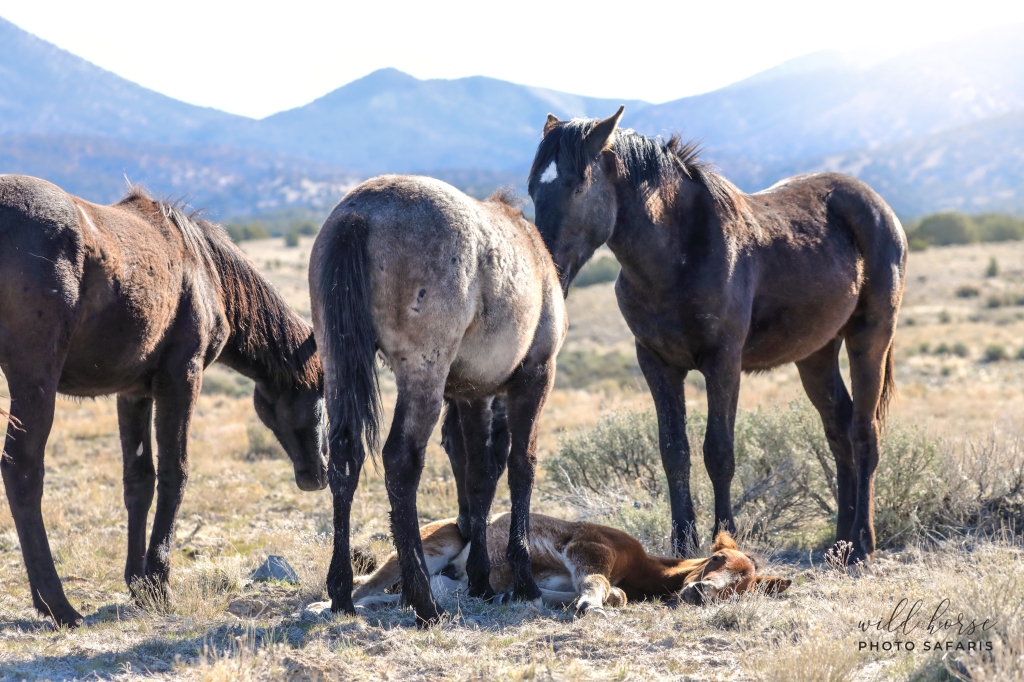
We’ll never know what must have gone through his mind during the July 2021 roundup where at only a little over 4 months of age he was chased by a helicopter with the rest of his band, loaded into a stock trailer and then inadvertently separated from his mom, sister and all the other horses he knew. How this precious little soul slipped through the cracks will never be known, but the second that the Onaqui release happened and Marley and Little Star appeared back on the range without Dreamcatcher alarm bells began sounding far and wide.
Although it was deemed unsafe by the BLM to return him to his mother and sister in the wild after 6 weeks separation in the holding pens, he has finally been reunited with one of the three amigos – Teton – who helped to guide him to being the wonderful little perfect horse he is today.
There was initially some confusion as to Dreamcatchers true identity as a north foal named Quinn looked nearly identical (which by a crazy twist of fate was also orphaned in the roundup and who I’d watched being born on the range earlier that spring). Fortunately I had documented several scars on him right before the roundup (one very noticeable on his left shoulder as well as a tiny one on his forehead) so once we were allowed into the pens the little fella took not time at all to push his way to the front of the other boys to make himself known.
For everyone who has been lucky enough to meet him in person, little Dreamcatcher brings nothing but joy to anyone who’s fortunate enough to be in his presence. He’s an absolute perfect little creation and I will always be grateful to be his caretaker.
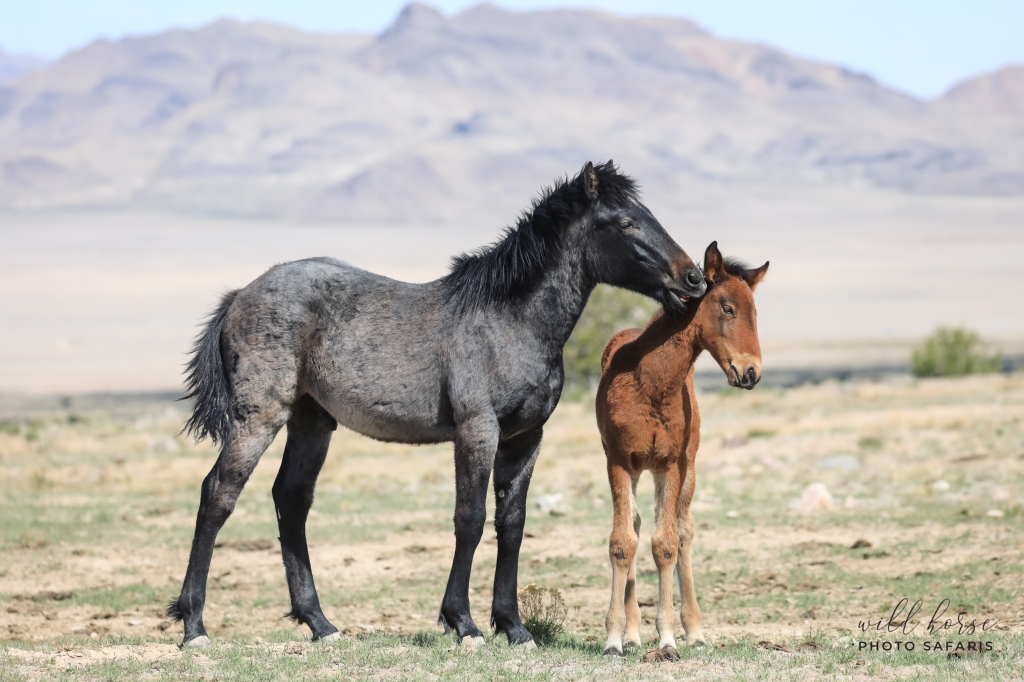
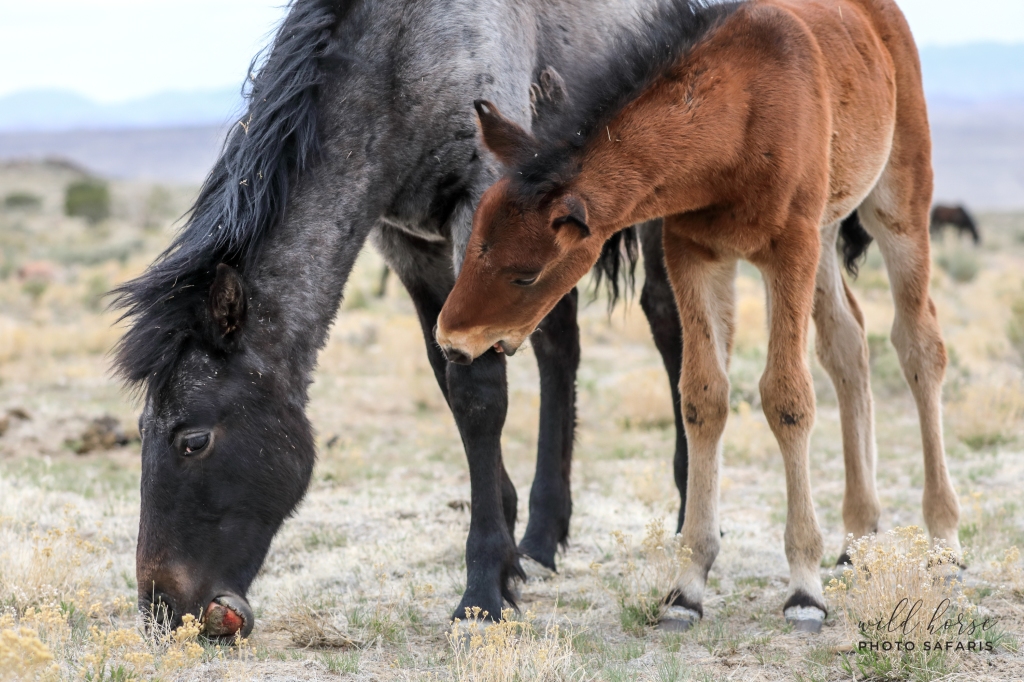
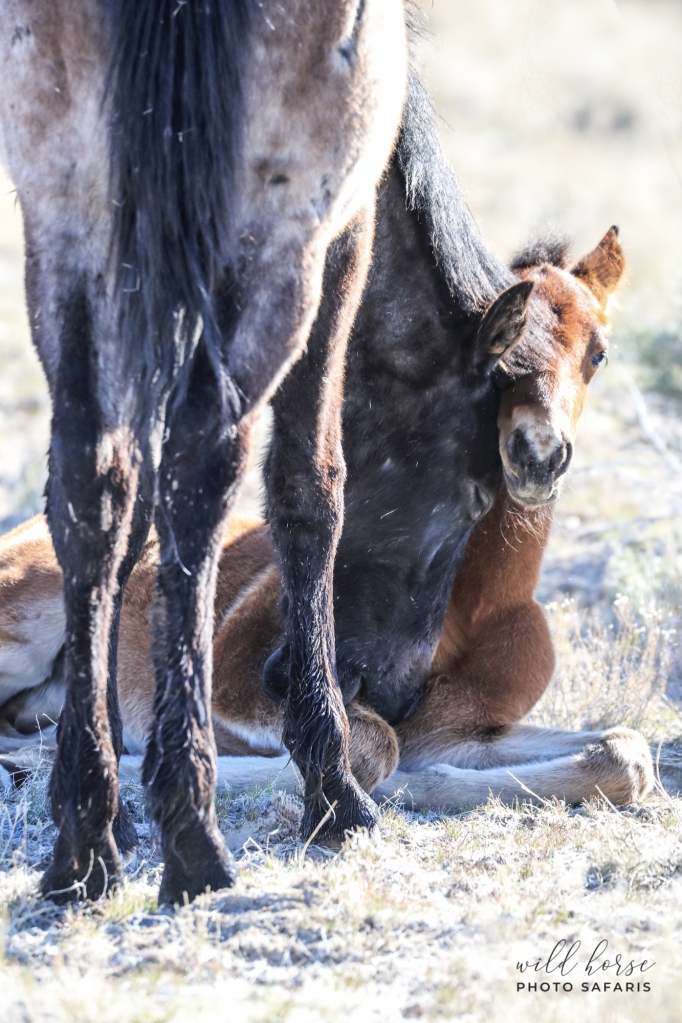
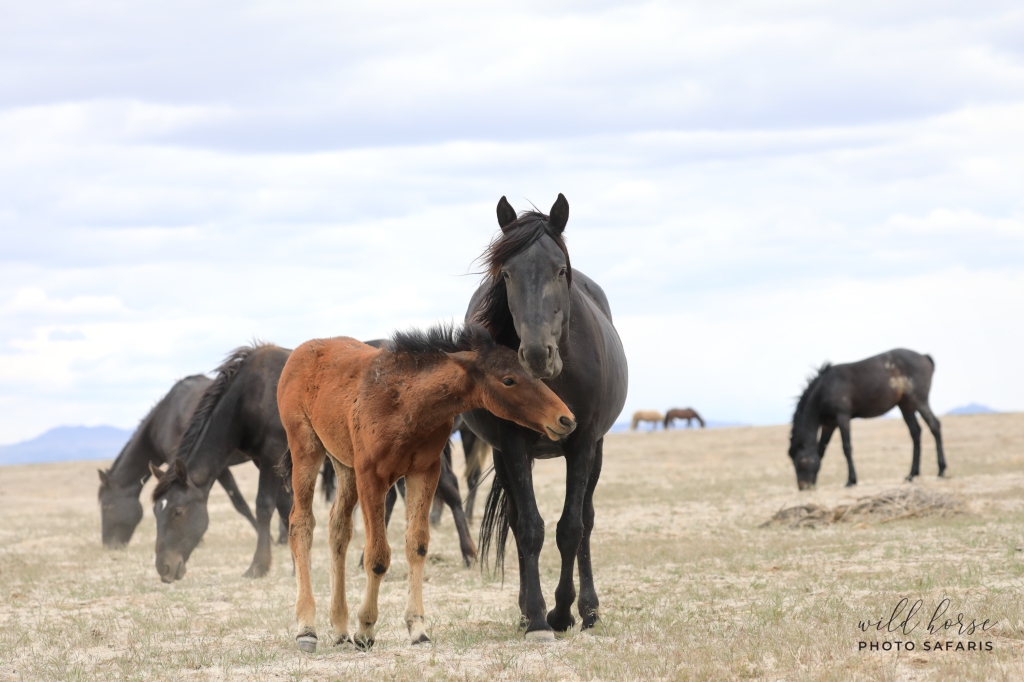
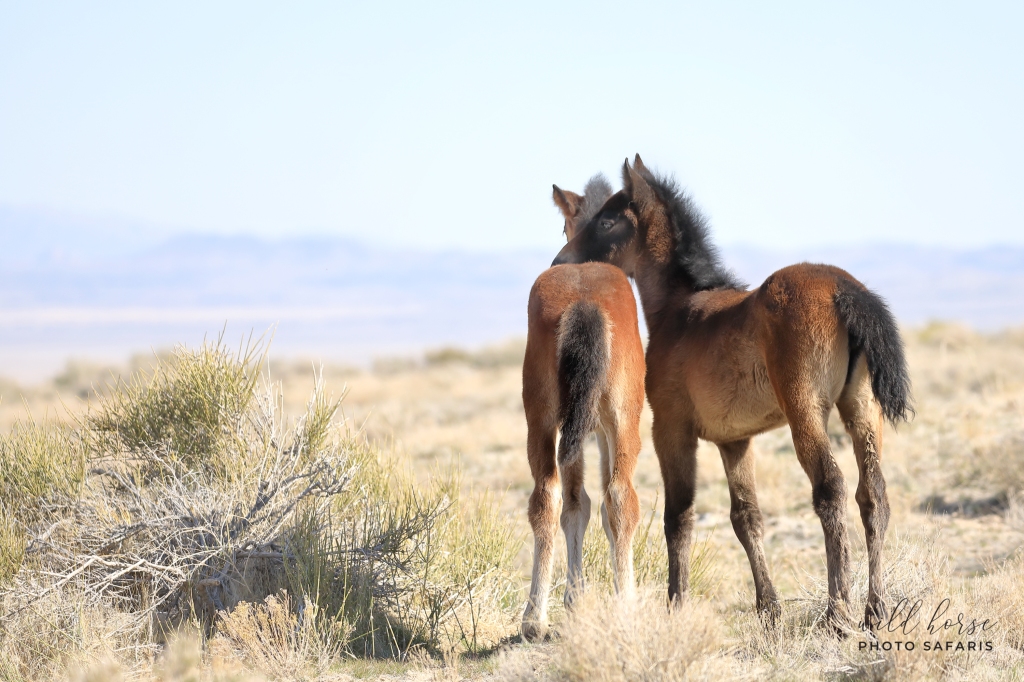

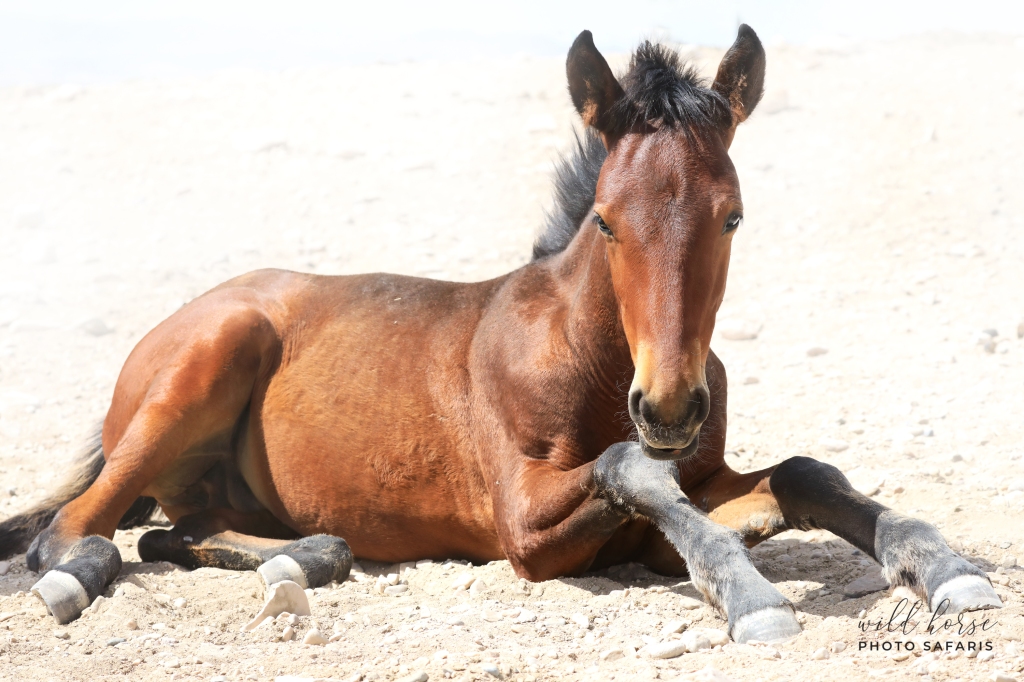
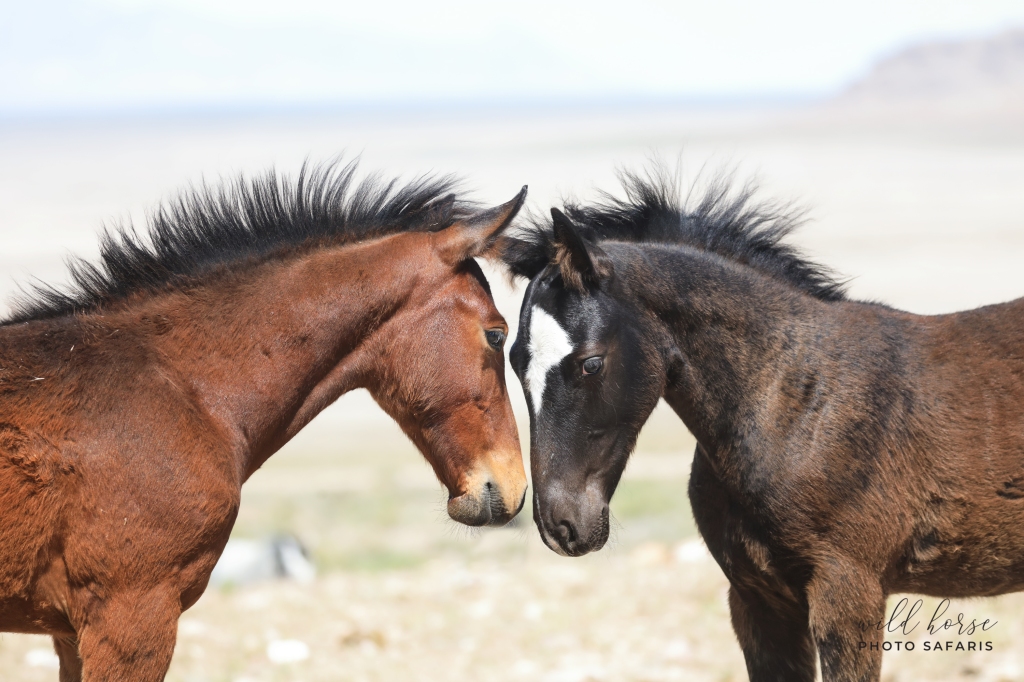
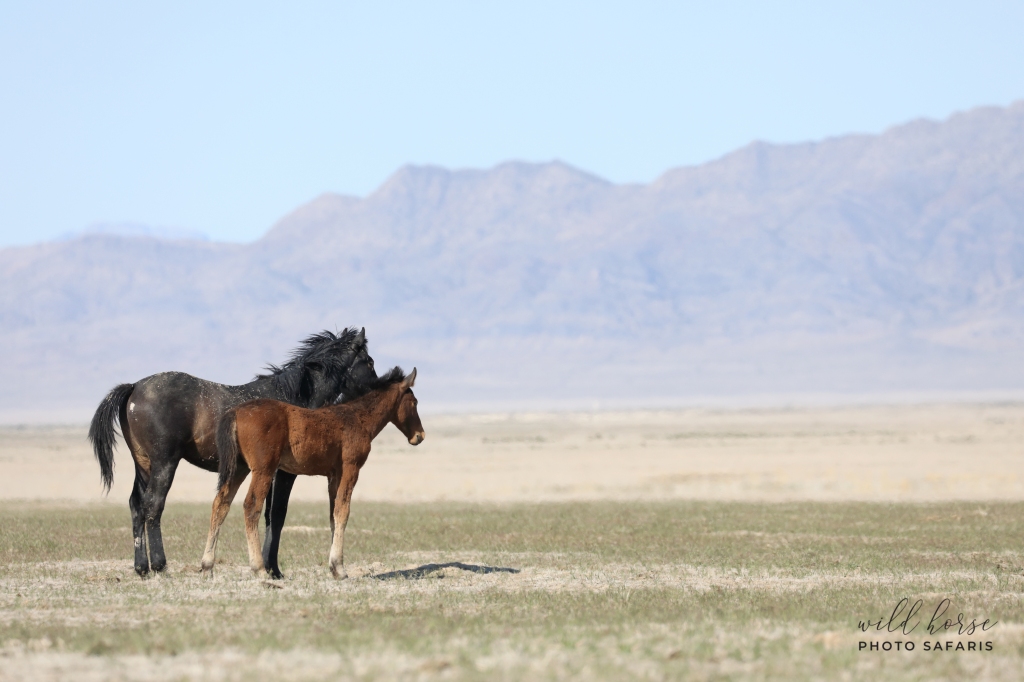
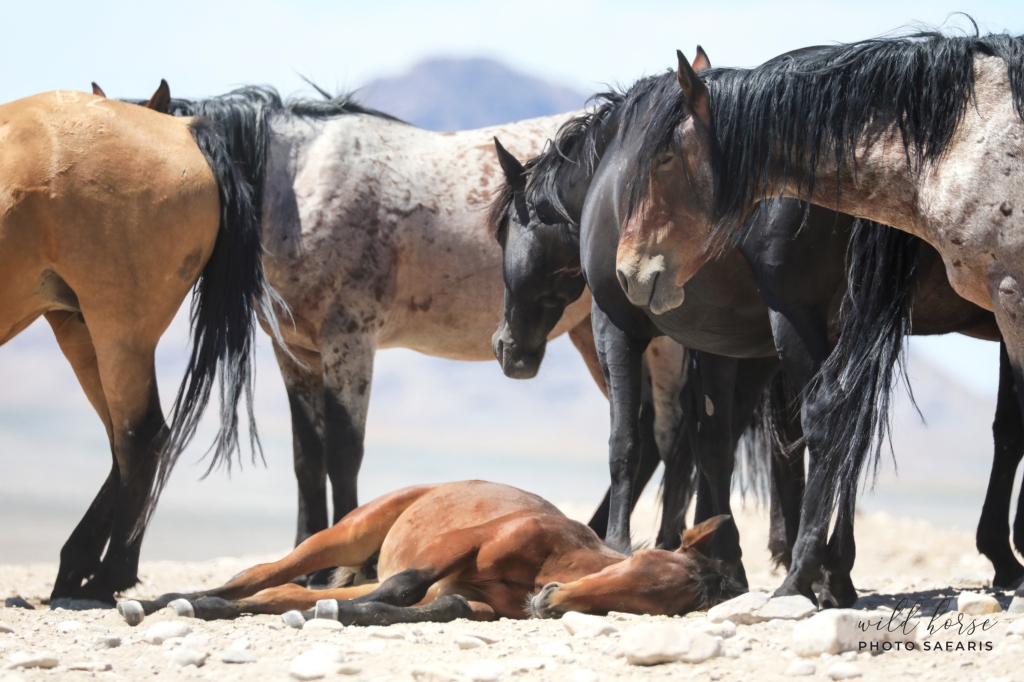

Teton
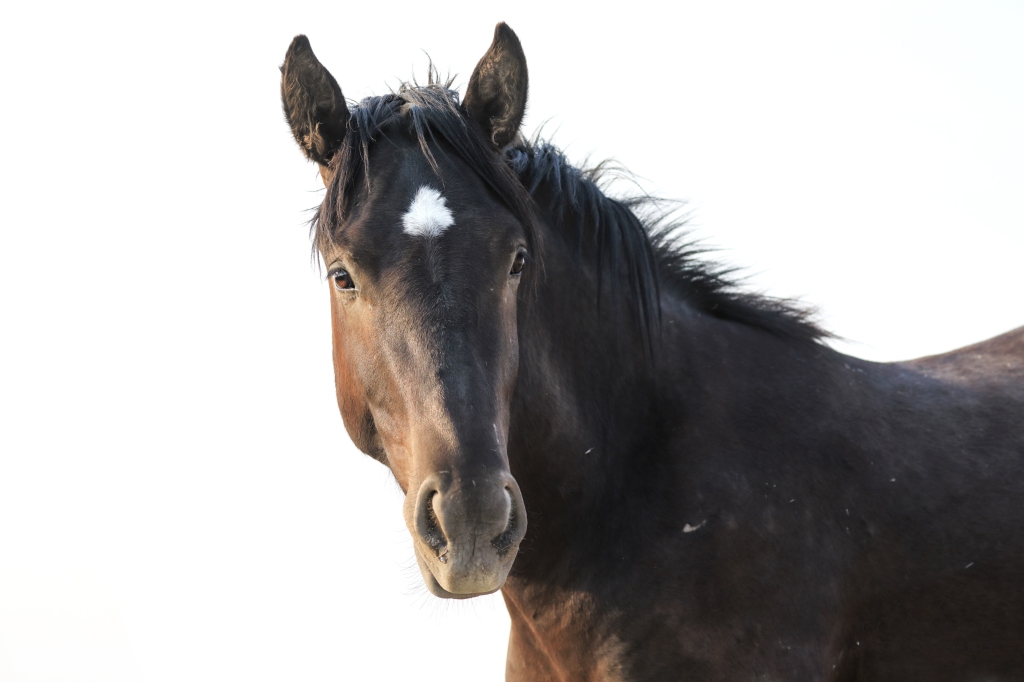
Teton was born in the spring of 2020 into a band lead by the lovely grey band stallion known as Goliath. Teton, Red Bird and Little Star were the three yearling amigos of the Onaqui world and were never more than a few feet apart. Little Star was born to mare Marley a tad later that spring, and Red Bird was the last to be born in early fall to a striking grey mare called Misty.
The three amigos were always such a joy to be around! They were constantly trying to test boundaries with Little Star in the lead and Teton as her trusted backup. And never to be left behind came Red Bird bringing up the tail end of the trio trying to be as brave as his two besties. All three babies entered their gangly, fluffy teenage stage as winter began to envelop the west. As spring brought with it warming temperatures and melting snow the babies began to shed their thick winter coats.
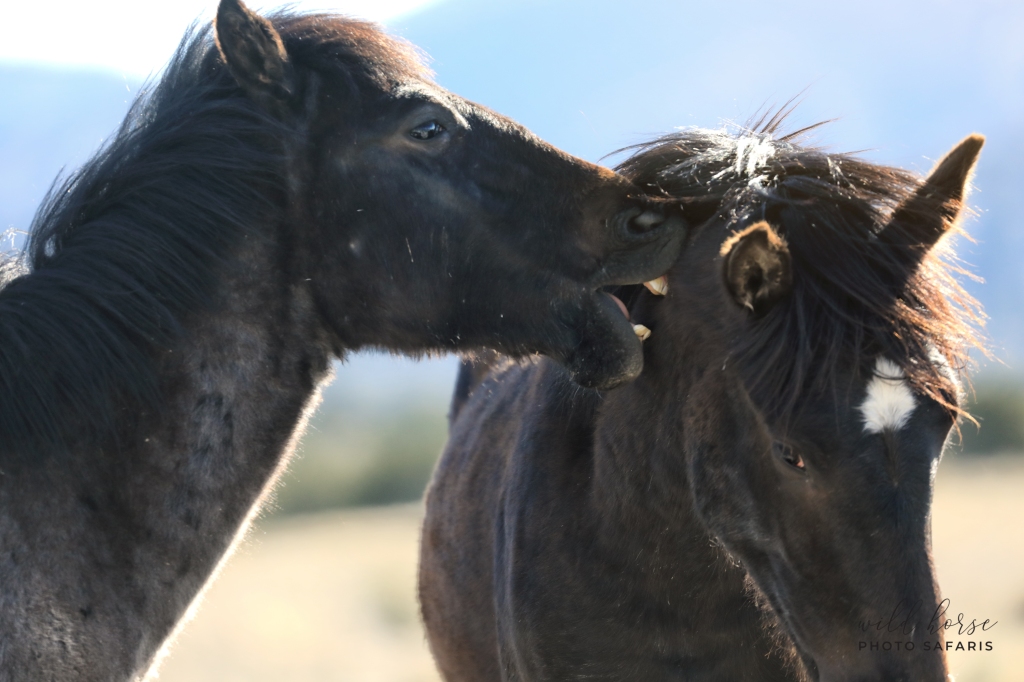
Months quickly passed and spring turned to summer all the while the three amigos grew and grew. And as luck would have it Marley had become pregnant by a handsome, brawny roan stallion somewhere along the way and she gave birth to a little baby bay colt who would become known as Dreamcatcher far and wide. The three amigos doted and fawned over the newest addition and while Red Bird stood guard while Dreamcatcher lay soundly sleeping under the summer sun Teton began exploring further from home finding friends in nearby bands to practice his sparing, tussling and grooming.
Teton has turned into just that – a mountain sized gelding but despite his size he never lost his sweetness or gentle heart. There was absolutely zero question when the news of his capture and transfer to the Delta facility became known that he would be adopted and brought home to join Jen’s expanding fur family and stay safe in the West Utah desert where he’d been born and raised a short distance away. His calm, assured demeanor will be an absolutely perfect fit for Cheyenne Grace and her little side of spunk and he’ll be the best role model big brother Dreamcatcher could ask for.
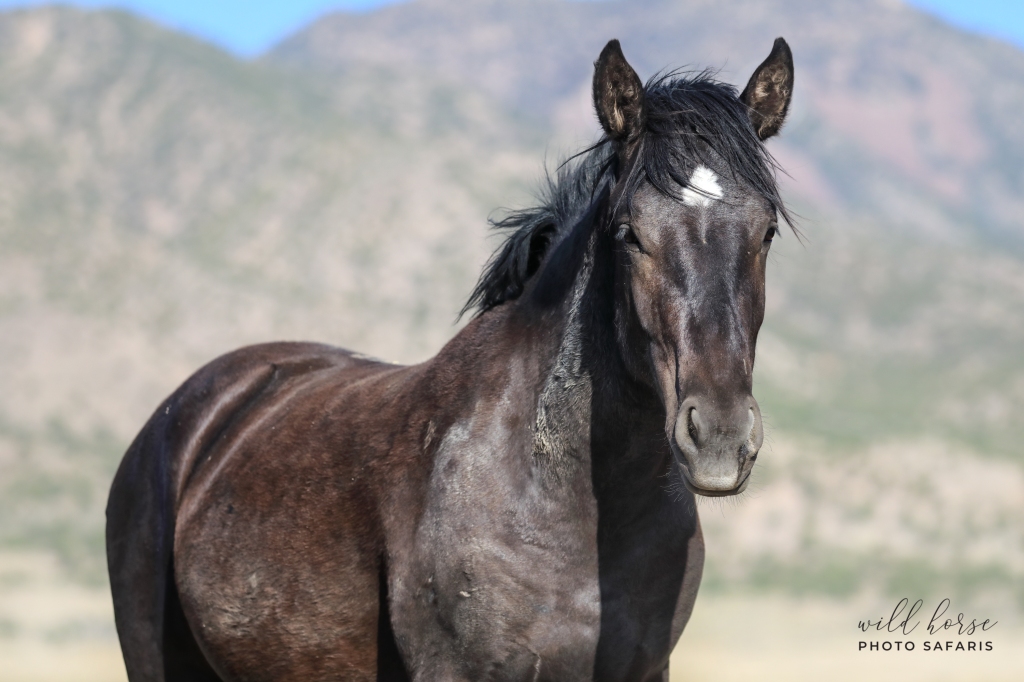
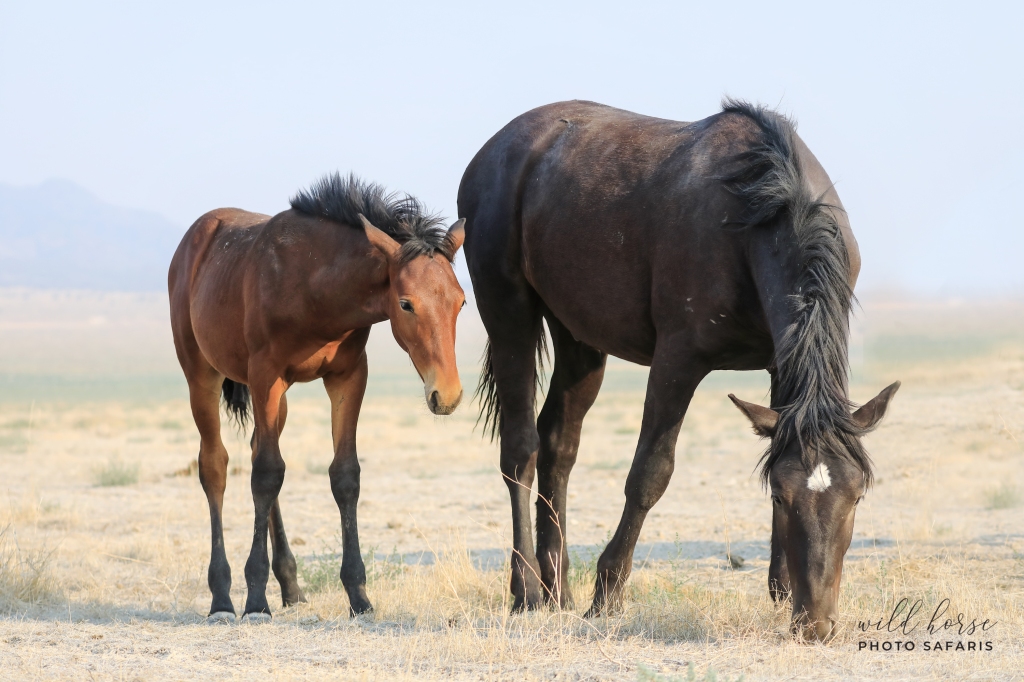

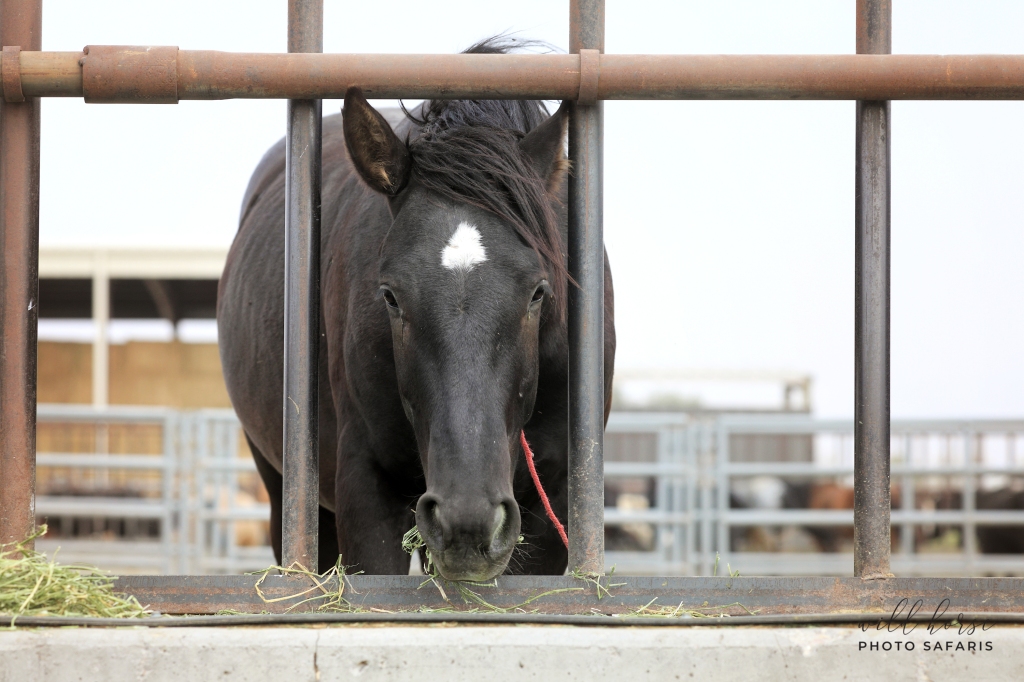
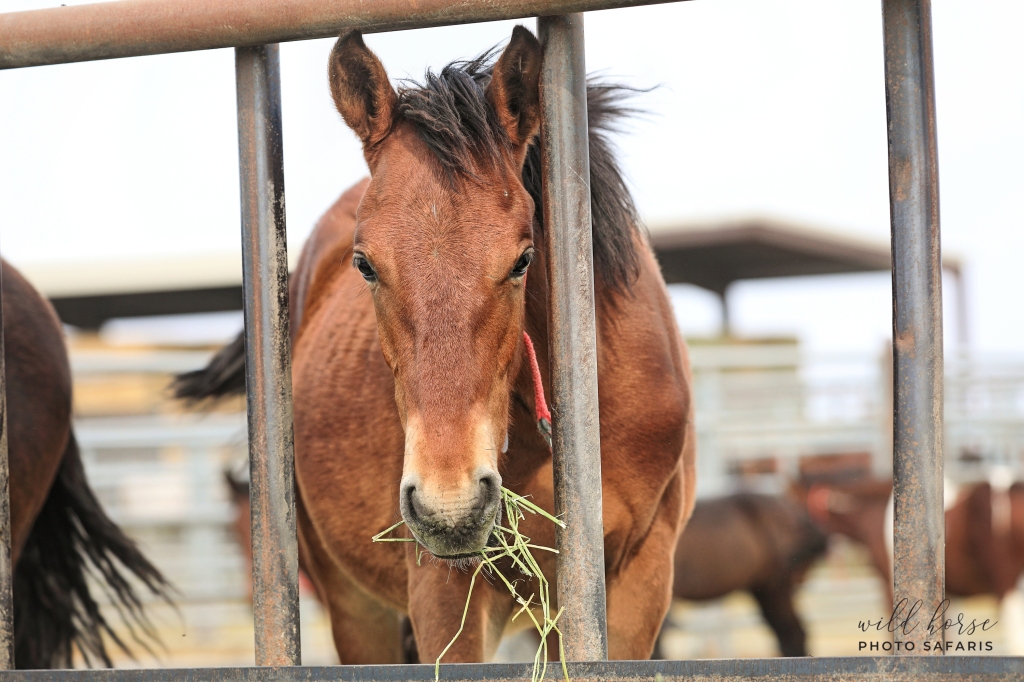
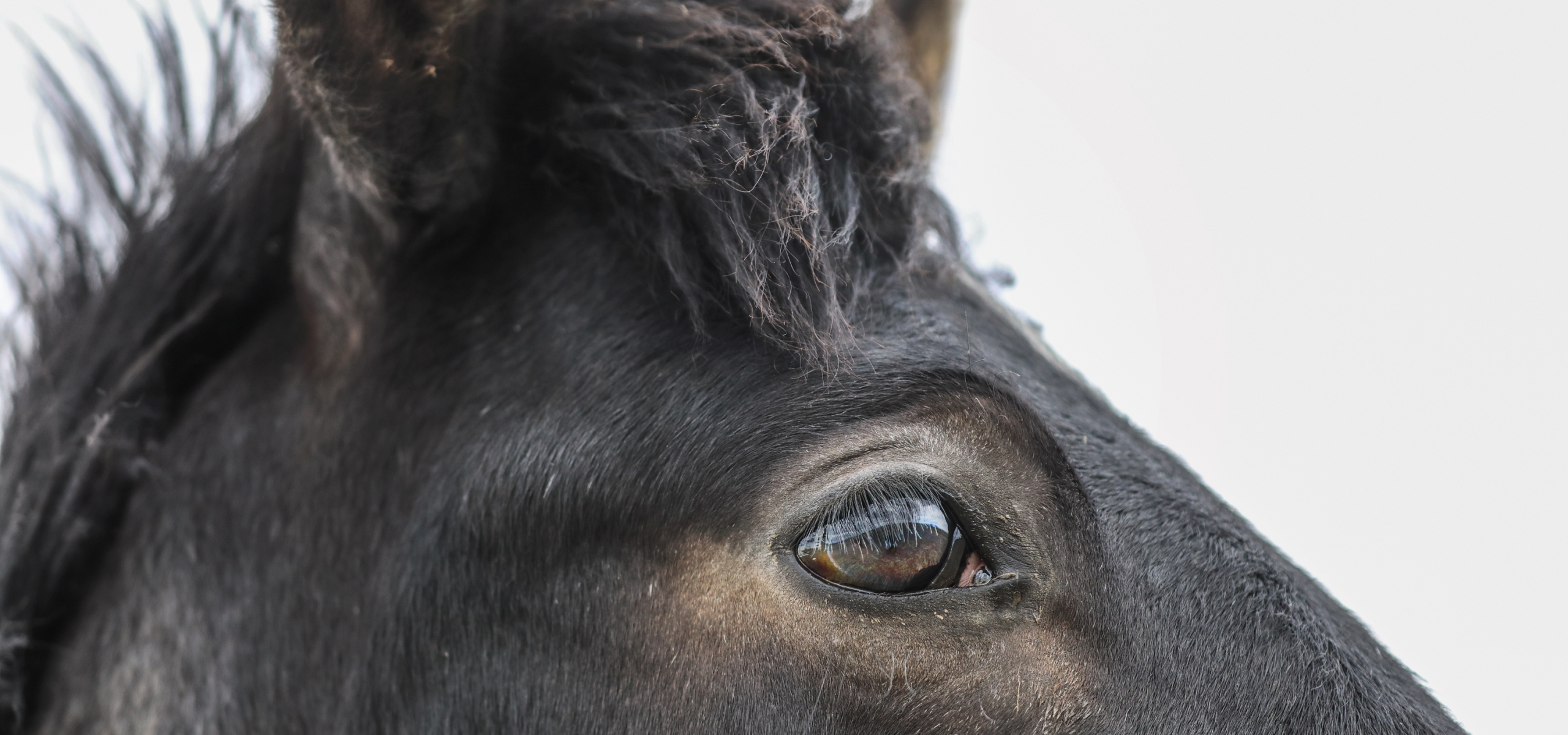
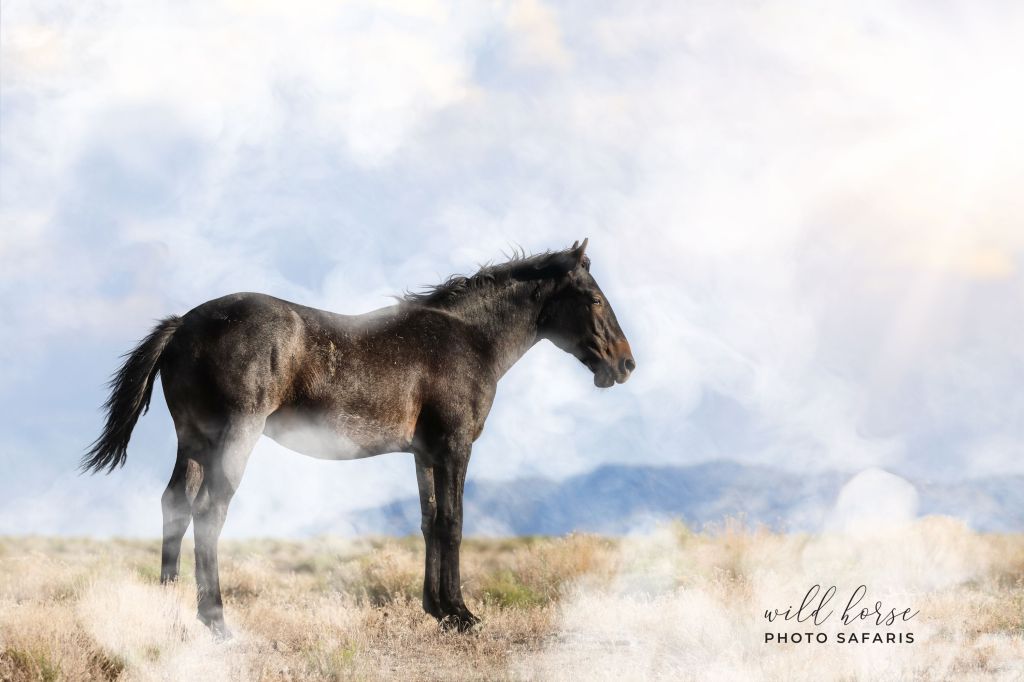
For months I tried to chronical stories from the range to tell of the horses that remained, the horses who were removed and the horses who sat in limbo somewhere in between. Then in September those stories about the aftermath abruptly stopped. At the time I didn’t see the correlation, but looking back at how things unfolded it’s more clear to me that sometimes in life there simply are no more words to share.
On September 9th I made my first of many long drives to the Delta short term holding facility where the Onaqu horses were being housed while waiting for the adoption event to commence. The first time seeing those beautiful souls who once roamed freely among the plains and through the hillsides of the West Desert behind bars in captivity was difficult to say the least. Regardless of the impressive cleanliness of the facility or the calm demeanor of the horses it’s still overwhelming to see spirits once so free and now know they likely will never been again. It’s just something I relate to in my core.
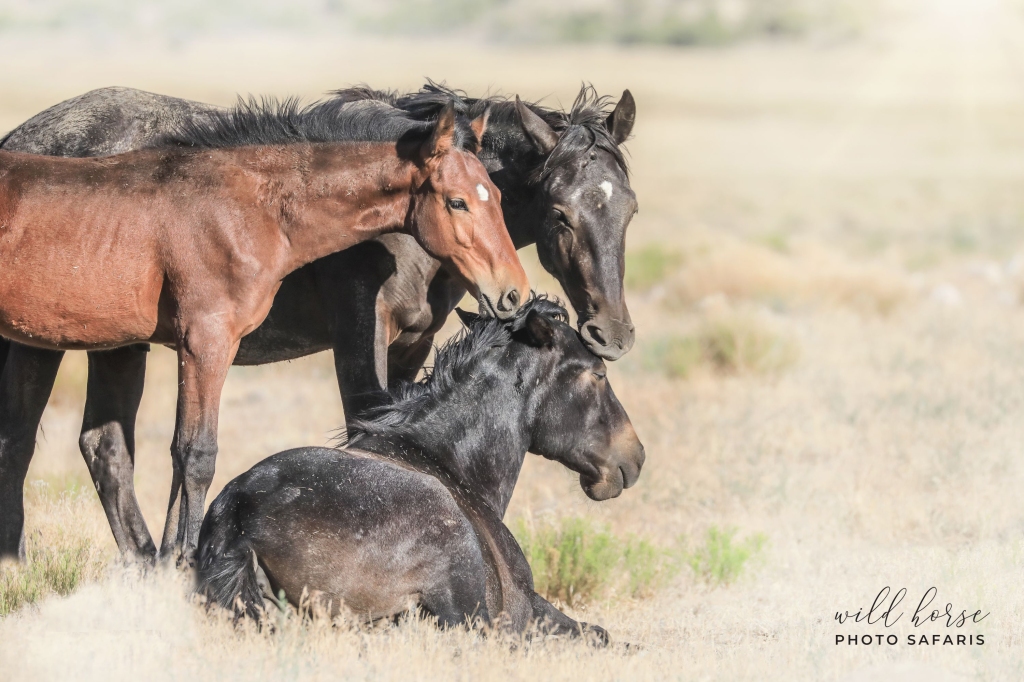
After several hours slowly walking aisle by aisle and greeting so many old friends I came across my dear Red Bird. I didn’t notice him right away, but I was filming on my phone talking to another love of a horse from down south and over to the side you can see little Red Bird peeking his head around to see me then he pushed his way right up to the bars to snuffle my hand and take some hay. His little almond shaped eyes wide and bright, his coat shinny and starting to prominently show more grey just like his dad Goliath and Mom Misty. He had a fat little tummy and we were all so excited to see that the tumor on his lip was no longer red and inflamed, but had healed over and the swelling had gone down since I last saw him in July the day before he was captured.
4 days later on Monday, September 13th without any warning Red Bird was euthanized by the BLM.
I showed up on the 15th and after several hours visiting with the horses we were getting ready to leave and I mentioned what a wonderful home Red Bird had waiting for him and it was at that point I was told he was no longer there.
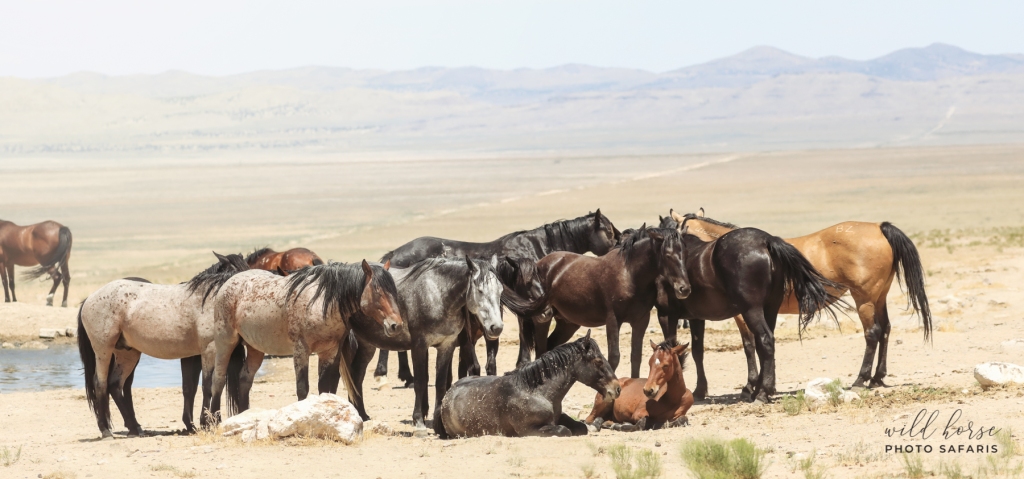
He had been gelded, vaccinated and dewormed then killed. I had been assured he would have the chance to go through the adoption program with all of the other Onaqui. For months I’d been documenting his progress in the wild and taking close-up photos of his lip which I shared with several equine vets as well as the local BLM wild horse & burrow specialist. To her credit she always wanted to give him the benefit of the doubt and didn’t look at it as a particularly concerning injury. Certainly not something that was life threatening.
All of the vets that I spoke with gave me the same diagnosis – Equine juvenile mandibular ossifying fibroma. It’s not good. You’d think after hearing it once, twice, maybe I’d accept it, but I just kept hoping for a miracle I guess. The good news is that it is curable if caught early on and removed. However with Red Bird, it first presented in mid-January 2021 so by the time he was captured the fibroma had grown to a size where it had entered his lower mandible. To remove it completely would mean to remove part of his jaw bone which I never felt good about. Keeping a wild animal alive, but removing part of its lower jaw didn’t seem like it was fair, or would allow him a quality life.
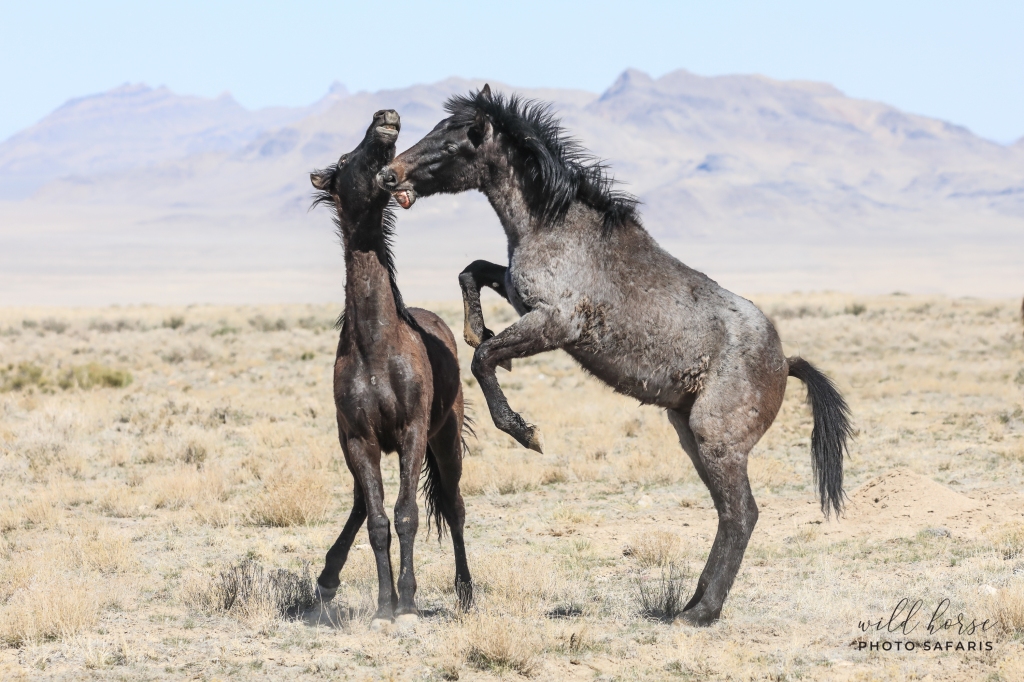
That said, he was an otherwise very happy, healthy, joyful little horse. Did he have a condition that was terminal? Yes. But none of us are granted a forever life, neither are horses. So as long as he was happy, healthy and comfortable I felt very strongly he should be given that life. Whether it was 10 months or 10 years there’s no way anyone could have known. The tumor would eventually grow to a point where it would impact his jaw alignment or teeth, but for now his teeth were perfect and jaw bone was straight. I hadn’t seen any indication of it growing since April so it might have stayed manageable for months or years – who knows. But now he’ll never get that chance.
That one little horse started a landslide of a movement to save the Onaqui and with it Red Birds Trust was formed. Red Birds “Trust” isn’t actually a “Trust” at all, it was named because it was all about earning his trust and saving him, one little fuzzy brown turning grey horse from the south desert. Son to beautiful Misty and to the famous Goliath. The only south horse to manage to escape the helicopters.
Just as the formation of the non-profit and efforts to save the Onaqui horses was far bigger than me, so became saving Red Bird himself. Knowing his medical prognosis prior to the roundup I was so torn. I knew I was going to be adopting horses myself, but did I have the mental and financial capacity to give him the best life options that he deserved? What would that even look like? I will forever be grateful for Clare Staples and Skydog for stepping up without hesitation to take in Red Bird and to give him the best life a little wild horse could ever ask for. Especially after what he’d already been through.
So Red Bird was happy, otherwise healthy and had a dream home waiting for him the second that the adoption event was over. But his little life was cut short out of the blue and we were all caught very off-guard and absolutely devastated.
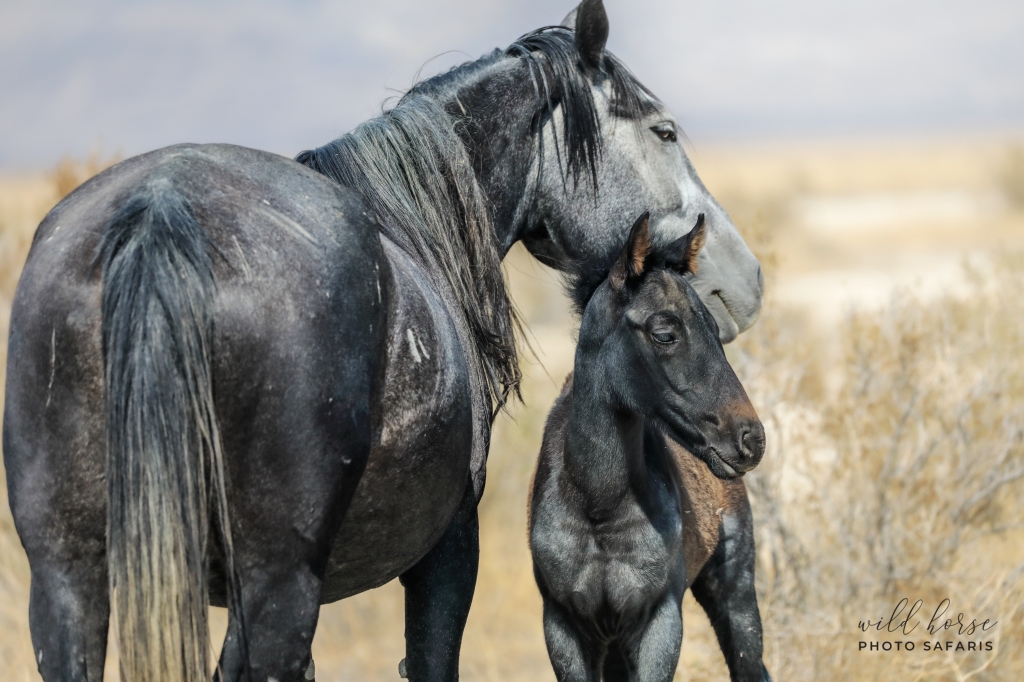
It was then I stopped writing. I’ve struggled since that day trying to know when the “right” time would come to share what happened. How to share it. How to even process it. I’ve talked to local BLM staff at length many times to try to wrap my mind around how sometime like that can be allowed to happen for a horse who has such a perfect home waiting for him. Who was otherwise perfectly happy and healthy.
We are all in agreement that the prognosis at some point in time would end up being terminal. But when that time would have come is anyone’s guess. If the Onaqui were going through an in person auction the BLM handbook allows for an adopter to sign off on acknowledgement of a pre-existing condition and take responsibility for that horse and its future care. However since the auction is online, the way the policies are written do not allow for any horse to be put up for adoption which has a known medical condition like his. So with the decision for an online auction versus an in person auction Red Birds fate was sealed, it’s just that no one knew.
I’m so glad I got to see him one last time and that I inadvertently was shooting video on my phone. His bright little eyes and perky ears as he pushed his way up to the bars to greet me is just so very sweet. I thought it was such a wonderful hello, but had no idea it was a hello and goodbye wrapped into one.
I try not to watch it often because every time it makes me cry. It likely will for a very long time. I woke up having nightmares to the point I couldn’t breathe that sometime horrible happened to the horses the night he died, at the time I had no idea why in the world I’d be having dreams like that – usually the wild ones make me sleep so peacefully. Then I knew.
Now I just cautiously wait for the day the adoptions are over and horses are hopefully happy and transported safely to forever homes. It’s the bright light at the end of the very long tunnel.
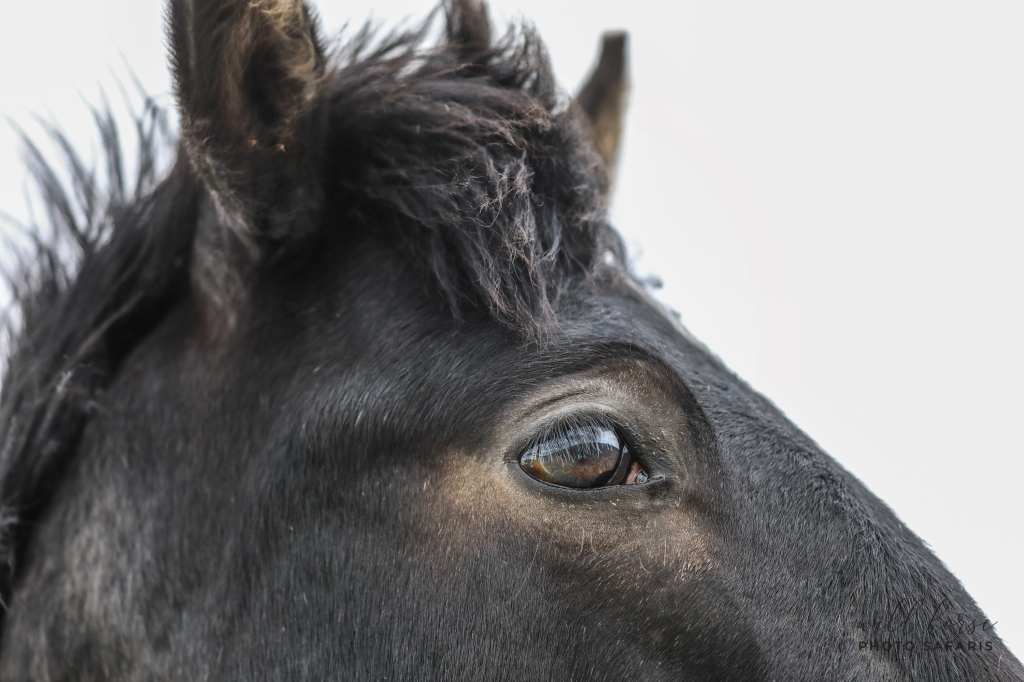
What started out last March as a mission to save one special horse failed him in the end in the biggest way possible despite giving absolutely everything we had to give. But in the process of trying to protect one baby Onaqui, it turned out to be something much bigger.
My heart broke with the news, Clare’s heart broke, so many others that knew this bright light of a horse.
But Red Bird bless him brought me to Cheyenne Grace and I can’t even imagine not having her in my life – she’s an absolute perfect love of a filly and adds endless light and love to every day since I brought her home. Red Bird also opened my heart and mind to even the possibility of adopting “a” horse to begin with and now not only do I have Cheyenne, but I will take two other geldings in the upcoming adoption event and I have no doubt Red Bird would be nodding his head in approval.
His spirit will live on with every horse that Red Birds Trust is able to help in the coming months and coming years. As impossible as it is for me to wrap my head around a system that is so fundamentally flawed that it would rather an animal’s life be extinguished than let it live in comfort, peace and happiness at a qualified forever placement.
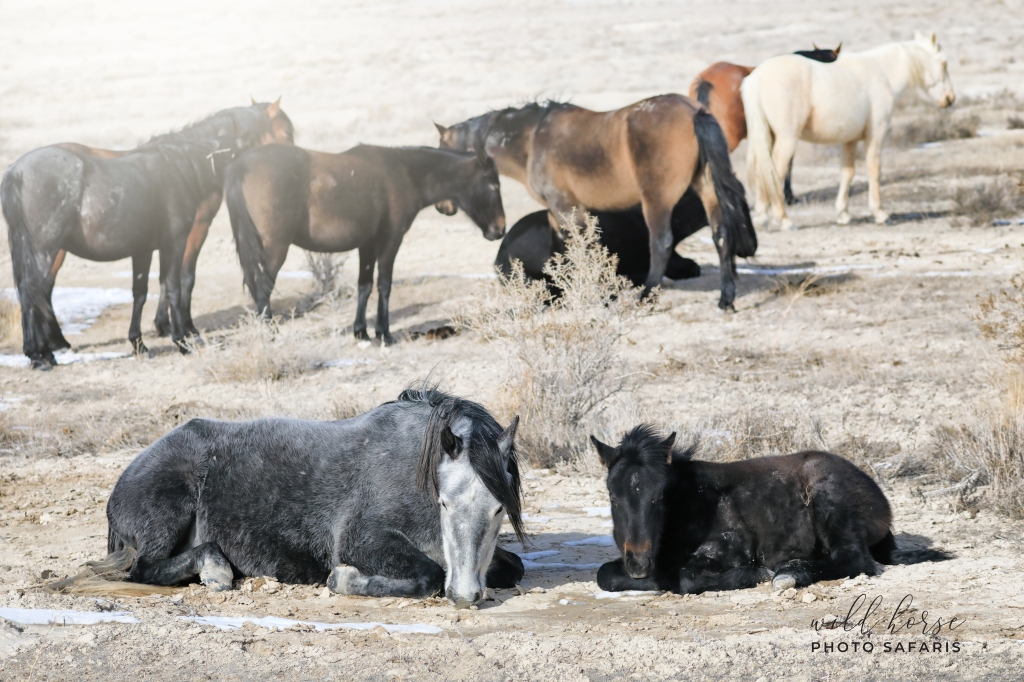
I try to focus on how grateful I am that this curious little foal and his wild horse friends let me into their wonderous lives and taught me so much in such a short amount of time. I have thought it over so many times, from so many angles, just trying to make some sort of sense of such a big loss of a little soul.
Hopefully some day policies can be re-written to allow for independent decision making when it comes to special needs animals and allow for them to have as much of a right to a good life as all the others.
A sincere thank you to all of Red Birds Trust supporters and donors for helping us to help as many of the Onaqui as we can. With every horse adopted, hauled, helped and every fence removed some of Red Birds memory can live on. And an eternal thank you to Clare Staples for opening her heart and soul to so many who would otherwise have nothing. Offering Red Bird a forever home would have simply been like heaven on earth for him. Although I would have cried to see him leave, I know that by offering him a home with you it was the best gift any animal could be given.
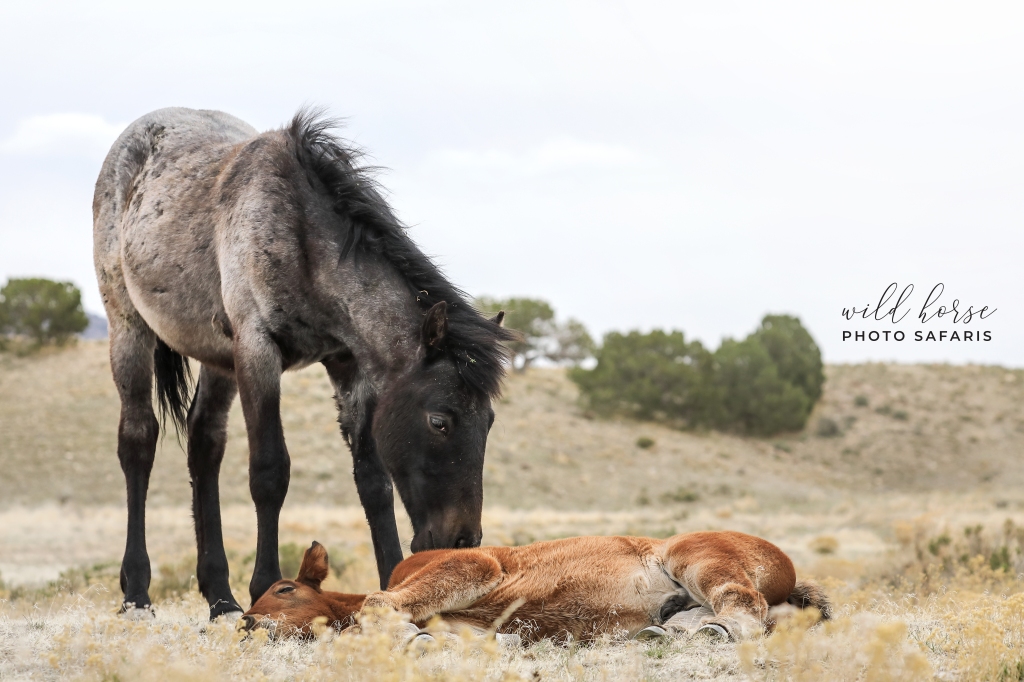
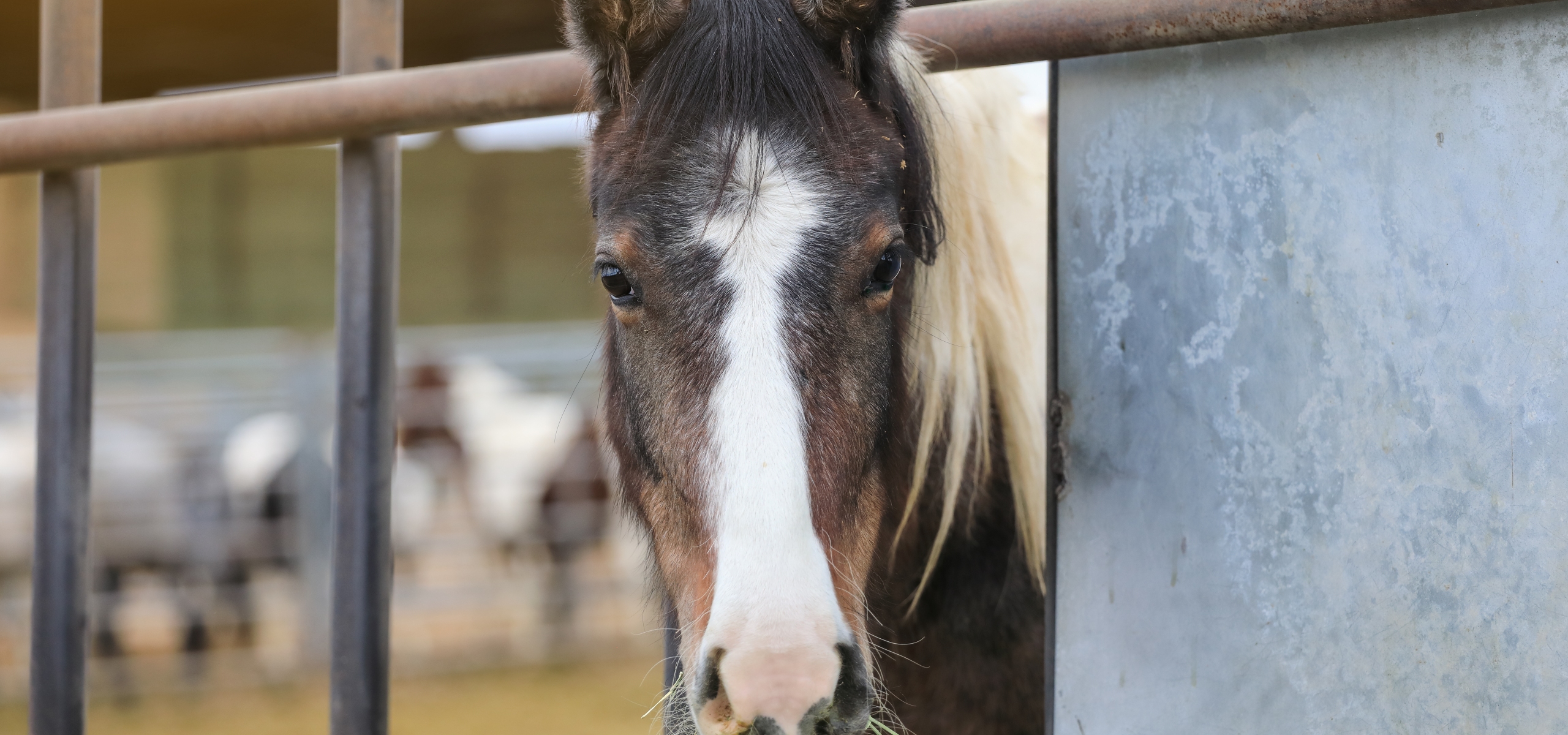
Welcoming Home Cheyenne Grace

It’s seems like ages since I’ve sat down to write. The reasons behind that will be shared in time, but for now, I’m just enjoying the moment where finally there is some happiness to share after all these months of feeling like you’re digging endless trenches and not ever knowing fully if they’ll lead you in the right direction.
Meet Cheyenne Grace.
Cheyenne Grace is officially the first horse that little Red Bird helped to save. Her new life has begun today, October 20th, 2021. 11 months to the day after I uprooted my life in Maui and moved to Utah after falling in love with the wild ones. Once they work their way into your soul there just really isn’t any turning back.
Fast forward to the Onaqui roundup. Fast forward again to the horses being transported to the short term holding facility in Delta. Fast forward one last time to the doors opening to the public after what seemed like a lifetime. I’ve been going to the facility every week to not only try to ID horses, but to spend time with the lovelies that I intend to adopt and to send short videos and photos to other adopters patiently waiting to bring the Onaqui home to some peace, love and healing.
When the world blew up and the roundup was announced, I had only intended on taking one horse – Red Bird – to keep him safe due to his jaw injury. But how quickly plans changed, morphed, and changed again so that now instead of saving one I took a very deep breath and mentally committed to saving three.
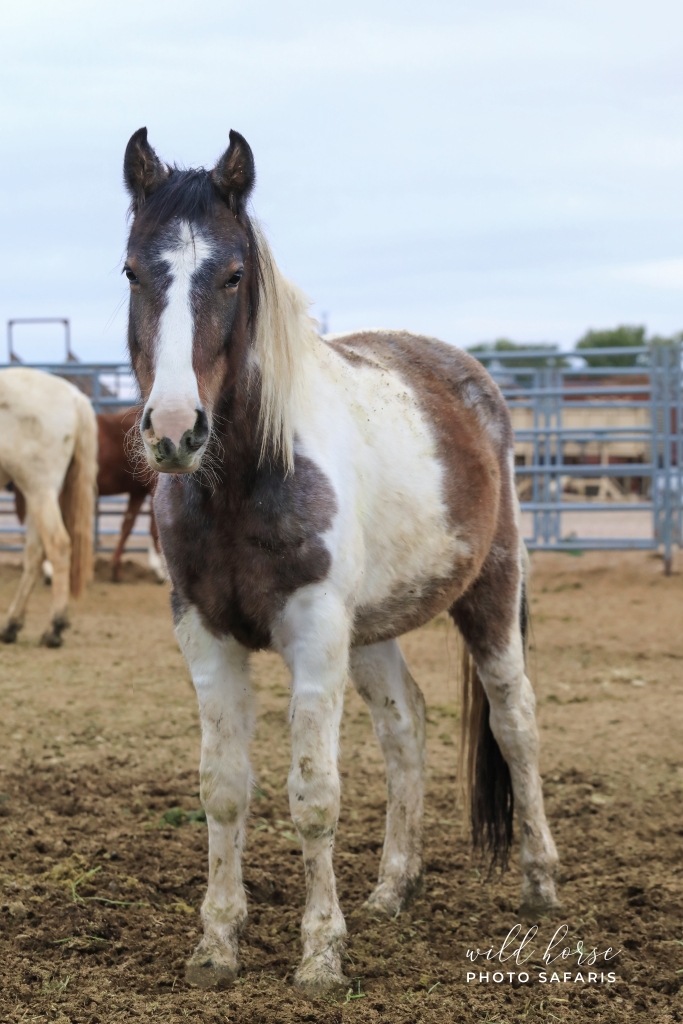
My three were carefully chosen – the first two were a no brainer and I’d literally probably sell my soul for them – and the third was an emotional choice knowing how his life had been turned upside down in the roundup. The start of the online auction is now nearly 2 months away after another delay. An end to a culmination of so many hours of blood, sweat and tears to try to do right by the horses by so many.
The week after I returned from a quick getaway in the Tetons late last month a couple little Swasey mustangs were put out into the general population which had been returned by an owner who said they could no longer pay for hay. There was a pinto gelding and pinto filly returned together – both very cute – both very skinny. The gelding was a flashy black and white and scared out of his wits. The filly was a bay roan pinto and had these calm, gentle eyes that just immediately sucked you in.
Silly me, I took several iphone photos and a little video to put out on social media because it’s no secret that mares are very hard to get adopted, and especially mares who are unknown and in poor body condition. I made her “please adopt me” post and hoped for the best. Until I didn’t. Because it hit me smack square in the face that I needed to be her forever home. She would be the perfect fit that I hadn’t known existed for the boys I’ll be bringing home in a few more weeks.
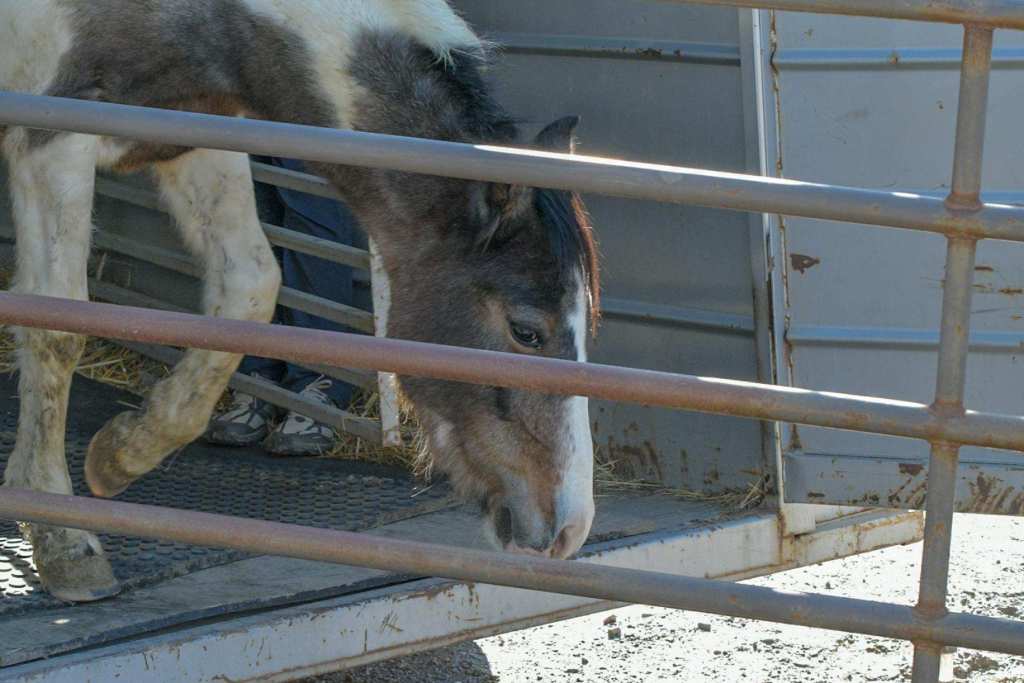
I got up at oh dark thirty and began the trek over to Delta the second it opened on Monday morning to fill out paperwork and make everything final. I spent time outside her pen taking photos and talking to her so atleast she’d have some idea of who I was. There’s just been so many changes for her in such a short life. First a roundup, then to be separated from her family in short-term holding, then to be adopted and not cared for, then returned. It’s a miracle she’s managed to retain her calmness and loveliness through it all.
So right now she’s thin, her mane has been half chewed off, she has her thick winter coat making her look like a shaggy bedraggled little thing but I still think she’s positively beautiful and with time I can’t wait to see her become what she’s just waiting for a chance to grow into and for her to be the new best friend and band member to my boys as soon as they’re able to come home as well.
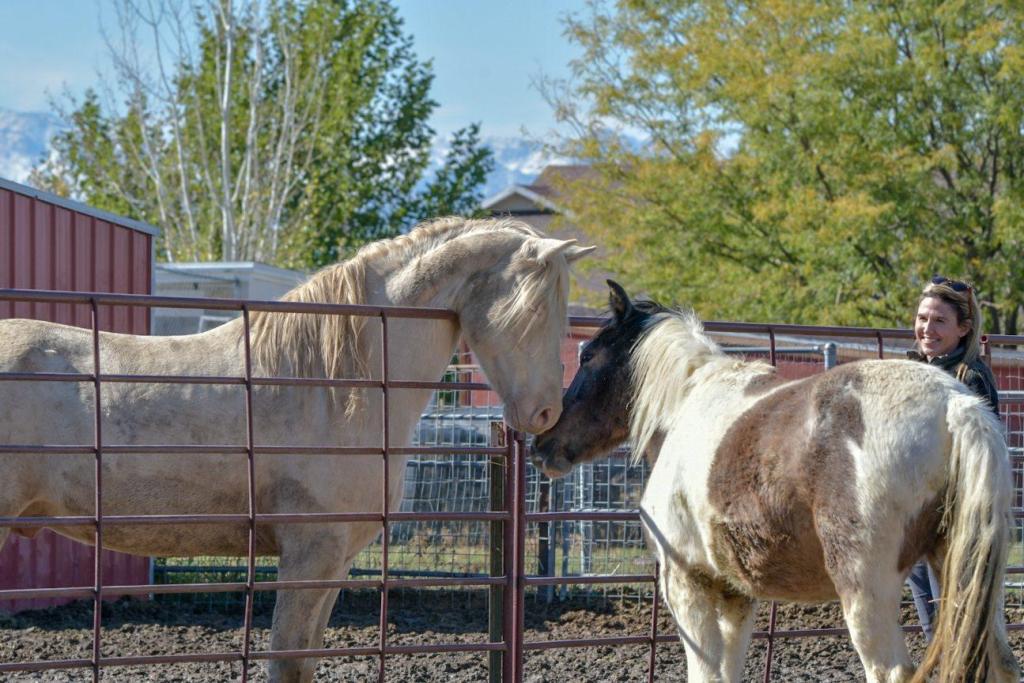
Who would have known after so many years on a little tiny island and being consciously grateful for every day I had there that it would all come to an abrupt end only for me to be shoved by the “universe” into the desert with a herd of wild horses only to then be in a place in life where I can try to offer them a wonderful forever life for both of us.
Truly grateful once again. Somehow life always has a way of working out.
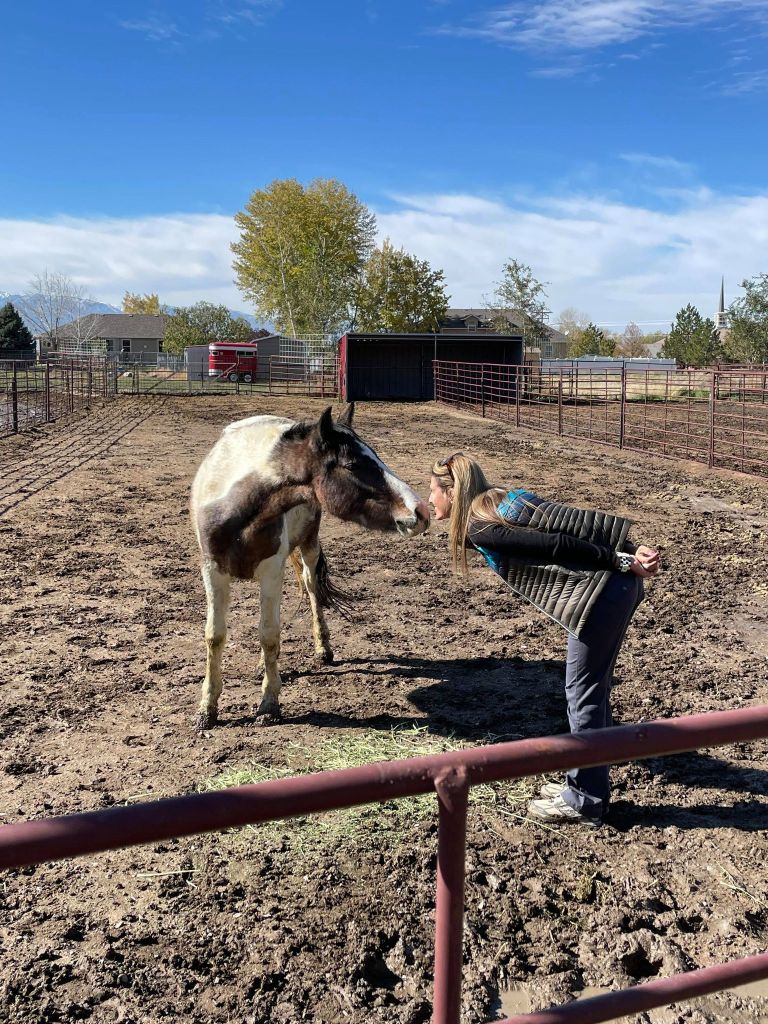
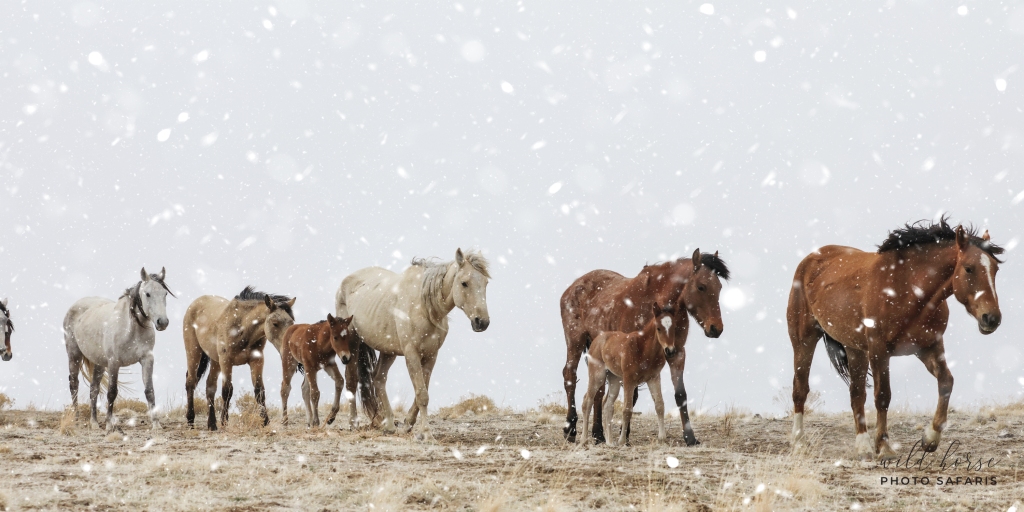
It’s been absolutely astounding to see the level of international support pouring out to try to save America’s iconic wild mustangs. Here in the states, American’s have been trying everything possible to make our pleas heard and ask that this war against wildlife be stopped. Unfortunately our government has failed universally across party lines. Instead of ramping up efforts to preserve the environment and the wildlife which calls it home, it’s being taken away at a mind boggling pace. The war against wild horses has never been so prolific.
Horses have been proven to be in the America’s long before the settlers arrived and are part of our longstanding ecological history. A common argument for removing wild horses from public lands is always that they are simply “feral” animals that need to be controlled and/or eradicated. However paleontological evidence suggests otherwise.
The majority of American’s oppose roundups. That is true more today than ever. But our elected officials turn a blind eye their own people’s pleas.
THE WILD FREE-ROAMING HORSES AND BURROS ACT OF 1971 (PUBLIC LAW 92-195)
§1331. Congressional findings and declaration of policy Congress finds and declares that wild free-roaming horses and burros are living symbols of the historic and pioneer spirit of the West; that they contribute to the diversity of life forms within the Nation and enrich the lives of the American people; and that these horses and burros are fast disappearing from the American scene. It is the policy of Congress that wild free-roaming horses and burros shall be protected from capture, branding, harassment, or death; and to accomplish this they are to be considered in the area where presently found, as an integral part of the natural system of the public lands.
Further the Act goes on to state:
For the purpose of furthering knowledge of wild horse and burro population dynamics and their interrelationship with wildlife, forage and water resources, and assisting him in making his determination as to what constitutes excess animals, the Secretary shall contract for a research study of such animals with such individuals independent of Federal and State government as may be recommended by the National Academy of Sciences for having scientific expertise and special knowledge of wild horse and burro protection….
To read the full act click here
If you’re so inclined, you can read the complete 2013 National Academy of Sciences Review here that systematically details the Bureau of Land Management’s failures to properly manage America’s Wild Horses and Burros and makes detailed recommendations on how to correct each area of mismanagement from a sound, scientific perspective. To date none of the suggestions have been implemented.
The National Academy of Sciences review is particularly important as it is an independent review based on scientific fact based evidence and takes into account each section of the 1971 Wild Horse and Burro Act. It truly is the best tool out there to cite if we want to see a change in this dysfunctional, disorganized and destructive way of “managing” our nation’s treasures.
Now to some ideas of how we can work together with our international friends to draw attention to the decimation of our wild horses and burros before it’s too late. Approximately 60,000 are set for removal of the next 3.5 years. That’s in addition to the 50,000 currently housed in government facilities across the US. Astounding numbers I know.
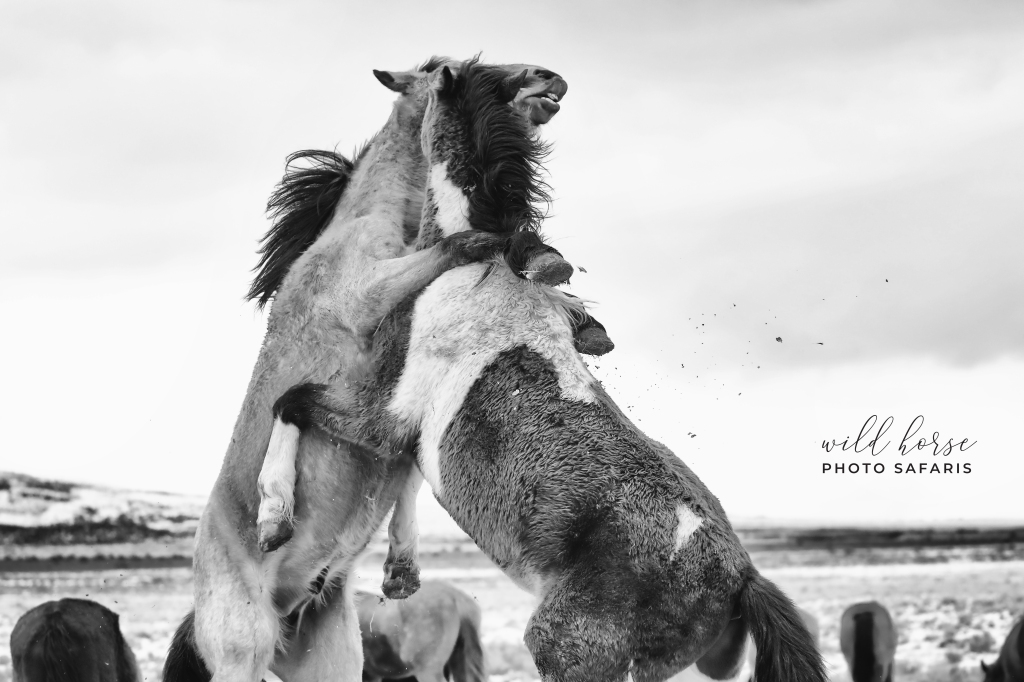
For Americans
The following are a list of representatives in the United States who are friends of our horses (and other wildlife) along with their contact information:
- Cory Booker – Senator – New Jersey (202) 224-3224 Washington DC office
email: press@corybooker.com
2. Steve Cohen – Congressman – Tennessee (Committee of Natural Resources) (901) 544-4131
Mailing Address: The Clifford Davis/Odell Horton Federal Building
167 North Main Street, Ste 369, Memphis TN 38103
3. Bob Menendez – Senator – New Jersey (202) 224-4744
https://www.menendez.senate.gov/contact/email
4. Dina Titus – Congresswoman – Nevada (202) 225-5965
Mailing Address: 495 South Main Street, 3rd Floor, Las Vegas, NV 89101
5. Raul Grijalva – Representative – Arizona (Committee of Natural Resources) (202) 225-2435
6. Brian Fitzpatrick – Congressman – Pennsylvania (202) 225-4276
https://fitzpatrick.house.gov/email
7. Lindsey Graham – Senator – South Carolina (202) 224-5972
https://www.lgraham.senate.gov/public/index.cfm?p=contact-form
8. Dianne Feinstein – Senator – California (202) 224-3841
https://www.feinstein.senate.gov/public/index.cfm/e-mail-me
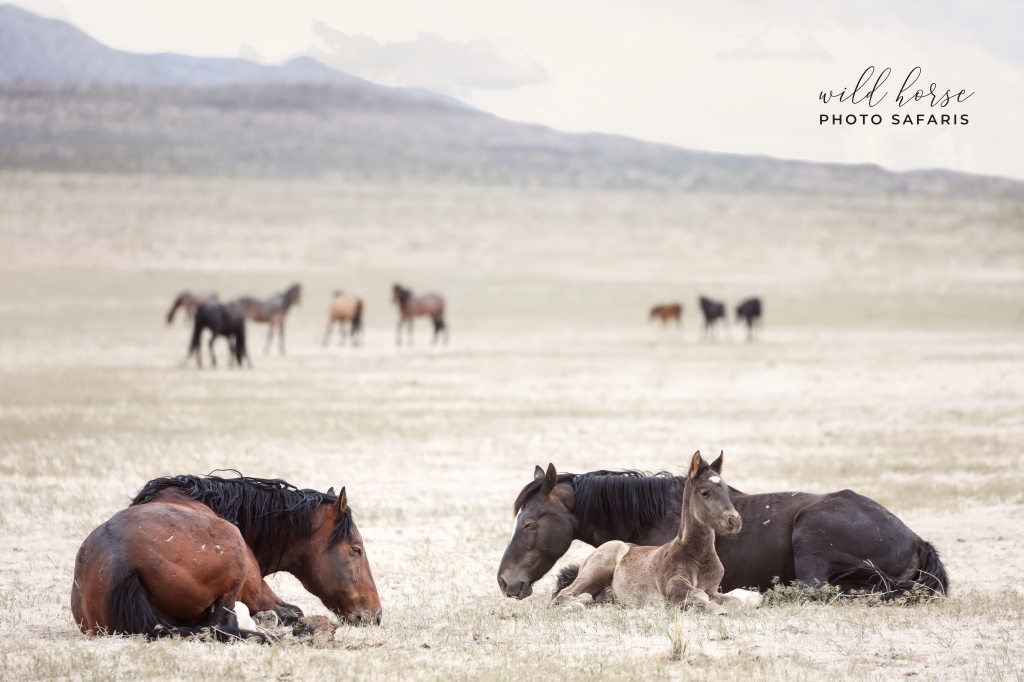
For International Friends
To those of you in other countries, the best suggestion is to contact your Minister of Environment & Prime Minister urging them to contact their American counterparts to reduce or eliminate livestock grazing on America’s public lands in order to protect America’s wild horses and burros in an effort to reduce methane emissions and reduce climate change.
You can expand on the premise in your own words to say that other countries look to the US to be a world leader in many facets – including animal welfare and environmental protection.
You can reach out to international media outlets and request coverage for this very important issue.
Remind them of the facts and the atrocities being committed against these wild horses. Helicopter roundups where helicopters actually strike horses with their landing gear, they force horses to run into barbed wire fences, they cause spontaneous miscarriage of foals, injuries and illnesses and America’s protected wild horses are being sent to slaughter in Mexico and Canada as we speak.
There are several videos and records of these events to be found on Wild Horse Education website.
You can also send the same message to the American Embassy in your country and ask to get a message to the Ambassador. Be sure to say that you expect a response and ask what the embassy is going to do with your comments.
This is an opportunity for the US to step up and prove that they are still committed to bettering the environment and protecting our national heritage. The US has the perfect opportunity to show that with a change of leadership we are renewing our commitment to be a leader in climate change and protecting the well-being of its citizens, its environment and its heritage.
To that point:
If America wants to be an environmental leader it needs to look at the facts:
- The UN has reported that methane emissions must be cut to avert global temperature rise and the acceleration of climate change
- Reducing methane emissions could provide one quick way to fight against climate change
- Livestock are a major contributor to methane emissions worldwide – estimated at 32% of the methane emissions
- Cows produce 5 times more methane than domestic horses (horses produce 45.5 pounds/year vs cows producing 220 pounds/year)
- The American government to allow cows and sheep to graze on hundreds of millions of acres of public lands
- Millions of international followers visit the US and spend their tourist dollars on these iconic wild horses. They also follow their health, wellbeing and plight on social media America’s iconic Wild Horses & Burros. They are America’s living history and must be protected before it’s too late.
- Currently they are being removed at accelerated levels. The stated goal is to remove 20,000 per year for the next 3.5 year. These are the highest removal numbers in decades.
- This is being done while allowing intensive grazing by commercial livestock to continue in Wild Horse & Burro habitat. Intensive grazing, also known as “seasonal” grazing, puts thousands of head of livestock on public lands where the Bureau of Land Management claims there isn’t even enough forage to sustain less than 20% that amount of horses.
- The western US is facing a mega-drought for the last 10 years and livestock production uses enormous amounts of water which is yet another reason to reduce or eliminate livestock from public lands. Livestock is free to graze on private lands rather than decimate lands belonging to the American public.
- The Dept. of the Interior BLM regulation 43 CFR 4710.5 “allows the agency to temporarily or permanently close public lands to livestock grazing, if necessary to provide habitat for wild horses or burros” which should be implemented immediately to preserve our wildlife and our environment.
For other details you can browse through previous blogs I’ve written starting with this one https://wildhorsephotosafaris.wordpress.com/2021/07/24/saving-the-onaqui-pt-8/
I’m not even sure there is a right answer on what to say, who to contact, or how to make our leaders listen and take a stand. All I do know is that if we don’t do something and do it in short order the likelihood of our nation’s treasure being around for our children and grandchildren to enjoy is slim to none. We are watching a mass extermination of species take place before our eyes.
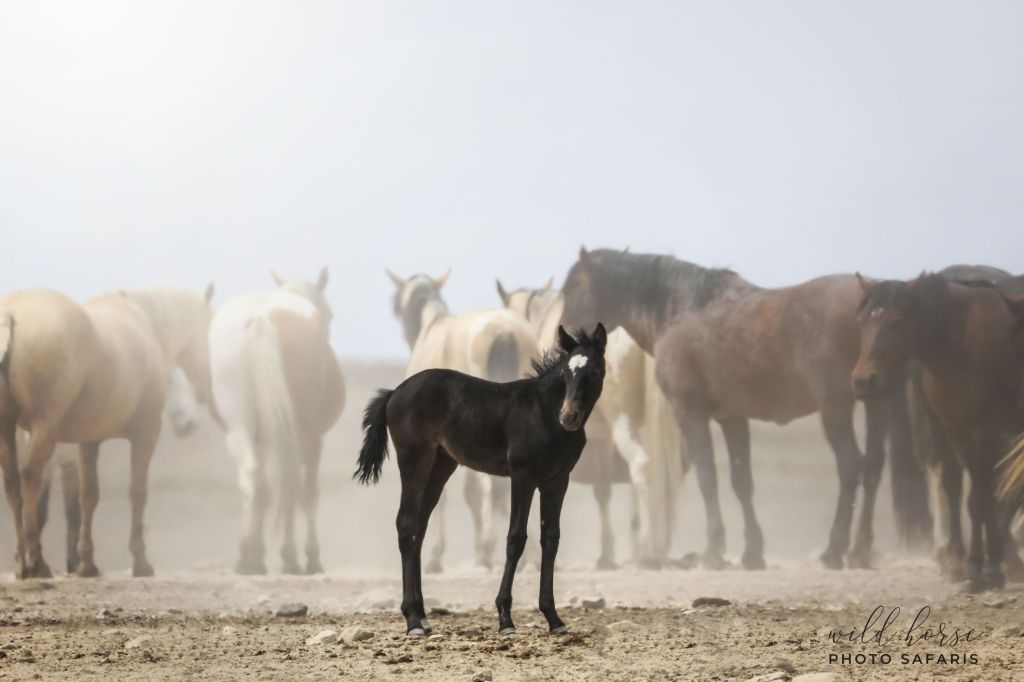
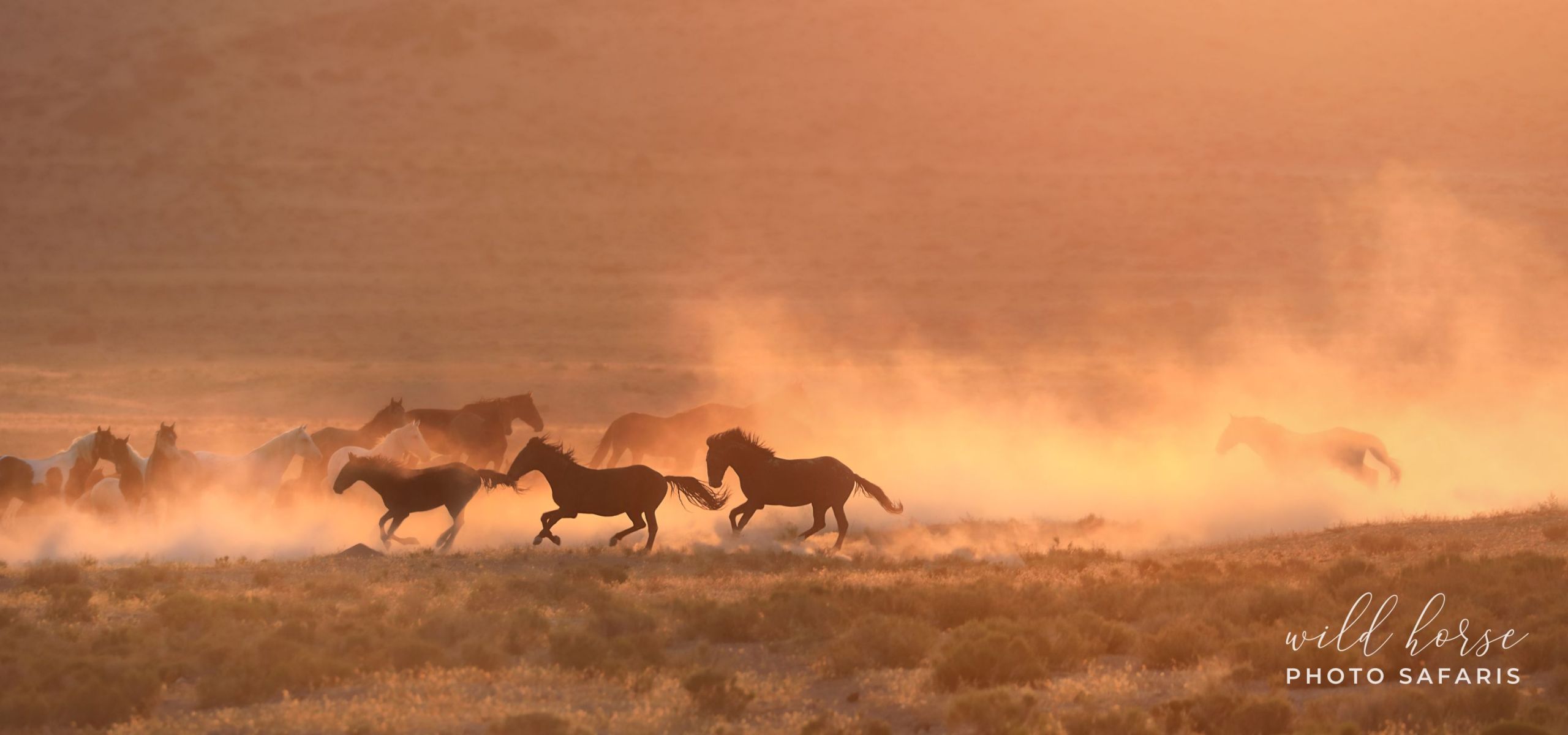

There has been such an outpouring of love, support and passion to help the Onaqui wild horses retain/regain their freedom, their families and their lives in the past few months it is absolutely beautiful to see.
I think it’s important to note before I get started on ways to coordinate and help that there are SO many other wild horse herds in the US that face the same fate. I am so blessed to be able to share stories of our Onaqui and allow people who maybe never met them to get a glimpse into their social bonds and personalities. Just because there isn’t someone doing the same thing at the other less known HMA’s doesn’t mean that those horses are any less special, social or bonded with eachother.
At the very end of this blog I’ve included links to the past 7 blogs which offer not only statistics and facts, but links to back them up, ways to help and people to contact.
Here are some very basic ways that we can all unite together right now and moving forward to hopefully enable change to happen and help our wild horses continue to live wild and free as the national treasures that they are.
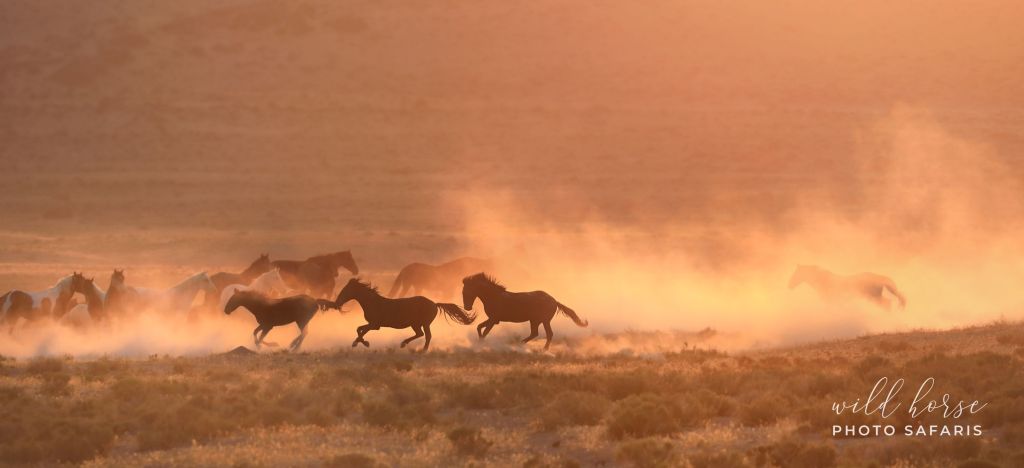
Know the Facts
Probably the most important element of all of this is that we know the facts and are able to speak clearly, concisely, calmly and truthfully before we start reaching out to government officials, NGOs, Sanctuaries, etc. to hear our plea.
Emotions run so high when it comes to saving the lives of those we love, but careening off topic and making threats, rants, unrealistic demands only hurts the cause it doesn’t help it.
(see the link to previous blogs at the end of this article & specific Onaqui HMA info)

Convince Congress and the Senators
Do the research to find out who your states Senator and Congressperson is and make contact. Ask to speak directly to their (1) Legislative Aid
then to their (2) Legislative Director
and finally to (3) the State Representative themselves.
Below are some specific topics to address:
Message #1. The National Academy of Sciences confirmed there is no science supporting the basis (AML) for the BLM’s overpopulation myth.
Background:
– This arbitrary system is called AML = Appropriate Management Level which sets the number of WHB allowed to live on a Herd Area.
– The BLM created a biased system where wild horses are only allowed 20% forage on their own lands while 80% is given to livestock; any horse above the 20% use is considered overpopulation.
– What is happening to our local Onaqui herd is happening to wild horses and burros throughout the West.
– Polls show the vast majority of Americans, Republicans and Democrats, oppose roundups and want their American wild horses and burros managed with humane PZP fertility control on the range.
Message #2. We are calling on Speaker Pelosi, Leader Schumer and President Biden to require the majority of the budget be dedicated to humane, on-range management and stop the roundups.
Background:
– The government plans to round up and add 100,000 wild horses and burros to the more than 50,000 who are already warehoused in government holding facilities.
– The National Academy of Sciences said that roundups are not sustainable … adding more wild horses and burros to government holding facilities doesn’t make any sense; NAS said humane, on-range management is the answer. (NAS Report: https://www.nap.edu/resource/13511/wild-horses-report-brief-final.pdf)
Message #3. This broken system must be replaced with a fair and humane program that America can be proud of! A program that gives wild horses and burros their fair share; keeps them out of government holding facilities and wild and free on our public lands. This is what the majority of Americans want!
Background:
– Wild horses and burros are only allowed to live on 11% of our public lands;
– Even on this small area the BLM only allows them less than 20% of the forage (food) and gives 80% to commercial livestock.
– WHB deserve their FAIR SHARE of our public lands and on-range management with humane birth control should be used to manage population growth while preserving natural, wild behaviors which are so important to these magnificent animals.
– We support win-win solutions that work for ranchers AND wild horses (e.g. voluntary retirement of livestock grazing permits, compensation for non-use of livestock grazing permits, compensation to work with advocates on humane birth control, etc.)
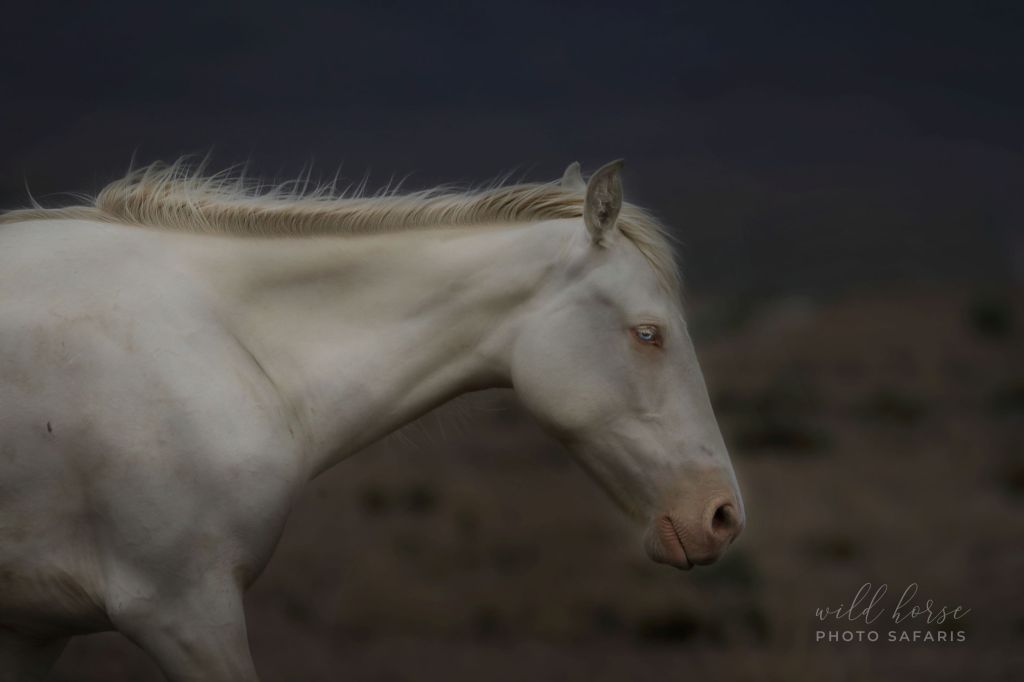
Spread the Word
So many of us are new to this fight. Please don’t think that just because you’re just finding out about roundups you can’t make a difference! Our mustangs and American Heritage needs every last voice that they can get right now and moving forward.
For every person that is sharing the facts and the tragedies and the misspending of our tax dollars to take these horses from their homes on OUR public lands, just think of how many people in turn you can be introducing that have no news of the war that’s currently raging on for our Wild Horses & Burros. Now encourage these people to help to inform others and so on.
Every. Last. Voice. Is. Needed.
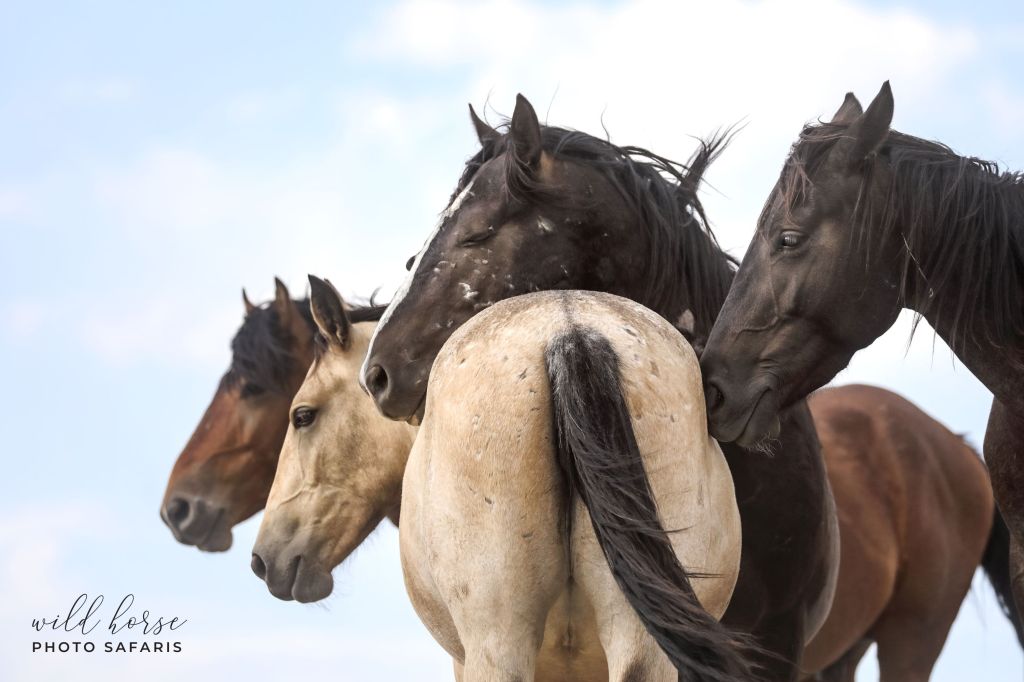
Stay Informed
There are so many ways to stay informed of accurate and up to date information. Below are links to just some of the sources you may want to start following:

Media Outreach
Once you have had an opportunity to gather numbers and facts begin reaching out to both local and national media outlets. And keep reaching out. This issue isn’t going away any time soon so it’s imperative that American’s make their voices heard even to the top tiers of our government offices that we want our tax dollars to go towards 1) Humane On the Range Management 2) Towards protecting this National Treasure as dictated by the 1971 Wild Horse & Burro Act and 3) that they be given their fair share of the forage and water supply on our public lands instead of 80% or more being allocated to livestock grazing. Quote the National Academy of Science report procured by our Government in 2013 – this document is available online at: https://wildhorseeducation.files.wordpress.com/2013/06/13511.pdf and is a wealthy of knowledge and power!

Attend Rallies
It’s so important to at the very least show up in support of our Wild Horses & Burros when there is an organized rally in your area. There’s no need to be yelling or causing a fuss, but there is power in numbers and the more people that show up in support, the more chance there is of news media showing up for coverage and from there the words continues to spread gaining momentum along the way.

Previous links to Blogs Offering Facts, Figures and links on how to Save the Onaqui
Part 1: https://wildhorsephotosafaris.wordpress.com/2021/03/11/saving-the-onaqui/
Part 2: https://wildhorsephotosafaris.wordpress.com/2021/03/20/saving-the-onaqui-pt-2/
Part 3: https://wildhorsephotosafaris.wordpress.com/2021/03/
Part 4: https://wildhorsephotosafaris.wordpress.com/2021/04/22/saving-the-onaqui-pt-4/
Part 5: https://wildhorsephotosafaris.wordpress.com/2021/05/08/saving-the-onaqui-pt-5/Part
Part 6: https://wildhorsephotosafaris.wordpress.com/2021/05/31/saving-the-onaqui-pt-6/
Part 7: https://wildhorsephotosafaris.wordpress.com/2021/06/17/saving-the-onaqui-pt-7/
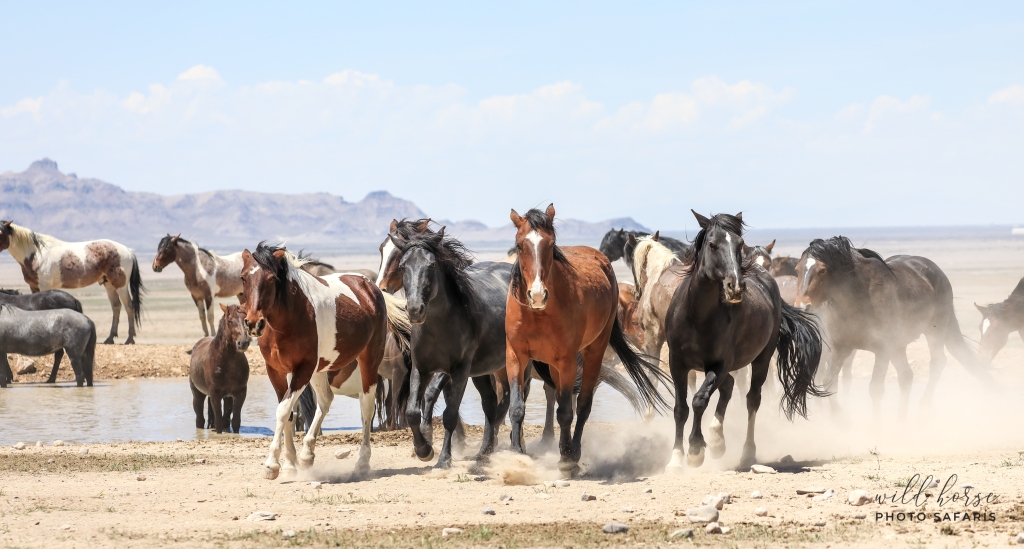
FACT SHEET – ONAQUI – UTAH WILD HORSE ISSUE: AT-A-GLANCE
- BLM-MANAGED PUBLIC LAND USE IN UTAH
Livestock is given 10x more BLM-managed public lands than wild horses/burros in UT.
Livestock is given more than 80-90% of the forage in Onaqui (based on high and low AML for wild horses which is 121 to 210 horses).
Livestock is given 98% of forage allocations on federal public lands; wild horses/burros is given just 2%.
Following are the statistics for UTAH wild horses, burros (WHB) and livestock grazing on Bureau of Land Management-managed public lands:
1,956 WHB allowed on 2.15 million acres (current estimated population 5,746 WHB)
while the equivalent of
108,333 cows* (1.3 million AUMs) are allowed on 22 million acres in the state.[i]
* Cow grazing is used because cows and wild horses are allocated the same amount of forage; there are actually far greater numbers of sheep due to size (5 sheep = 1 cow).
The current estimated population of 5,316 wild horses and 430 burros in Utah comprises just 5% of the permitted livestock grazing on BLM-managed lands in the state.
BLM wants to remove 2/3 of all of Utah’s wild horses/burros.
- 1/3 OF ORIGINAL HABITAT HAS BEEN TAKEN AWAY FROM WILD HORSES & BURROS IN UTAH
Wild horses and burros have been zeroed-out or eliminated from ONE-THIRD of the original BLM-managed public lands in Utah that were designated for their use.
ORIGINAL (1971) CONGRESS-DESIGNATED
PUBLIC LANDS FOR WILD HORSE/BURROIN UTAH: 3,224,891 acres
REMAINING PUBLIC LANDS FOR
WILD HORSE/BURRO IN UTAH: 2,154,458 acres
Private, commercial livestock continues to graze on these zero-out wild horse/burro zeroed-out lands.
The federal grazing fee for 2021 remains the same at $1.35 per animal unit month.[ii]
allows more than any of Utah’s BLM grazing allotments are “common” allotments where more than one permittee is authorized to use the allotment. Grazing on these allotments is authorized through the issuance of 1,462 grazing permits and provide for just over 1.3 million animal unit months (AUMs) of livestock use.
ONAQUI HERD MANAGEMENT AREA GRAZING
Established by an Act of Congress, signed by President Abraham Lincoln in 1863, the NAS is charged with providing independent, objective advice to the nation on matters related to science and technology
10th Circuit Court of Appeals
“While action is mandatory if necessary to acheive a ”thriving natural ecological balance on public lands, the BLM is left with a great deal of discretion in deciding how to achieve that Congressional objective.”
The BLM’s claims of overpopulation are unsubstantiated and based on the unscientific population limits (Appropriate Management Levels – AMLs) imposed by the agency itself. The National Academy of Sciences found “no science-based rationale” for these population limits, and the Tenth Circuit Court of Appeals ruled in 2016 that AMLs are not written into the Wild Free Roaming Horses and Burros Act and the BLM is under no obligation to remove horses just because their populations exceed the agency-created AMLs.
[i] https://www.google.com/url?sa=t&rct=j&q=&esrc=s&source=web&cd=&cad=rja&uact=8&ved=2ahUKEwjQ4Z6e0bjxAhVEpZ4KHdZ3Dj0QFjADegQIAxAD&url=https%3A%2F%2Fwww.blm.gov%2Fprograms%2Fnatural-resources%2Frangeland-and-grazing%2Frangeland-health%2Futah&usg=AOvVaw1D5jrpDgrhLwr8wR1_LmP-
[ii] https://www.google.com/url?sa=t&rct=j&q=&esrc=s&source=web&cd=&cad=rja&uact=8&ved=2ahUKEwiE5_3rz7jxAhXHpZ4KHcwkCtgQFjABegQIBBAD&url=https%3A%2F%2Felkodaily.com%2Fnews%2Fstate-and-regional%2Fgovt-and-politics%2Fgrazing-fees-stay-same-for-2021%2Farticle_051860e4-df2f-5219-8677-a88e500f5e77.html&usg=AOvVaw240a_oYGCKSXtDN3llViEg
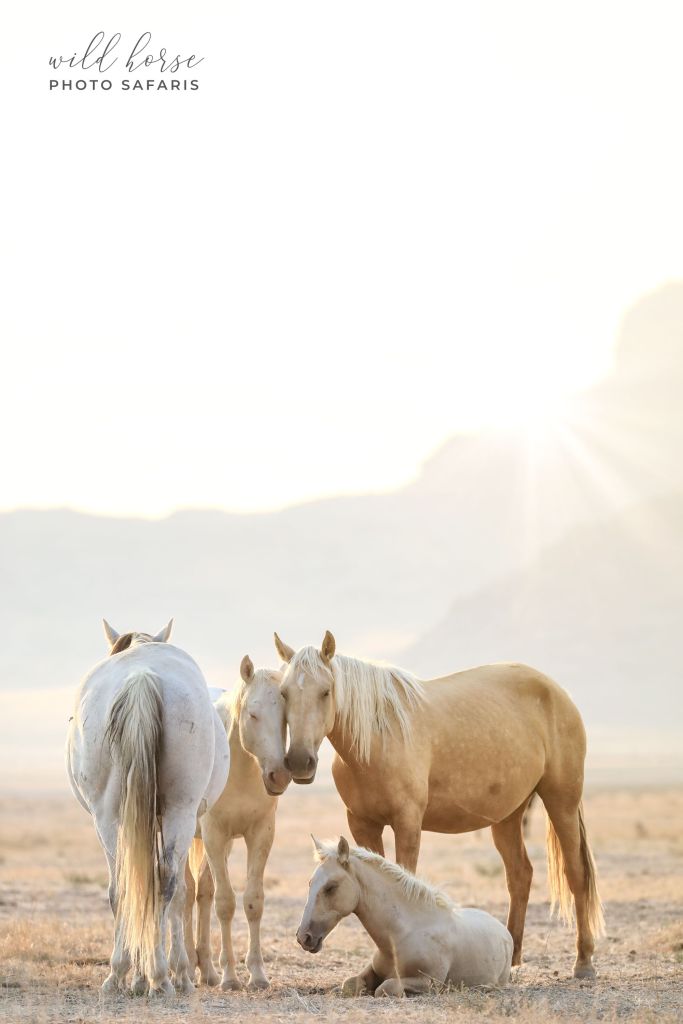

With only 25 days left until the roundup of 400 of our 475 Onaqui Wild Horses the battle to preserve their freedom rages on.
Pleas made far and wide to the Bureau of Land Management, Department of the Interior and even President Biden have fallen on deaf ears. Even more unfathomable, President Biden released his fiscal year proposed budget for 2022 which calls for increases the wild horse and burro management by $35 million dollars. This increase is not targeted to help manage on-range herds humanely with the use of equine contraception such as PZP, but instead is directed towards even more mass removals of the wild horses and burros from public lands. The report goes on to blame wild horses and burros for climate change, yet mentions nothing about decreasing livestock grazing in these same areas. An excerpt is included below:
“The 2022 budget includes a $35.0 million increase in the Wild Horse and Burro Program to support the health and resilience of rangelands. Excess wild horse and burro populations undermine the health of public rangelands and supported species, making them less resilient to stressors from climate-driven changes. These degraded landscapes can also contribute to climate change, as they are more susceptible to wildfire occurrence, which exacerbates excess carbon. To help mitigate that problem, the request supports continued efforts to constrain the growth of animals on the range and to cover rising holding costs. BLM will also continue to emphasize non-lethal population management tools; transfers to other Federal, State, and local entities; and private placements.”
The absurdity of this stance by our new administration was met with shock and heartbreak through the Wild Horse Advocacy community. Using the Onaqui HMA as one example, grazing permits have been granted by the Bureau of Land Management allowing thousands of head of cattle and sheep (15,000 AUM) to consume the forage at the same time it’s being argued there is not enough food or water to support a mere 475 wild horses. 475 wild horses equates only to use of only 15% of the HMA resources as compared to 85% use by sheep and cattle.
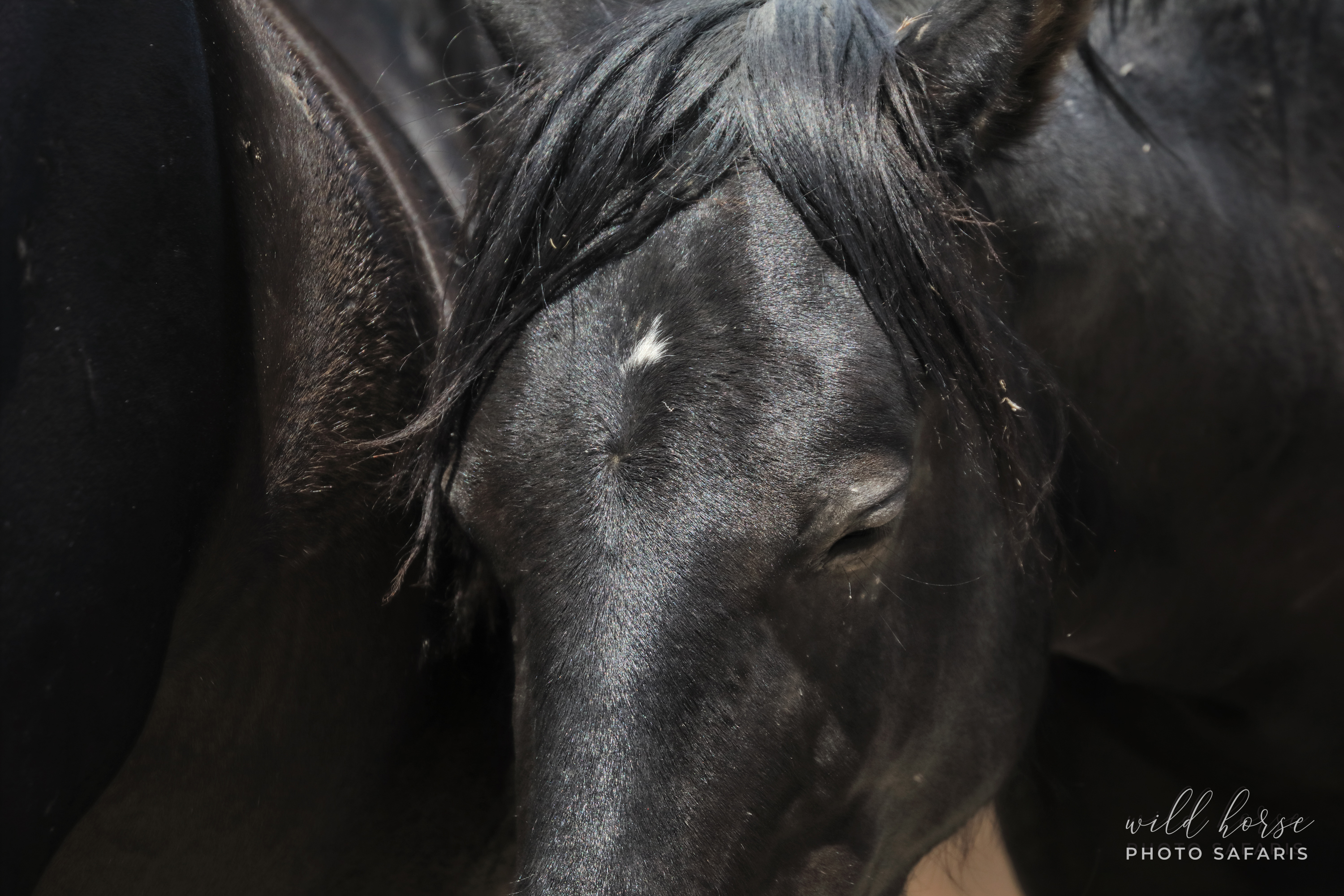
The Wild Horse and Burro Act calls for these public lands to be managed for multiple uses, however the focus should be on creating a fair system that allows for equal rights to land use by all – not the current methods which are completely void of scientific backing and heavily skewed in favor of the livestock industries. The National Academy of Sciences has outlined an extensive plan for the BLM’s Wild Horse and Burro program overhaul in their 2013 Report report, yet 7 years later the changes still have not been implemented.
No one is arguing that ranges across the United States are facing dangerous drought conditions for wild horses among other wildlife. And no one is arguing that an outcome for the horses is sought which will be in their best interests. But do those interests involve spending the rest of their lives in an overcrowded government holding facility or worse?
In 2019 the BLM rounded up 243 Onaqui horses killing 2 in the process. Of those 241 surviving horses approximately 50 were adopted. Fifty. So when Gus Warr, Manager of the Wild Horse and Burro program in Utah, assures people in his public announcements that the Onaqui are very adoptable horses you have to wonder then what happens to all the others if the Onaqui are touted to have such a high rate of adoptability yet only 20% actually had the fortune of finding homes.
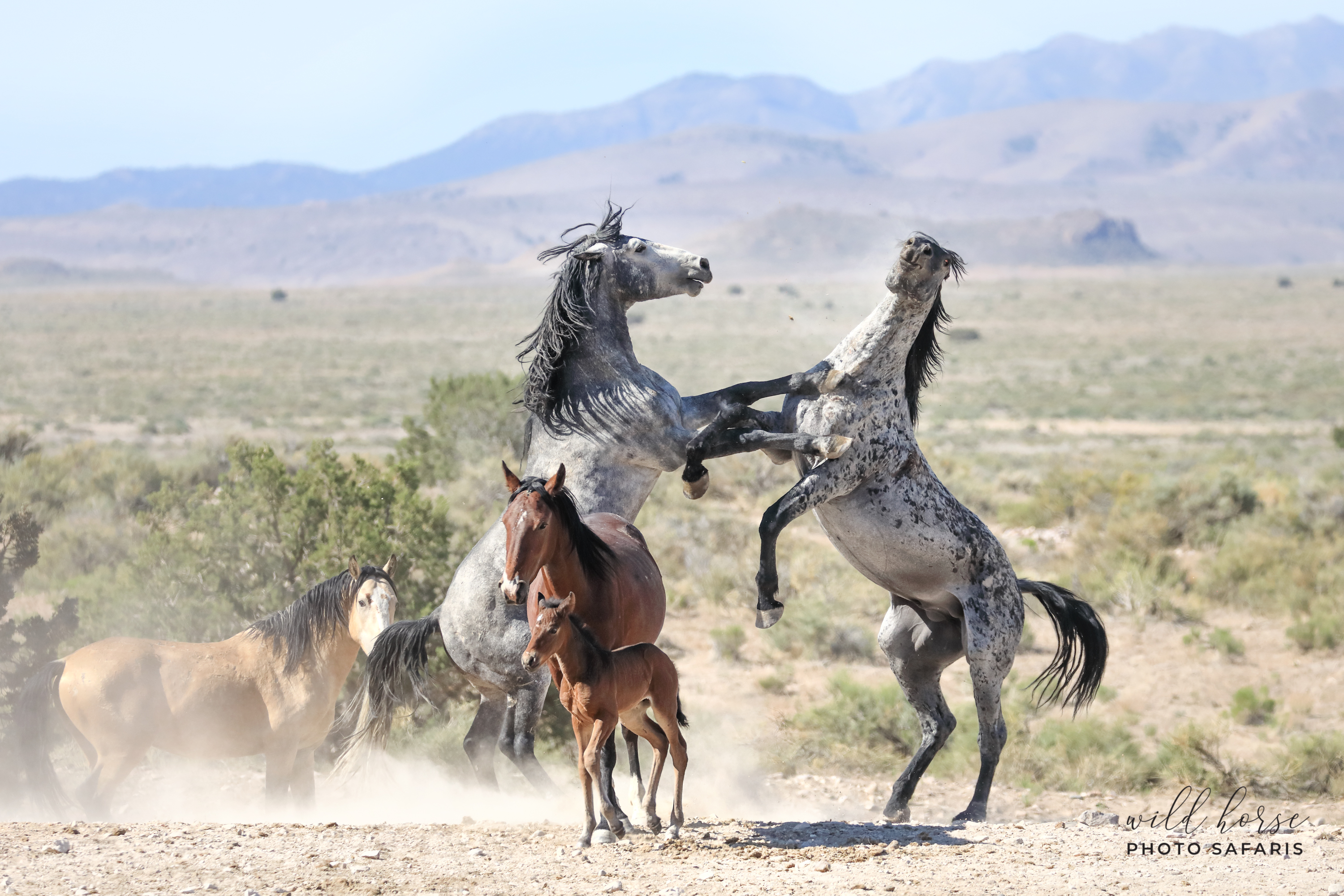
This has been a long standing problem nationwide as well as in Utah. There are much more humane methods of wild horse and burro capture such as bait traps, yet helicopter roundups remain the primary method used despite the trauma to horses, separation of family bands, indiscriminate captures and exorbitant cost to taxpayers. Mr. Warr was quoted in the Salt Lake City Tribune as saying ““In my 20 years with the program I found it the best way to gather the horses. As long as you have a good pilot, they don’t have to be roped or choked down.”
What he doesn’t mention in this article is the broken necks and broken legs he speaks of to attendees at the last Onaqui roundup (Documentary Unbroken Spirit @ 8:46). Not only is was this 2021 roundup scheduled without having a new Environment Assessment or public commentary, but it is scheduled for July where temperatures regularly soar over 100 degrees. Mares are still heavily pregnant and foals are being born as recently as four days ago to the Southern Onaqui herd. Those little foals hooves haven’t even hardened yet, and being run for miles across a hot desert at this young age literally causes them to grind their hooves completely off. I’m guessing the foals would disagree this is “the best way to gather horses.”
Friends of Animals filed a Motion for Preliminary Injunction on June 14, 2021 in the federal courts to stop this scheduled roundup. Their 39 page document cites multiple reasons for their motion including irreparable harm to genetic diversity. “The most recent genetic report for the Onaqui Mountain HMA comes from samples that the geneticist received in 2005 and showed that the “herd has genetic variability that is at a critically low level.” Onaqui25939. The analysis indicated that the loss of variation was fairly recent and likely due to a bottleneck in population size. Id. Despite these alarming reports, there is no indication that the Onaqui population was monitored and there was no follow-up analysis to determine the genetic variation or variability in this population before BLM issued the 2018 Decision. Nonetheless, BLM removed 241 wild horses, nearly half of the estimated population, in 2019.10”
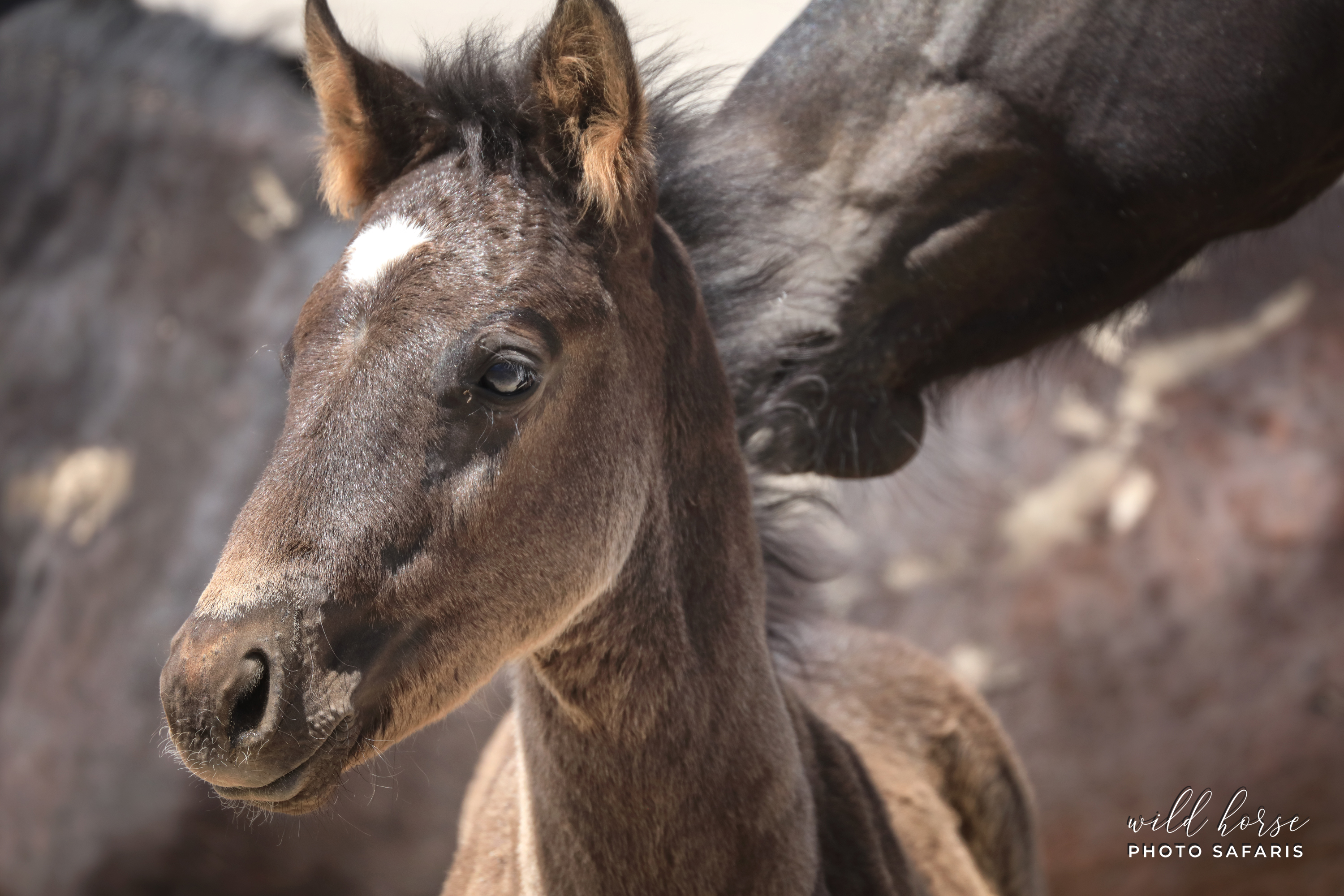
Imagine gathering over 80% of the existing herd only to handpick 52 mares and 52 stallions to return to the range a couple weeks later based on the age of stallions and how easy the mares are to dart with PZP in the field. There have been no plans communicated on what will happen to the 2021 foals – will they be separated from moms and kept in holding pens, will they be returned to the range before being properly weaned, or do they face a worse fate? This massive removal also lacks consideration for the fact that the Onaqui live in two distinct herds – one in the northern section of the range and one in the southern. These herds do not intermix and if genetic viability was already identified as a problem in the past imagine now with one herd likely being eliminated altogether.
On July 2, 2021 a rally to preserve the freedom of the Onaqui Wild horses is scheduled to take place at 8:30am at the south steps of the Salt Lake City State Capital. Actress Kathryn Heigl, Animal Wellness Action, Center for a Humane Economy , The Cloud Foundation, Jason Debus Heigl Foundation and Red Birds Trust have come together to garner awareness to the atrocities unfolding across the west to all wild horses and burros as well as to advocate for the preservation of freedom of our own local Onaqui herd.
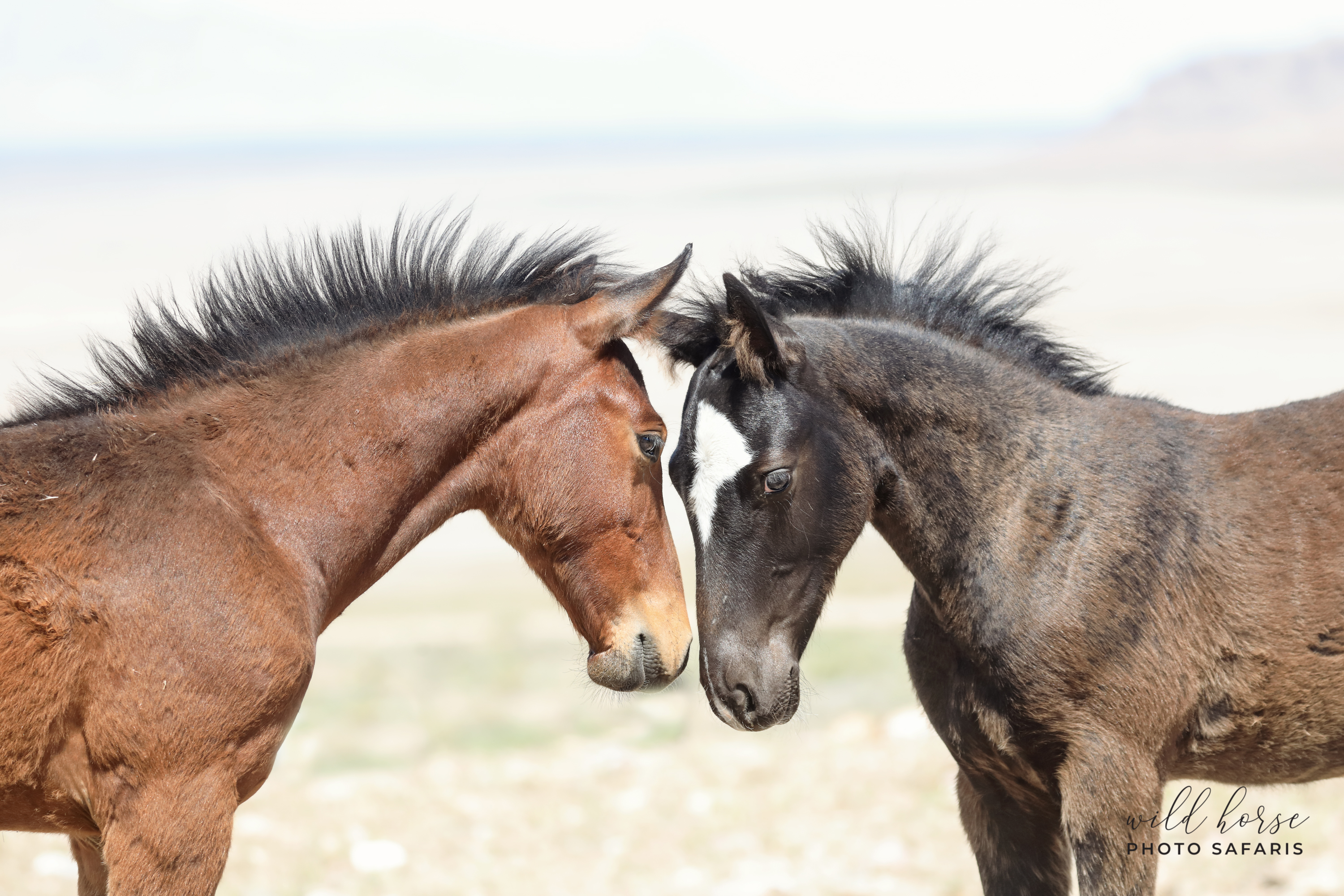
With so few days remaining for our beloved horses to roam free on the range emotions run high, but it’s lovely to see so many advocacy groups, photographers and horse lovers unite. Every day I spend with the wild ones, which is now as many as possible, it helps to hit the reset button on all the human mayhem unfolding and serve as a reminder of why we’re all doing what we’re doing. Although the horses have a very strong voice and beautiful way of communicating not everyone can or will take the time to listen so it’s left up to us, the ones who know them and love them to be their voice.
So please mark your calendars and come join the
Rally for Freedom of the Onaqui
on
Friday, July 2nd at 8:30am at the
Salt Lake City State Capital building.
You can click this link for more information, parking directions and to RSVP.
It’s with high hopes I look forward to an amazing turnout of likeminded passionate people advocating for the protection of our beloved wild horses and burros.
More information can be found from the following sources among others:
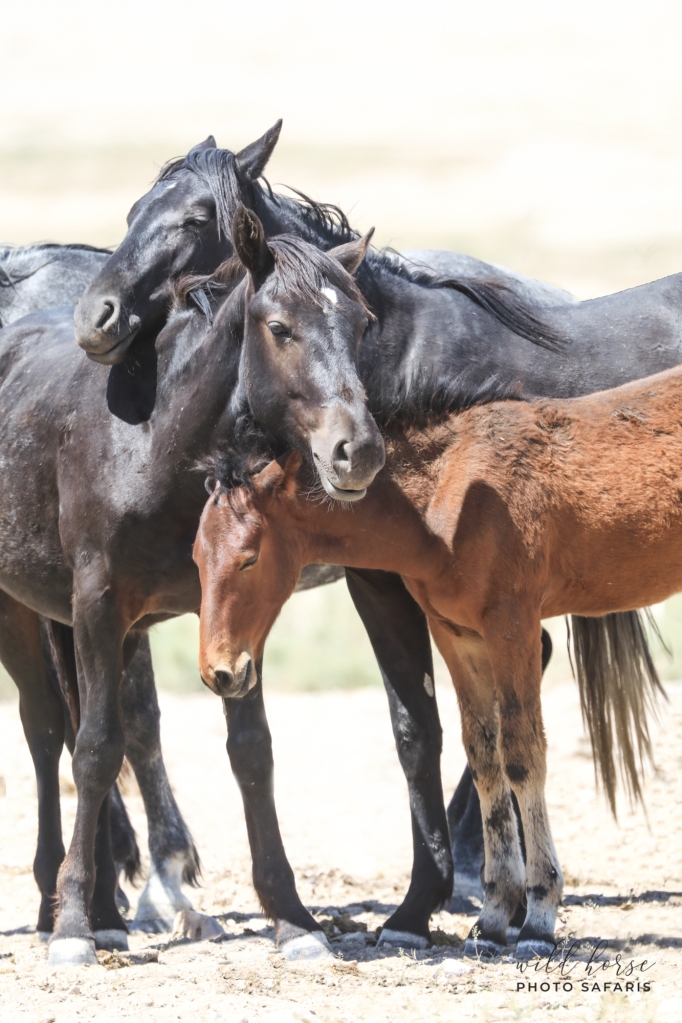
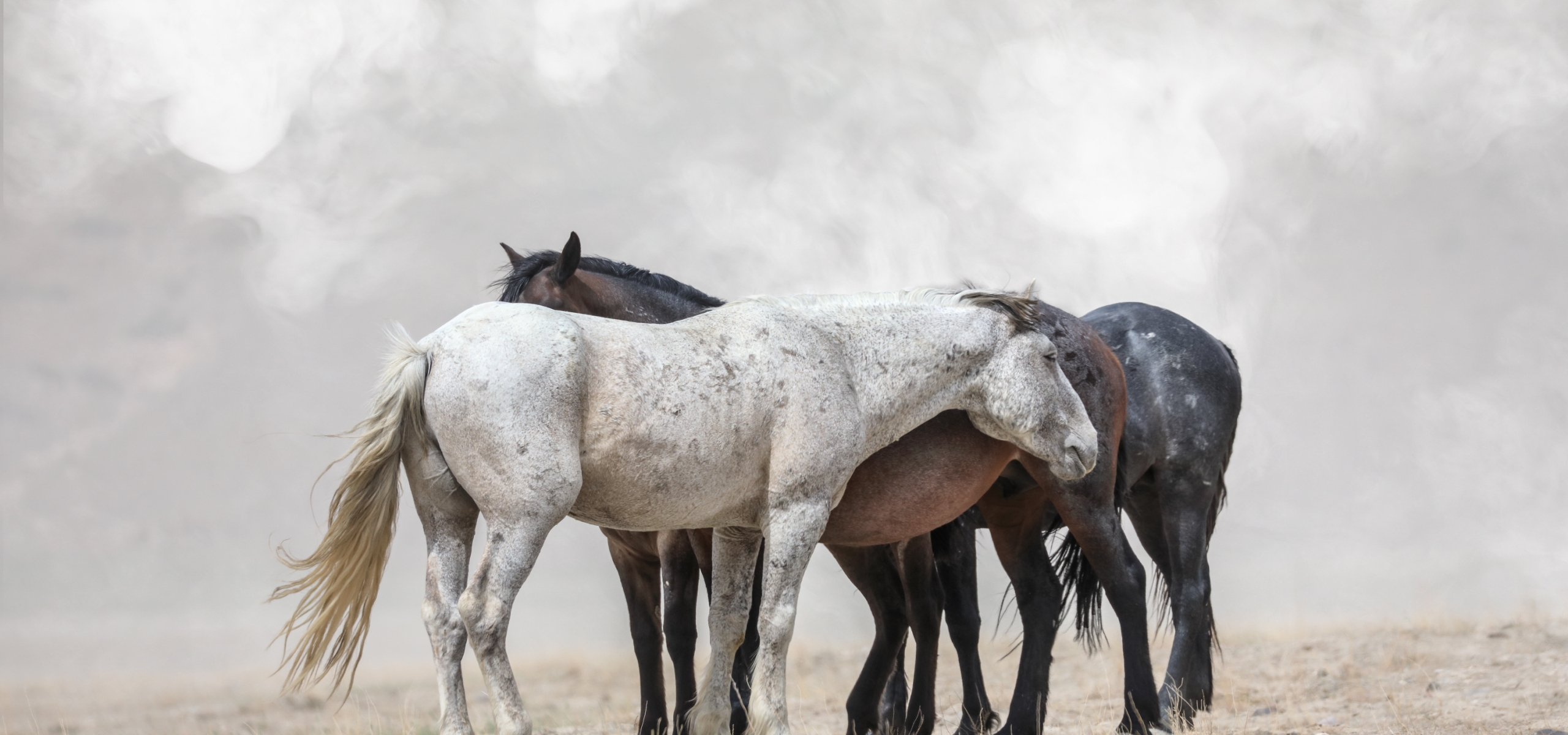
Lost
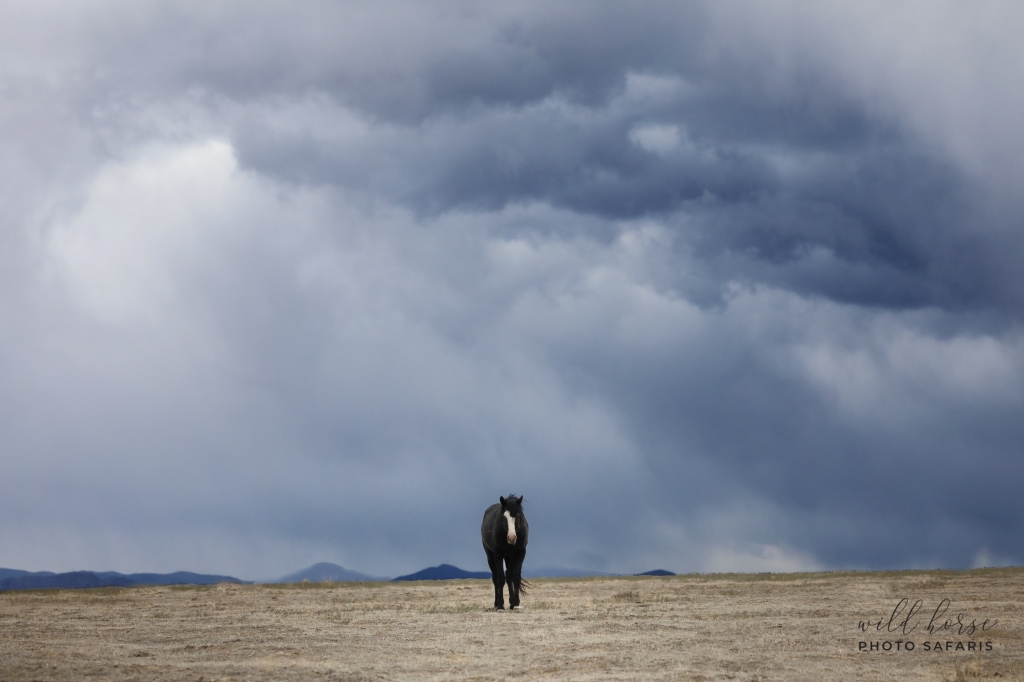
42 days.
1,008 minutes.
The ticking of clock has grown louder by the day since the March 2nd announcement of the removal of 400 of our beloved Onaqui horses by the Utah Bureau of Land Management. Heavy hearts and clouds of hope have hung in the balance as the appointment of Secretary Deb Haaland to the Department of the Interior became a reality.
Leading wild horse advocacy groups, such as American Wild Horse Campaign, sung words of praise and offered reassurances of previous battles won because of Ms. Haaland’s help. However despite thousands of pleas, phone calls, messages and letters sent from wild horse supporters spanning the globe, Mrs. Haaland has remained silent. Instead of helping keep our wild horses in the wild the Biden administration took the stance last week of increasing the proposed 2022 BLM (Bureau of Land Management) overall budget by $311.9 million dollars.
The increase specifically in the Wild Horse and Burro Act is explained as follows: “The 2022 budget includes a $35.0 million increase in the Wild Horse and Burro Program to support the health and resilience of rangelands. Excess wild horse and burro populations undermine the health of public rangelands and supported species, making them less resilient to stressors from climate-driven changes. These degraded landscapes can also contribute to climate change, as they are more susceptible to wildfire occurrence, which exacerbates excess carbon. To help mitigate that problem, the request supports continued efforts to constrain the growth of animals on the range and to cover rising holding costs. BLM will also continue to emphasize non-lethal population management tools; transfers to other Federal, State, and local entities; and private placements”. (https://www.whitehouse.gov/wp-content/uploads/2021/05/budget_fy22.pdf)
The breakdown in millions of dollars is shown below:
| 2020 Actual | 2021 Enacted | 2022 Request | Change (Increase) | |
| Land Resources | ||||
| Rangeland Management | 105,921 | 105,921 | 124,792 | 18,871 |
| Public Domain Forest Management | 10,135 | 10,135 | 14,729 | 4,594 |
| Cultural Resources Management | 18,631 | 19,631 | 21,186 | 1,555 |
| Wild Horse and Burro Management | 101,555 | 115,745 | 152,596 | 36,851 |
| Subtotal Land Management | 236,242 | 251,432 | 313,303 | 61,871 |
Link to view full report: https://www.doi.gov/sites/doi.gov/files/fy2022-bib-bh007.pdf
As the funds allocated to the Wild Horse and Burro program increase, the actual number of animals left on our public lands drastically decreases. Envision a teeter totter which has become grossly imbalanced and the person at the top is unable to escape. That is the current position our wild horses and burros now face.

In Utah alone, according to Wild Horse and Burro manager Gus Warr, there are 5,500 animals housed at our off-range pens in Delta and they expect to add another 1,200 during the 2021 roundups. This will bring the total to 6,700 wild animals spending the remainder of their lives in the confines of federal corrals on land leased from ranchers. Just in Utah. Never mind Wyoming, Nevada, Colorado and beyond.
These off-range facilities aren’t beautiful pastures filled with green grass, butterflies, and fairies as they’re depicted to be. They’re sterile corrals where families are ripped apart and horses are housed by age and gender. Once wild horses are processed in mass, given free brands, vaccines and stallions are gelded. Mothers are separated from their babies because unlike in the wild where they nurse to often 2 years of age, in government facilities 6 months is considered the acceptable age to wean.
The one term that is consistent among anyone who has been to one of these facilities is the term “broken.” For those who only have been around a domestic horse and have not yet had the privilege to see how the wild ones live the stark reality likely appears far less dark. But for those who have been blessed enough to be welcomed into the world of the wild ones the reckless disregard in which their populations is being destroyed nothing short of horrifying.

It’s taken decades for humans to wrap their minds around the levels of complexity found in elephant herds and the intricate role that each member plays in the family. It’s taken so long in fact that elephants are faced with a very real threat of extinction. The bonds found in wild horse bands are no less strong and band members no less meaningful than those of wild elephants. The difference is the majority of the population has yet to figure this out. And considering the massive rate of removal from public lands which poses a real threat to genetic diversity, it’s reasonable to see that America’s wild horse population is at a real risk of pending extinction as well if things don’t change soon.
You know there’s something very wrong when our US government has latched on to a new plan called The Path Forward which was developed in part by the National Cattlemen’s Beef Association, American Farm Bureau Federation and the Utah Governor’s Office among others. It goes without saying that the goal of this plan is mass removal of wild horses and burros from our public lands allegedly to prevent degradation of the land yet thousands of head of cattle and sheep continue to graze without interruption on allotments issued by the BLM.
Since when do you have ranchers and politicians in charge of managing wild animals instead of scientists and biologists? And how in the world can people even read that sentence and think it makes any logical sense.
But it’s the reality we are faced with and unless there is drastic change it will continue.
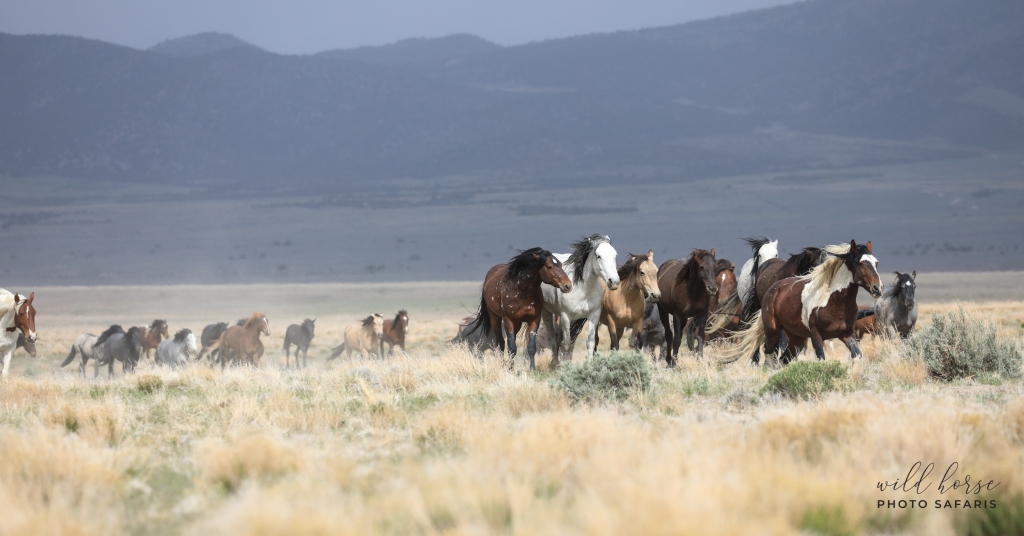
“More than 1,200 Groups, Businesses, and Individuals Call on President Biden to Impose Immediate Moratorium on BLM’s Mass Roundups of Wild Horses and Burros.” This is just one recent headline garnering national attention along with the outpouring of support from actress Katherine Heigl who is a Utah resident and advocate for the Onaqui Wild Horses. Along with her mother, Nancy, a nonprofit was formed in 2008 in her brother’s memory called the Jason Debus Heigl Foundation. It is a wonderful organization dedicated to animal welfare, rescue, affordable medical care and advocates against all animal abuse.
Animal Wellness Action and the Center for a Humane Economy have been working tirelessly to intervene in the 2021 scheduled roundups, include those of the Onaqui horses here in Utah. I was fortunate to be able to work with Director of Campaigns Scott Beckstead along with Katherine to see that billboards were put up along the interstate between the Salt Lake City and Park City to raise awareness for protection of Utah’s heritage and wild horse herds and a website was launched to provide information and accept donations as well. You can visit it here: SaveTheOnaqui.org
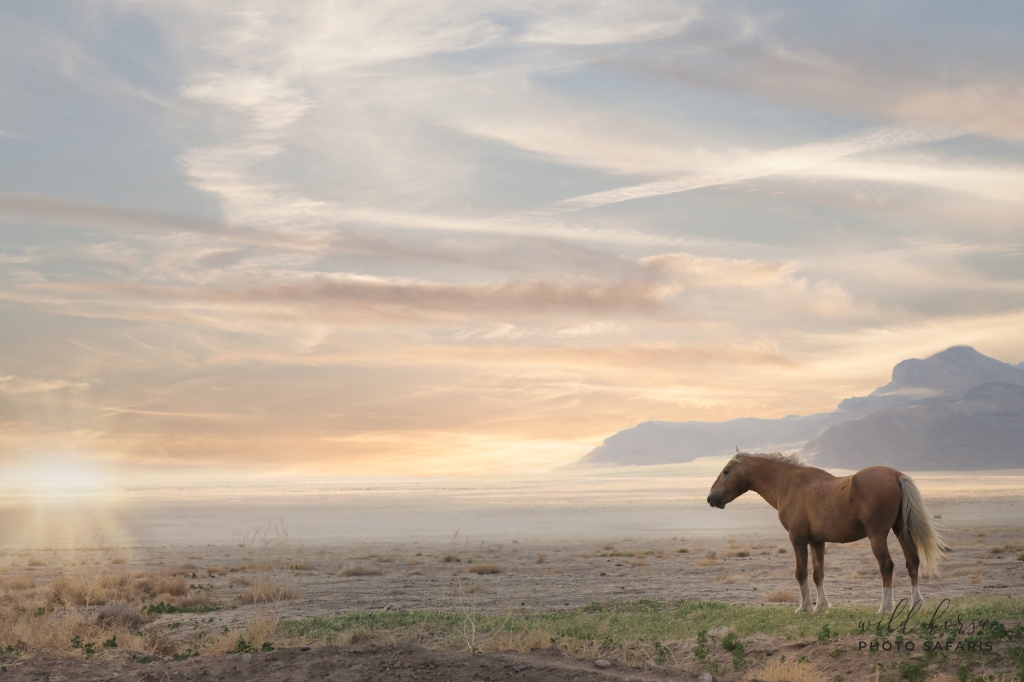
Yet even with all of this national attention and public outcry, here we find ourselves with only 42 days left to make a change.
42 days before the helicopters take flight and 400 of 475 horses, including heavily pregnant mares and brand new foals, will be forced to run for their lives. 296 of which will lose their freedom forever.
Families also will be lost.
And as is too frequently the case, lives will also be lost.
One small bit of hope is that the 2022 budget must still be approved by Congress. So flooding your local Congress person with messages as to the gross misspending of tax dollars to remove healthy wild horses and burros currently living on your public lands FOR FREE is well worth mentioning. Removing horses and burros is a multi-million dollar business as I already detailed in previous blogs, and money is a very powerful motivating factor for far too many people and as they say the root of all evil.
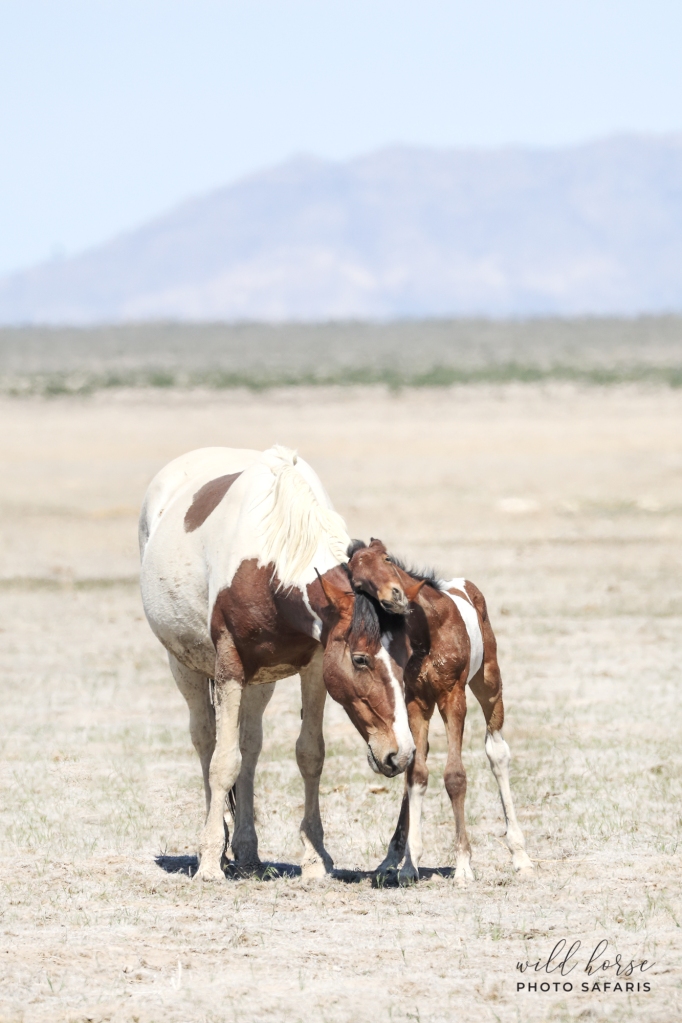
More information can be found from the following sources among others:
Red Birds Trust is born.

Today marks two months and 6 days since the formal announcement was made by the Utah Bureau of Land Management (BLM) to remove 400 of the estimated population of 475 Onaqui Horses. That means that in exactly two more months and 4 days the roundup is slated to begin. On serene desert scenes will now be overrun with catch pens and livestock trailers as they flood the desert while helicopters will be herd flying low overhead in search of horses.
From July 12th through the 22nd the stallions, mares and young foals will be running for their freedom. Through the dry dust-filled desert terrain and between the jagged mountain crevasses they know so well in search of reprieve. Families as they know it will cease to exist and it is safe to assume with such a large scale removal some of our beloved horses will face injuries and even death.
Countless locals, Americans and international supporters alike have flooded Washington DC with pleas to reconsider the mass plans to remove 20,000 horses from public lands in 2021 alone and instead listen to the National Academy of Science’s recommendations. These recommendations call for a complete program overhaul and use of scientific research to determine Appropriate Management Level (AML) of horses for each Herd Management Area (HMA) rather using than the current arbitrary standards set in the 1970’s that have a complete lack of scientific backing. Demographics have changed, range conditions have changed and time is running out to save our national heritage found running wild and free in the spacious lands called home to America’s wild mustangs.
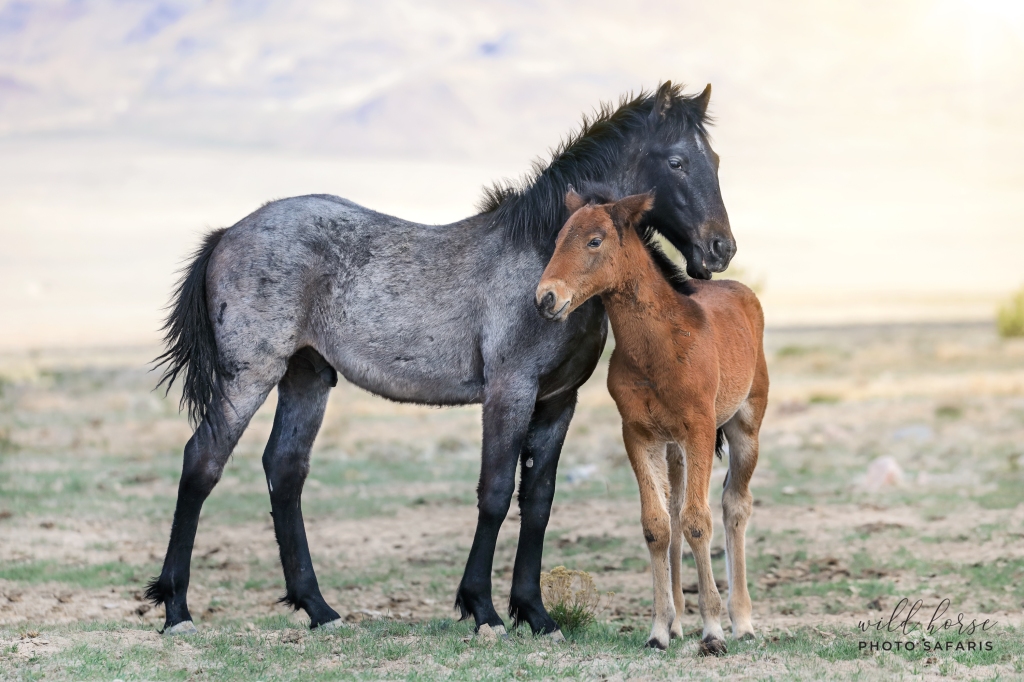
With the new appointment of Deb Haaland as Secretary of the Interior hopes soared high. She has a favorable track record in supporting efforts to keep our wild horses wild and advocates rejoiced in gaining a friend in such a powerful position. However, to this point she has remained silent on the plight of America’s wild horses and the ticking of the clock is becoming louder and louder with each passing day.
There is a moratorium on conducting roundups during the months of February through the end of June. This is considered to be peak foaling season and the idea is to let the newborns age enough so that they can run and keep up with the rest of the herd as they are chased into the chutes by helicopter. As of July 1st the flood gates will once again open and the roundups begin. Not only here in Utah but in many other states as well.
For me atleast, the March 2nd announcement of such a drastic removal of the Onaqui horses seemed surreal. My mind simply couldn’t wrap itself around the fact that sooner rather than later so many horses I came to consider friends will be taken away, held captive in pens, and separated from those they loved and protected on the range.
Days drug on, more letters were sent, blogs were written, media outlets contacted, stories submitted for international publication and spokespersons sought. It’s a strange place to be when you realize you’re both hopeful yet frantic at the same time.
During the ensuing days of organized chaos and mass brainstorming an idea was born. What if I can save just one? It all started with one.
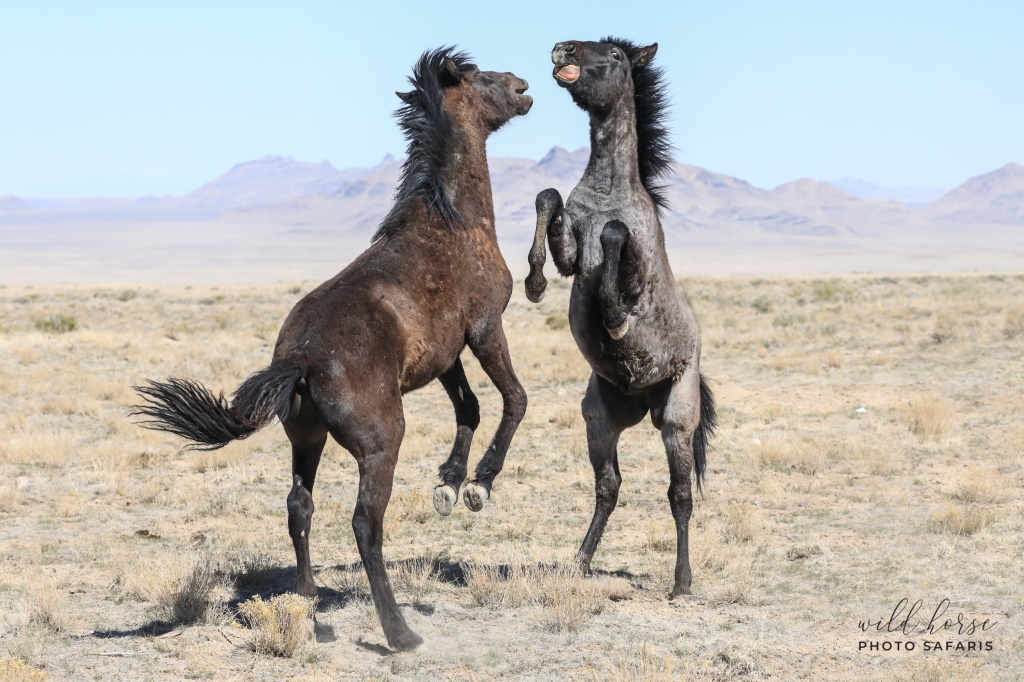
There is a small 2020 foal born last fall that I came to call Red Bird. He was very small but sturdy and nearly black with hints of red around his nose and inside his ears. He clung to his momma’s side and looked to the other foals in the band for guidance on how to be brave. He wanted to be curious, but was still quite shy and would fly off like a little bird back to his mother’s side at the smallest hint of alarm. Hence he became known as Red Bird.
On January 13th a tiny almost imperceptible swollen area became noticeable in his left lip and by February 22nd it was far more pronounced. We all assumed he’d just received an uncomfortable kick while playing or possibly had cheat grass embedded into his lip but as time has gone on, the swelling has increased rather than decreased. On March 2nd upon hearing of the plan for removal I instantly thought of little Red Bird and the possibility that he may be euthanized after capture rather than treated and put up for adoption unless there was someone waiting to take him.
I decided I needed to become that someone. How it would come to pass I had no idea.
So many things have been transpiring in such a short time that honestly it’s hard to even wrap my mind around it let alone put a timeline together but somehow in all this madness and panic we were able to create a 501(c)(3) nonprofit called Red Birds Trust. The purpose of the nonprofit will be three fold:
- Adoption/Rescue and care of Onaqui Horses
- Range Cleanup
- Education
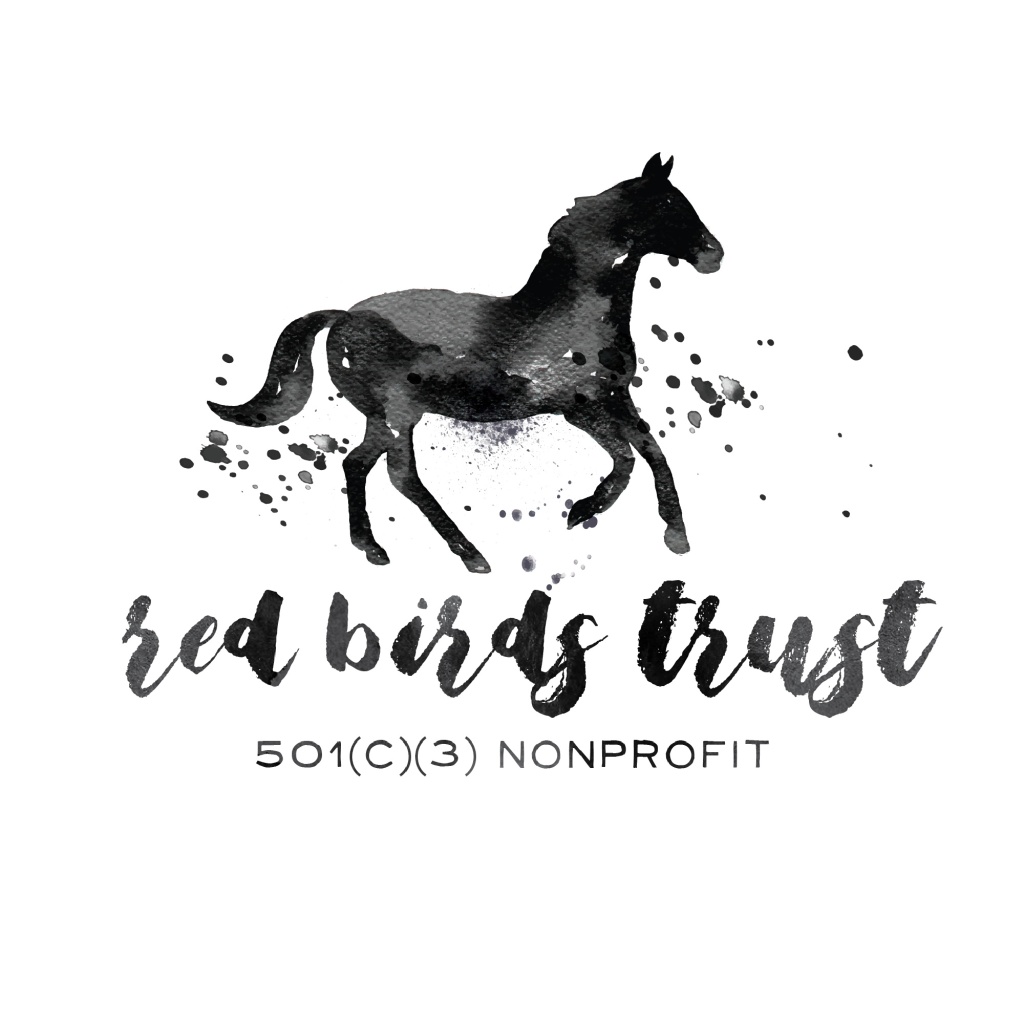
I joined forces with long time local wild horse advocates Scott Beckstead and Shauna Godfrey Muztafago. Scott Beckstead is Director of Campaigns for The Center for a Humane Economy and also Director of Campaigns for Animal Wellness Action. Shauna manages and oversees the Save The Onaqui Wild Horses Facebook page. We also welcomed a wonderful photographer and artist from Maui, Brandy Romano, and Mellany Miller a passionate wild horse advocate, photographer and finance/grant guru as Treasurer – we couldn’t be more thrilled.
The goal for everyone is to keep advocating to keep the wild horses living their best lives in the wild, however as a backup plan Red Birds Trust will be collecting monetary donations and donations of supplies, fencing, manpower and other items from our wish list to begin the process of freeing Onaqui from the government holding facility here in Utah. Funds donated will also be used to sponsor adopted horses, buy supplies and tools needed for range cleanup efforts, to rent a truck/trailer, post hole digger, etc.
In addition to this, we are SO excited to create a community based approach for adopters of the Onaqui horses to be able to come together for questions, concerns, training recommendations, to find out the history of their horse while living on the range and to provide a place lean on in the case of financial emergency. We know that it’s not unusual to go through hard times and if Red Birds Trust is able to help keep these Onaqui with their original adopters and out of kill pens then our hearts would all soar.
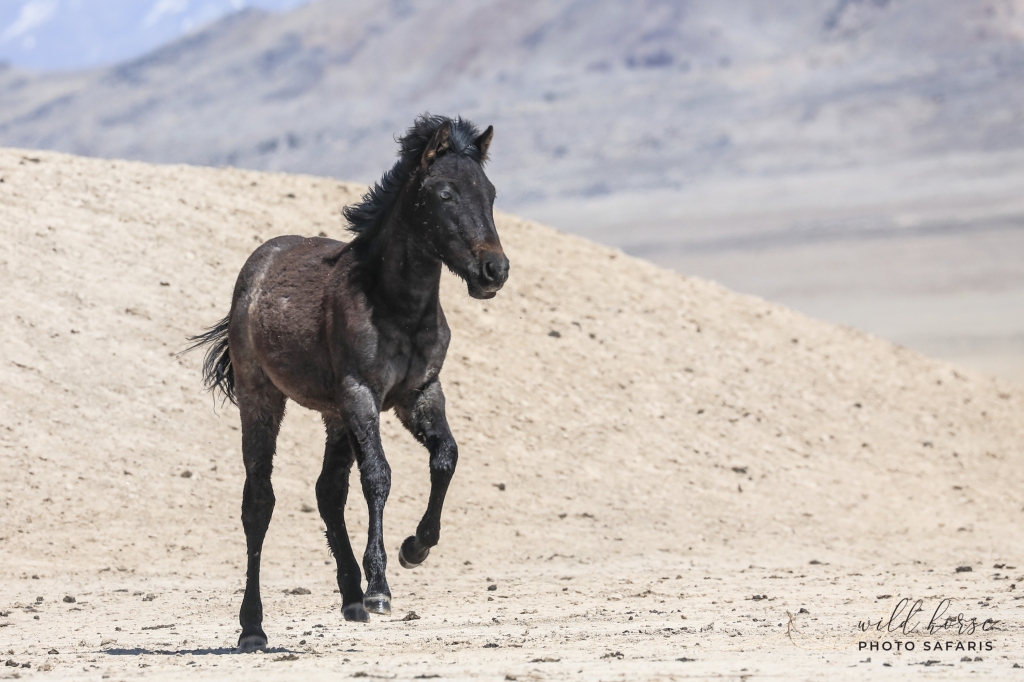
While we definitely don’t have all the answers, but we do have the fortune of knowing many in the industry with years of experience, education and research into wild horse care in the wild and in adopted homes. We look forward to being able to disseminate information that may be helpful to adopters and help to connect people looking for information to the people best suited to provided it if we don’t know the answer ourselves such as the Wild Horse Education, The Cloud Foundation and others.
We strongly encourage anyone interested in volunteering for Onaqui HMA range cleanup to contact us directly. We’d love to know the best days/times you are available and the best email and phone number to reach you. Each time we have a scheduled range cleanup event we will be able to access our volunteer database and send out a notification to everyone who has signed up. We will also let everyone know what to bring (ie: gloves, hats, close toed shoes) and may ask for specific help if a certain type of vehicle or equipment is needed.
More information can be found online at redbirdstrust.org and we look forward to being able to partner with the local BLM field office and coordinate with local volunteers and donors for many years to come.
As always, we are hoping that in the next two months and 4 days we receive a miracle and our Onaqui horses are blessed with a reprieve from the scheduled gather. Letters will continue to be written and pleas made. But in the meantime we will be working on the backend to do everything we can to prepare and raise funds for adoptions, care and housing and range cleanup which is very much needed and long overdue.
Thanks to everyone for your kind words, thoughts and support for the last 2 months and through the months that follow.
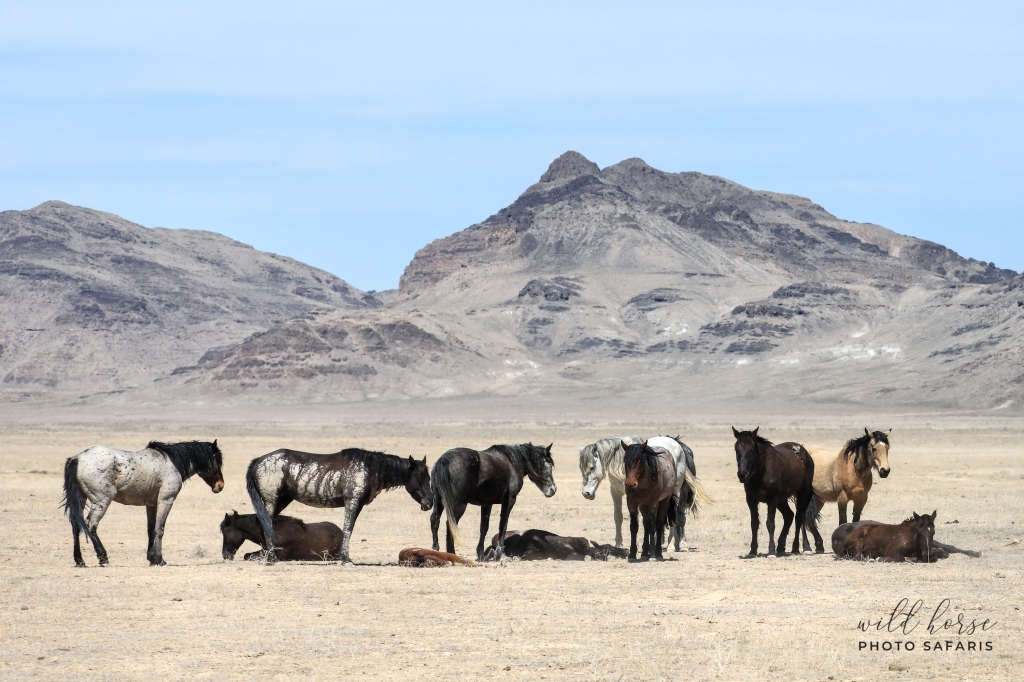
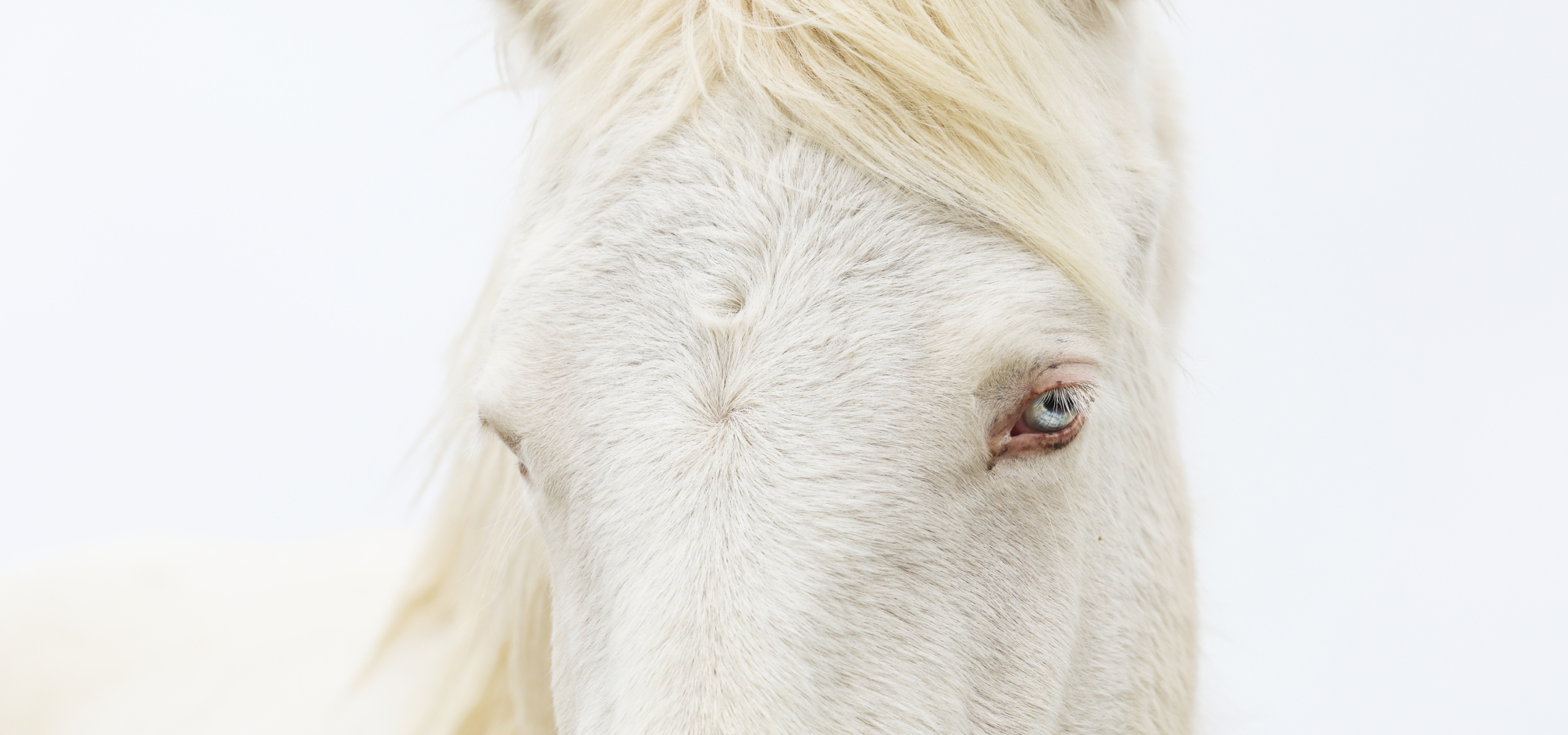
A great horse will change your life. The truly special ones define it…” – Author Unknown
FACES OF THE ONAQUI
The Onaqui herd can currently be found living their best lives in the West Utah desert however in exactly 80 days from today they face a decimation of population numbers, band continuity and genetic viability. On July 12th a roundup will begin capturing 400 of 475 horses via helicopter, loading them into crowded stock trailers and transporting them to the off-site BLM facility in Delta where the processing and sorting will take place. They receive freeze brands and tags tied around their necks which then determine their new identities. They will be vaccinated, stallions will be gelded and then they will be separated by age and gender to be kept in holding pens. Of the 400 captured, 52 mares and 52 stallions will be handpicked to be returned to the ranged based on age and the females past tolerance to being darted with the equine contraceptive PZP in the field.
After the return of the 104 wild horses the herd count will now be at approximately 179. New bands will have to form, new patterns of seeking forage and finding water established as horses from the north and south who’ve never met will likely have to co-mingle and understand lands they’ve never seen. (ie: north herd living in the south range and visa versa)
Just as the quote above says, “A great horse will change your life. The truly special ones define it…” I think anyone who has had the privilege of being exposed to the grace, the tolerance and the love that swirls amongst the Onaqui bands will agree these are truly special wild horses. I decided to create a little tribute to some of my favorites with images and some details about them or what they’ve meant to me personally. They’re all so different and so unique and they all deserve their own story so I hope you enjoy the Faces of the Onaqui pictured below.
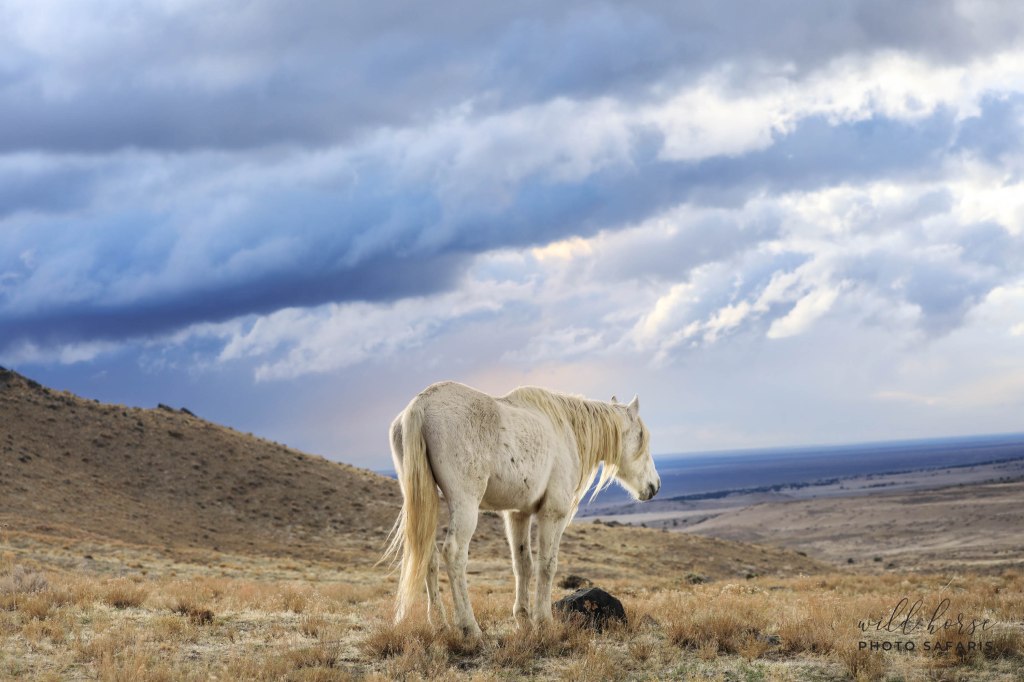

This little fella is Red Bird (OQ345gS). He was born late last August to a beautiful grey mare (OQ344gM) in Golliath’s band in the south herd. He was lucky enough to have 3 other foals born around the same time period in his band (OQ347zM, OQ346zS, OQ348zS) so he’s had lots of friends to grow up with. He is a total momma’s boy, always staying close to her side and looking to her for comfort if he gets unsure. He is especially fond of the young filly I call Little Star (OQ347zM) and follows her lead in seeking out new things. There is a brand new little Chestnut colt (OQ395bS) born to dam OQ351zm in early April and Red Bird is completely in love. He follows the new baby around cleaning it, and trying to teach it to play and standing over it while it sleeps to block the sun.
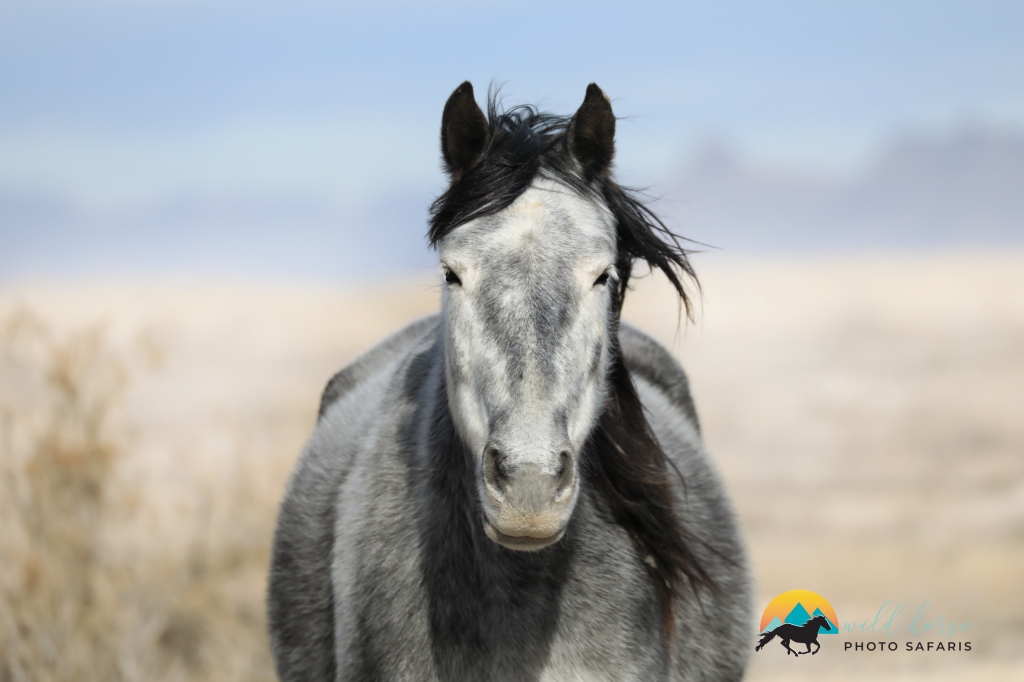
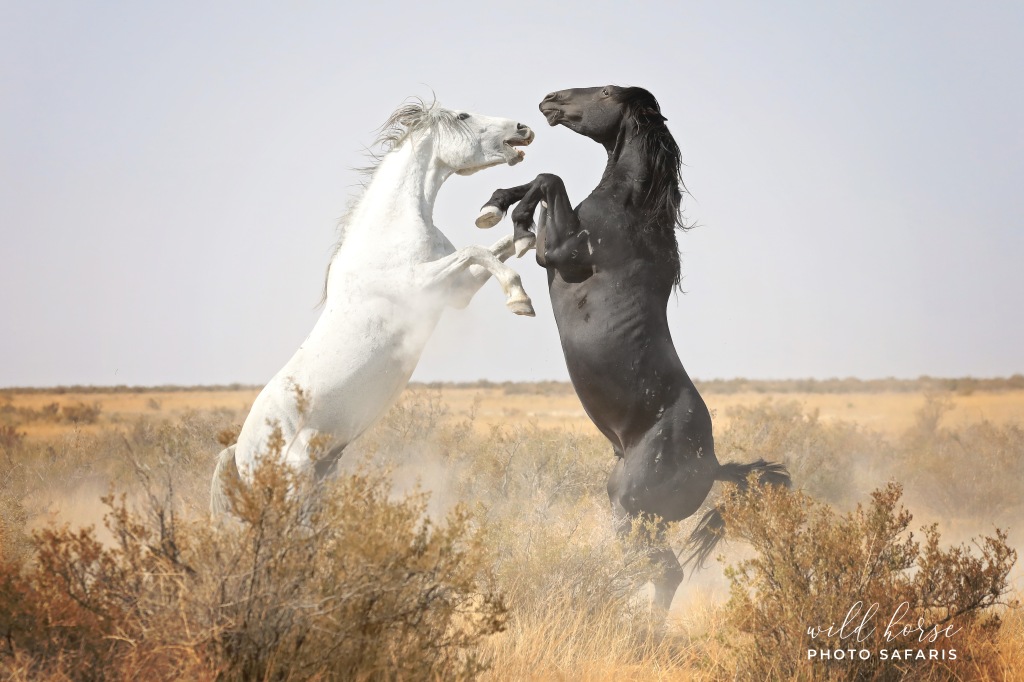
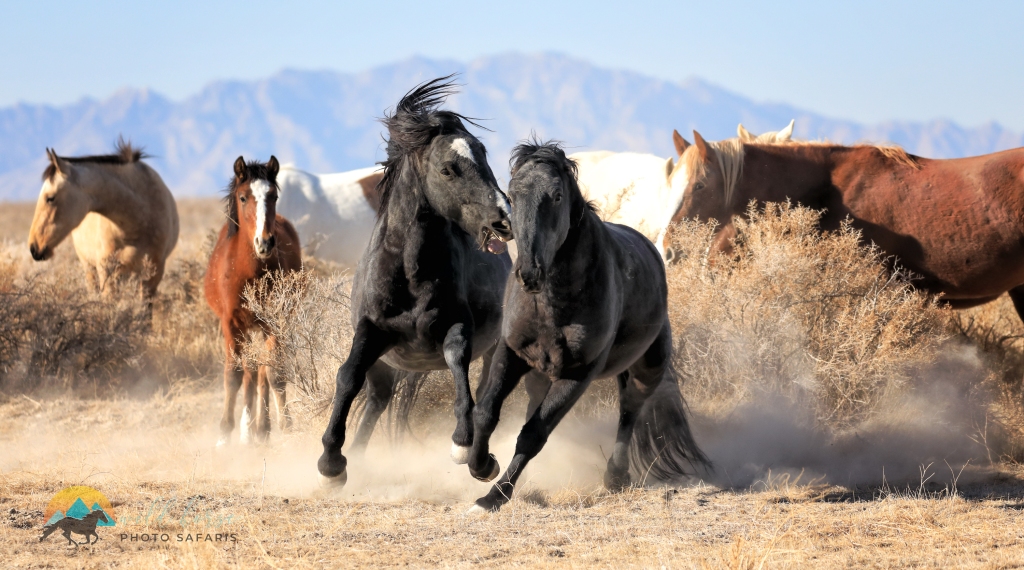
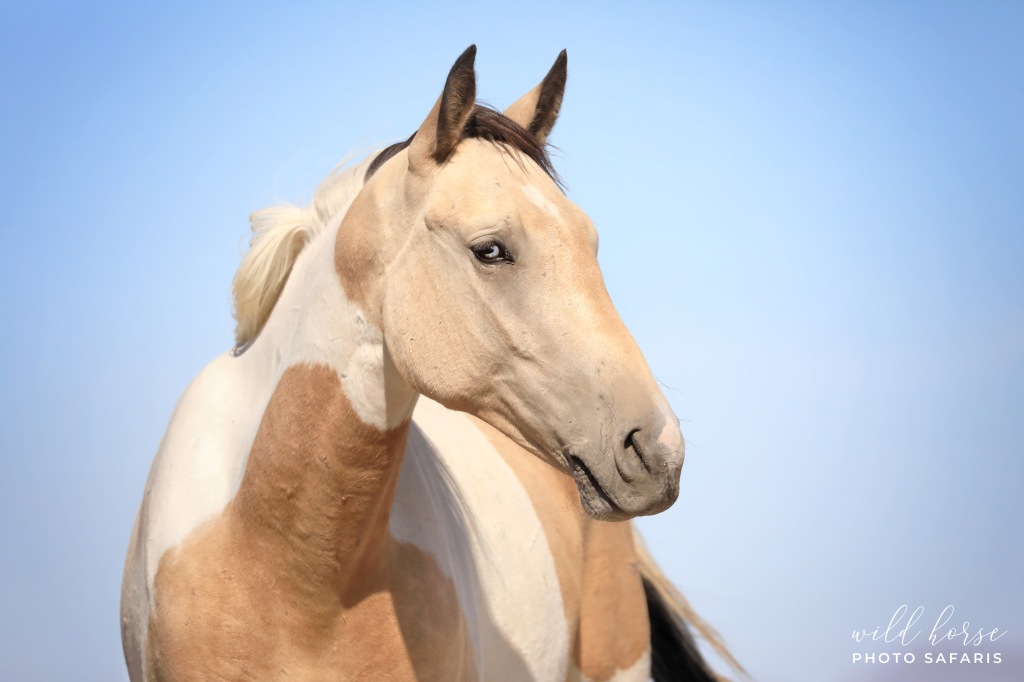
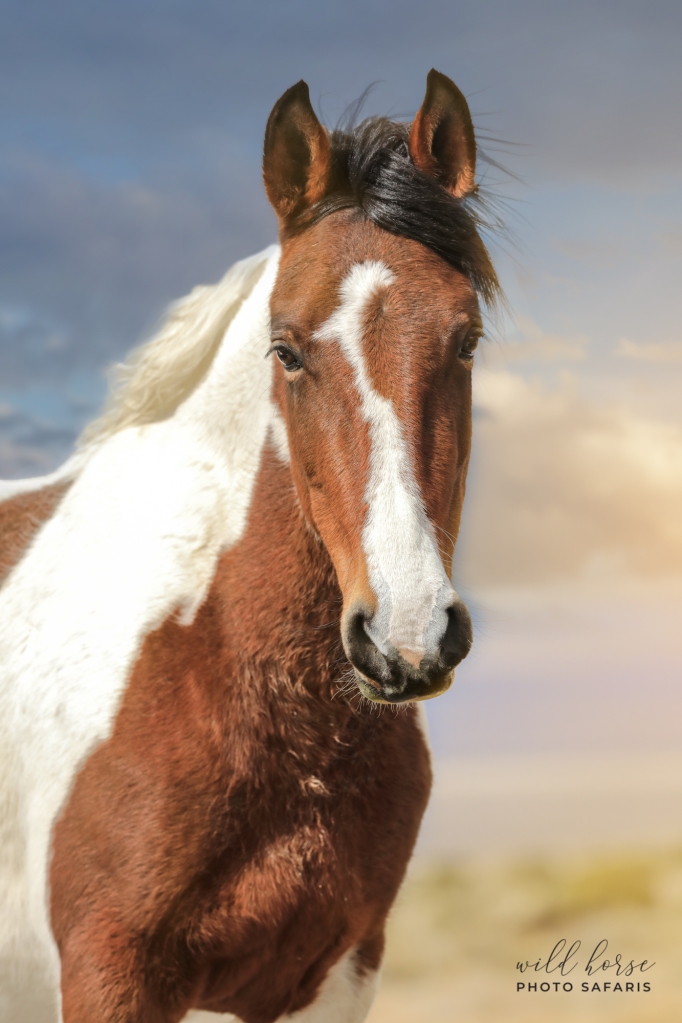
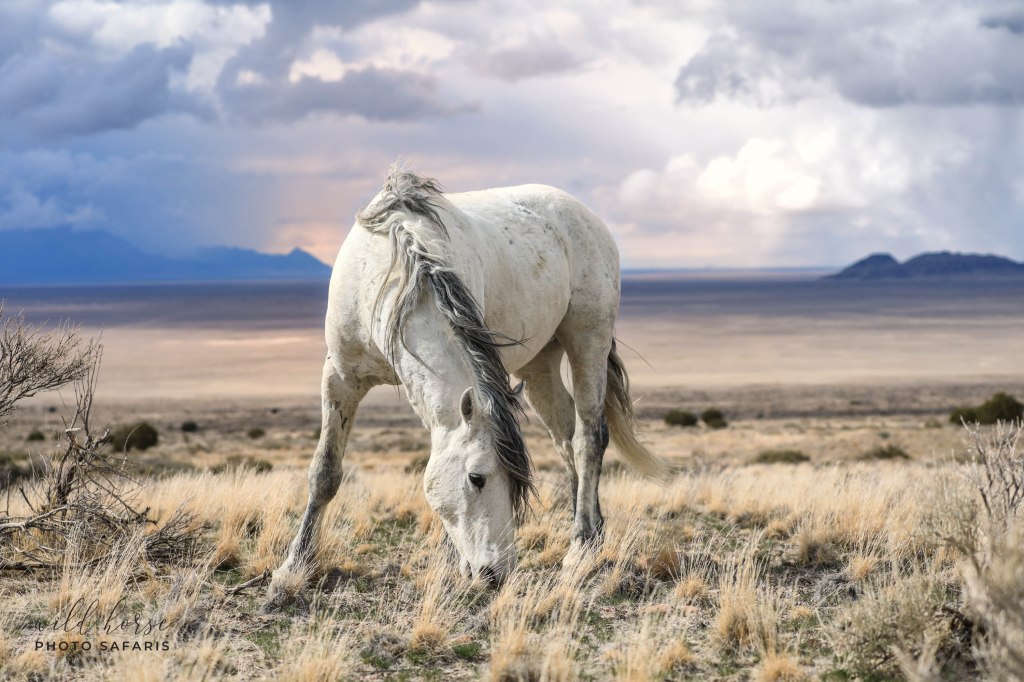
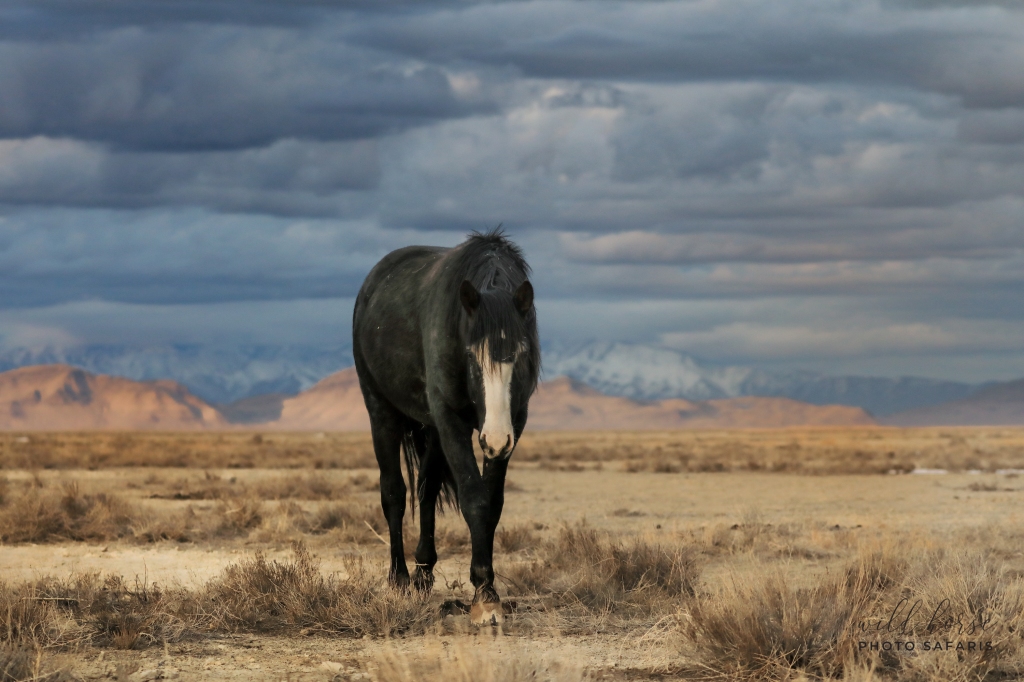
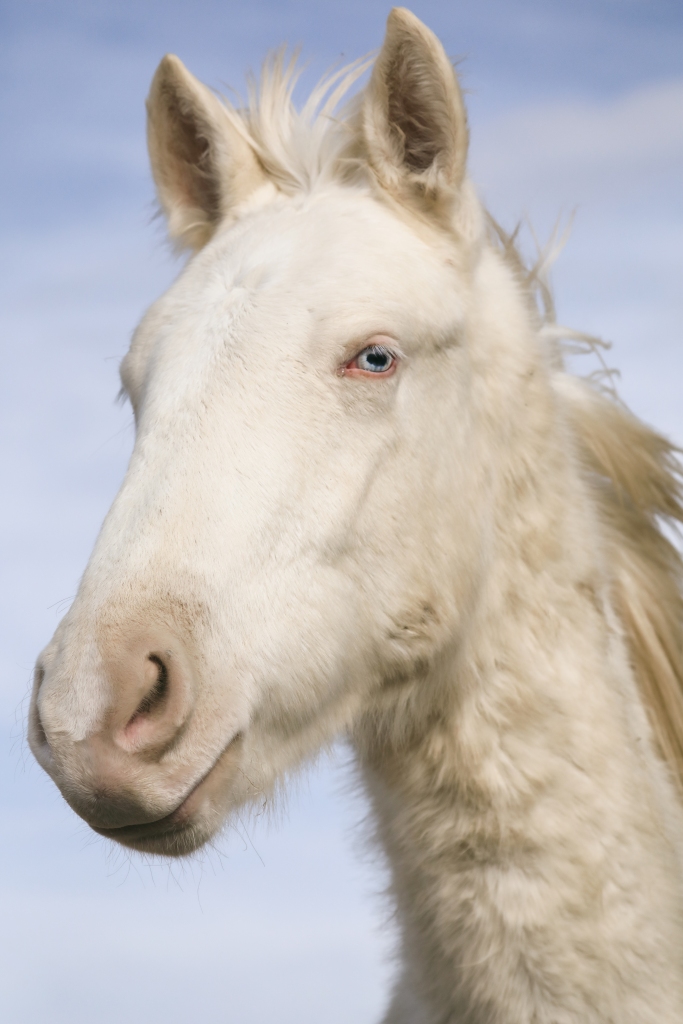
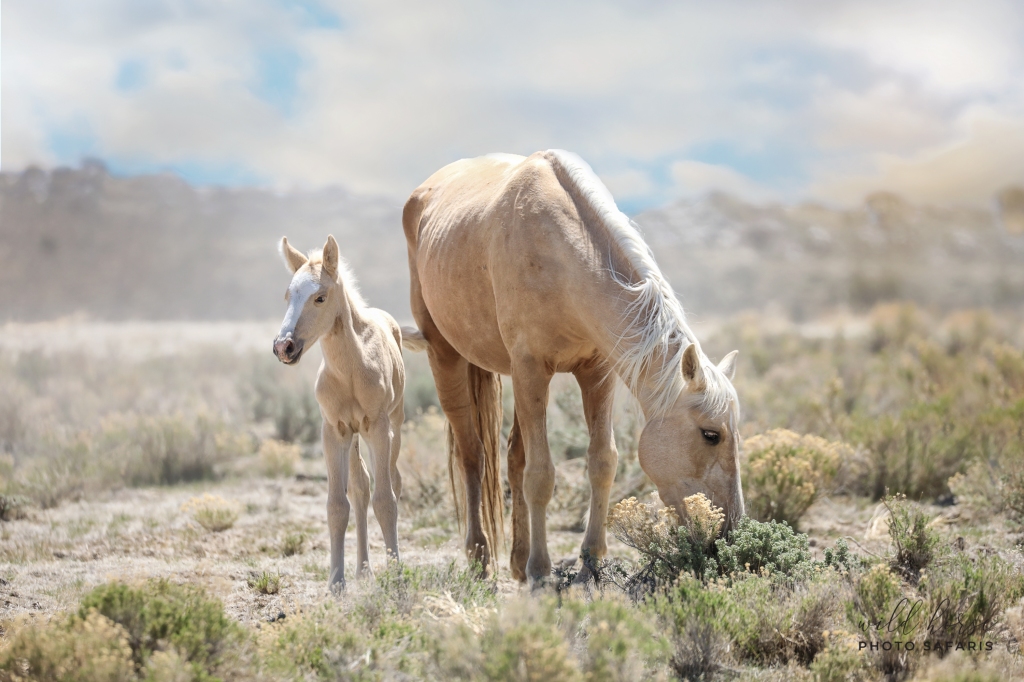
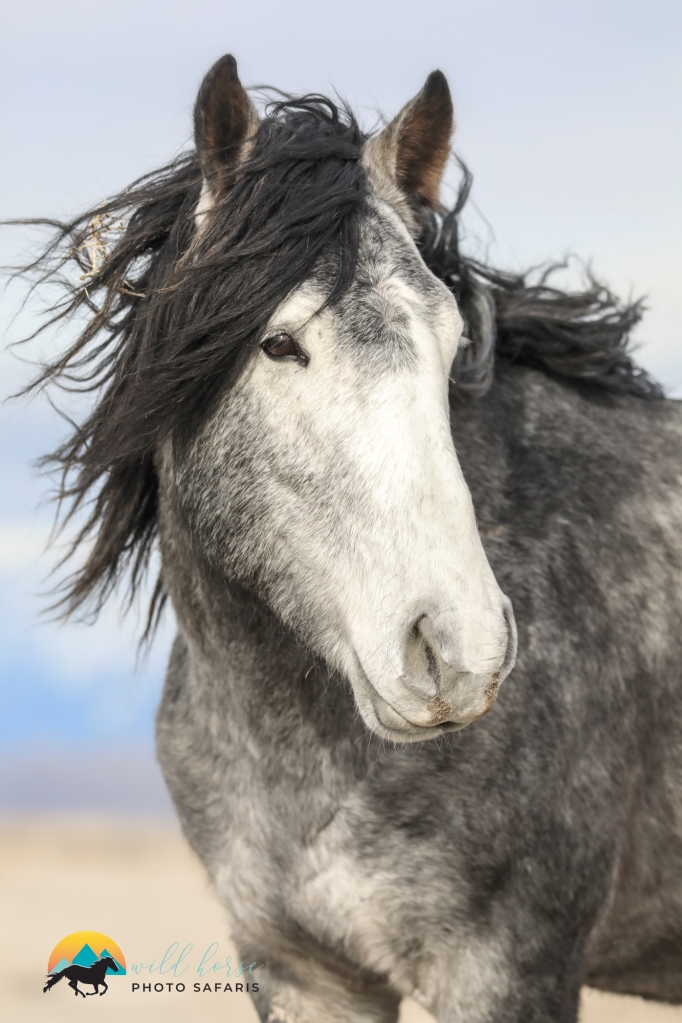
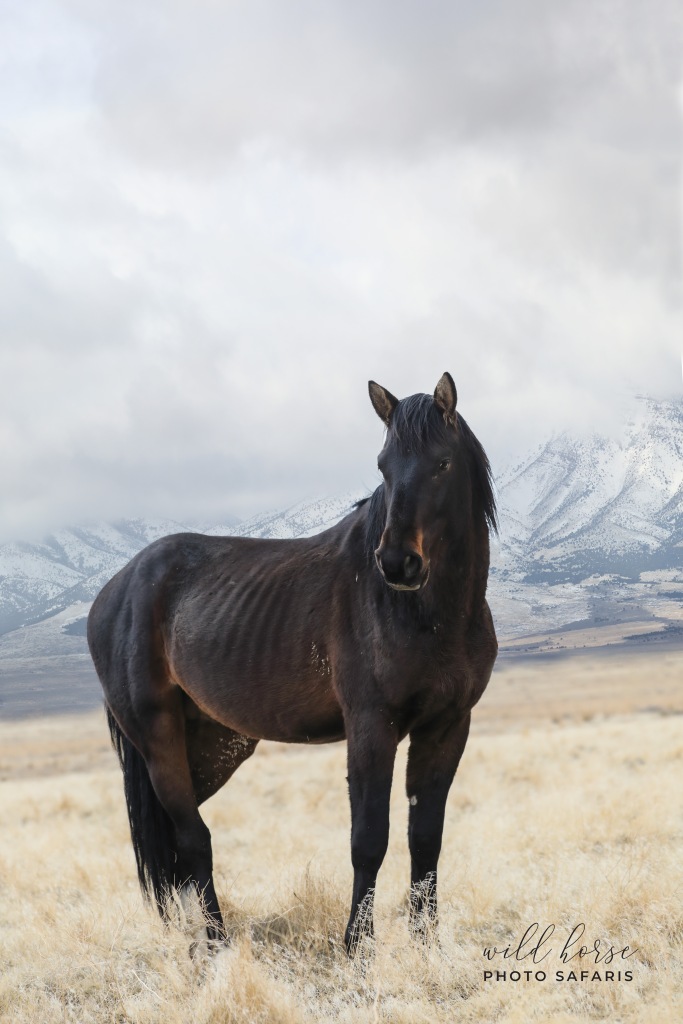
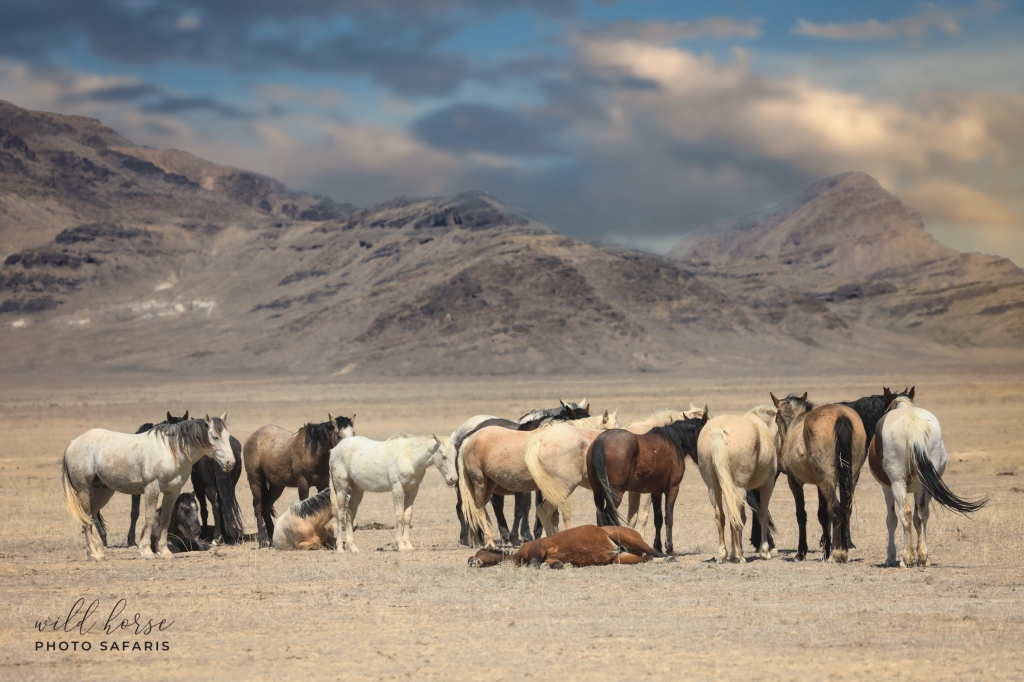
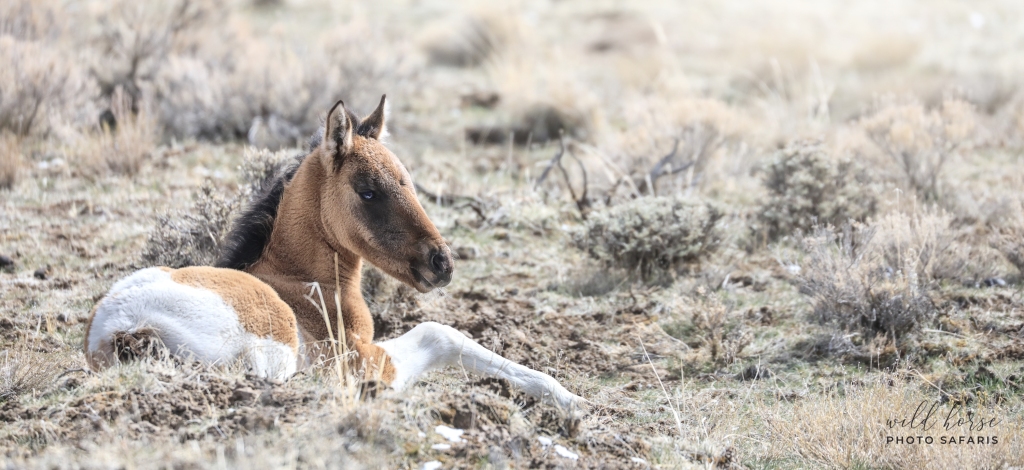
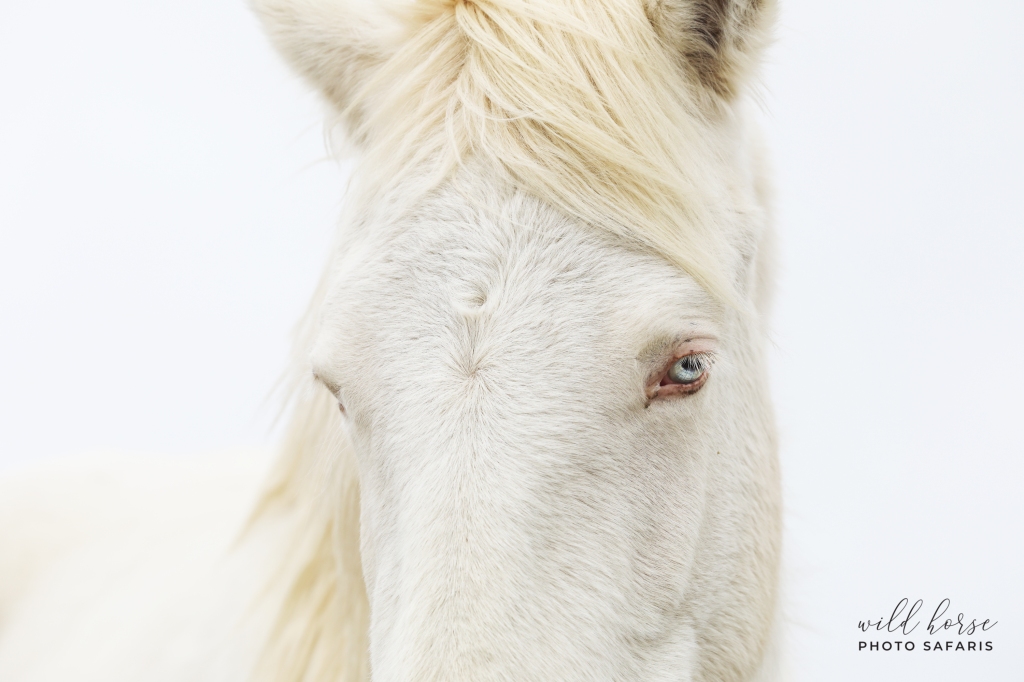
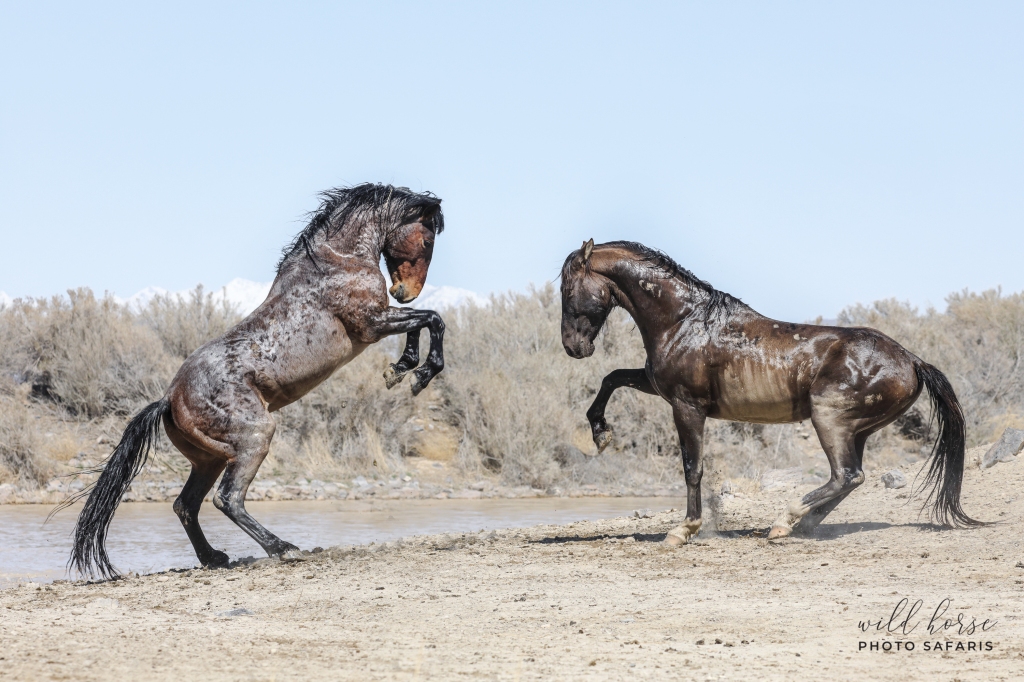
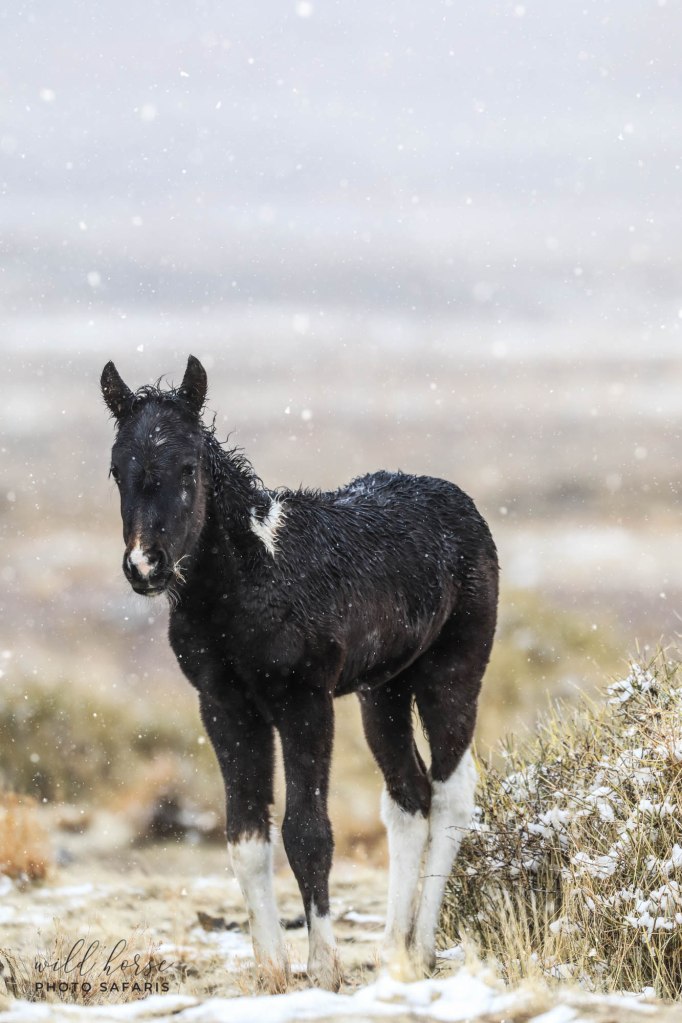
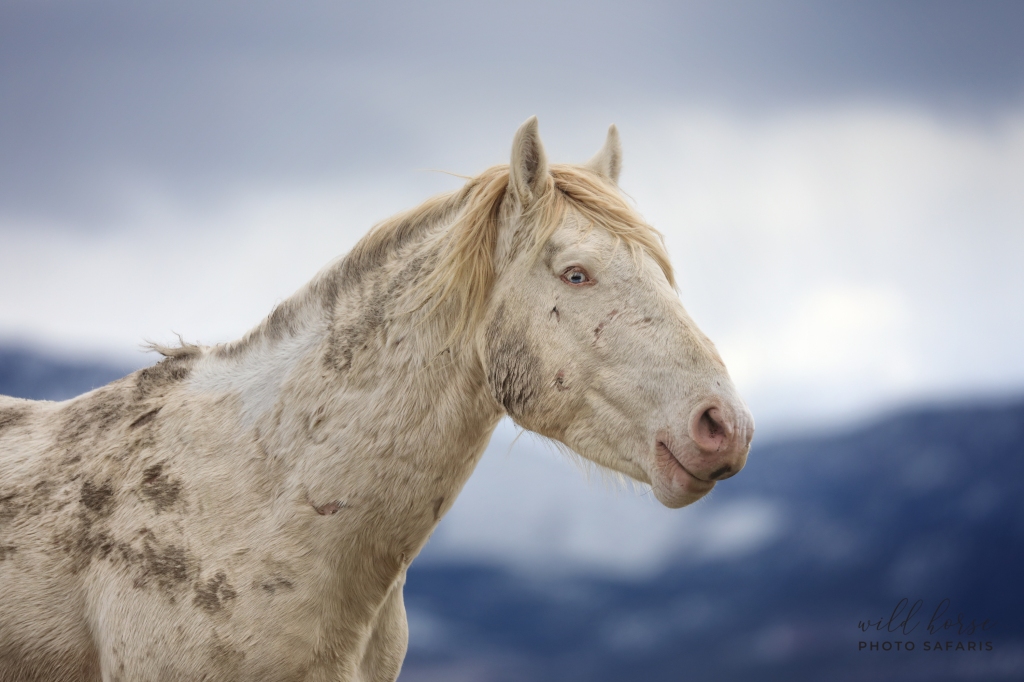
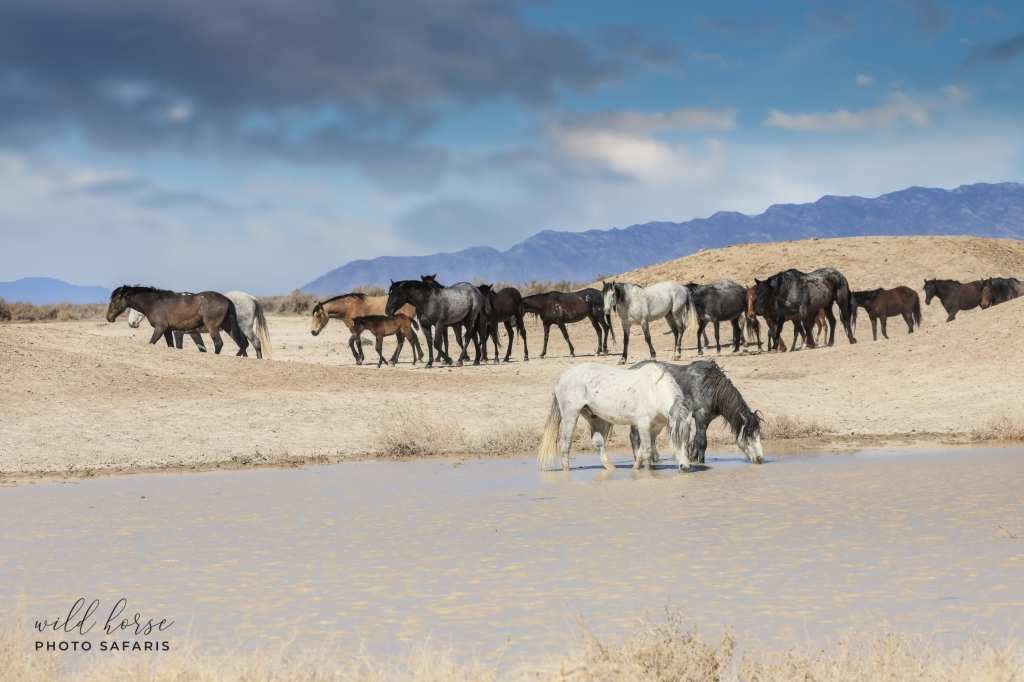
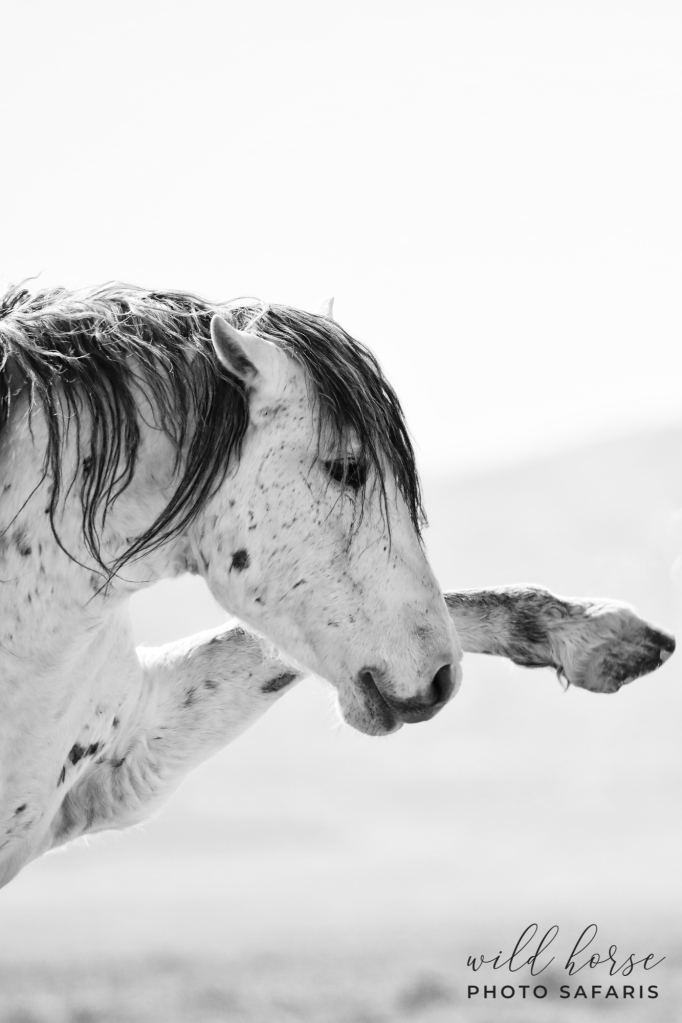
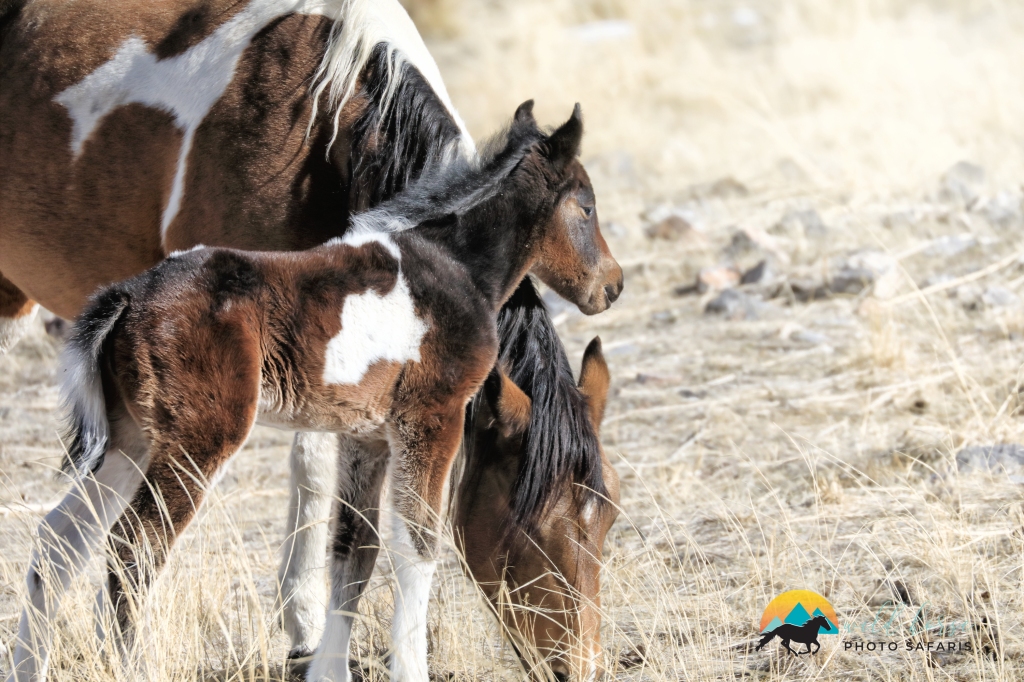
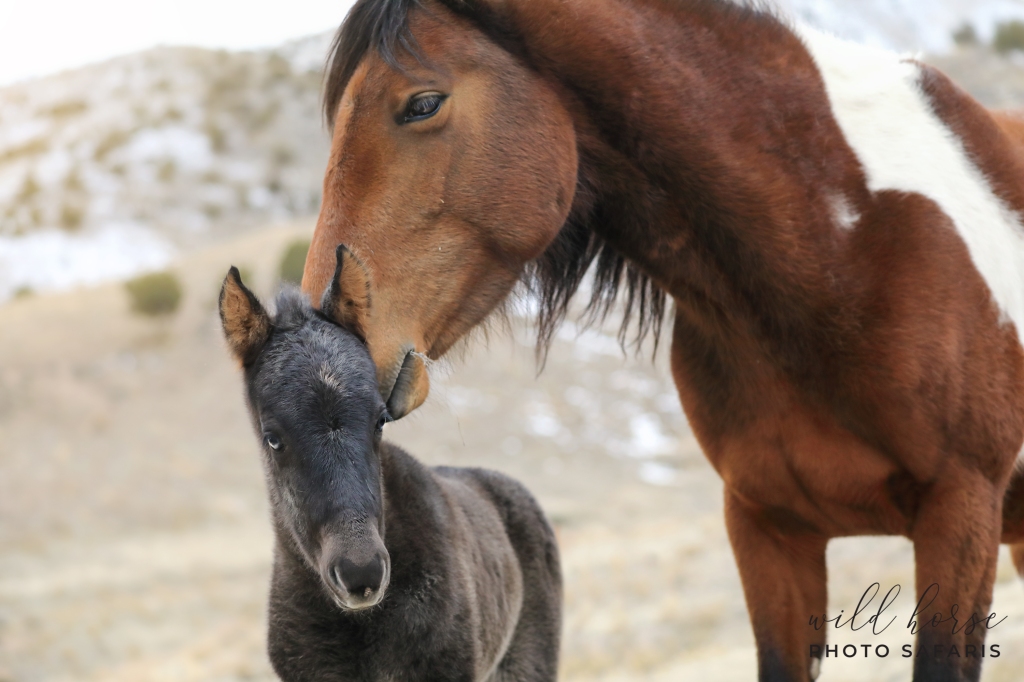
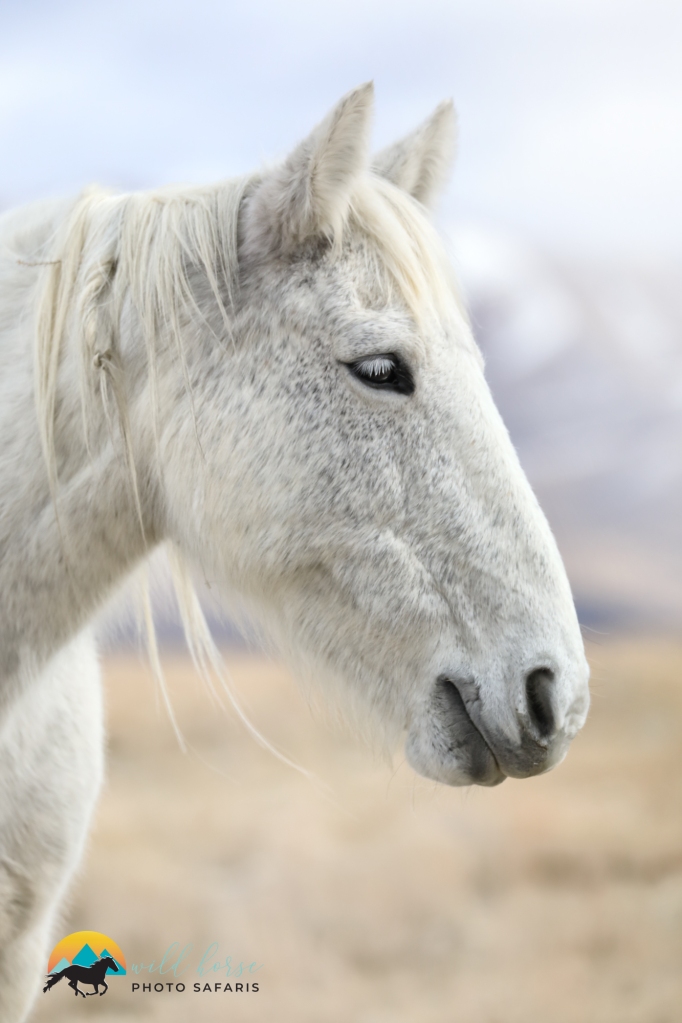
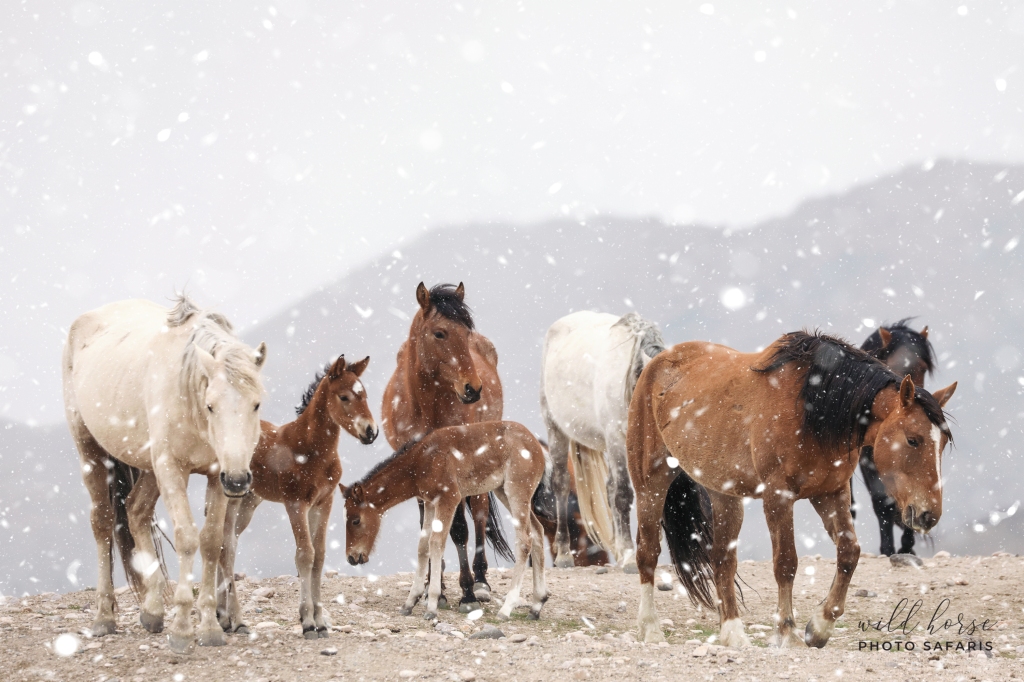
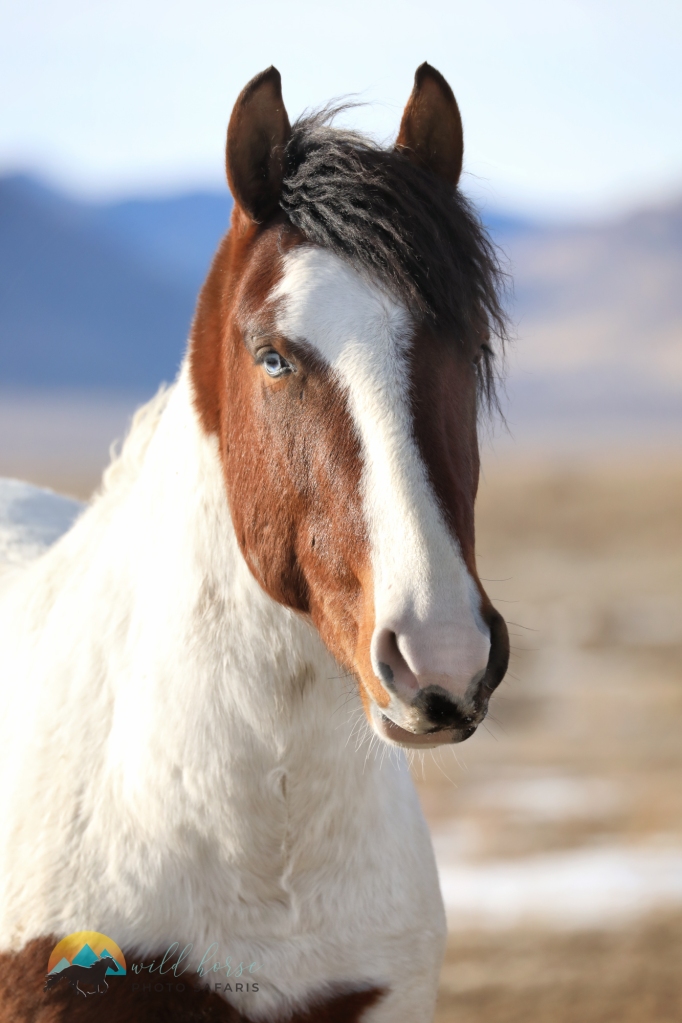
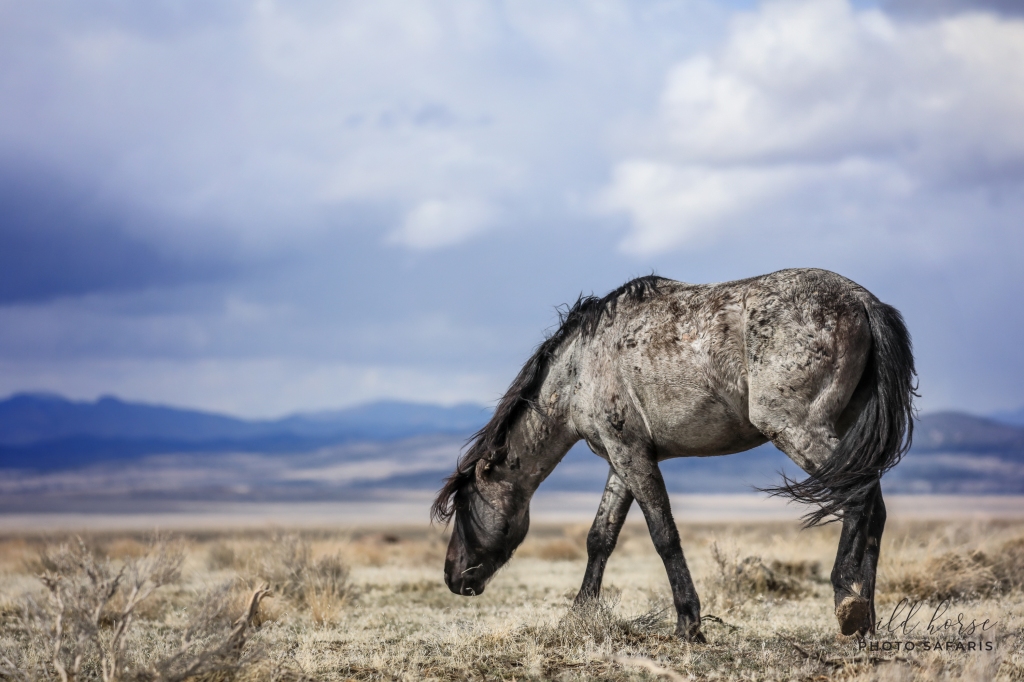
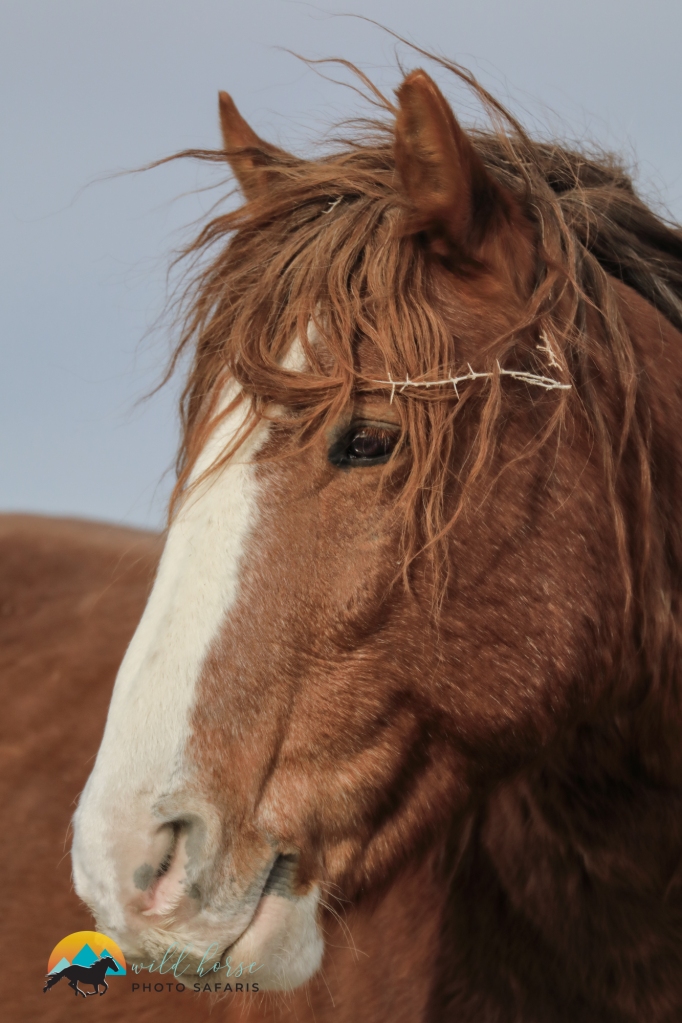
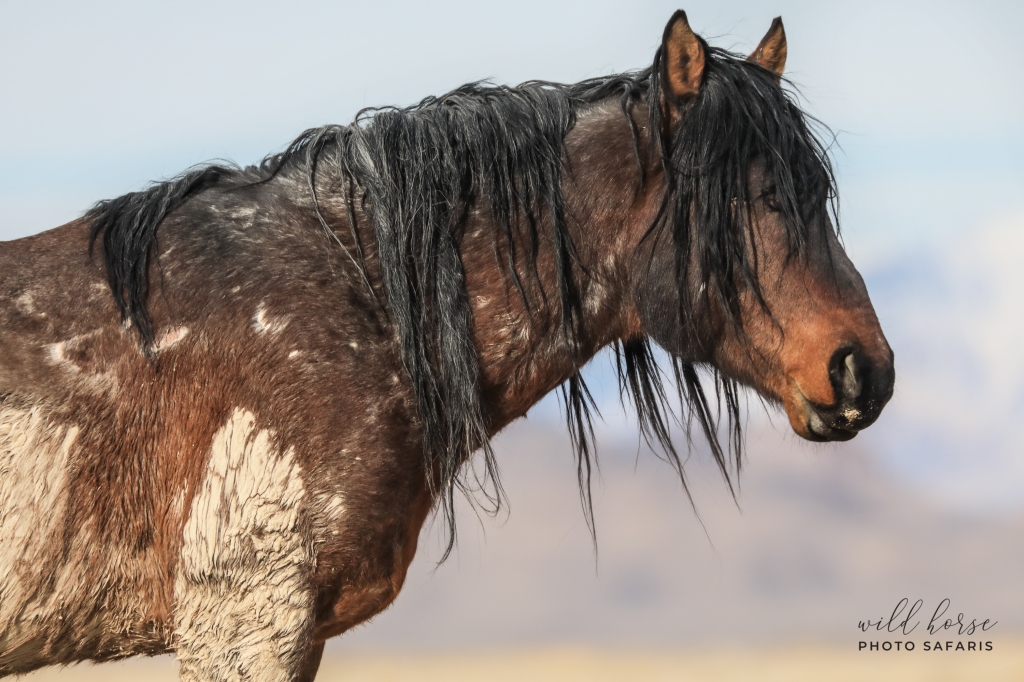
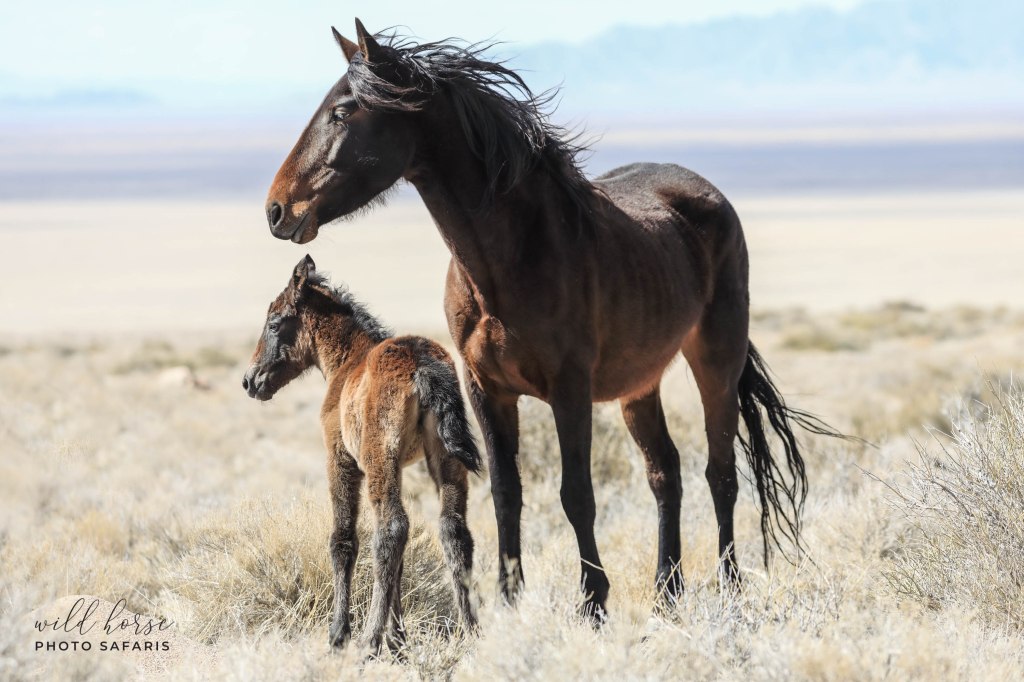
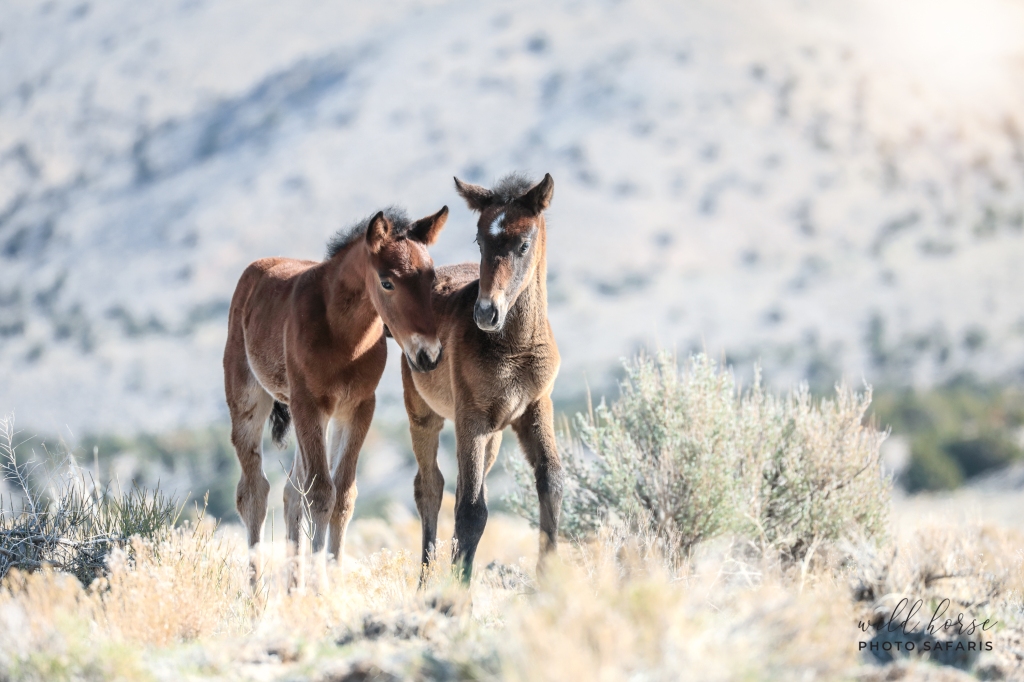
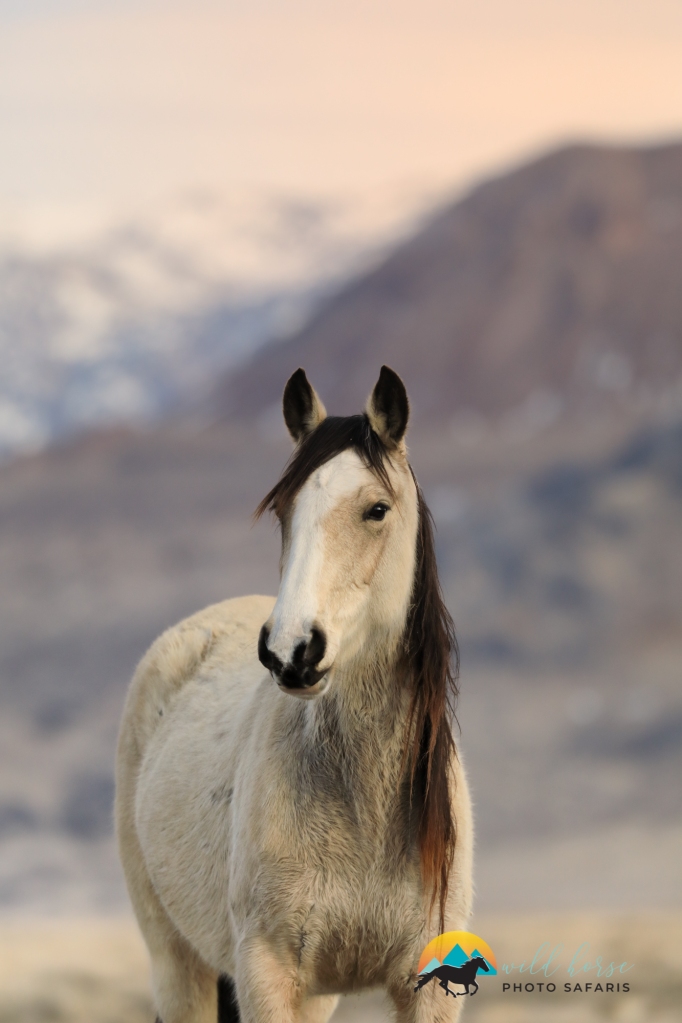
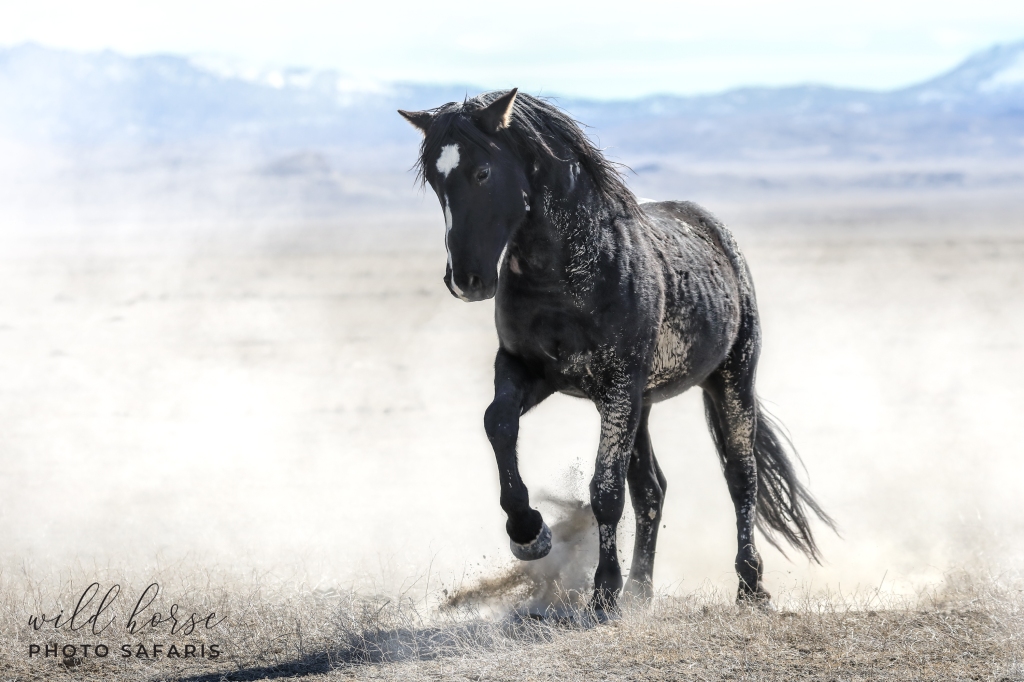
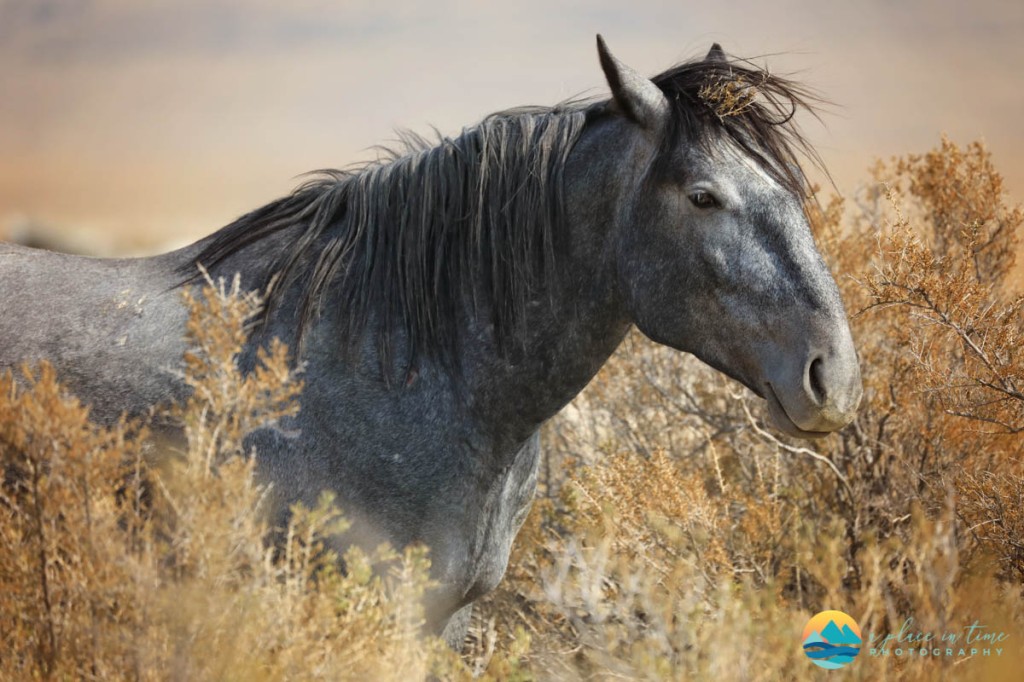
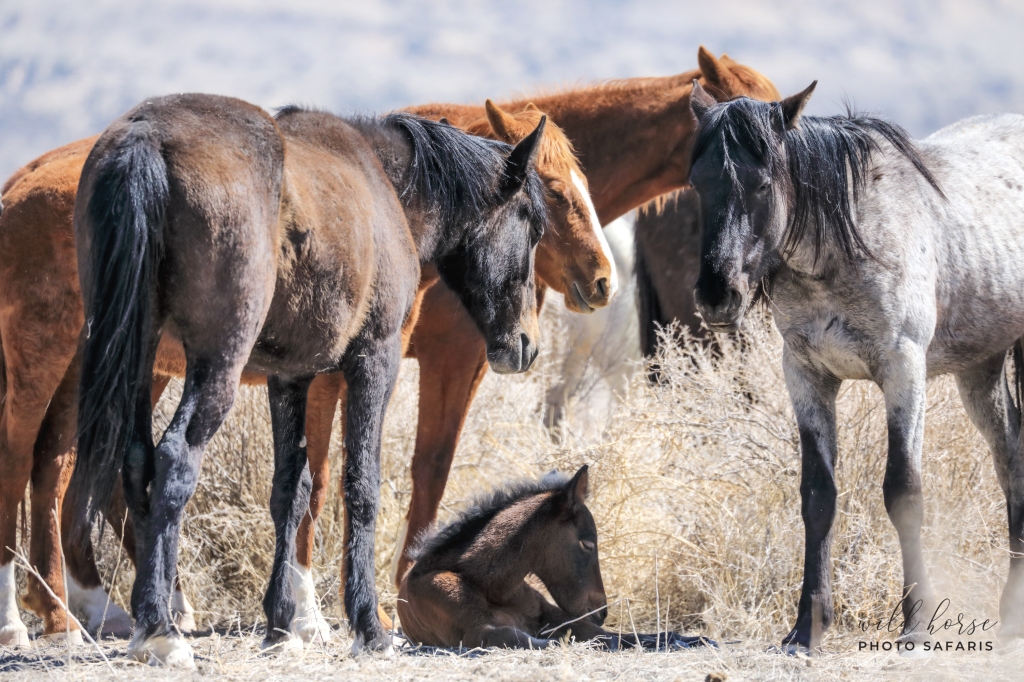
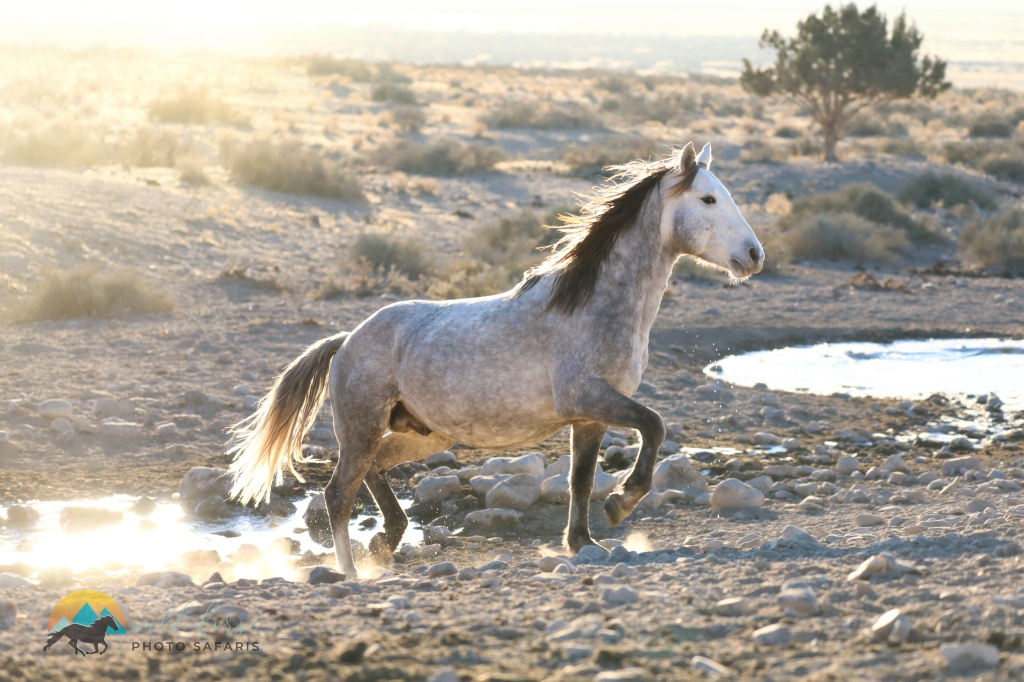
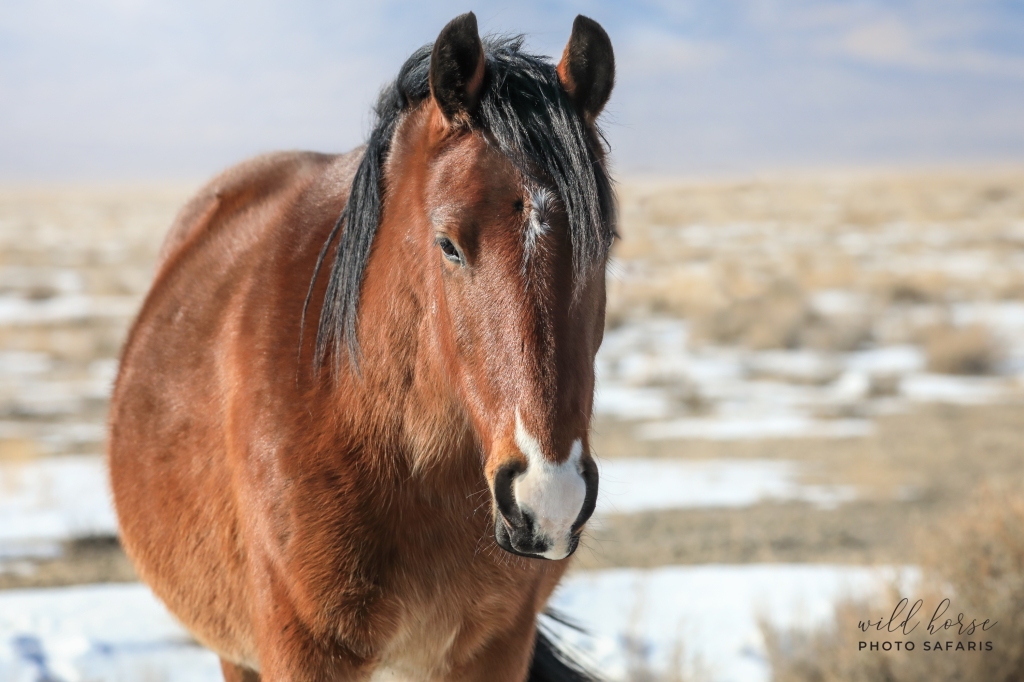
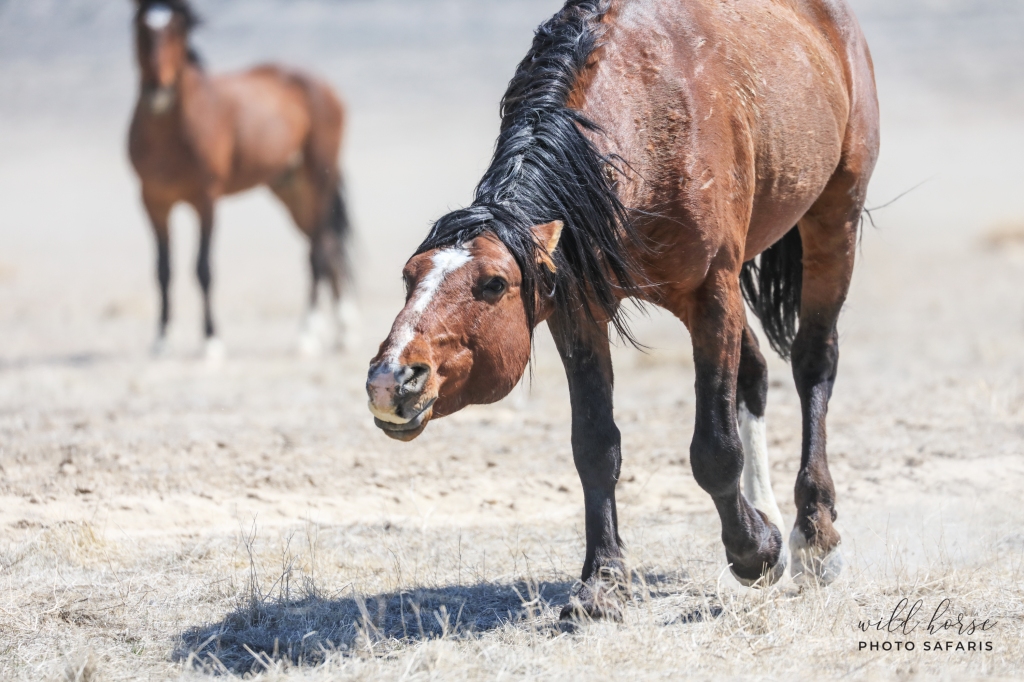
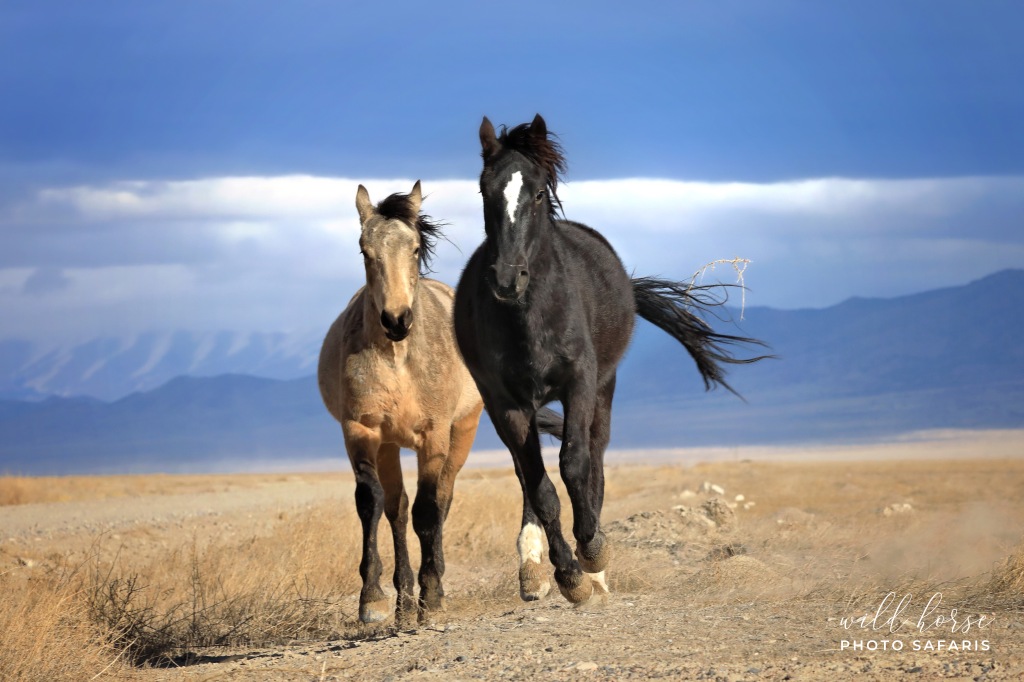
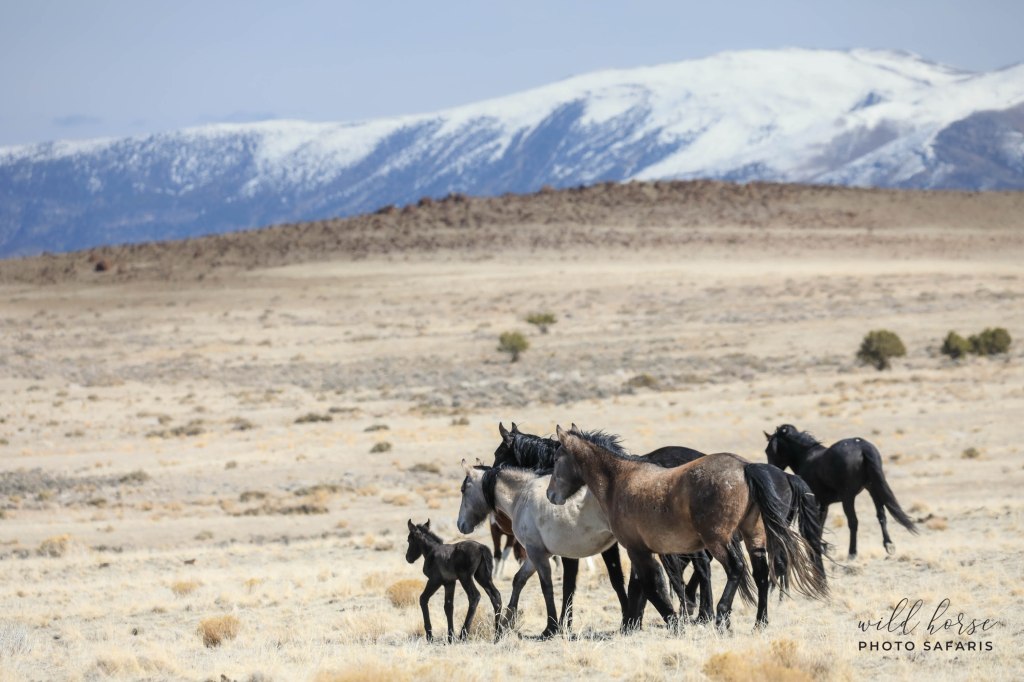
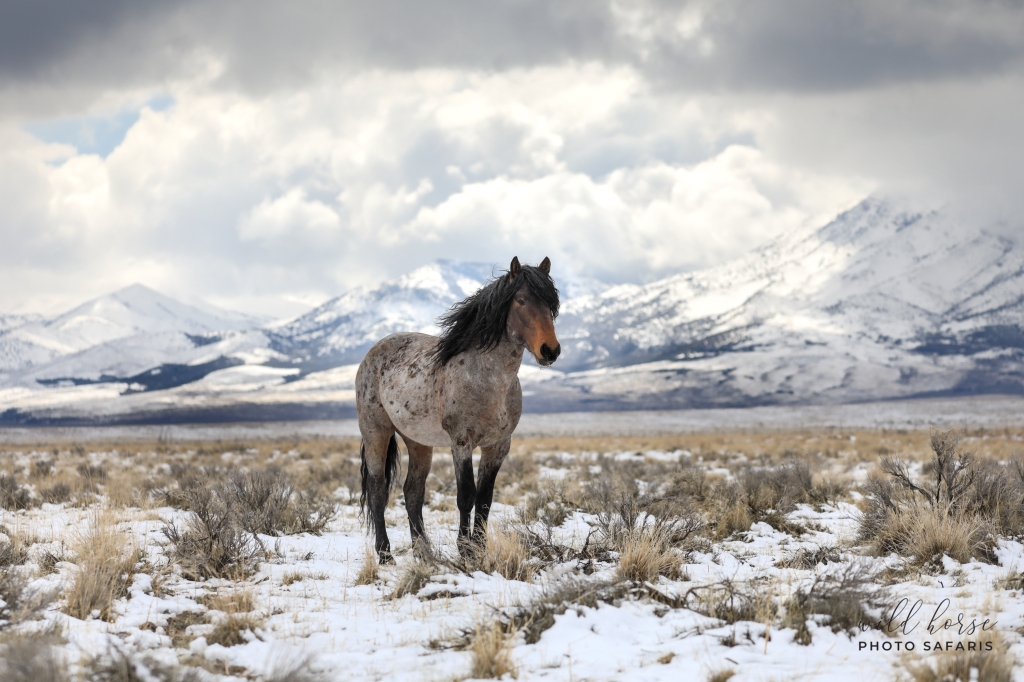
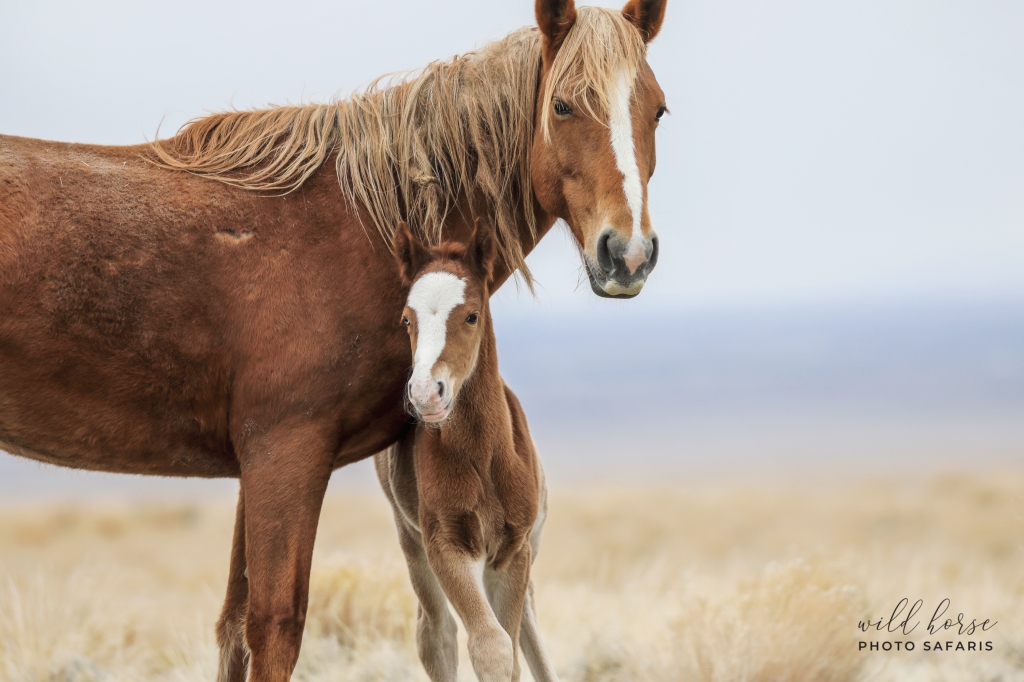
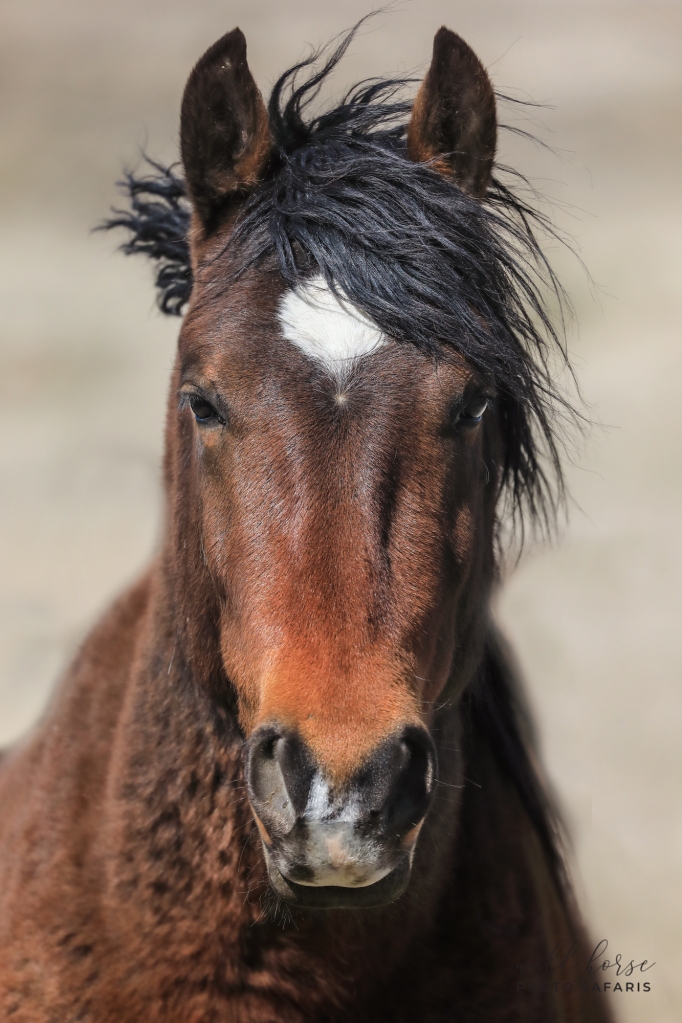
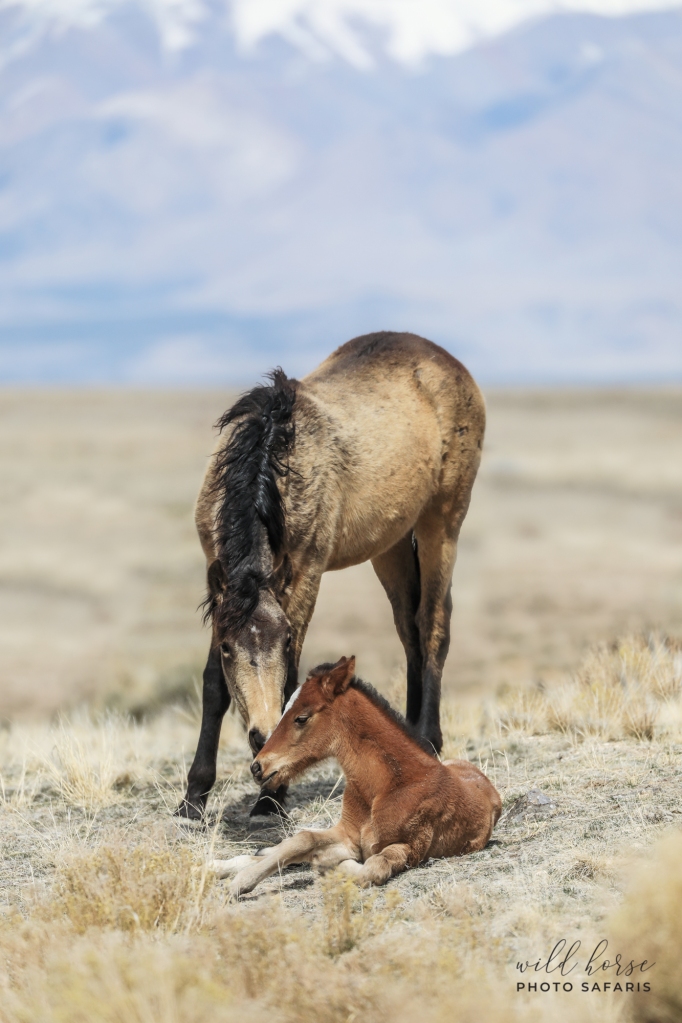
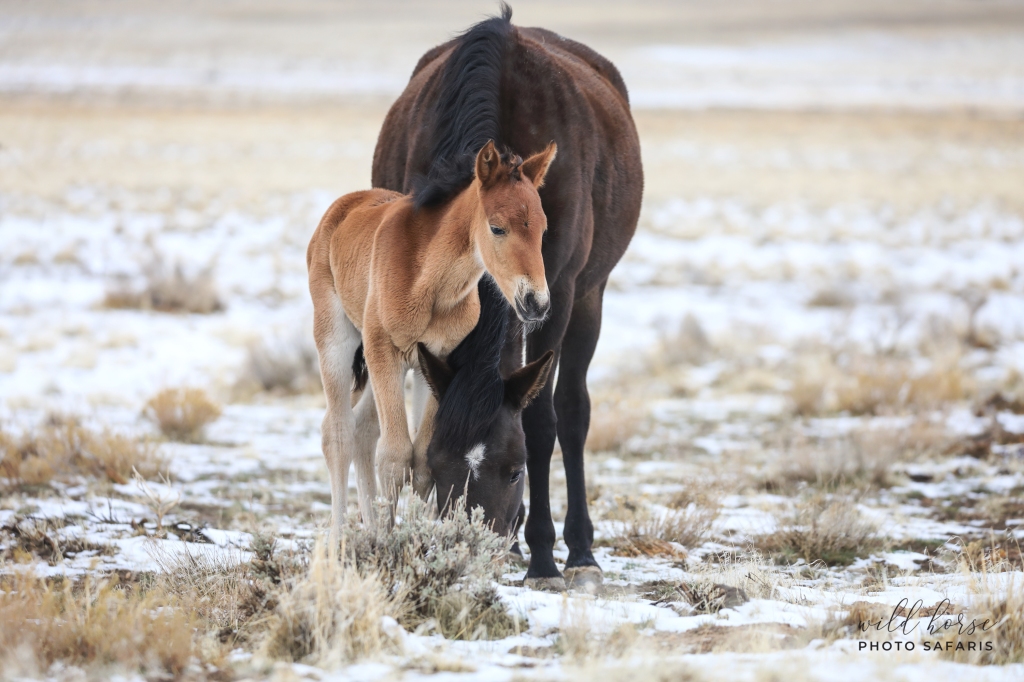
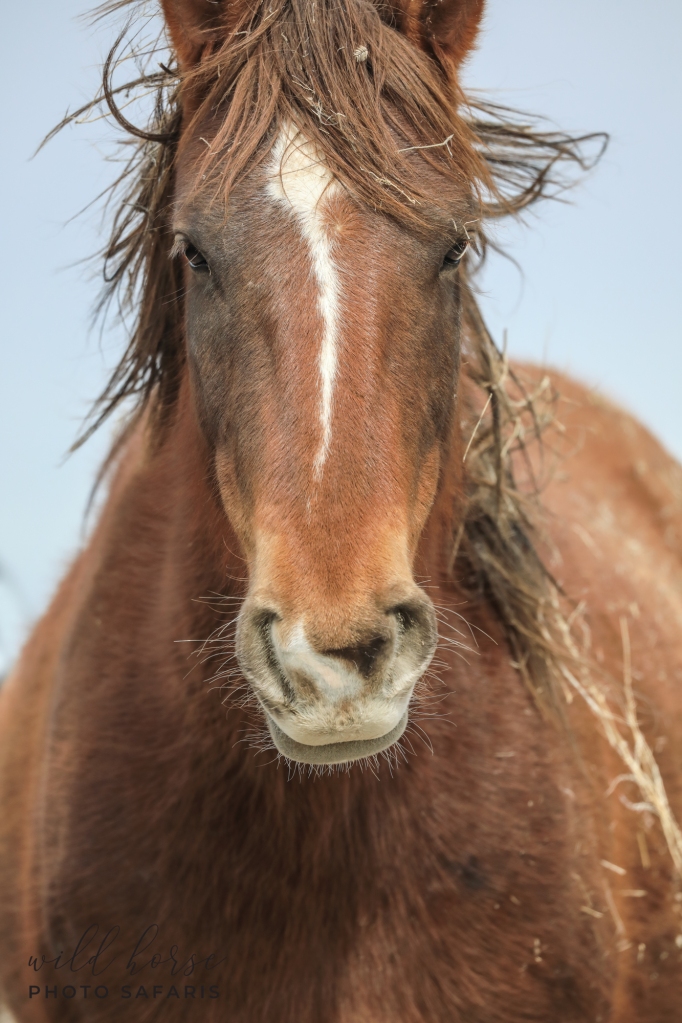
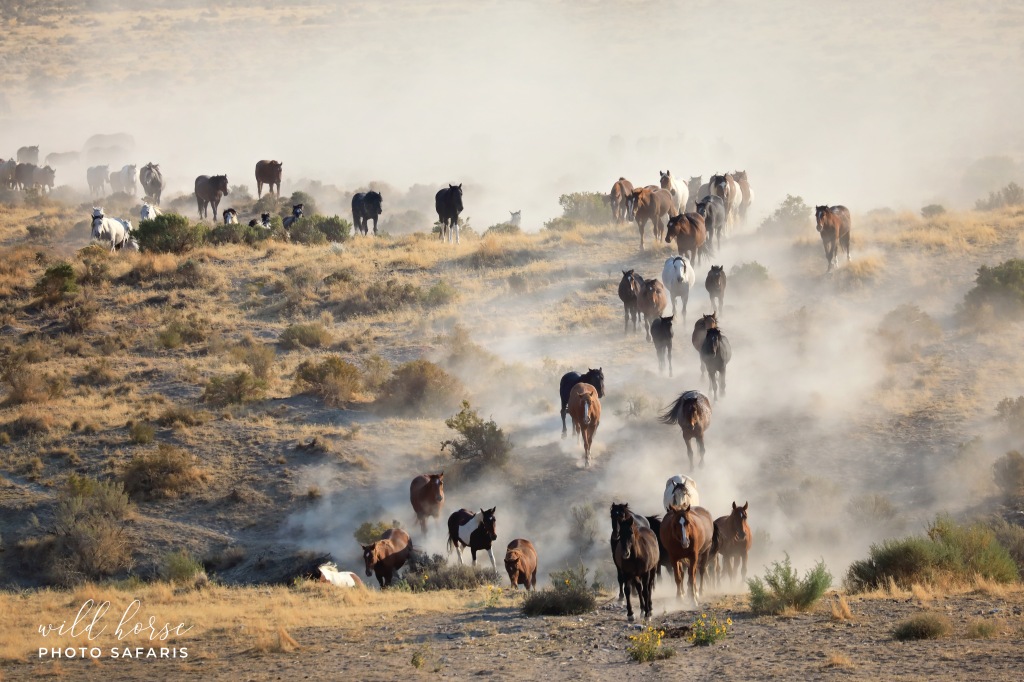
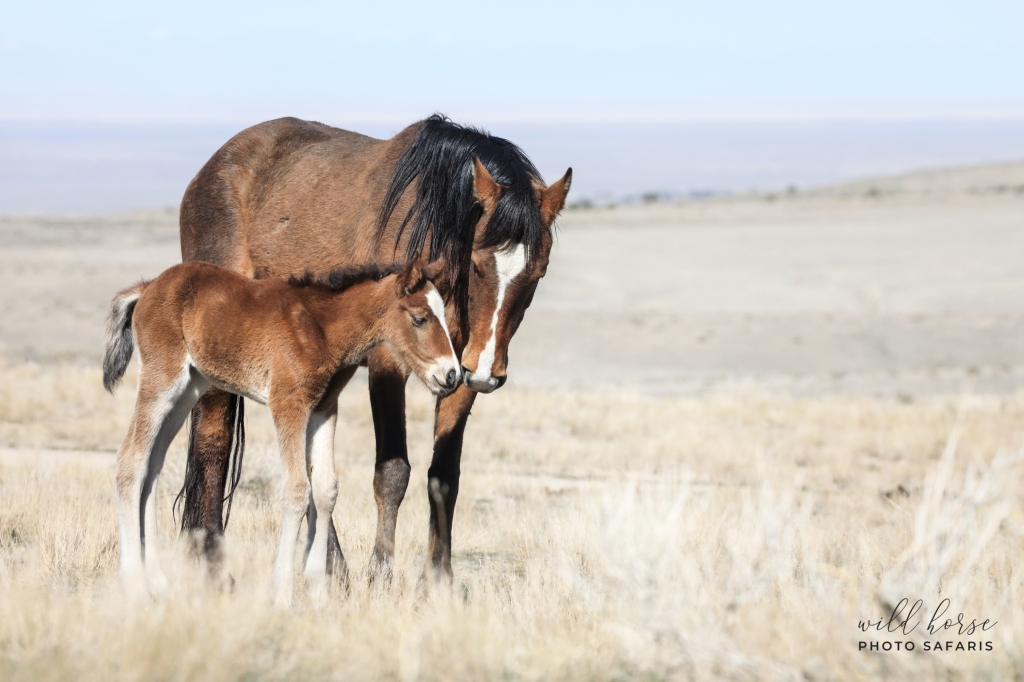
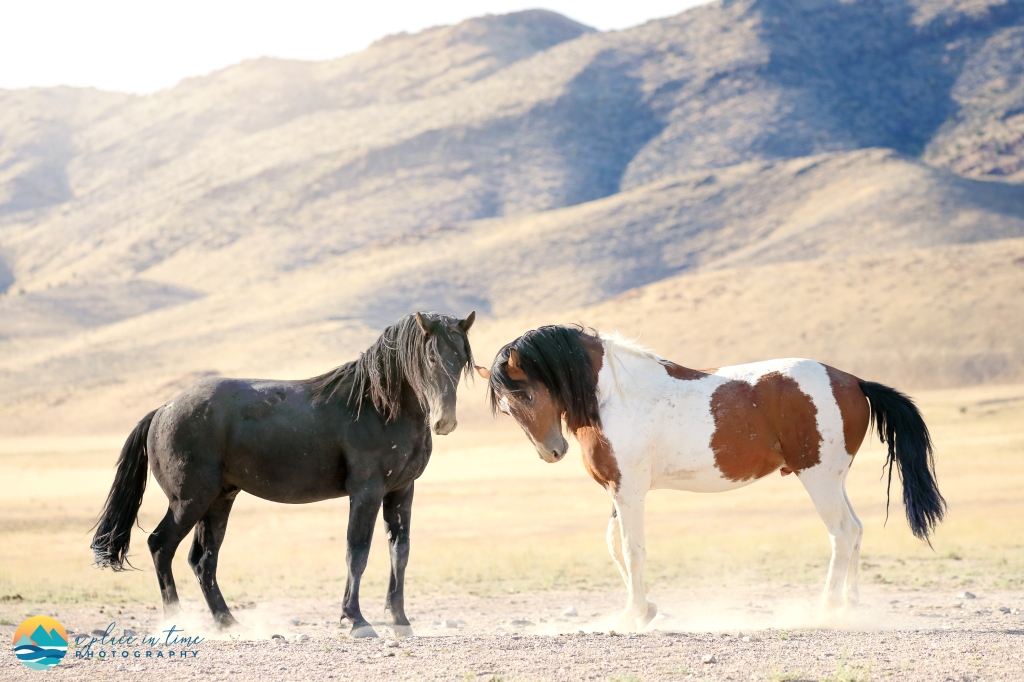
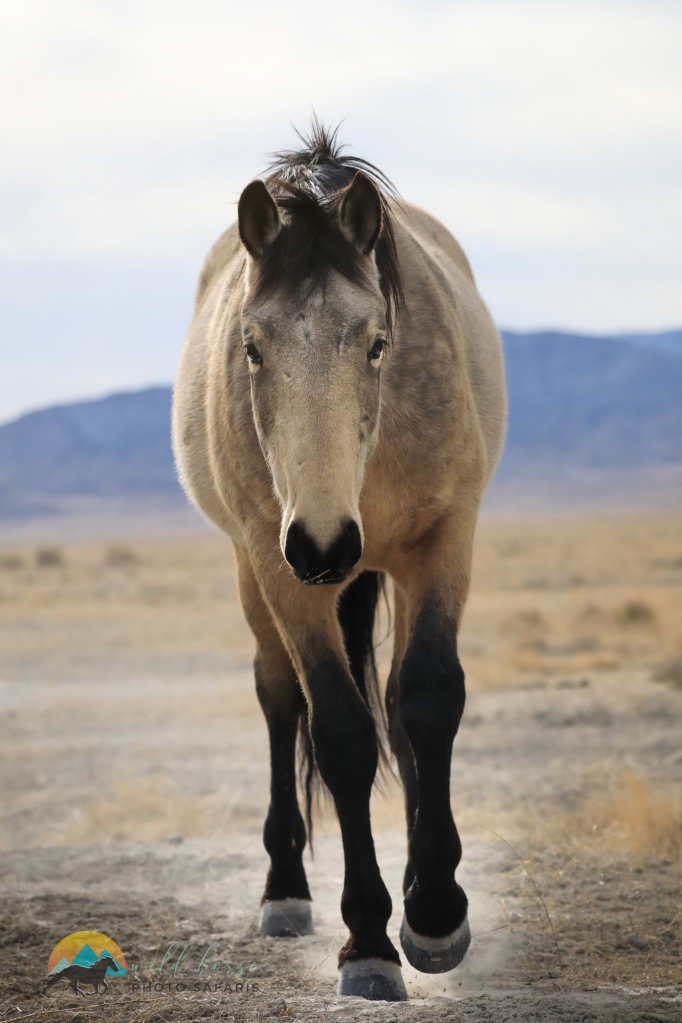
Who to contact & how you can help
In addition to contacting the Department of the Interior Directly, please see your support to the list of local elected officials below who can directly speak up for our Onaqui Wild Horses and their protection for living in the wild.
Deb Haaland Secretary of the Interior (202) 208-3100
Utah Senator Romney (202) 224-5251 or via email: https://www.romney.senate.gov/contact
District 2 State Representative Chris Stewart (202) 225-9730, (435) 364-5500 or (435) 627-1500 or via email https://stewart.house.gov/contact/
Tooele City Mayor Debbie Winn (435) 843-2104 dwinn@tooelecity.org
Tooele City Council Members:
- Justin Brady – jbrady@tooelecity.org
- Melodi Gochis – mgochis@tooelecity.org
- Tony Graf – tgraf@tooelecity.org
- Ed Hansen – ehansen@tooelecity.org
- Maresa Manzione – mmanzione@tooelecity.org
Tooele County Council Members:
- Scott Wardle – scottwardle2@gmail.com
- Kendall Thomas – kthomas@tooeleco.org
- Tye Hoffmann – tye.hoffmann5@gmail.com
- Jared Hammer – jaredcountycouncil@gmail.com
- Tom Tripp – ttripp@tooeleco.org
Salt Lake City Mayor Erin Mendenhall (801) 535-7704 mayor@slcgov.com
Salt Lake City Council (801) 535-7600 council.comments@slcgov.com
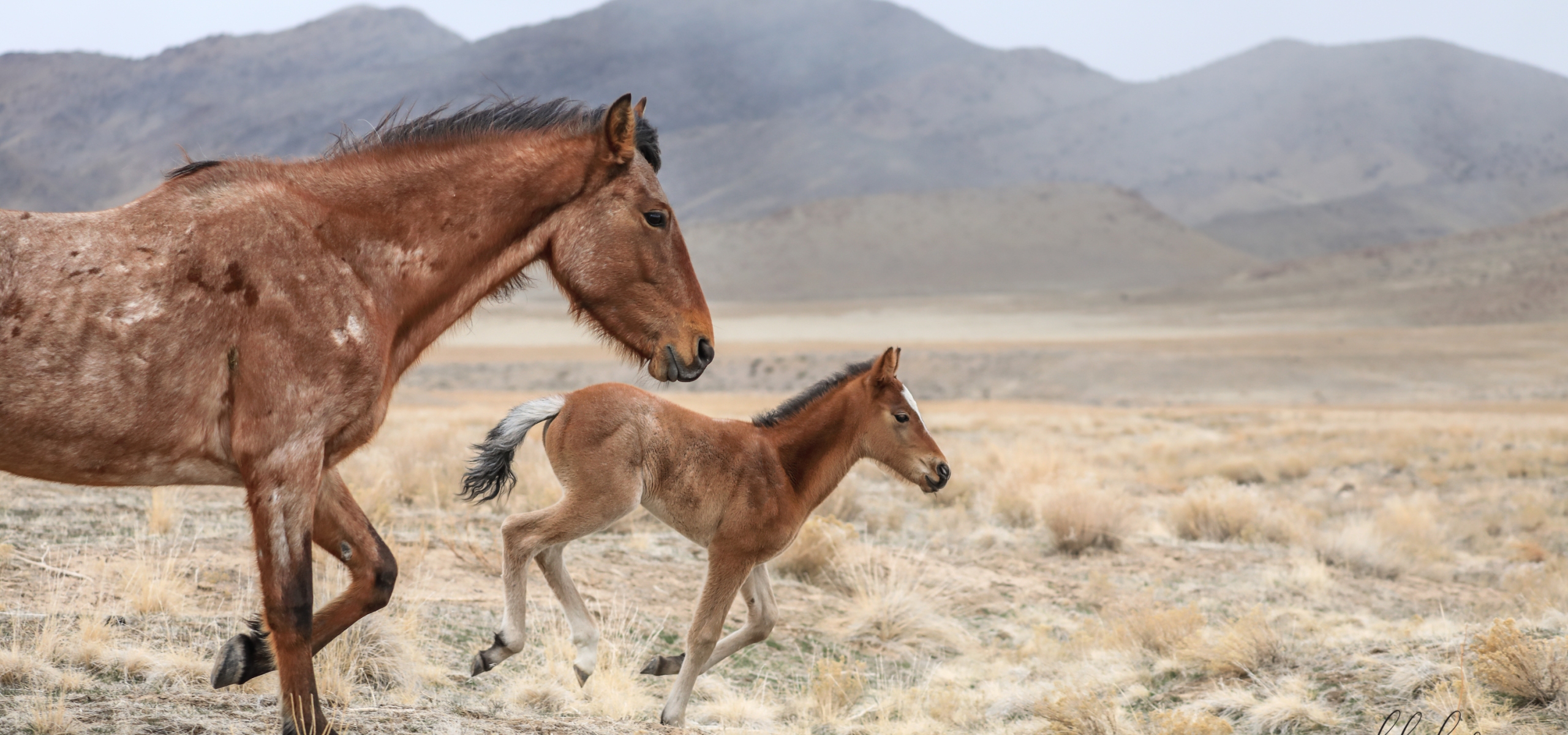
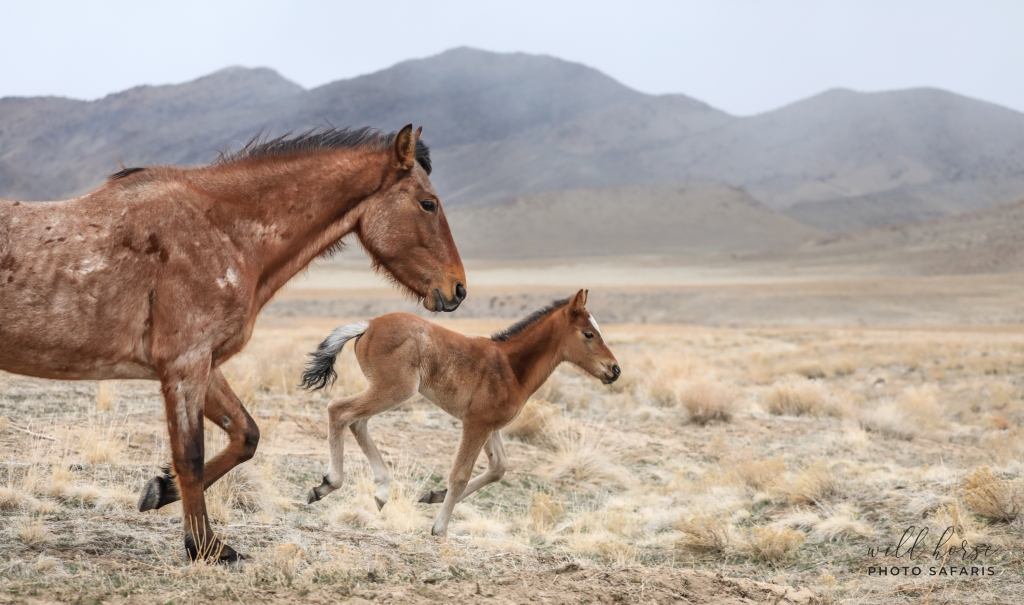
As of today there are 102 days left and counting before 400 of our Onaqui wild horses are removed from their home here in Utah’s west desert.
The Utah BLM estimates there to be a total herd population of 475 horses not including 2021 foals. This total encompasses the North herd, the South herd and horses which have wandered outside the HMA. It was once thought that only 50 horses was needed to maintain genetic diversity, however more recent studies have shown this number to be much higher. (read more details here) Assuming the current BLM population numbers to be correct, if 400 of 475 wild horses are removed that leaves 75 horses on the range for the HMAs 2 distinct herds: 37.5 horses for a north herd and 37.5 horses for a south herd.
BLM then plans on handpicking 104 horses based on age, gender and ease with which to dart with equine fertility control to subsequently return to the range. 52 horses for the north, 52 horses for the south and if equally divided in genders that’s 13 mares and 13 stallions to each group.
In a nutshell it can be assumed that after the July 2021 round-up is all said and done only 89 horses will be allowed to live in each section of the range respectively. That’s a dangerously low level of horses to maintain genetic variation, herd structure and contribute to the future health & viability of the herd.

Why remove so many?
- In laymen’s terms this is the number of horses (or burros) deemed appropriate to live on any federally managed HMA back in the 1970’s and 1980’s.
It all comes down to HMA (Herd Management Area) and what the BLM has determined to be the AML (Appropriate Management Level) for that HMA. The BLM is slated to remove thousands of horses and burros from public lands in the coming years based on a report submitted to congress at the end of 2020. That report recommends the removal of 20,000 wild horses and burros each year for 3.5 years from HMAs throughout the United States. A full copy of the report can be found here.
Where did the AMLs come from and how were they determined?
- In laymen’s terms they were randomly set when population numbers were nearing extinction and should be re-evaluated based on current and ongoing scientific studies.
With the enactment of the Wild Horse & Burro Act of 1971 the BLM was assigned with the task of establishing both a high and low population size deemed appropriate for each Herd Management Area. (https://www.nap.edu/read/13511/chapter/9#196).
Unfortunately all those years ago when setting the AML’s thorough scientific research wasn’t conducted and hence in recent years both the National Academy of Sciences (NAS) and the 10th circuit court have rendered them meaningless. The 2013 NAS report goes into detail stating that “The Wild Horses and Burros Management Handbook lacks the specificity necessary to guide managers adequately in establishing and adjusting appropriate management levels.” And further that “How AMLs are established, monitored, and adjusted is not transparent to stakeholders, supported by scientific information, or amenable to adaptation with new information and environmental and social change.”
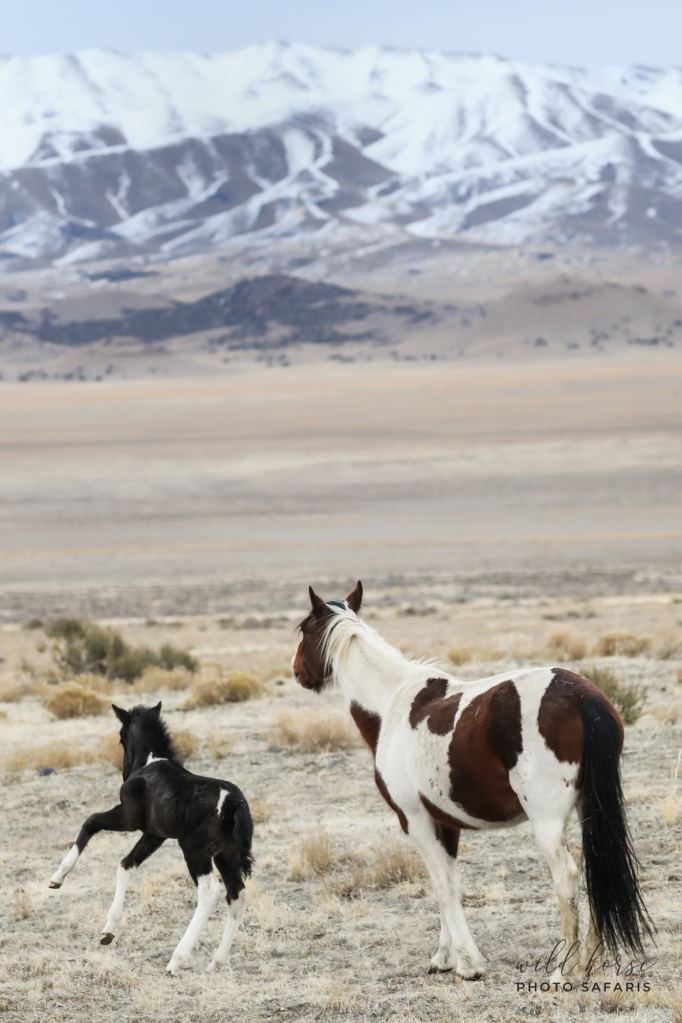
Can AMLs be changed?
- In laymen’s term = Yes.
In chapter 7 pages 223-257 of the NAS report it is recommended that “BLM should also develop approaches for quantitatively distinguishing horse or burro use from livestock and wildlife uses of forage, riparian areas, and other resources to verify utilization partitioning between livestock, horses, burrow, and other herbivores.” It goes on to state “… A scientific approach is needed to identify objectively the constraints on horse and burro population… The ecosystem might look different and function differently in the presence of more minimally managed equid populations from how it does with no or markedly reduced populations, but it may nevertheless be sustainable over time.”
This is in addition to their scientific finding that wild horse and burrow populations will self-limit over time as there is increased demand for forage and water and a reduced reproductive output of mares.
In 2016 the 10th Circuit Court of Appeals ruled in favor of the mustangs in the neighboring state of Wyoming. “The appellate court has clearly affirmed two important issues – first that wild horse populations in excess of the BLM’s arbitrarily established ‘appropriate’ management levels do not equate with overpopulation, and second that the BLM is not required to remove wild horses from the range even if it determines an overpopulation exists,” Eubanks continued. “Rather the agency has broad discretion to implement other management approaches, including implementation of fertility control to humanely reduce population growth rates and reduction in livestock grazing within HMAs.”
So should the Utah BLM be moving forward with an aggressive plan to remove between 1,100 to 1,200 more horses and burros from federal lands in 2021 in addition to the over 2,000 animals they already removed in 2020? If you’re using the comprehensive scientific data as they relate to these practices the answer would be No.
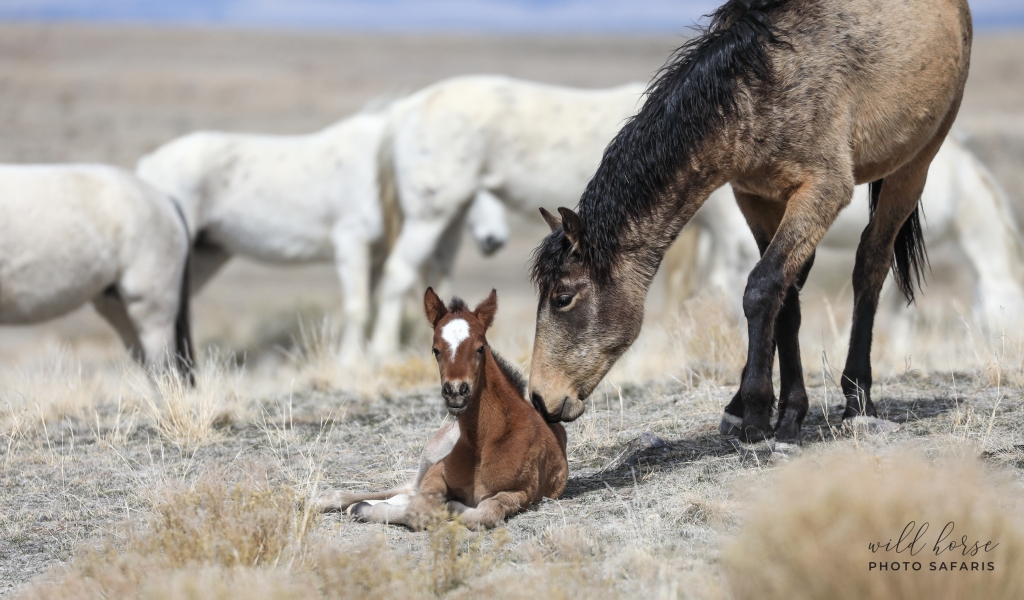
How does all this relate to the Onaqui?
The current AML for the Onaqui HMA is set at 121-210 horses for 240,153 acres.
Even at the high end that equates to over 1,000 acres per horse. In a recent form email I received from BLM regarding the upcoming round-up they state that there is only “a 5-10% increase in population per year.” This is a drastic difference when compared to the 20% population increase that Gus Warr, the head of Utah’s Wild Horse & Burro program, claimed as a justification for the July 2021 round-up in his live zoom meeting on March 2nd, 2021.
According to Mr. Warr the Utah BLM currently houses 5,500 horses in long-term off-range facilities. At a cost of $5/horse/day for housing that’s a total of $27,500 per day or $10,037,500 per year. Factor in the additional 2,000 horses Utah BLM plans to remove in 2021 that’s another $10,000 per day or $3,650,000 per year not including the cost of helicopters used in round-ups which run between $500-$800 PER HEAD.
- So for example the cost for the 2021 Onaqui Round up can be estimated to total between $200,000 and $320,000 just for the helicopters alone.
- The cost for rounding up the 5,500 head of horses that are already in holding facilities realistically cost taxpayers between $2,750,000 and $4,400,000.
That’s between three million and five million dollars spent to remove horses and burros who were previously living self-sustaining lives in the wild.
For more details on round-up costs, contracts and off-site holding facility costs click here.
If AML numbers can be adjusted and a scientific study can help to determine what current level of equid the HMAs can reasonably support then a moratorium should not only be put on the Onaqui roundup scheduled for July 2021, but the other roundups slated to place as well. This is something that our Department of the Interior and newly appointed Interior Secretary Deb Haaland has the ability to rectify – placing a moratorium on further removals until a science based approach is established and implemented.
In the interim another very viable and cost-effective solution to help maintain herd population growth in available in the form of an equine contraceptive known as PZP. PZP is a dart administered to mares in the range and proven to be between 95-98% effective at preventing pregnancy. Currently a PZP program is in place at the Onaqui HMA involving 24 trained volunteers and the cost per mare runs $30/year. This program just started in earnest in 2019 with the darting of 135 mares (91 in the north herd and 44 in the south) and subsequently 165 total mares darted in 2020.
This PZP darting program has proven very effective in both the McCullogh Peaks HMA and Virginia Range HMA but needs time to fully reach it’s potential. The Onaqui aren’t being given that time.
More information on PZP programs and funding can be found in my previous blog here.
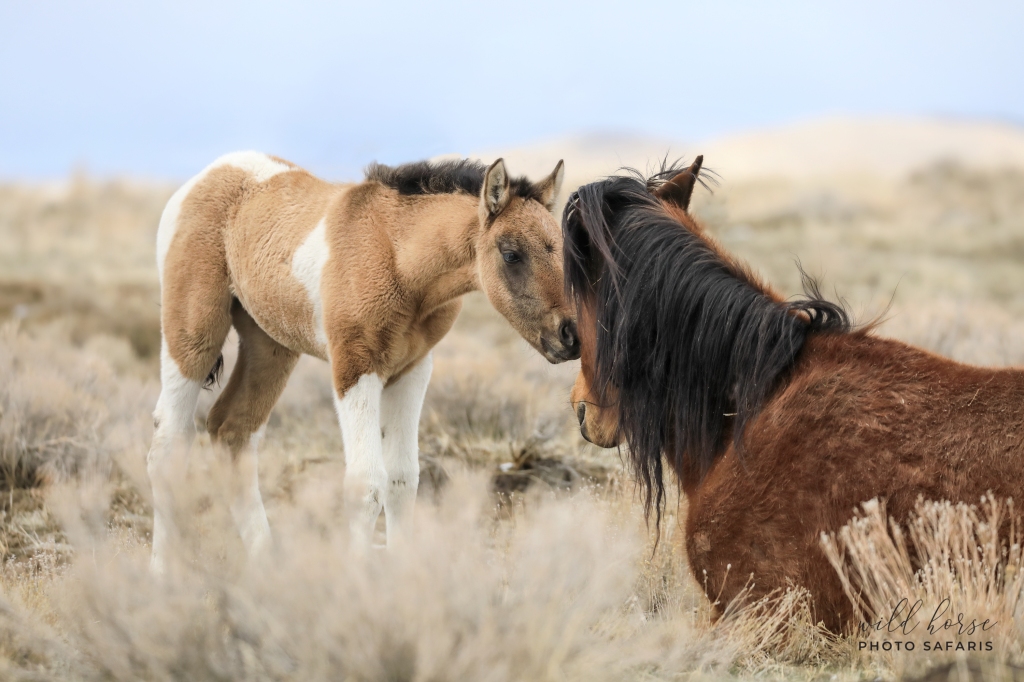
Local vs Federal Issue
There appears to be a broad level of misunderstanding as to who is responsible for the current levels of mismanagement of our wild horse and burro populations and who is responsible for rectifying this. Can the Department of the Interior step in and place a moratorium on “gathers” until the scientifically flawed management policies and procedures are rectified? Absolutely. Can oversight hearings be scheduled to delve into the BLMs Wild Horse and Burro program to allow for science-based application and implantation? Yes.
But this does not excuse the lack of investigation, intervention and action by local officials including City Council, County Council, Mayor, House of Representatives and Senators. These local officials have the ability to protect our cities, counties, communities and the valuable resources that fall within. The Onaqui wild horses being one of them. The Onaqui are considered to be one of the most accessible and photographed while horse herds in the world. They are loved by countless people both locally and world-wide. People from far reaches have visited our small rural communities bringing with them their business for our local hotels, local restaurants, local gas stations and local small businesses.
The Onaqui are worth far more to this rural community and beautiful state in the wild than they are being housed in captive pens at the expense to tax payers. We are in a unique position to profit locally from these beautiful animals instead of having them viewed as a burden and an expense. And our local leaders are the perfect ones to make their voices herd. They have the ability to directly contact Senator Romney, who in turn can appeal to the Secretary of the Interior to place a stay on any future removal of the Onaqui horses (and others) until sound scientific studies have been received, AMLs adjusted accordingly and detailed local BLM management guides established.
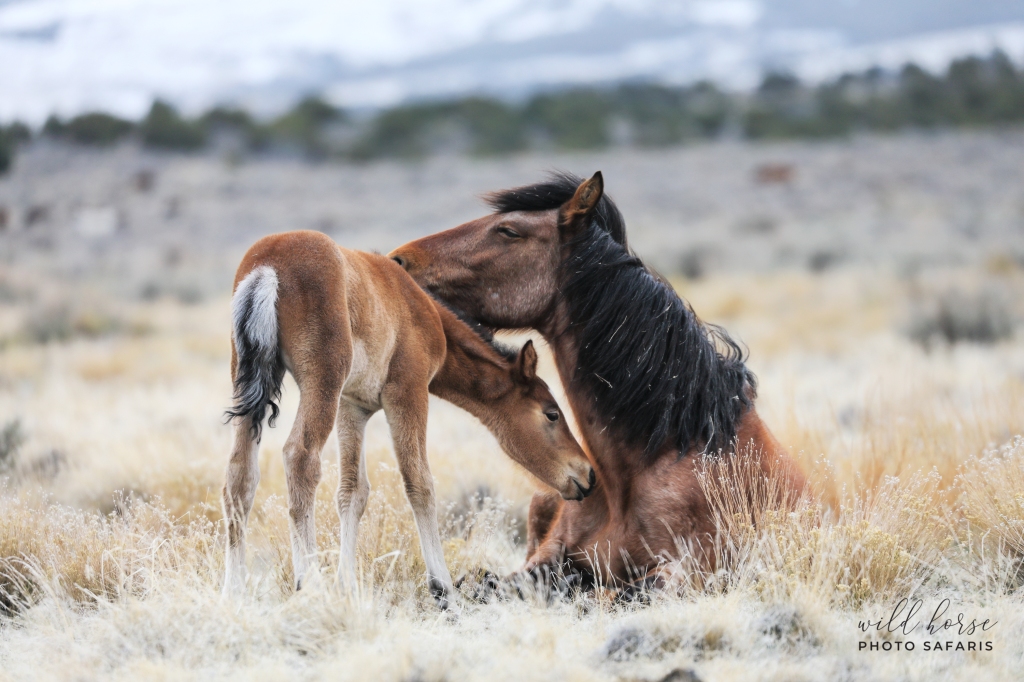
Who to contact & how you can help
In addition to contacting the Department of the Interior Directly, please see your support to the list of local elected officials below who can directly speak up for our Onaqui Wild Horses and their protection for living in the wild.
Utah Senator Romney (202) 224-5251 or via email: https://www.romney.senate.gov/contact
District 2 State Representative Chris Stewart (202) 225-9730, (435) 364-5500 or (435) 627-1500 or via email https://stewart.house.gov/contact/
Tooele City Mayor Debbie Winn (435) 843-2104 dwinn@tooelecity.org
Tooele City Council Members:
- Justin Brady – jbrady@tooelecity.org
- Melodi Gochis – mgochis@tooelecity.org
- Tony Graf – tgraf@tooelecity.org
- Ed Hansen – ehansen@tooelecity.org
- Maresa Manzione – mmanzione@tooelecity.org
Tooele County Council Members:
- Scott Wardle – scottwardle2@gmail.com
- Kendall Thomas – kthomas@tooeleco.org
- Tye Hoffmann – tye.hoffmann5@gmail.com
- Jared Hammer – jaredcountycouncil@gmail.com
- Tom Tripp – ttripp@tooeleco.org
Salt Lake City Mayor Erin Mendenhall (801) 535-7704 mayor@slcgov.com
Salt Lake City Council (801) 535-7600 council.comments@slcgov.com
For a complete list of the NAS review Key Findings click here: https://wildhorseeducation.org/2021/03/02/lets-talk-nas-reviewblm-report/
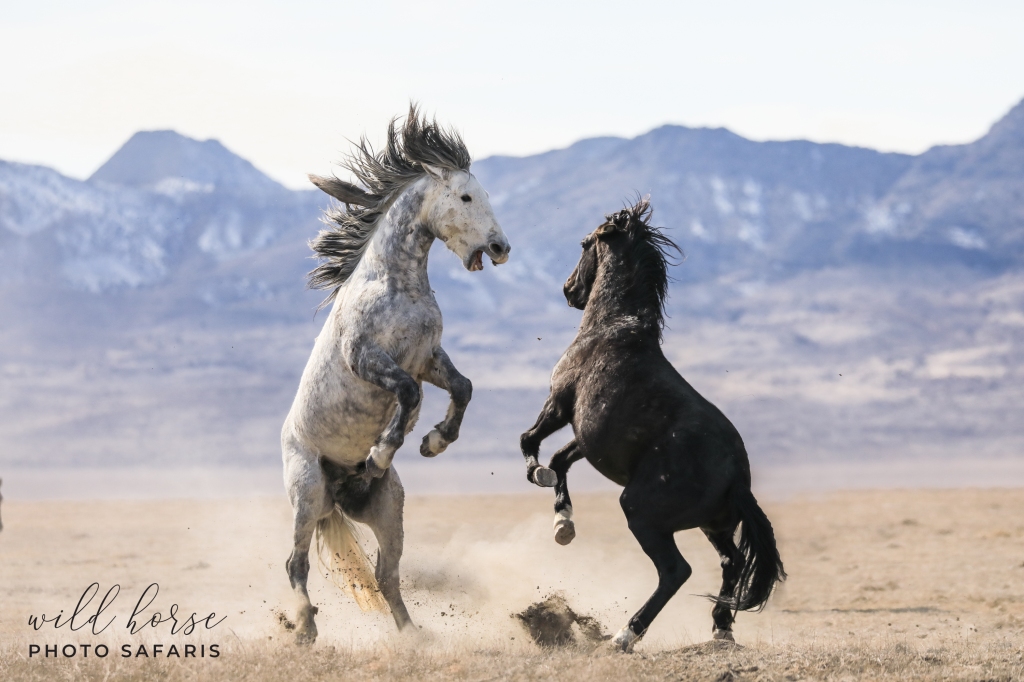
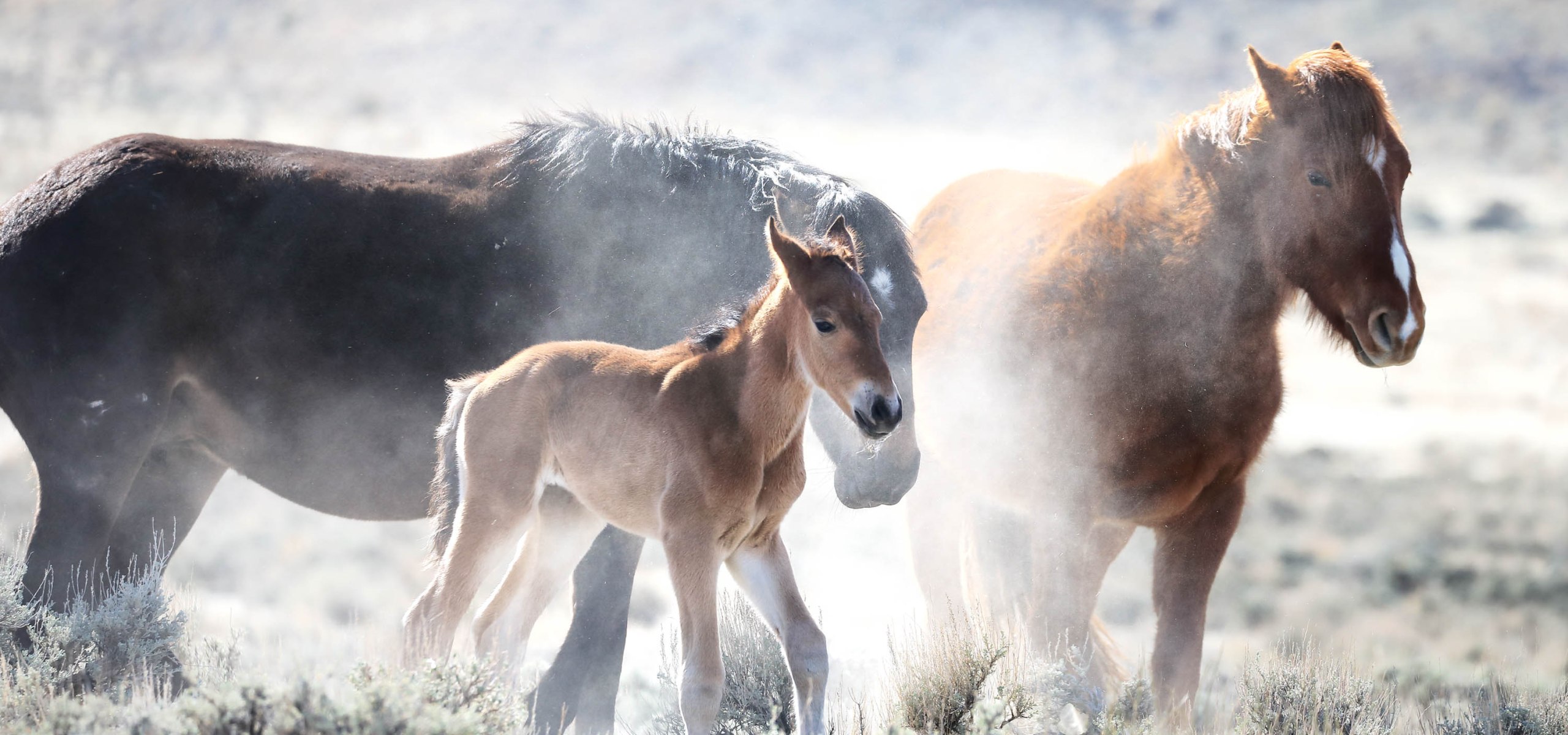
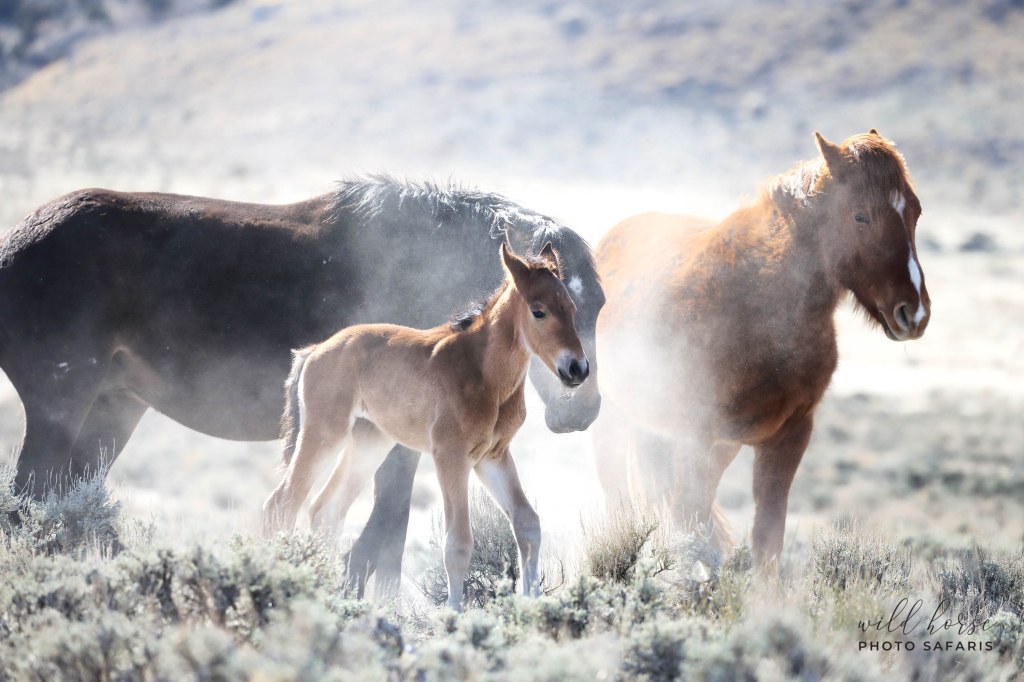
One of the things I love most about my visits to the range is that they are always different. Trying to understand all of the complex social and ecological dynamics for both the north and south Onaqui herds is honestly fascinating to me. It’s like its own little horse soap opera and I find myself getting sucked in to it hook line and sinker. For years the Onaqui have been one of the most photographed herds in the world and it’s very easy to see why.
Last week I was fortunate enough to be on the range for extended days with a wonderful tour guest who drove all the way from Texas to spend time with the herd after receiving news of the BLM’s announcement to round-up and remove 80% of them this coming July. All our fingers are crossed that the Utah BLM will ultimately make the right decision and opt to forgo this round-up for a more humane method of population control such as equine fertility treatment known as PZP which has been proven to be 95-98% effective. (Much more information is available about this alternative method by clicking here)
However in the meantime local and out of state visitors alike are making the pilgrimage out the Onaqui HMA to spend whatever time they can with this cherished herd.
The day started out with a beautiful pastel sunset sprinkled among hazy scattered clouds and we managed to find the majority of the north herd on the mountainside peacefully grazing as the sun slowly emerged. After a lovely 6 hours on the mountain we then ventured south where we were able to locate the rest of the north herd and eventually some special members of the south herd just past Simpsons Springs. The decision was made to return to our starting point for sunset and so the drive back to Davis mountain began.
We’d only been there for a few minutes when I noticed some odd behavior in a band a couple hundred yards away. The lead roan stallion Dude was on high alert and was chasing after any horse within a couple hundred yards and there was another black stallion who was also being unusually vigilant. He was both acting aggressively towards Dude and also to any other interlopers who had the misfortune of grazing too close. With these stallions swirling in circles then stopping to guard the rest of the group they definitely got my attention.
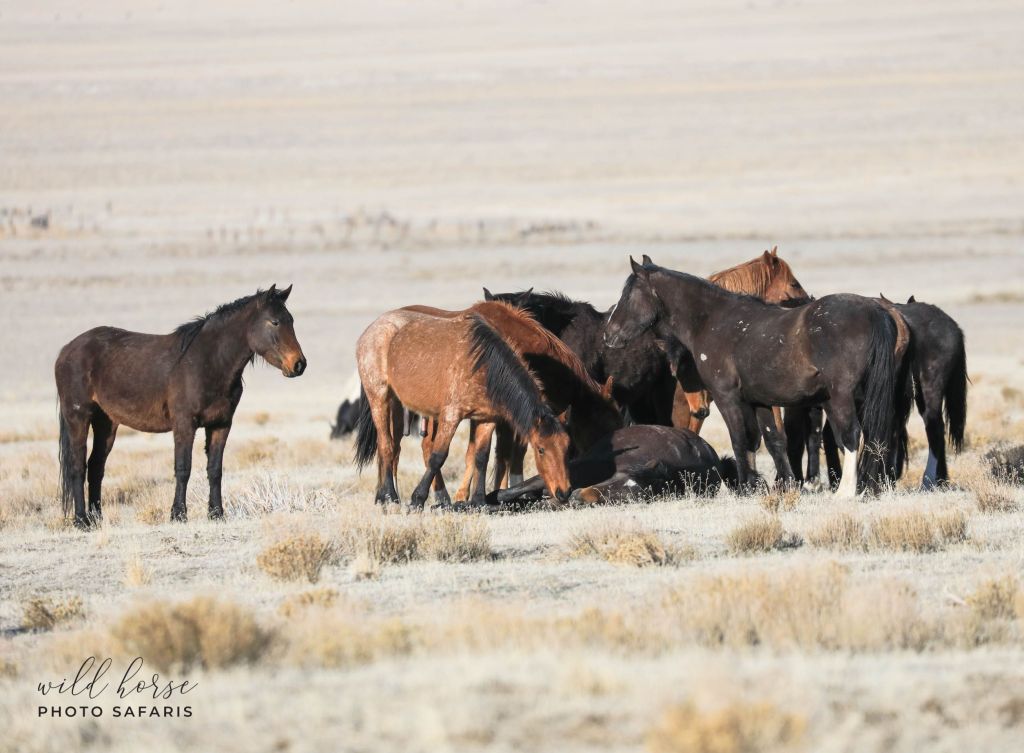
The more I watched I saw that the rest of the band had formed a very tight circle and were clustered together so closely it was difficult to distinguish one from another. I have seen them position themselves in tight groups before when the winds start howling or when shielding small foals from the sun, but never to this extent. The more I watched the more the overall behavior didn’t make any sense….. until it did.
I had a hunch that a mare was giving birth and the rest of the band had surrounded her to protect her. Separating themselves by quite a distance from the majority of the norther herd.
I slowly began my decent down the hill to a spot where I could get a better view through my camera lens careful not to get too close and upset the agitated stallions even more. Sure enough as the scene began unfolding clearly through the lens I saw a bay mare lying on her left side surrounded by the other horses. She raised her head and looked to be straining as a young stallion of 2 years old nuzzled her softly. Another young mare stood at her shoulder gently placing her hoof on her shoulder repeatedly in an attempt to give comfort.
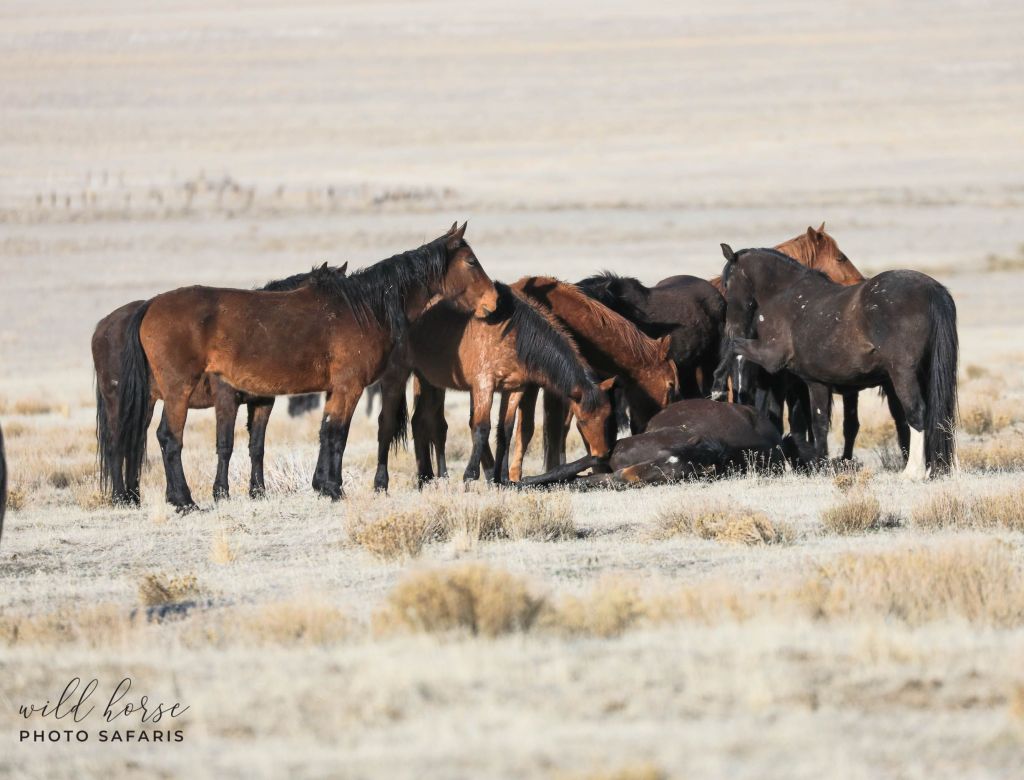
At one point the mare began trying to stand, but just as quickly as she started to rise she was back down on her side again with her team of nanny’s continuing to protect and soothe. 10-15 minutes of labor passed and a brand new little Onaqui was welcomed into the world. The whitish blue blob was the first thing I saw – this baby still covered in the amniotic sac. The aunties immediately set about removing this and before I knew it the mare was also up and on her feet.
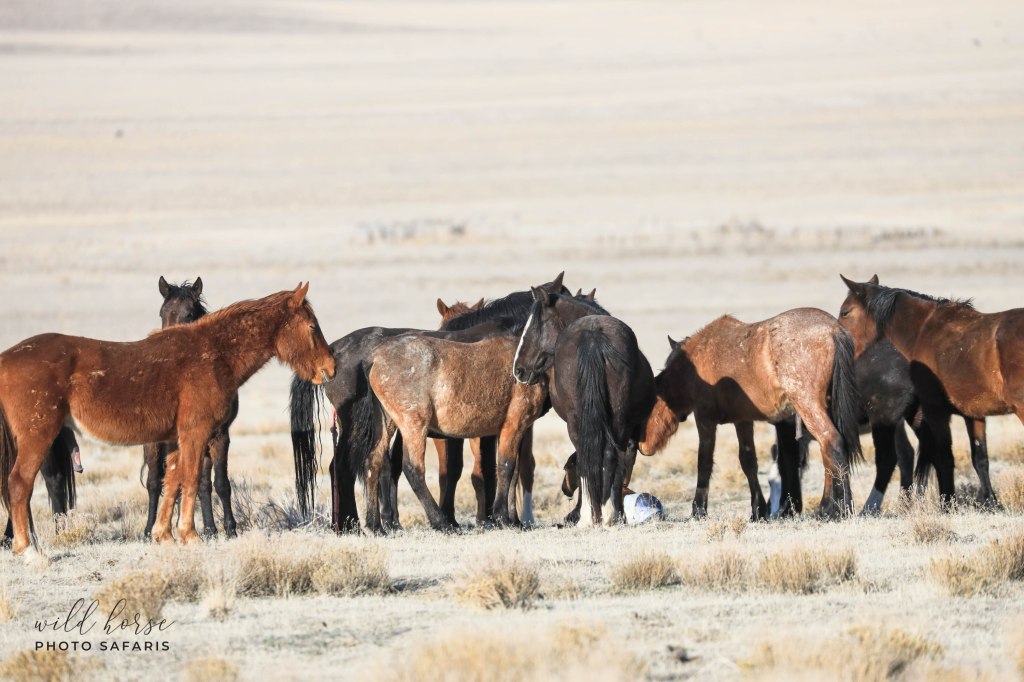
The band remained close and the stallions ever so vigilant while the foal was cleaned and momma began gently nuzzling him and tapping him with her front hoof to encourage him to rise. His fur was soaking wet and filled with texture and I could just make out the little tips of his ears still bent from being tucked in the womb for the last 11 months.
Slowly I backed away and returned up the hill to the rest of the herd to give this new family time to adjust. The last thing I saw as we returned home for the evening was the new little colt with his head raised taking in his very first views of his new world and making unsuccessful attempts to learn how to use his new legs.
Leaving them at sunset was bittersweet, but I remained hopeful that I would find them again once morning came and learn if we had gotten a new little colt or filly and see how it has done through the night.
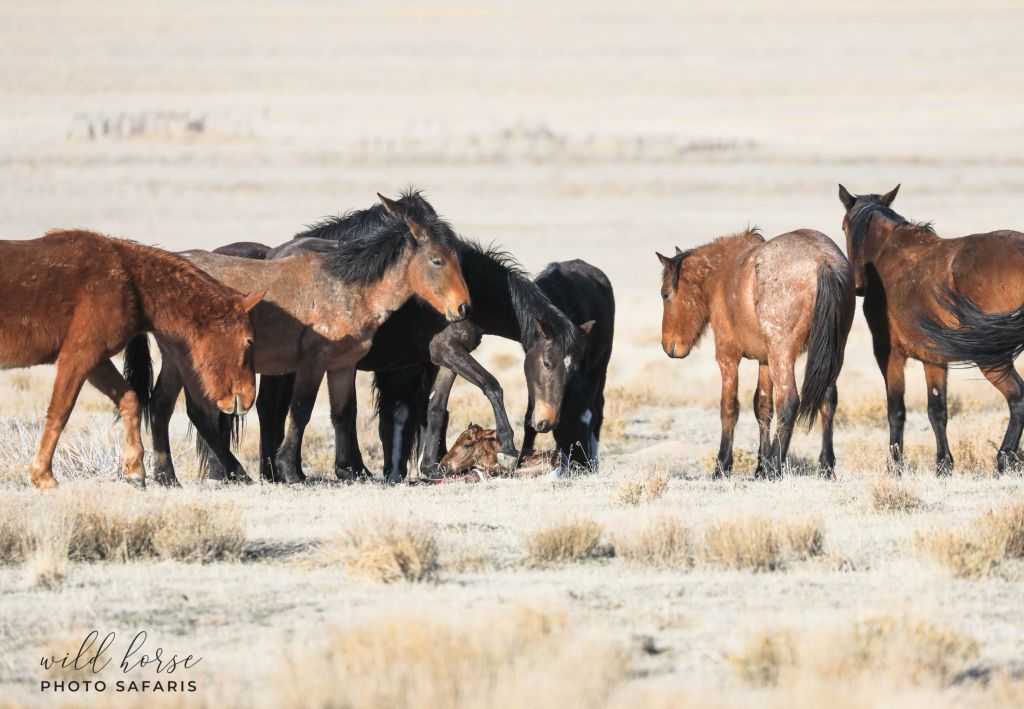
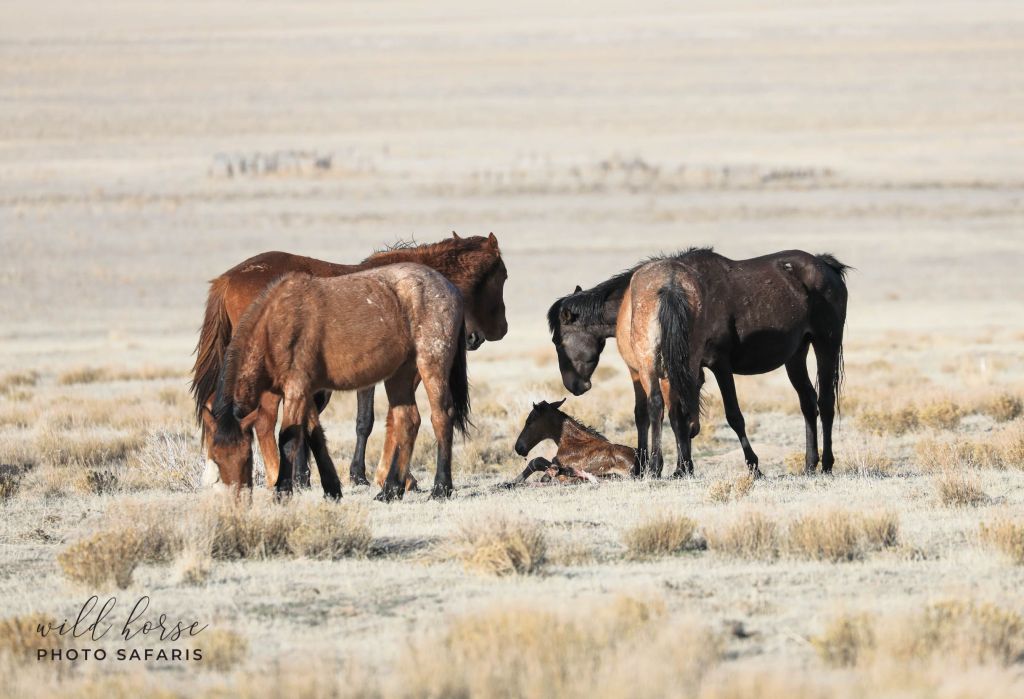
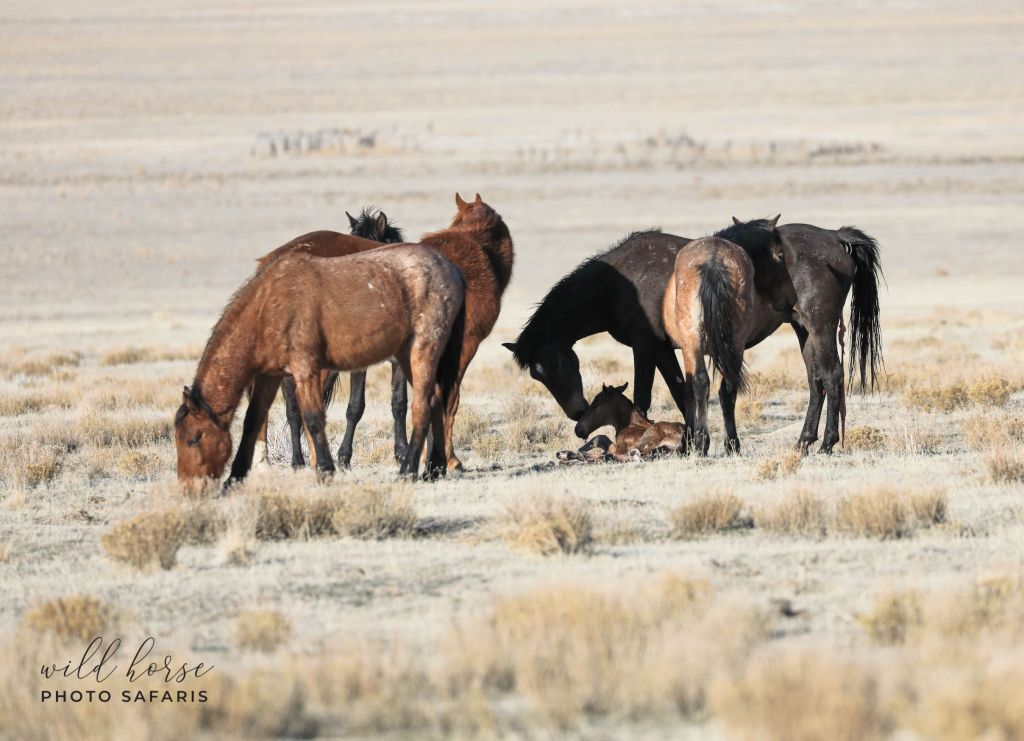
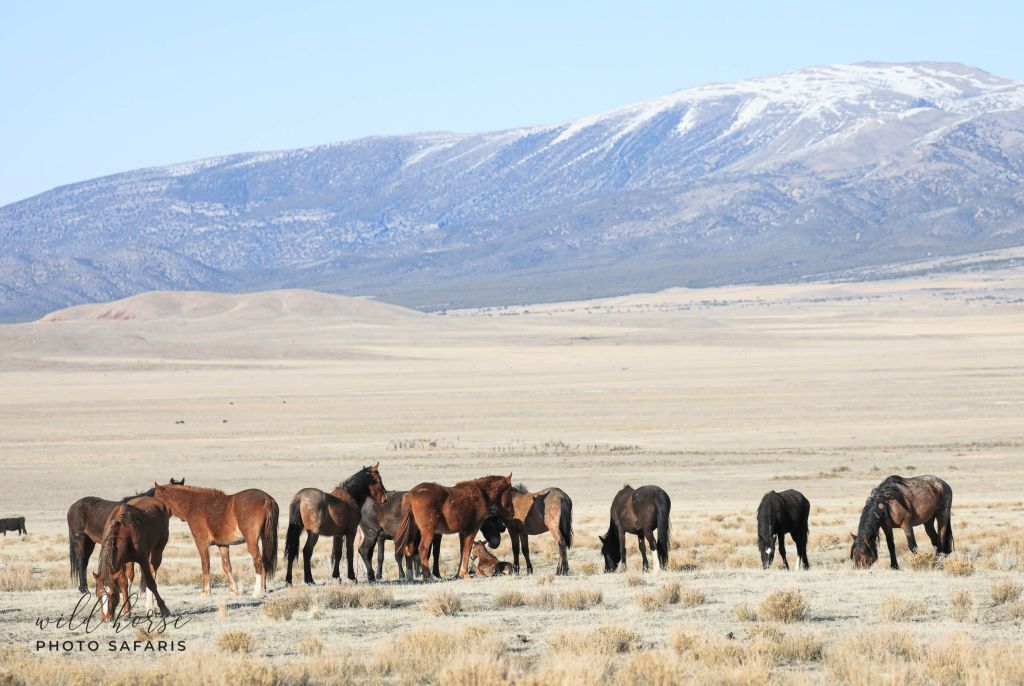
As luck would have it very early the following morning after some quality time looking through the binoculars I was able to spot the family high up on the side of a mountain. For a while I wasn’t able to locate the foal and my anxiety levels were rising by the minute. However as luck would have it he had just been resting and popped up out of the grass to follow mom and the rest of the band as they descended down the mountain towards a watering hole about a mile away.
Patience paid off and we took a seat in the open field and waited quietly as Dude brought his band slowly and methodically down the hillside. They then proceeded to stroll by us headed for a much needed drink. After milling about at the waterhole the group then followed the same path back through the field where we remained and began grazing a short distance away.
While we watched the new little colt affectionately nicknamed “Quinn” (OQ372brS) nursing from mom (mare OQ354bM) and taking in views of his new world. This beautiful little fella should grow up to be a strong, healthy, wild bay roan just like Dude (OQ80brS) and within 24 hours of being born was already quick on his feet, curious and able to climb mountains with the rest of the band.
I am so grateful that not only was I able to witness such a unique and special moment for these wild ones, but I’m grateful to be able to share that with a guest who loves the horses as much as I do. And I’m also grateful that the Onaqui in particular are so gracious in allowing us humans into their lives and families to further understand and appreciate all that they are and all that they have to offer.
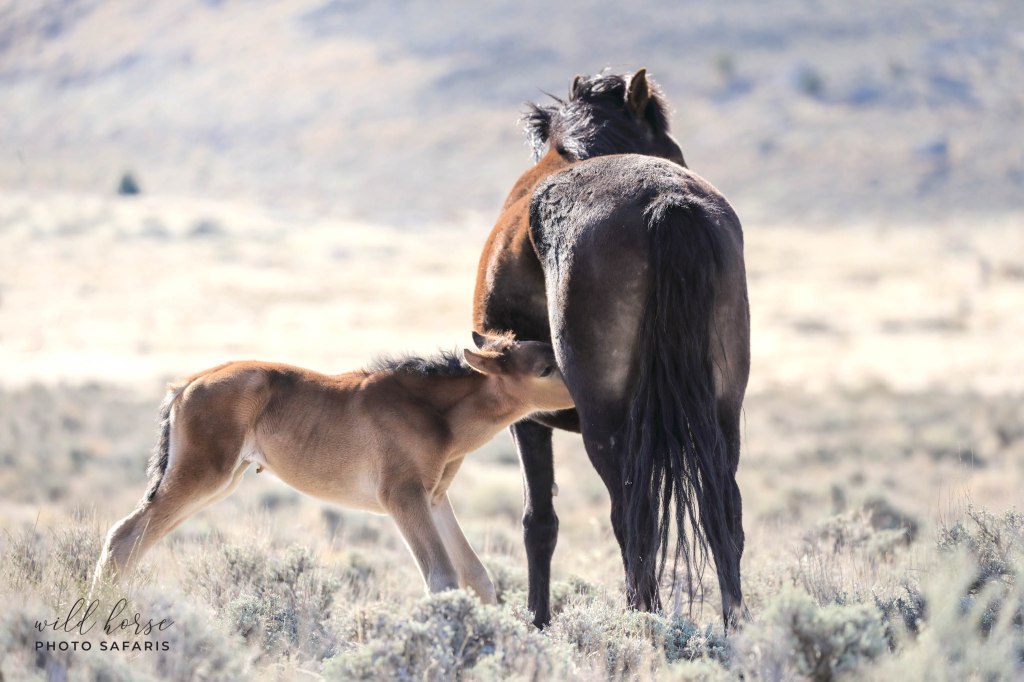
It will be nothing short of a tragedy if the round-up currently scheduled for July 12-22nd takes place. This new family will be chased by helicopter for 10 days straight along with all the others. They will be rounded up into livestock trailers and kept in pens over in Delta, Utah. From there they will be separated and some kept in long-term housing, some adopted, maybe 1 or 2 returned to the range if they’re “lucky.” But whatever happens their time of living as a family will be over.
During these round-ups horses are injured, horses are euthanized, babies hooves are worn off from running because they’re much too young and their hooves too soft to be able to withstand the chase. It’s so critical that voices be herd in support of leaving these beloved horses in the wild to continue to draw national and international attention from wild horse lovers world-wide.
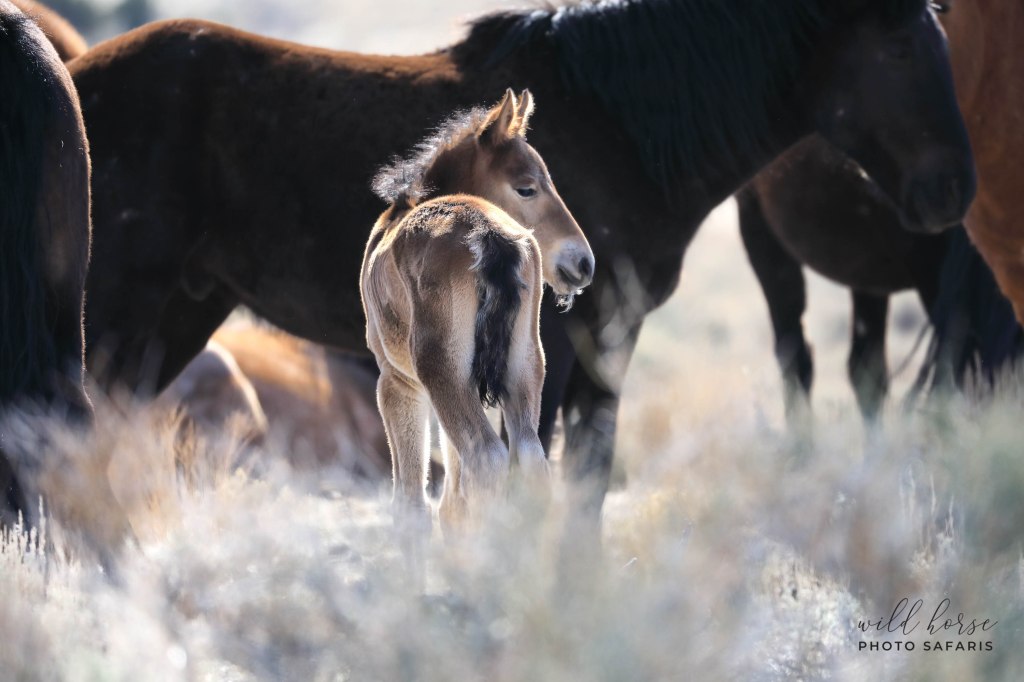
What Can You Do To Help
It’s imperative that the Utah elected officials recognize the local significance of the upcoming BLM actions regarding rounding up this valuable and cherished herd of horses. Humane herd management and population control should be recommended, supported and commended and there are far better ways to manage the Onaqui horses than to remove them entirely.
PLEASE take a moment to send a note to the following to stress the importance for the local business people, visitors and the Utah tourist industry of promoting, embracing and humanely managing this unique herd in the wild.
As always as more information becomes available I will try to share in a third blog to help get the word out to save our wild ones.
- Utah Senator Romney (202) 224-5251 or via email: https://www.romney.senate.gov/contact
- Tooele City Mayor Debbie Winn (435) 843-2104 dwinn@tooelecity.org
- Tooele City Council Members:
- Justin Brady – jbrady@tooelecity.org
- Melodi Gochis – mgochis@tooelecity.org
- Tony Graf – tgraf@tooelecity.org
- Ed Hansen – ehansen@tooelecity.org
- Maresa Manzione – mmanzione@tooelecity.org
- Salt Lake City Mayor Erin Mendenhall (801) 535-7704 mayor@slcgov.com
- Salt Lake City Council (801) 535-7600 council.comments@slcgov.com
- Contact President Biden and Interior Secretary Haaland to put a stop to the proposed 20,000 horses and burros slated to be removed from public lands. It’s a huge loss of our national heritage as well as an excessive drain on taxpayer resources and money to make wild horses live their lives in government pens.
- Reach out to local news agency’s in the Salt Lake City area in support of humanely managing the Onaqui horses in the wild and forgoing the round-up in July.
- Matt Gephardt Channel 5 – matt@ksl.com
- Debbie Dujanovic Channel 5 – web-radiogeneralfeedback@bonneville.com
- Chris Jones Channel 2 – cjones@kutv2.com
- Contact Gus Warr and Tami Howell at the Salt Lake City BLM who currently manage our Wild Horse & Burro program
Gus Warr –(801) 539-4057 email gwarr@blm.gov
Tami Howell – (801) 977-4300 email thowell@blm.gov
- Follow Facebook pages such as Save the Onaqui Wild Horses for updates and news bulletins
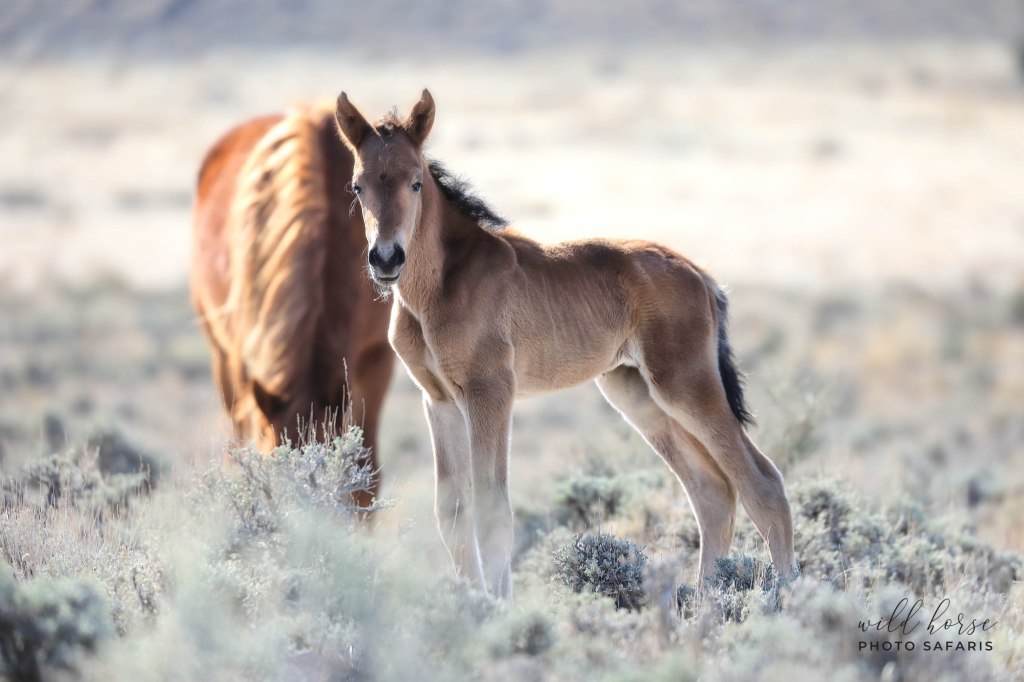
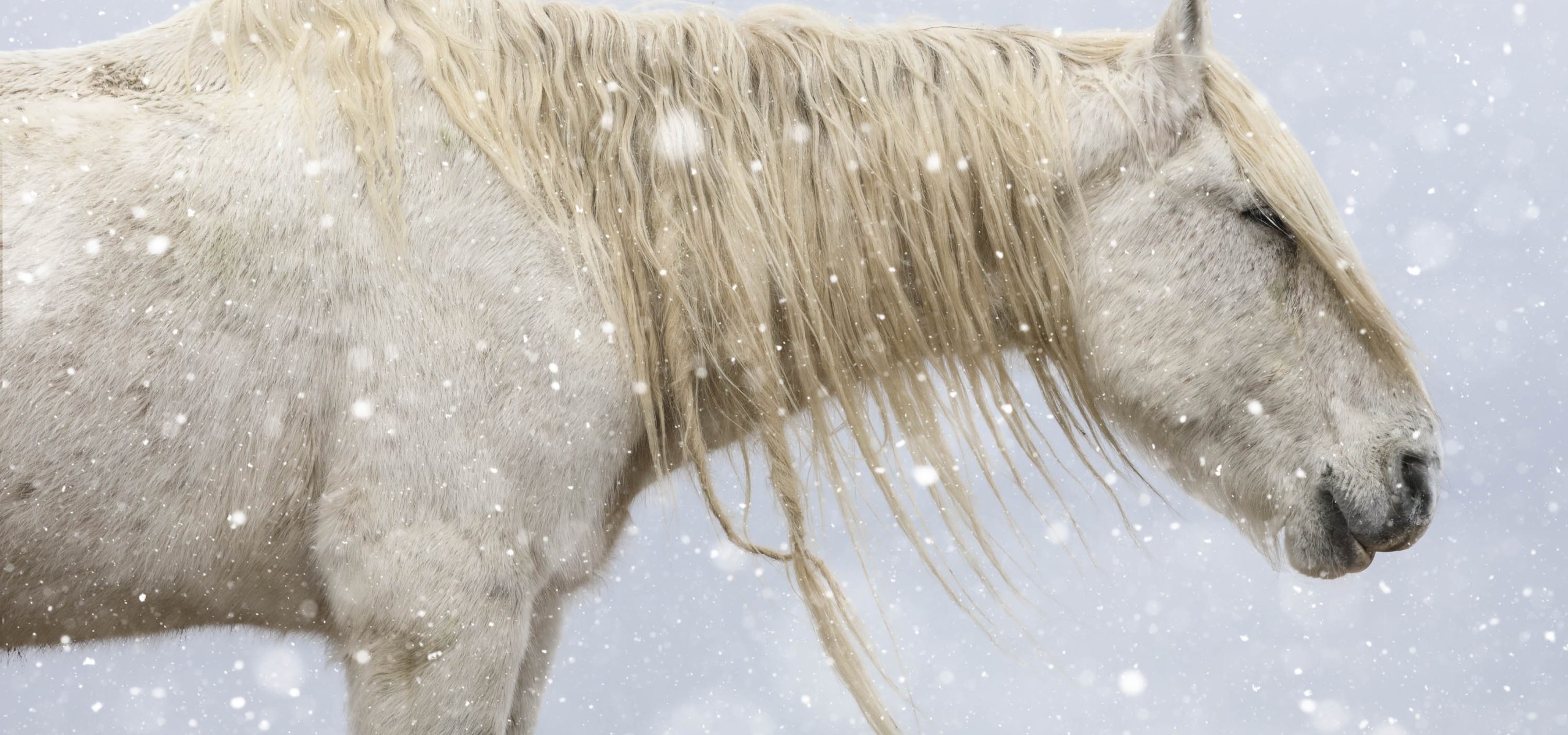
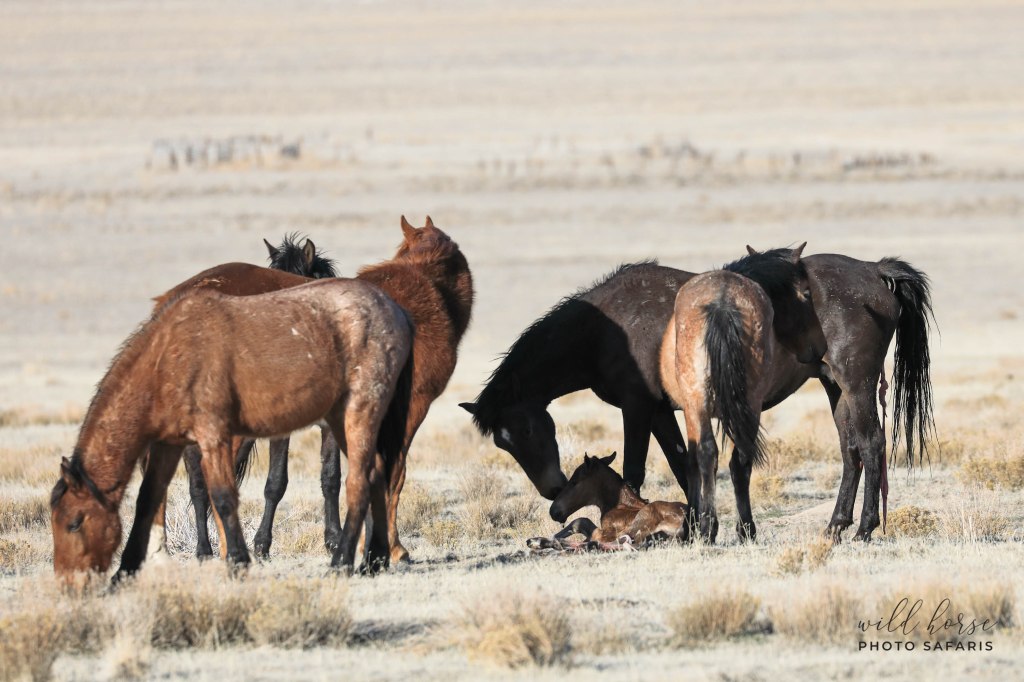
The photo you see above is of a brand new baby only minutes old born to Onaqui mare OQ354bM who travels in a band with the band stallion Dude (a gorgeous and muscular bay roan). I was lucky enough to watch this mare in labor while the other mares gathered around in a tight circle gently cleaning her, sniffing her nose and putting their hooves on her in an attempt to comfort her. As soon as the little colt was born all of the “aunties” joined in to help clean him and protect him while he came to take his first look at his new little mustang life in the West Desert. He has been nicknamed Quinn (OQ372brS) and the hope is that he will live a long life wild and free on this range.
Elephants & Horses
As a little kid I was all about elephants. I don’t even have a reasonable explanation of how or why this might have developed, but I adopted them whole heartedly as my very own spirit animal. As an adult my fascination with them continued to grow until I made the leap and decided I simply had to see them in person.
I then spent a few years diving into all things elephant. Asian elephants and African elephants both. If there’s a book or scientific study on them I’ve probably read it and I spent time intermittently in Thailand volunteering at various very hands on elephant sanctuaries which put us to work preparing their meals, bathing them, cleaning their sleep areas, creating enrichment activities and planting new crops so the sanctuaries could be closer to their goal of being self-sustaining. After Thailand I then traveled to an award winning private game reserve in South Africa dedicated to conservation and education where we got to be with the wild herd and collect data in an ongoing study about their foraging habits.
Fortunately for the elephants their plight has become well-known and the damage to the overall health and continuity of the herd well-documented in cases of poaching, relocating or loss of family members. Their social structure, familial bonds and intelligence is something I believe we’ve only touched the surface to understanding and yet already we have been able to prove how deep it runs.
The Onaqui wild horses remind me of elephants. Except that unlike the wild elephants the true depth of the dimensions of wild horse herd dynamics, bonds and social complexity hasn’t been given even a small fraction of publicity or research it probably deserves.
When the wild herds managed by the BLM are done so by way of helicopter roundups instead of humane fertility control methods such as PZP it is not only traumatizing for the horses psychologically, but it’s ripping apart family bands, compromising genetic diversity and throwing the natural balance of the herd off-kilter. The same as it would if you randomly rounded up mass quantities of elephants in the same manner.
The BLM’s Onaqui round-up is scheduled for July 12-22nd of this year and with it the continuity of the herd’s current structure and dynamics are at grave risk of being destroyed.
The round-up also brings an immediate loss of opportunity for broad educational and local economic development as it relates to this special population of horses.
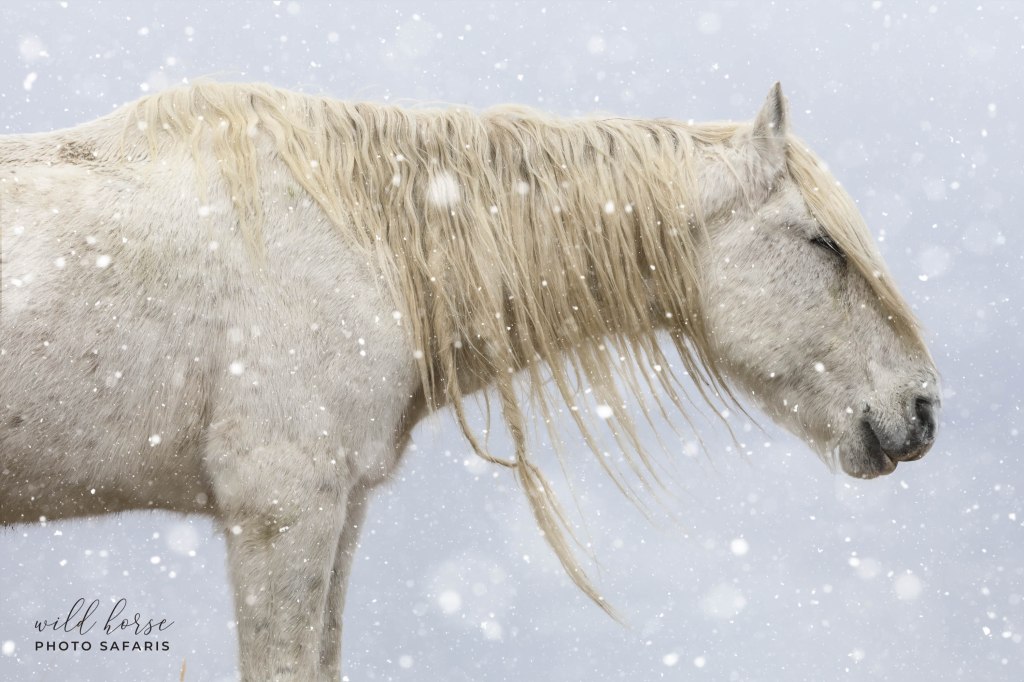
Healthy Herd Populations = Healthy Local Economy
The closest small rural town to the Onaqui HMA is called Tooele with a local population of 35,000. Tooele has your basics such as 2 grocery stores, gas stations, Walmart, Home Depot and a splash of restaurants offering various cuisines but by no means is it a thriving metropolis with the charm or attractions to draw visitors from worldwide locations. However what is does offer is easy access to view the Onaqui – and year round at that.
Another great thing about the little town of Tooele is that it’s an easy 30 minute drive from the Salt Lake City International Airport. Thus offering unparalleled access for wild horse viewing to anyone flying into Salt Lake City whether it be to hit the slopes in Park City or Alta or to drive up to Yellowstone National Park and the Grand Tetons. The Onaqui horses are thriving within the vast HMA (herd management area) within a bowl of different mountain ranges lending to gorgeous scenery, camping and hiking. Since Tooele is the stopping off point before heading out to the west desert the economic impact of the Onaqui herd for the town is significant.
Visitors all year long come to Tooele to fill up their gas tanks, grab meals at the local restaurants and grocery stores and most often book a room at one of the four hotels such as the Best Western or Holiday Inn. The Best Western in fact sees so many visitors for wild horse viewing that they offer a discounted rate per night of stay if you’re here for that reason.
The Utah BLM is proposing removal of 400 Onaqui horses from the range due to what they claim is water shortage, food shortage and overall condition of the herd. Meanwhile anyone driving through the this range passes countless domestic cattle and sheep grazing and watering on the same land that BLM claims does not have enough food to support the resident wildlife – including horses.
It’s indisputable that cattle and sheep need to eat too and ranching is a long embedded way of life for many, but it’s definitely not contributing to the local tourist economy the way that the wild horses are able to do. I don’t see many folks willing to plan a family vacation or travel out of state to Tooele so they can spend the day viewing and photographing domestic livestock in the Onaqui HMA.
These horses are so popular than in only 18 days since the announcement of the removal of 80% of the horses I’ve received communication from supporters in 9 different countries and countless states within the US asking what they can do to help.
This herd is special.
And this herd is loved.
And this herd is very important to our small local towns and the Utah economy. This herd is also very behaviorally unique compared to other wild horse herds and if given the chance can give us very valuable insight and scientific data into the natural lives and bonds of wild horses.
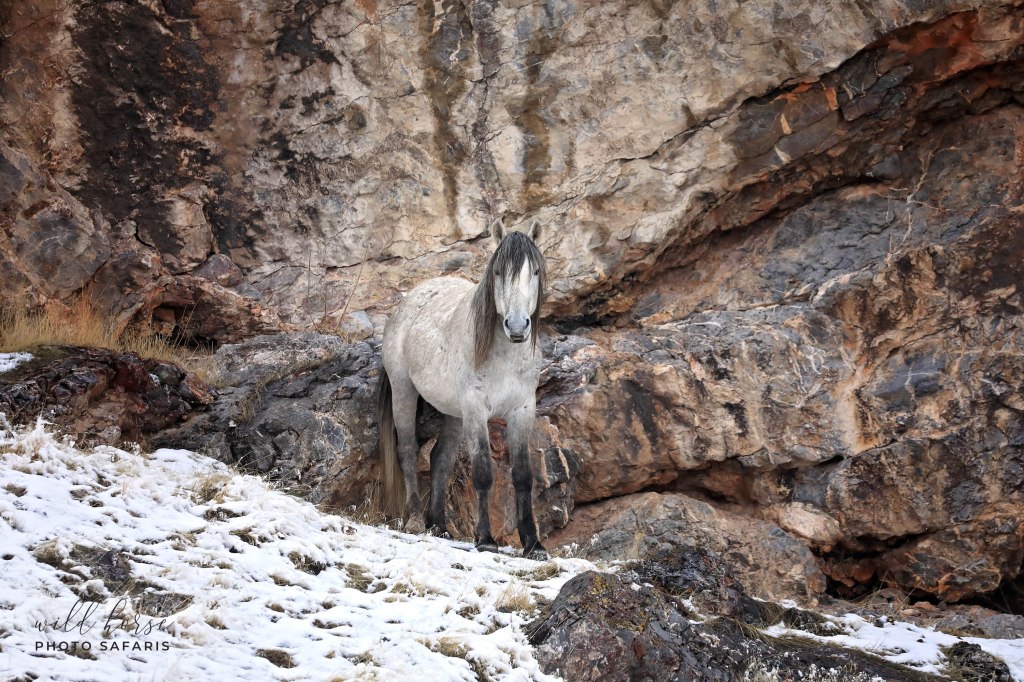
PZP and Its Use in the Onaqui Herd
Everyone who loves these horses I feel confident will be the first to stand up and advocate for their health, well-being and safety. Running them for 10 days straight by helicopter is not the way to accomplish any of these things but administering equine contraception such as PZP darts allows for successful management of the overall population count and also keeps the family and social structures intact. BLM has emphatically stated that there is no budgetary issue when it comes to paying the cost of $30/injection/year for mares and there are currently 24 trained but unpaid volunteers which administer the darts so paying for the man hours isn’t an issue for them either.
BLM lists the current population on the range not including 2021 foals to be 475. In 2019 241 horses were rounded up via helicopter and 2 were killed in the process. With that in mind, these are the numbers of PZP administered:
2017 – 27 north mares, 15 south mares. 42 Total
2018 – 29 north mares, 24 south mares. 53 Total
2019 – 91 north mares, 44 south mares. 135 Total
2020 – 80 north mares, 46 south mares. 126 Total
Based on these numbers it is not realistic to expect that the benefit of the PZP injections would truly be realized at such an early date. PZP has been found to be 95-98% effective except for in horses that are non-responders of which do occur but in a very small percentage of darted mares. The Onaqui herd needs to be managed humanely and via methods such as PZP rather than simply removed for convenience and housed in pens which end up costing taxpayers millions of dollars over the life of a horse.
PZP is extremely cost effective. It’s easy to administer. There are currently 24 trained individuals who volunteer their time to dart the herd therefore saving BLM both time and money. This herd is of huge benefit to the local economy and draws visitors from both out of state as well as out of the country. Their tolerance for human interaction and ease of access makes them as asset to the state and locals not a burden and they should be spared from the inhumane roundup and instead be allowed to serve as ambassadors for the state and a historic relic of the old Wild West.
More specific information about PZP and herd management can be found in my previous blog by clicking here.

What Can You Do To Help
It’s imperative that the Utah elected officials recognize the local significance of the upcoming BLM actions regarding rounding up this valuable and cherished herd of horses. Humane herd management and population control should be recommended, supported and commended and there are far better ways to manage the Onaqui horses than to remove them entirely.
PLEASE take a moment to send a note to the following to stress the importance for the local business people, visitors and the Utah tourist industry of promoting, embracing and humanely managing this unique herd in the wild.
As always as more information becomes available I will try to share in a third blog to help get the word out to save our wild ones.
- Please contact the following and express your support at keeping the Onaqui herd healthy and wild while ensuring that they are humanely managed on the HMA.
- Utah Senator Romney (202) 224-5251 or via email: https://www.romney.senate.gov/contact
- Tooele City Mayor Debbie Winn (435) 843-2104 dwinn@tooelecity.org
- Tooele City Council Members:
- Justin Brady – jbrady@tooelecity.org
- Melodi Gochis – mgochis@tooelecity.org
- Tony Graf – tgraf@tooelecity.org
- Ed Hansen – ehansen@tooelecity.org
- Maresa Manzione – mmanzione@tooelecity.org
- Salt Lake City Mayor Erin Mendenhall (801) 535-7704 mayor@slcgov.com
- Salt Lake City Council (801) 535-7600 council.comments@slcgov.com
- Contact President Biden and Interior Secretary Haaland to put a stop to the proposed 20,000 horses and burros slated to be removed from public lands. It’s a huge loss of our national heritage as well as an excessive drain on taxpayer resources and money to make wild horses live their lives in government pens.
- Reach out to local news agency’s in the Salt Lake City area in support of humanely managing the Onaqui horses in the wild and forgoing the round-up in July.
- Matt Gephardt Channel 5 – matt@ksl.com
- Debbie Dujanovic Channel 5 – web-radiogeneralfeedback@bonneville.com
- Chris Jones Channel 2 – cjones@kutv2.com
- Contact Gus Warr and Tami Howell at the Salt Lake City BLM who currently manage our Wild Horse & Burro program
Gus Warr –(801) 539-4057 email gwarr@blm.gov
Tami Howell – (801) 977-4300 email thowell@blm.gov
- Follow Facebook pages such as Save the Onaqui Wild Horses for updates and news bulletins
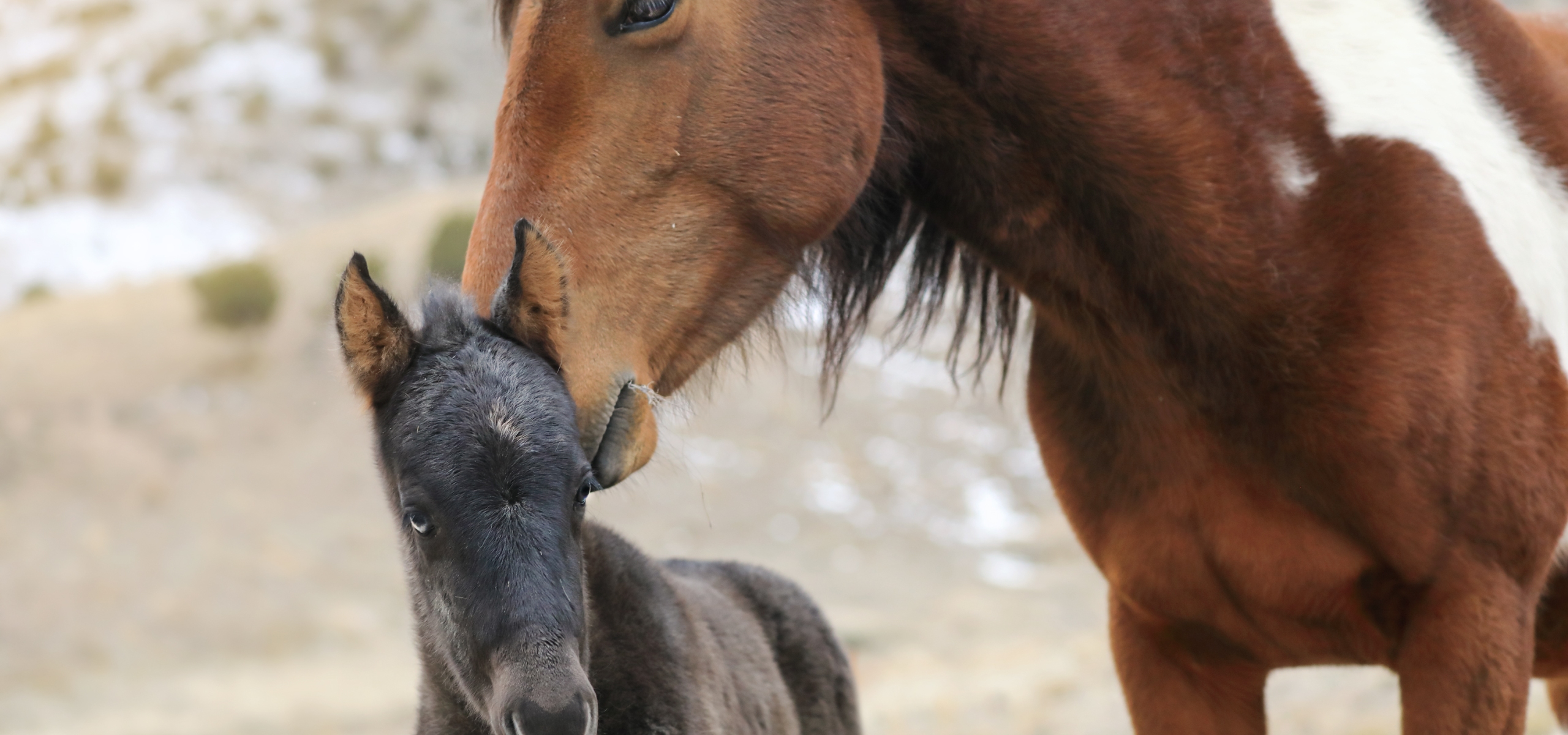

When I started this blog I was so excited not only to be able to share my images of the wild ones but also to share the stories behind them. That’s the thing I’ve always loved so much about photography is that I’m able to capture that one little moment frozen in time and preserve it. Memories are so important and I’ve seen too often that eventually they’re all we will have left.
I was completely oblivious to the storm that was brewing on the horizon and threatening to destroy the Onaqui families I have come to love so much. Exactly 10 days ago I got the news that the Bureau of Land Management (BLM) had given notice they planned to remove nearly 300 of the horses from the Herd Management Area (HMA). I remained in disbelief and held hope that somehow the information had been misconstrued. Then on the 2nd of March I attended the BLM meeting which addressed the removal of the wild horses and confirmed that 296 horses are slated to be rounded up using helicopters beginning July 12th and ending July 22nd, 2021.
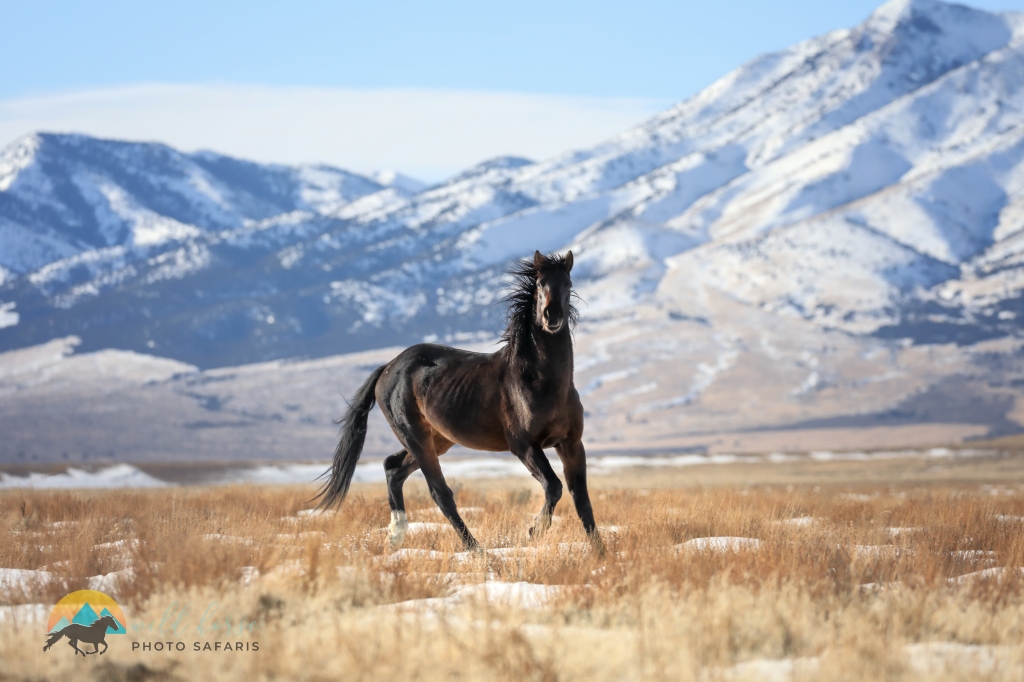
The Horses
The Onaqui wild horses have lived in the valleys bordering the Onaqui Mountains here in Utah since the late 1800s. They are visible from many spots along a lengthy stretch of the Pony Express route and are a historic icon and reminder of the Wild West. The horses live in two distinct groups approximately 15 miles apart – one at the south end of the HMA near the Simpson Springs campground and one at the north end of the range near Dugway Proving Grounds Army base.
According to BLM’s own website the horses “are in good condition” and anyone who visits the herd can easily verify that. The HMA spans across 205,394 acres and is 321 square miles total which is a desolate, remote desert environment. The only civilization close to the range is the Dugway Proving Grounds Army base. (https://www.blm.gov/programs/wild-horse-and-burro/herd-management/herd-management-areas/utah/onaqui-mountain)
In 2017 BLM reported that there were 450 wild horses in the Onaqui HMA and in 2019 241 of those horses were removed via helicopter round-up. An additional 2 horses were killed during that same round-up. This would leave approximately 207 horses on the range if using BLM’s numbers. American Wild Horse campaign vehemently opposed the 2019 round-up in the Onaqui HMA which you can read about here: https://americanwildhorsecampaign.org/media/two-sides-onaqui-mountain-wild-horse-population. They also spoke publically at the BLM meeting on March 2nd of this year however their future plans of involvement have not yet been made clear.
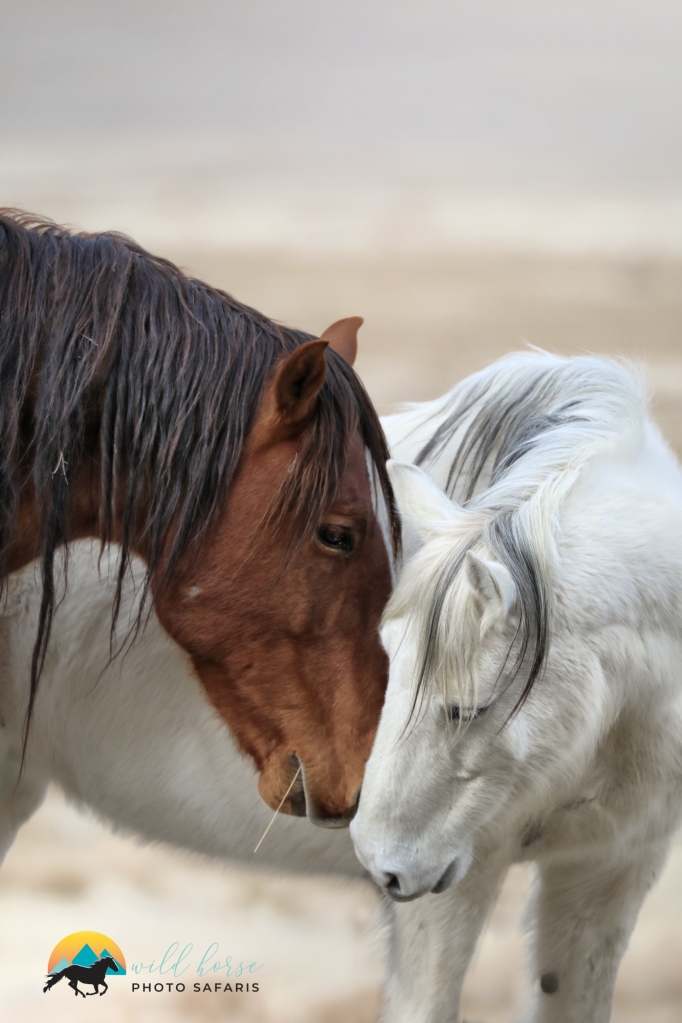
The Issues
All sides of this issue can agree I think that maintaining a healthy wild herd genetically, physically and mentally (keeping bands in tact) are of the utmost importance. This can be managed in a far more humane and cost effective way than a massive round-up which removes 400 of 475 animals. It can be achieved by implementing a proactive PZP program as has been proven effective with the McCullough Peaks herd in Wyoming among others. (https://www.blm.gov/programs/wild-horse-and-burro/partnerships/McCullough-Peaks) This PZP program administered by F.O.A.L in Wyoming has saved taxpayers roughly $6 million dollars over the past 9 years in the costs of long term holding for horses taken in a gather. That’s just for one herd.
One doze of the equine inoculation PZP costs approximately $27.00 and is administered via dart in the field. Fertility treatments start for mares at 9 months of age and repeat annually until they are 6 years of age at which point the inoculation is skipped so the mare can add to the genetic diversity of the herd. Once she foals the PZP is resumed. Assuming the average life of a horse in the wild is around 20 years old the cost of PZP for each mare would be a maximum of $513.00.
Compare that to the cost of housing this same mare in off range facilities which is stated to be $2,000 per year per horse. The life span of a wild horse in captivity is increased to an estimated 25 years. So assuming a mare is captured at age 5 in a gather the cost to taxpayers now becomes $40,000 for that one horses versus $513.00.
The current plan to capture 400 of the Onaqui Wild horses is also a huge threat to genetic diversity. BLM plans to reintroduce 104 of these 400 horses captured back to the range. These horses returned will be handpicked depending on age, gender and the female’s tolerance to being darted with PZP. Of these 104 horses 52 mares will be treated with PZP.
Taking into consideration that the Onaqui herd maintains itself in two distinct bands, the north and the south, which do not co-mingle, only returning such small numbers of horses to the range compromises the integrity of health and dynamics of the herd. The minimum number of animals in a herd to allow for genetic diversity and healthy breeding has been said to be 100. With such low numbers post round-up and inevitable destruction of their familial bonds and social structure disastrous results seem imminent.
The average reproductive rate per year of wild horses without PZP is 14.8% according to the Science and Conservation center in Montana. It has been shown that this reproductive rate skyrockets after gathers to as high as 50%. This is called a compensatory reproduction rate and happens because the herd feels the population threat and responds by increasing their rate of production. Hence why PZP is a far better method of herd management than massive gathers such as this one.
While on the topic of reproductive rate it has also been shown that wild horse populations faced with a decreased food and water supply such as BLM claims is plaguing the Onaqui horses actually self-correct with a decrease in their rate of population to adjust for these environmental factors.
For the 296 Onaqui Wild horses BLM proposes to gather @ $2,000/horse to house in off range facilities that is a cost to tax payers of $592,000 annually. Versus the cost of PZP to 200 mares @ $27/dose = $5,400/year. That is a difference of $586,600 annually.
Assuming the average horse will survive to be 25 years old in an off-range facility and assuming the average age of a horse captured is 10 years old here is the difference in cost:
- Cost of gathering 296 horses: $8,880,000
- Cost of administering PZP: $81,000
So not only can we be saving the American taxpayers $8,799,000 by forgoing this gather to pursue a more diligent PZP program, we can also be reaping the benefits by those same taxpayers who spend their money in the tourism industry supporting the local economy and businesses when they come into town to visit this wildly popular herd.
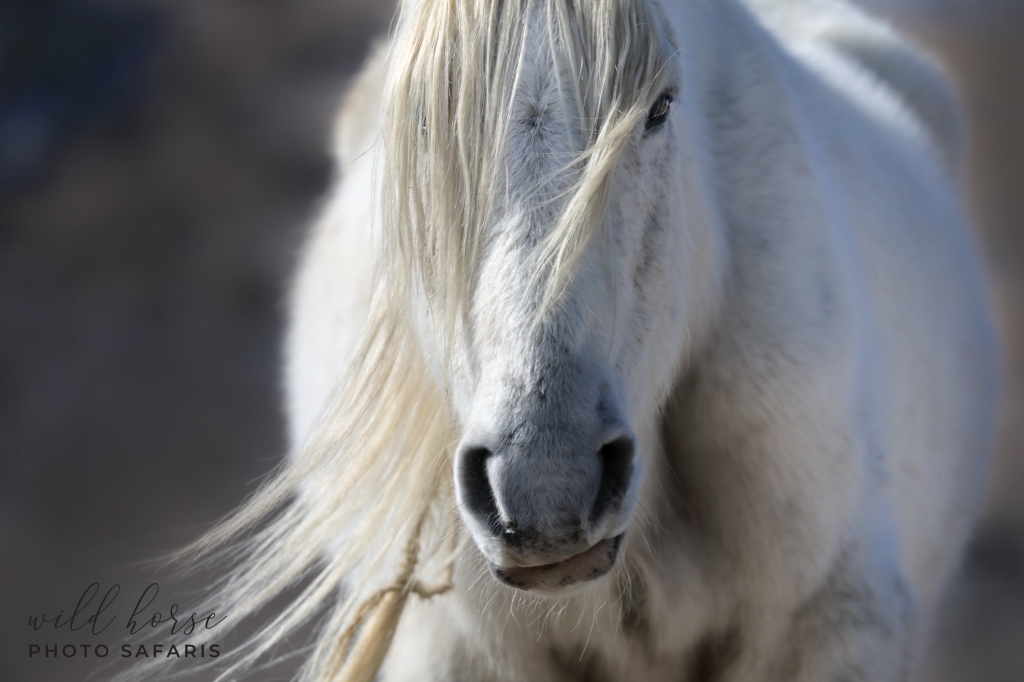
The Options
Because of the report prepared by the BLM and submitted to Congress under the previous administration 20,000 wild horses and burros are threatened with removal from HMA’s per year for the next 3.5 years. That is double the animals which have been removed from public lands in years past.
The reasons for removal of the Onaqui horses are stated to be “AML/Outside the HMA, water issues, forage issues.” Gus Warr also stated during the BLM public meeting on March 2nd that removal can occur at the request of private land owners. We have had a very dry winter here in Utah and the horses have been getting their hydration from snowfall and runoff up to this point. There are also 3 watering holes that are man-made and connected to wells that I’m aware of which the horses drink from during the hot, dry summer months.
PZP is paid for currently by BLM because it is a budgeted item. It has been made clear that lack of budget is not the reason for this round-up. Further, volunteers are in place to administer the equine inoculation which helps take the burden of manpower off the shoulders of the BLM.
Some reasonable alternatives to consider may include the following (in no particular order):
- Postpone the round-up until more scientific research can be gathered as to the nutritional needs of this herd of horses and access to food which will meet those needs. To include an independent evaluation.
- Increase the amount of PZP given to mares in both the North and South herds and allow for time for this population control method to be proven. (PZP is shown to be 91-98% effective at preventing pregnancy in mares in other wild herds)
- Decrease the number of horses being gathered
- Opt for a more human round-up such as bait trapping
- Drop grass hay on the range intermittently if body conditions become cause for concern
Worst case scenario if this round-up continues as scheduled we will need to find suitable adopters for the horses captured and ideally will try to keep family structures and/or social bonds intact.
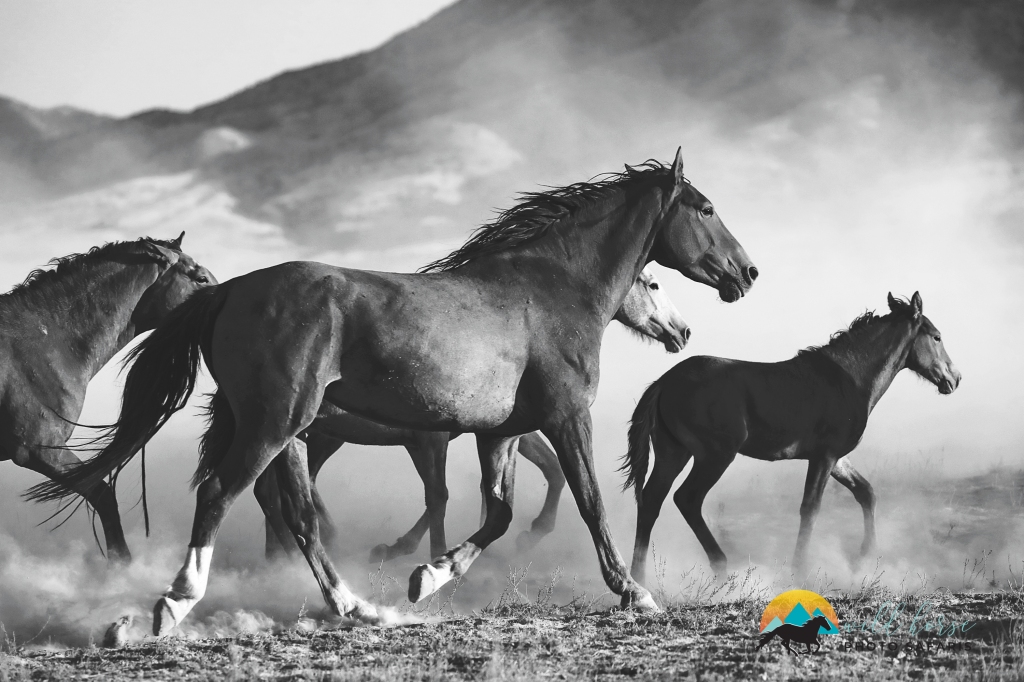
What Can You Do To Help
Believe me I ask myself this every day. All day. I’ve been thinking so much my brain actually hurts.
I will continue to share verified information and status updates as they become available. I have had a great relationship personally with our local BLM office to date and would love to keep it that way so I’m definitely advocating for a solution where the horses are allowed to live their best lives in the wild and whatever outside help is needed to see that this happens can be coordinated.
- Please contact the following and express your support at keeping the Onaqui herd healthy and wild while ensuring that they are humanely managed on the HMA.
- Senator Romney (202) 224-5251 or via email: https://www.romney.senate.gov/contact
- Salt Lake City Mayor Erin Mendenhall (801) 535-7704 mayor@slcgov.com
- Salt Lake City Council (801) 535-7600 council.comments@slcgov.com
- Contact the American Wild Horse Campaign https://americanwildhorsecampaign.org/
- Reach out to equine rescues in your local area to let them know about this upcoming roundup and see if they would be interested in adopting some of these wonderful horses
- Contact President Biden and Interior Secretary Haaland to put a stop to the proposed 20,000 horses and burros slated to be removed from public lands. It’s a huge loss of our national heritage as well as an excessive drain on taxpayer resources and money to make wild horses live their lives in government pens.
- Reach out to local news agency’s in the Salt Lake City area in support of humanely managing the Onaqui horses in the wild and forgoing the round-up in July.
- If you live in the area and know anyone willing to lease land where rounded-up Onaqui may be kept once adopted that’s great to know!
- Contact Gus Warr and Tami Howell at the Salt Lake City BLM who currently manage our Wild Horse & Burro program
Gus Warr –(801) 539-4057 email gwarr@blm.gov
Tami Howell – (801) 977-4300 email thowell@blm.gov
- Follow Facebook pages such as Save the Onaqui Wild Horses for updates and news bulletins
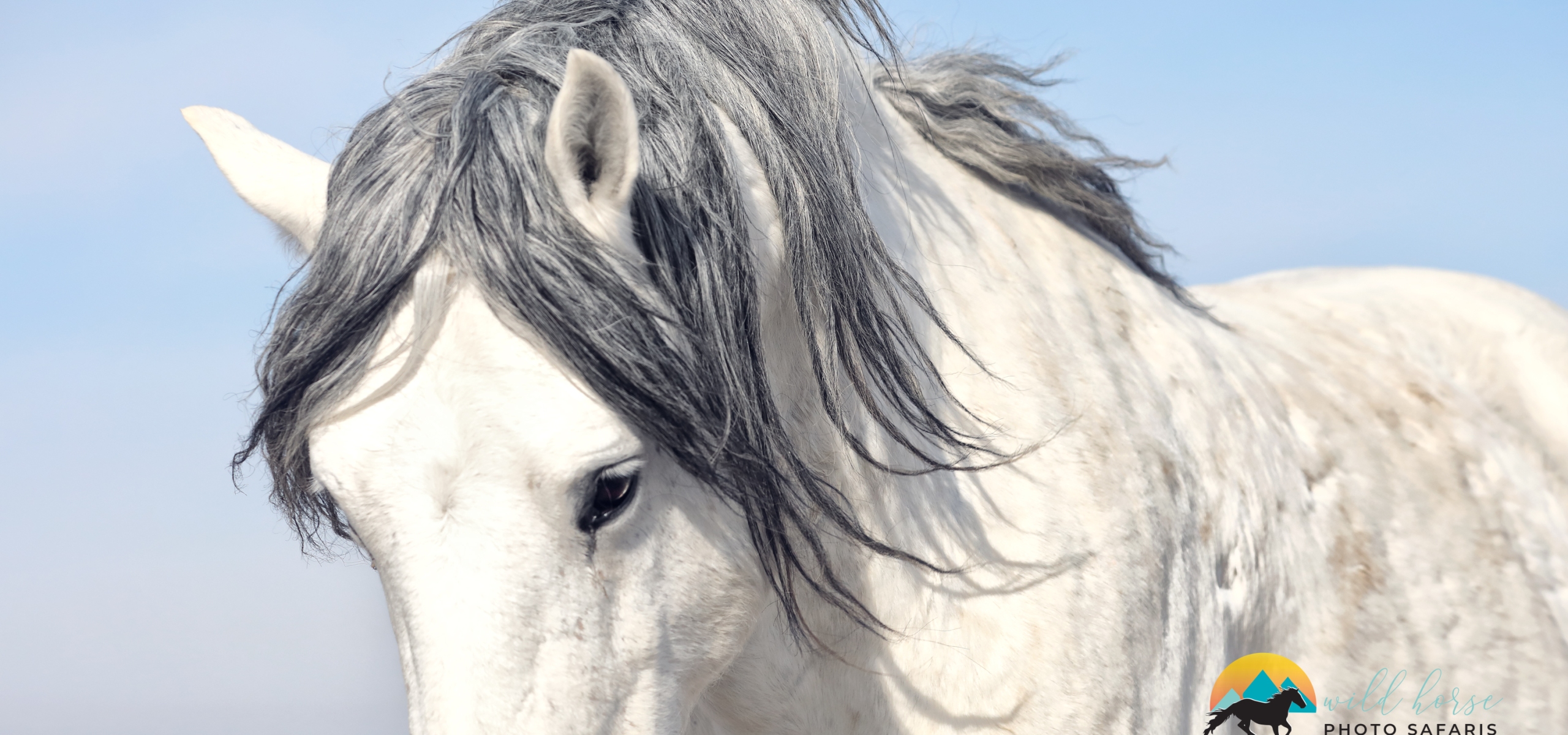
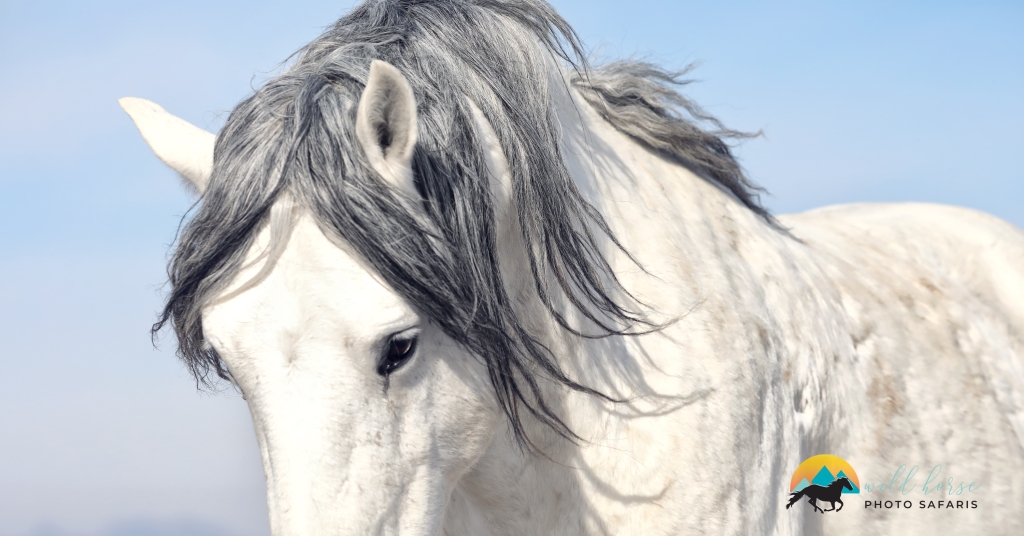
There’s just something about those greys. Some may appear to have more of a true grey coloring while others fade so much with age they turn nearly white. It’s the fading and aging that really gets me. It gives such a distinguished look. Something almost regal. And the way the light catches and dances off manes and tails – especially as thunderstorms approach with those backlit dark midnight hues approaching.
I almost hate to play favorites because I think that all the wild ones should be given the spotlight to help people identify with them and come to know them personally even if they don’t have the ability to do it first hand. However lately I just can’t seem to help myself but to try to find a bachelor stallion called Maverick (OQ237gs) who spends his time in the southern part of the range with 3 other stallions, one of which is Eclipse (OQ174zS) a foot loose and fancy free young black stallion who has a jovial nature and mostly likes to “horse” around with anyone who’s willing.
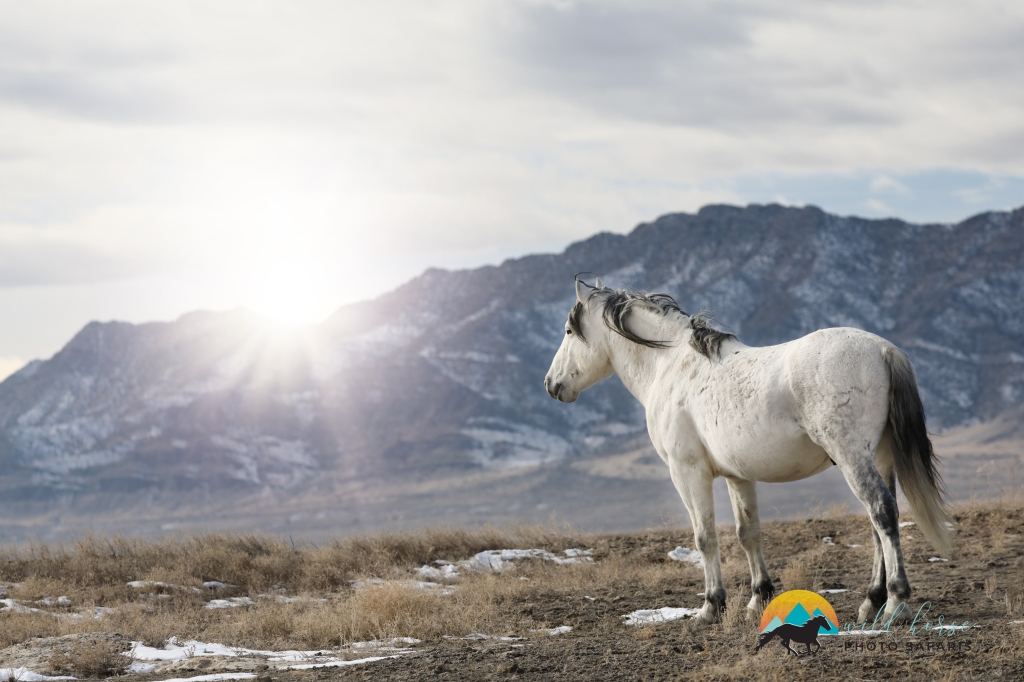
Maverick by contrast is much more subdued and seems to be like the big brother of the group. Quiet, keeping a watchful eye out, and willing to step in if someone gets too rough with his friends. Often when I find him he’s with the rest of the southern herd but always off to the outskirts a bit just calmly standing taking it all in. He seems to get amused when Eclipse or one of his other two bachelor stallion buddies start kicking their heels up to play but never quite amused enough to join in.
Some of my favorite images to date are of Maverick because he has such a presence about him. It takes an above average amount of patience to catch him in a natural pose because he has a bad habit of standing with what looks like a stink eye expression and his ears slightly pinned. At first I didn’t know what to make of him, but the more time I’ve spent now I just accept that more often that not he kind of is just annoyed. I can appreciate that because if I had to be around other humans 24×7 I’d definitely be mostly annoyed too.
But I personally think the most beautiful thing about this horse is that when he stops glaring and starts going about his business doing regular horse things he will absolutely take your breath away. Especially on those days when the winds are downright ripping through the range and his mane and tail are equally as uncontrolled. It’s one of those moments where you know this is exactly how it should be and how it should look.
Wild and free.
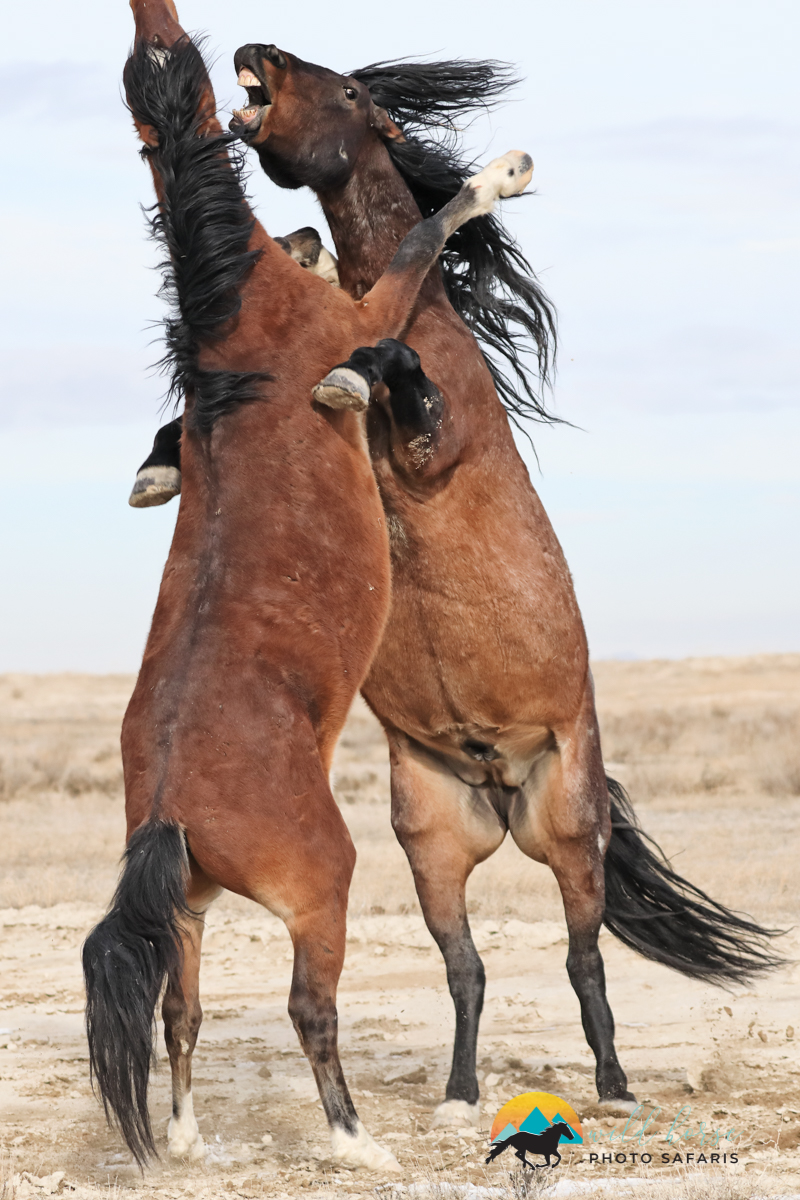
I can’t ever begin to count how many times over the years I’ve heard the saying “choose your battles wisely.” I think as we all get older and more seasoned at life you realize this is a critical lesson to learn. But in the meantime we all dive headfirst into choices that in hindsight probably weren’t best fork in the road to take.
Last week was brutally cold on the range and I’m not even saying that as a girl who’s spent the last 14 years in the tropics and up to this point have been nearly hypothermic when it got down to 68 degrees. It was just bone chilling, biter cold. I’ll go out on a limb and give it credit for being in the upper 30’s which in and of itself isn’t a big deal until you factor in the whipping winds that tear through the valley and assault everything in it. Including me. Including the horses.
It was another long drive out to the very southern borders of the Onaqui range where the drifts of snow are still prominent and make it look like a crafty way of abstract painting the sandy desert white. The roads were clear and the skies were filled with valley haze and brooding clouds sat on top of the surrounding mountains. The low-lying sage was rustling and small dust devils occasionally blew by.
I had a long walk of nearly a mile out into the middle of nowhere desert before I finally found the whole herd together milling about and unsettled. The winds always seem to get the horses aggravated and they stampede and spar in a haphazard and relatively disorganized fashion compared to their normal behavior. This day they were all split up in bands like usual, but staying in relatively close proximity. The soft light provided for stunning backdrop shooting in any direction and I tried to take advantage of it as long as I could keep feelings in my fingers.
The image above is a part of a much a larger set which is a great example of choices. Even horses have them.
The bay stallion on the left of the frame was resting seemingly peacefully in the middle of his band as was Dash, the roan stallion on the right of the frame (OQ220brS). I didn’t notice anything except that the bay all of the sudden became very alert with a slight tilt of his head and his ears perked forward. I was distracted by a younger stallion in the group so I wasn’t too focused on his band stallion but noticed the younger stallion shift his attention. The bay took all of two or three steps and then bolted right in front of me where the Dash came out to accept the challenge.
To his credit, Dash could have ended the fight a lot worse than he did. Although the photos look dramatic, he only gave his challenger a meaningful nip on the cheek and when the bay stallion faltered and fell at his feet he didn’t push, Dash simply waited for him to get back up where they had one final head shaking exchange before each returned to their families.
In hindsight I’m sure the bay stallion realized his poor choices as he was laying at Dash’s feet and maybe in the future he will think a little longer before he tries to pick that battle again.
Photos below are some of the highlights from the rest of the sequence – beginning to end. Enjoy!
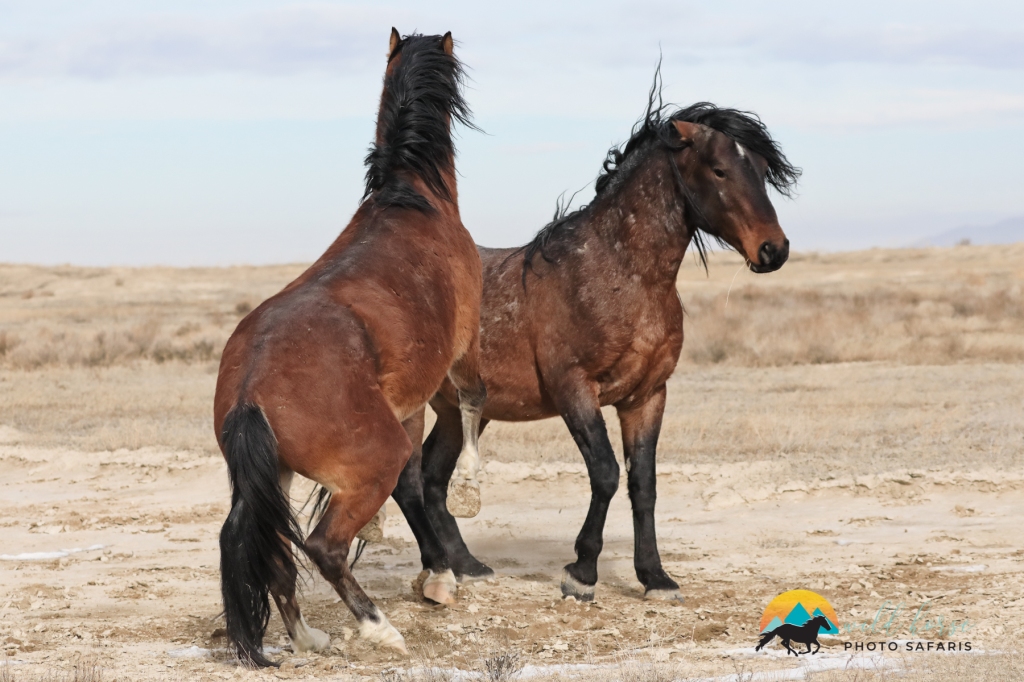
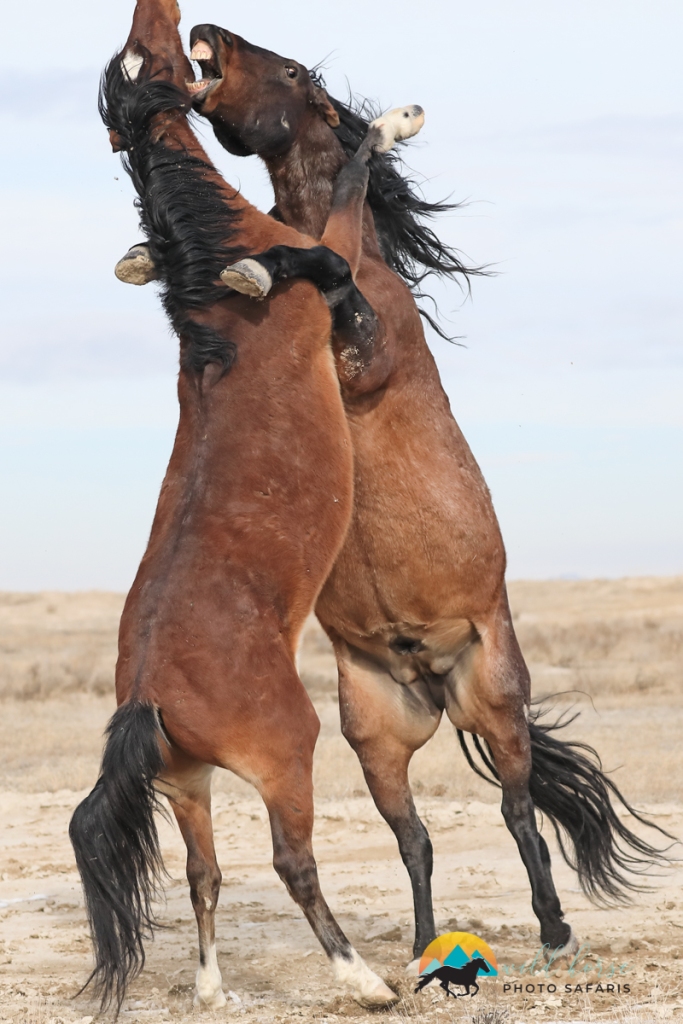

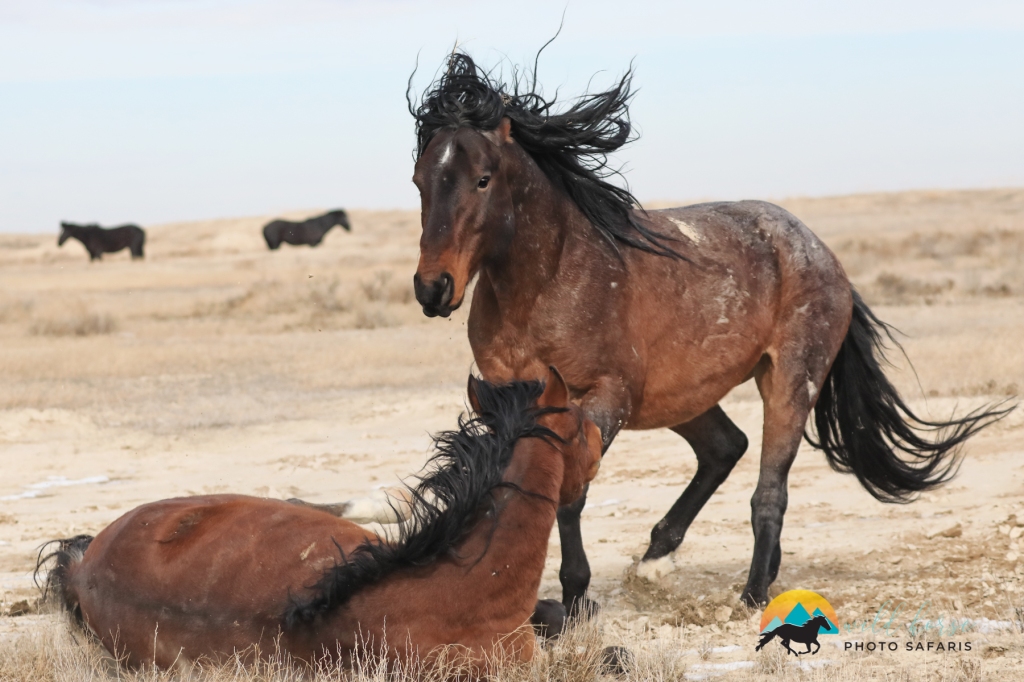
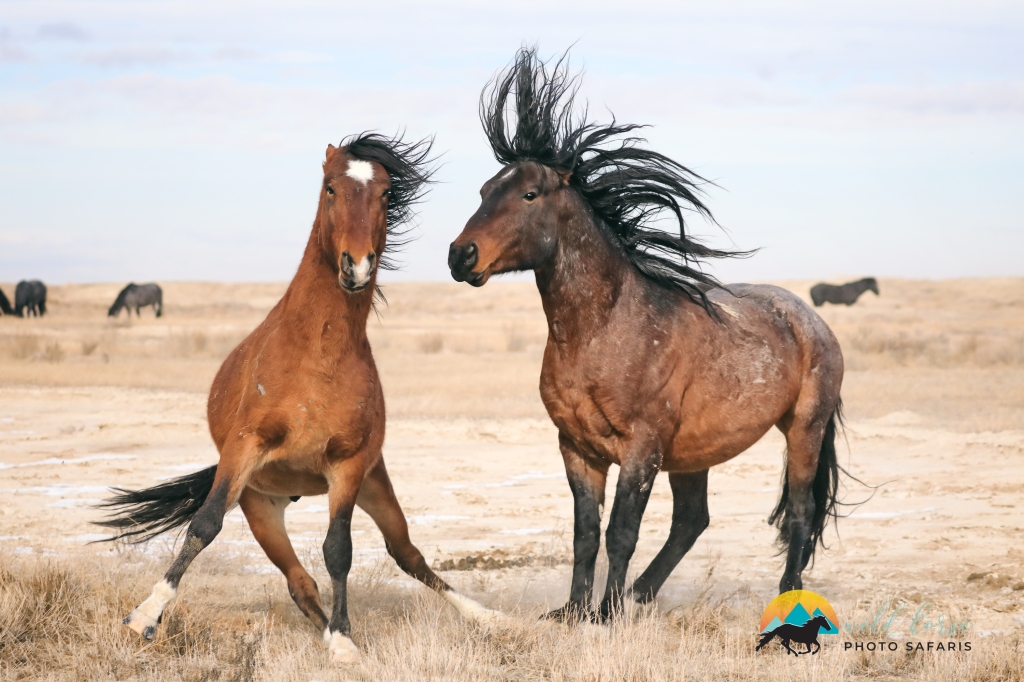
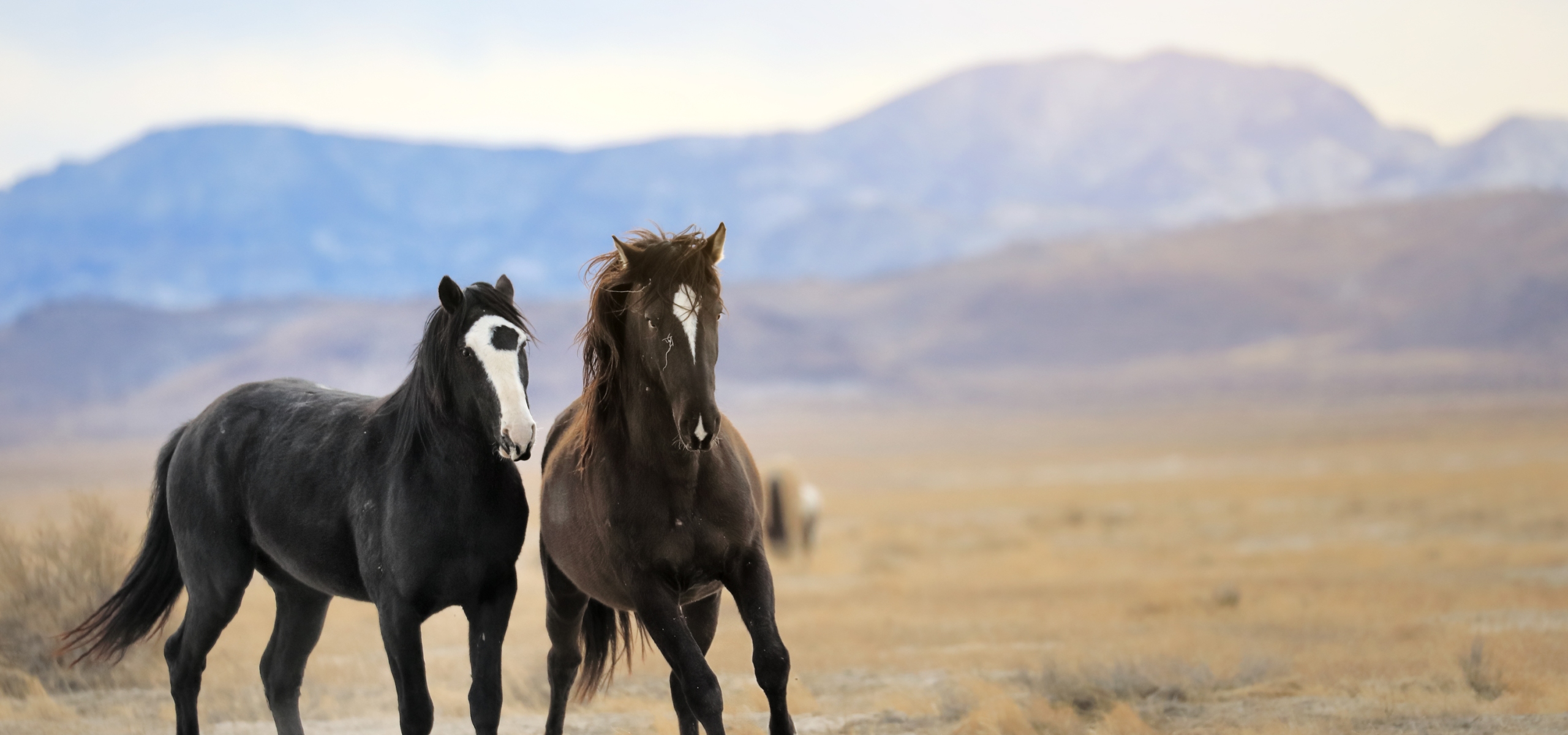
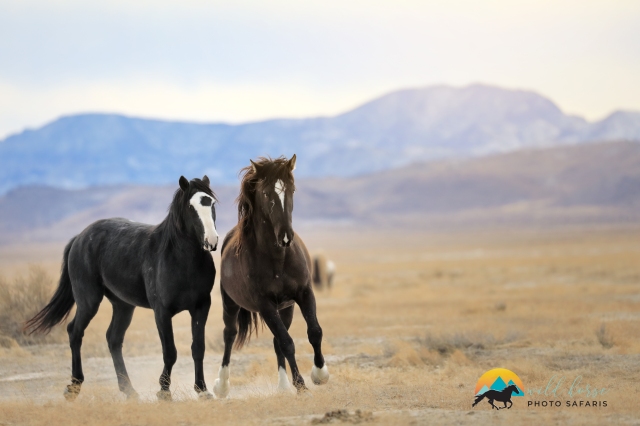
It was a rather brisk, but dry day late last December when I decided to venture out to the range to try to find the Onaqui wild horses. It had been a couple days since I was out exploring the range and I couldn’t help but wonder if they had changed locations and if the northern part of the herd had decided to come out of hiding.
With a hazy layer of clouds settling in over the surrounding mountains it provided for beautifully diffused light filtering in here as the mild breezes guided the haze to a place more of it’s liking. The pass was still filled with a couple inches of snow from a recent storm but the rest of the range was remarkably dry without much indication that moisture had ever passed through.
Dropping down into the north end of the range there was still unfortunately no sign of the northern herd (Davis Mountain Group) and it’s now been several weeks since I’ve spotted them more than once at sunset as they briefly emerged from beside Davis Mountain. All 150+/- of them. I pressed on to the south toward Simpson Springs and beyond where I’d been having success in locating the southern group of horses. Although smaller in number they’re still equally diverse in appearance and put on a good show for capturing some really stunning images.
I took out my binoculars and after a few minutes of scouting was able to locate the herd far off in the distance, deep south toward Fish Springs. I eventually pulled up even with them and squeezed off to the side of the road before starting the trek on foot to get out to where they were. The seemed very content in their current location just resting, grazing and getting hydration from tiny patches of snow that had been blown under the sage days earlier.
I had a good half mile walk ahead of me and by the time I finally reached them I was able to identify almost all of the members I’ve come to be so fond of. Except for one. There is one particular horse that I’ve become convinced actually might want to put me in the ground. I’m chuckling as I type this which is I think atleast a good sign.
The image above is called The Challenge not because of what you’ probably think. At first glace it appears the young black stallion with the baldface in the back (Eclipse #OQ174zS) is challenging the stallion in the front. But that’s not the case. These two young stallions were “horsing around” when the front stallion who I haven’t yet been able to identify but do have a couple choice nicknames for, decided to tear straight for me with Eclipse on his heels. They both raced past me about 15 feet away then continued to play wrestle at a more comfortable distance while their buddy Maverick (#OQ237gS – grey stallion pictured below) looked on.
Eclipse was born in 2017 and has always had a really pleasant, mild demeanor in addition to being a very handsome horse model. This new stallion is equally beautiful but much more foul tempered. For a couple weeks now he will leave his mare to tussle with the nearby bachelor bands made up of either Maverick and Eclipse or a stunning paint nicknamed Jasper (#OQ137bpS who I lovingly call Romeo).
Without fail after these friendly jousts he seems to not be able to help himself from coming after me to prove a point. I’m still trying to determine if that point is that he hates all humans or if I’m just extra special. I’m guessing soon enough he’ll make that clear.
It doesn’t matter how wide of a berth I give him he’ll still charge. Usually in this situation waving your arms and backing slowly away to give them additional space immediately relieves the tension. Not with this guy. That just pisses him off more and he comes after me again with renewed vigor. There have only been two tactics proven effective…. (1) if another stallion known as Sparrow (#OQ211zS who I affectionately call The Sheriff) decides to intervene on my behalf which he has done a couple times now – thanks buddy! or (2) if I start swearing like a sailor and take a couple steps towards him instead of backing away. Apparently even the horses know when certain words are being spewed the humans aren’t playing around.
For the record I much prefer option 1 over option 2.
I’m looking forward to the days the weather warms up a bit and the horses return to their normal (and more easily accessible) stomping grounds but in the meantime I just try to keep a keen eye out for my new nemesis and enjoy the company of all the other sweet tempered and patient wild horses out on the range.
To enjoy more images of the Onaqui Wild Horses click on this link.
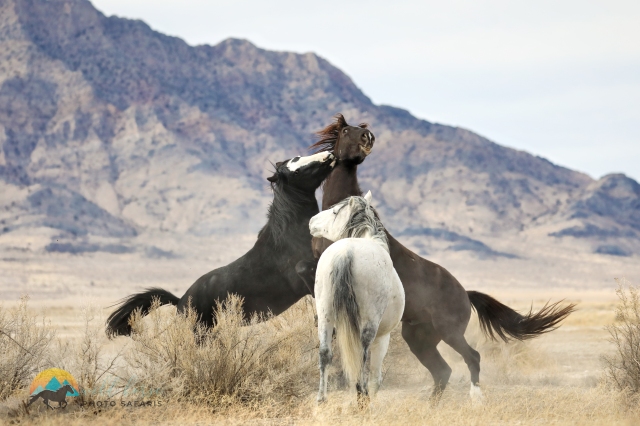
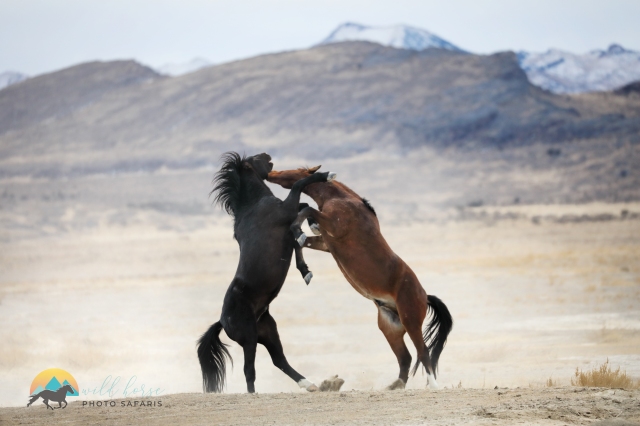
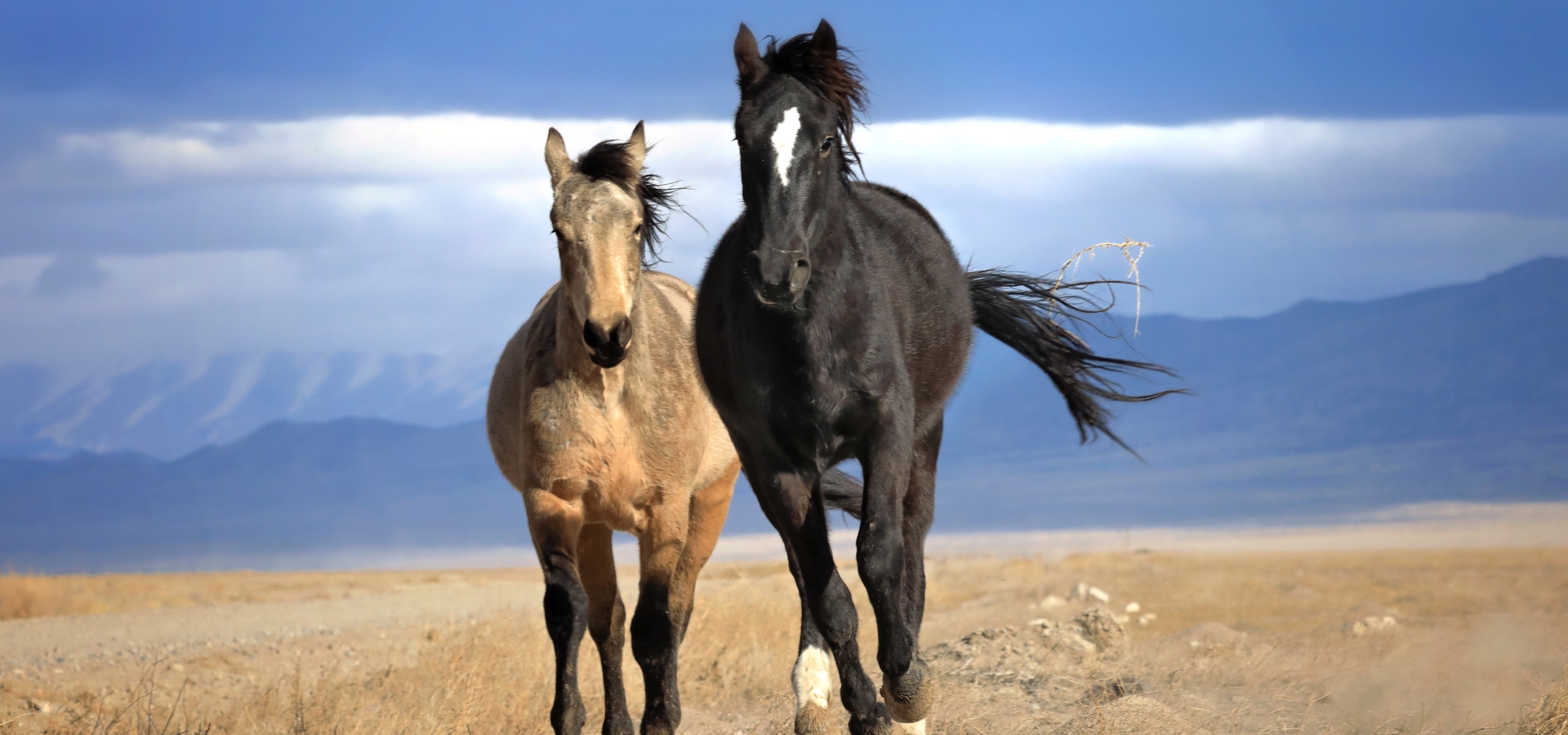
2020. The year of change for many.
If someone would have told me in February while I was struggling through heaps of mud and over volcanic boulders in the high elevation rainforests of Rwanda and Uganda searching for gorillas that only a month later my beloved island would close down with National Guard patrolling everywhere closing highways or that all major airlines except for one would have cancelled their contracts to fly to/from the neighboring Hawaiian islands it would have seemed like a fictional horror movie. But then it happened.
Businesses closed. Many forever. Tourists were all but banned from entry for 9 months. Cost of transportation of goods to neighbor islands via barge went up 46% and planes still weren’t flying. Even between islands.
The first couple months I made a point to try to do something positive each day. Mainly exercising on a favorite forest hike or going for a paddle. Fortunately exercise was always something deemed as “essential” and thus allowed, atleast on Maui. I took my cameras along and snapped images on the now deserted beaches and underneath the pristine offshore waters where boats no longer frequented. I started writing a blog to chronical the daily changes in rules and regs and how it was impacting the local people and economy. It also served as a way to post lots of wonderful images around the island to bring a little aloha back to friends and clients lives who were missing the islands dearly.
I had a trip scheduled the first week of August to a gorgeous but remote costal area of Alaska to camp and photograph brown bears which I’ve done many times. It was looking favorable that plans would prevail despite numerous airline cancellations. But then we got word 3 weeks prior to takeoff that the campground would not be opening for the season. The trip was now an impossibility.
Considering the only airline flying in and out of Maui during the pandemic was Delta my options for re-routing were limited to say the least and changing dates wasn’t in the cards. They had four flights a week to and from OGG so you chose your itinerary with care.
On a whim I remembered hearing about the Onaqui Wild Horses not far from Salt Lake City. As fate would have it the Salt Lake Airport was probably one of the only airports in the country I felt confident I could fly in and out of through LAX without fear of getting stuck without an option to get home.
One of my Alaska travel/photographer buddies drove down from Montana to meet me at the Salt Lake City airport and we headed out to the West Desert to photograph wild mustangs instead of bears for 10 days. We were fortunate enough to get a room at the Dugway Army Base hotel that borders the range (that panning out is still a minor miracle itself) and so for 10 days dawn ’til dusk were spent in the scorching heat up to 108 degrees with billowing dust and sometimes gale force wind blasts. Thousands of images were captured and an idea was born.
I began to wonder if all this talk of wildlife guiding over the past several years might be something I should actually pursue. It had come up many times to guide photo tours in various regions of the US and beyond but for one reason or another it just wasn’t feasible. Until now. My home as I know it was slowly being decimated by more and more closures. I wasn’t getting but a smidge of my regular work and starting over for a third time on the same island just wasn’t something I was willing to do.
Fast forward 6 weeks and a plan was hatched. I boarded the same Delta plane and back to Utah I came the last week of September. I had put my house on Maui up for sale on a hunch and gave myself 10 days to decide if I could make the desert my new home base. Somehow in those 10 days I managed to buy a new home, meet a wonderful realtor turned friend, open bank accounts, get PO Boxes and fall even more in love with the wild horses than I imagined. I was absolutely terrified but the ball had been set in motion.
Within 4 days of returning to Maui I was under contract to sell my place and boxes were being packed. I spent all the time I could soaking up island hikes and ocean vibes while working on the daunting process of moving my existing photography business (A Place In Time Photography) and creating a brand new business to provide private guided photography tours for guests to experience the Onaqui Wild Mustangs for themselves.
Just like that Wild Horse Photo Safaris was born.
I’ve been so blessed to have a smooth transition into my new town and my new home and have already logged more hours on the range than anyone would ever think possible. I’ve worked tirelessly to launch a new brand of Fine Art Creations from my images captured in the field. It is my mission to both help raise awareness into the plight of the wild horses and also to capture their uniqueness and strong spirits through the images and artwork I create. The only way I can truly accomplish this is by spending extremely long hours getting to know individual members of the herd and gaining their trust so that I can move with and around them with ease without causing any disruption to photograph their most true emotions.
So I welcome you and thank you for reading this far! I am so excited to be able to share new images and stories here depicting these gorgeous animals and their lives playing out wild and free on the Onaqui Wild Horse HMA (Herd Management Area) in Western Utah.
All direct inquiries are welcome regarding the horses, tours, artwork or collaborations.
Mahalo Nui Loa,
Jen
